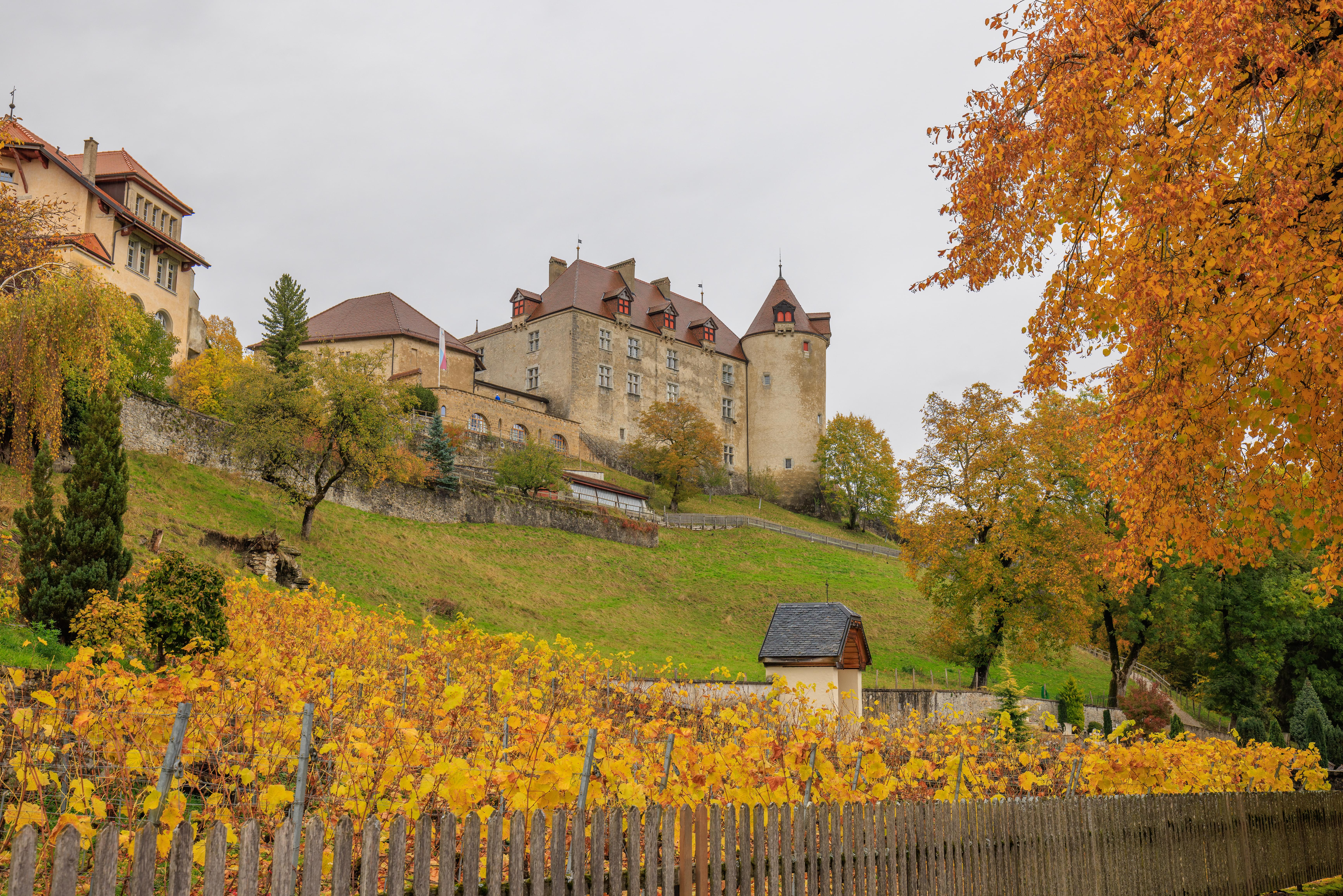We headed out in the morning to Gruyères, home of Switzerland’s Gruyère cheese. As the forecast was calling for rain in the afternoon, we first headed to the castle atop a small hill near the small town. After exploring the castle and having lunch in a nearby restaurant, we returned to town to check out the Gruyère cheese museum and shop.
Grand Hotel Suisse Majestic

Despite the unfavorable forecast for today, the sky above the Grand Hotel Suisse Majestic was mostly clear at sunrise with some scattered clouds and a bit of color in the sky. We could see fresh snow on the mountains across the lake. We headed downstairs for breakfast
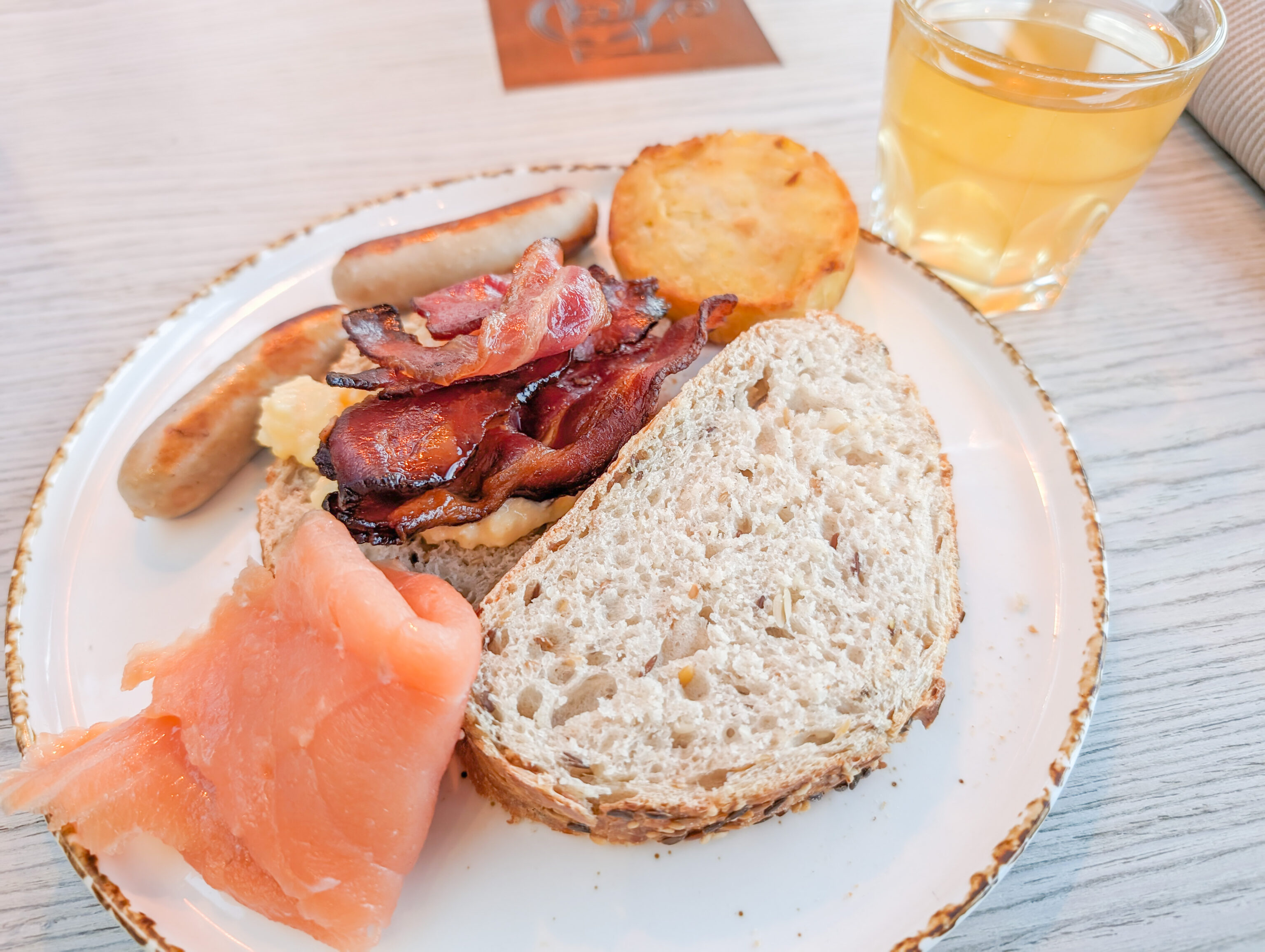
Breakfast was largely the same as last year. There was a small selection of hot food along with a variety of excellent bread, yogurt, and drinks. There was also fruit and various cold meats.
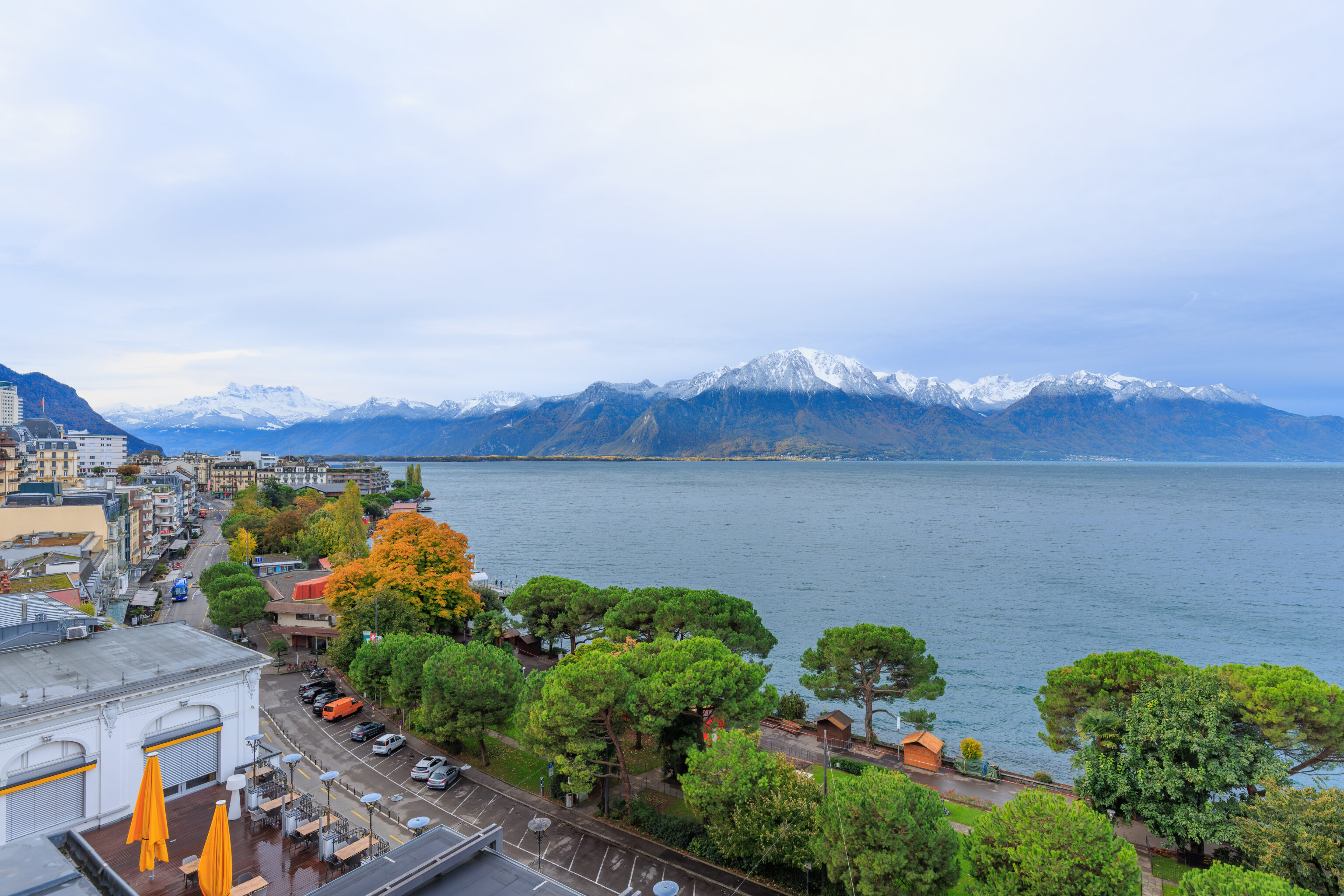
The clouds rolled in while we were eating. By the time we returned to our room, the sky was overcast. We headed across the street to the Montreux train station to catch the GoldenPass Panoramic train to Montbovon where we would switch to a different train to Gruyères.
The route initially climbs steeply above Montreux, winding back and forth a few times on the side of the mountain behind town.
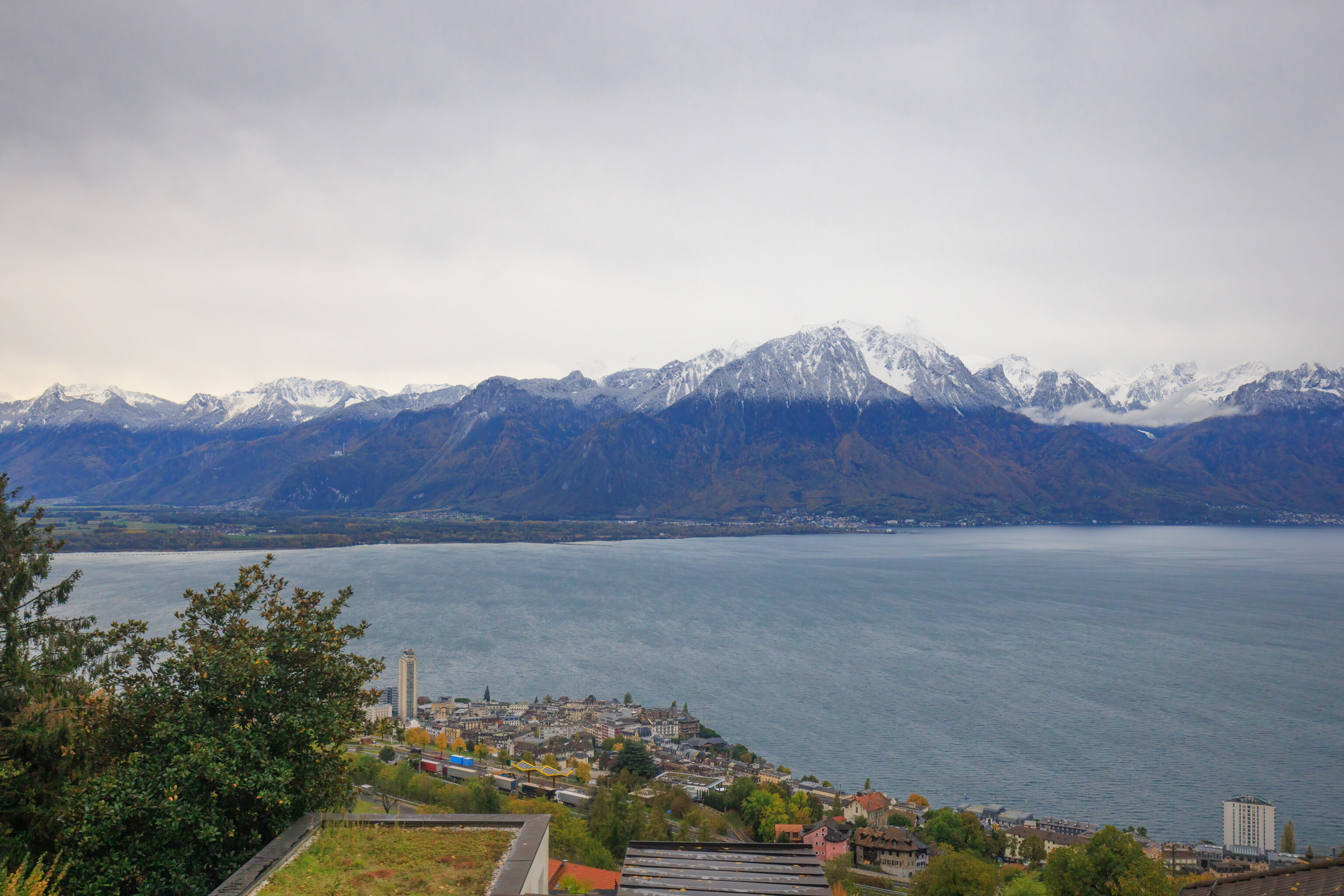
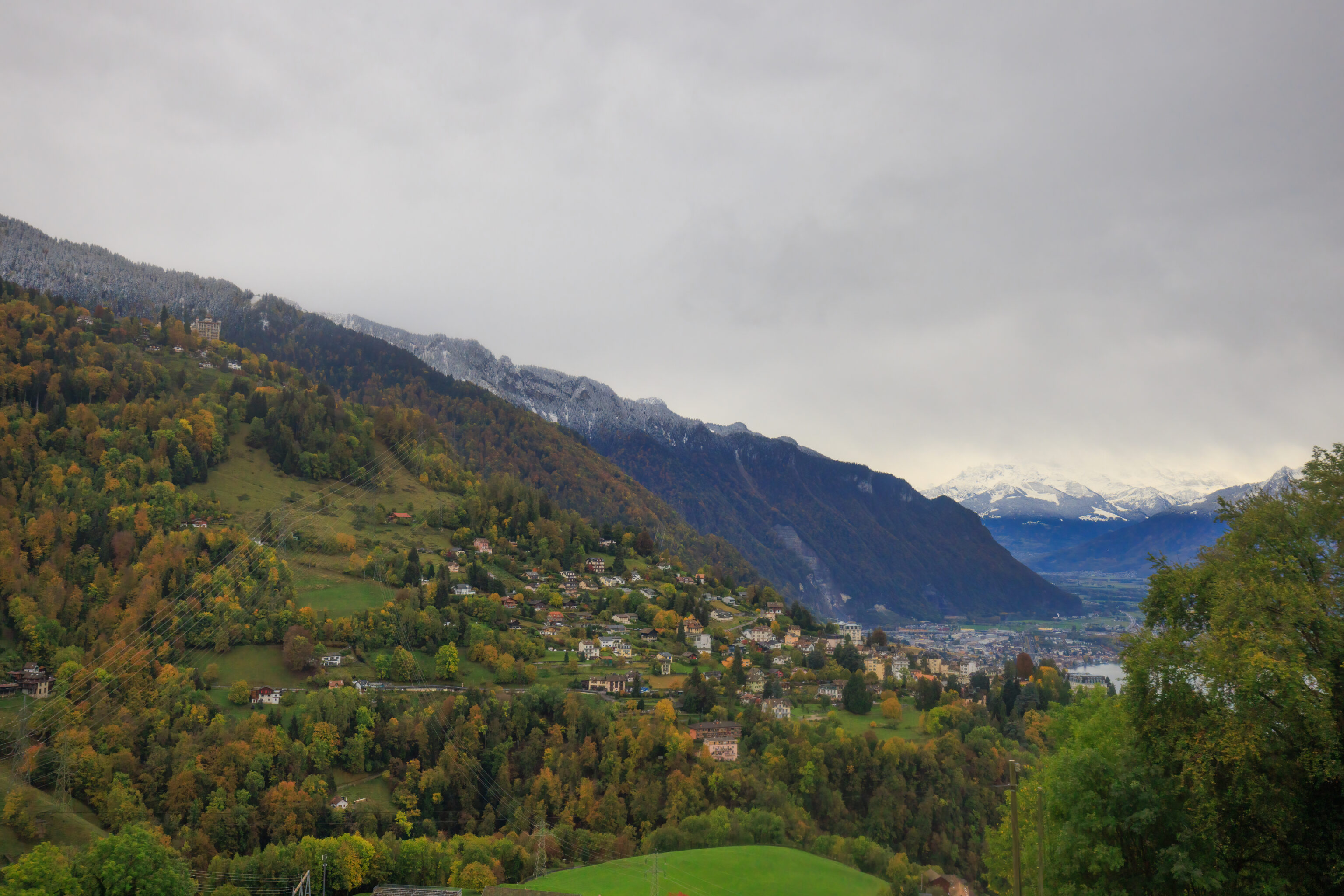
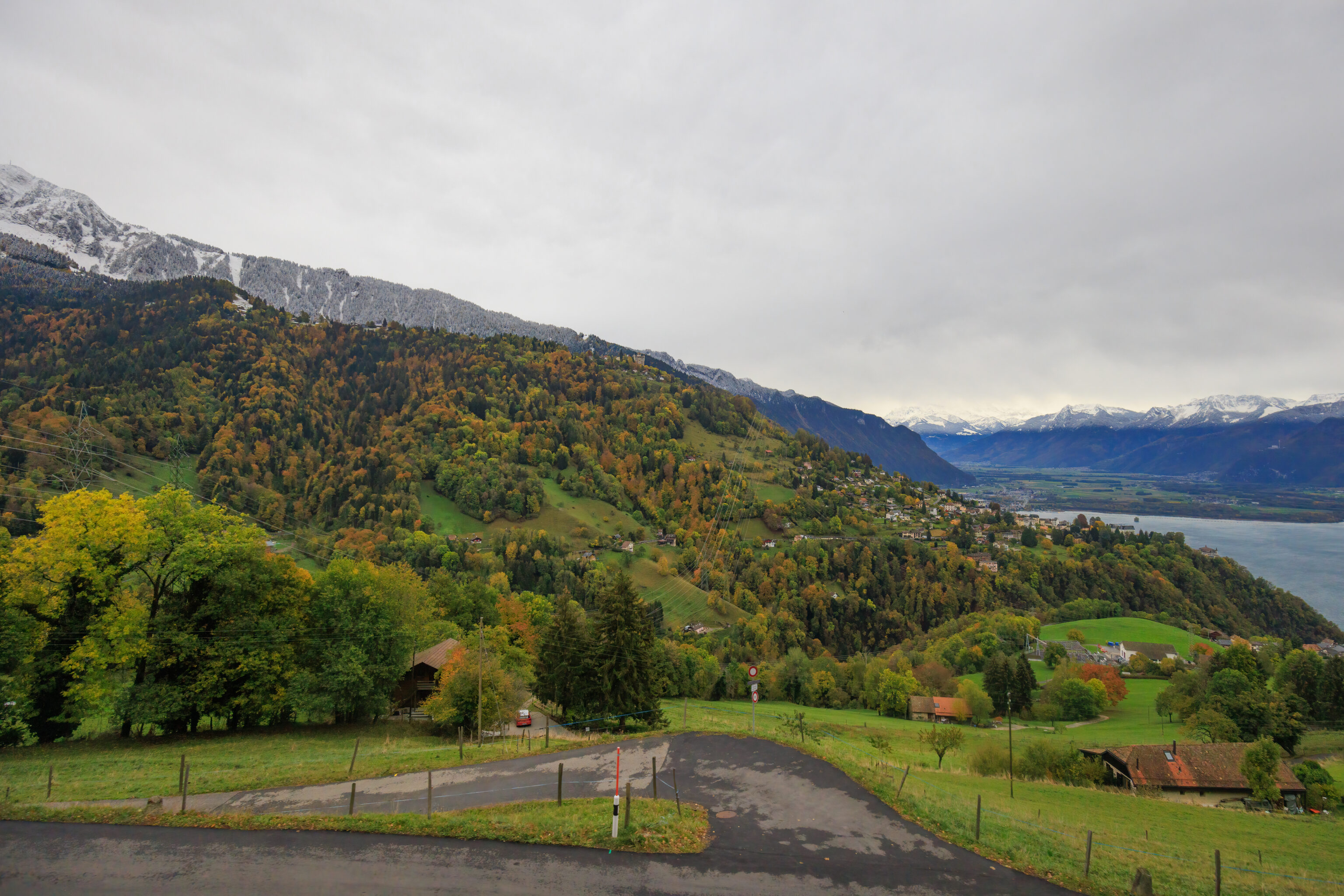
The view was beautiful, though the dark skies weren’t a great sign. The trees were beginning to change color, though the it wasn’t quite at peak yet.
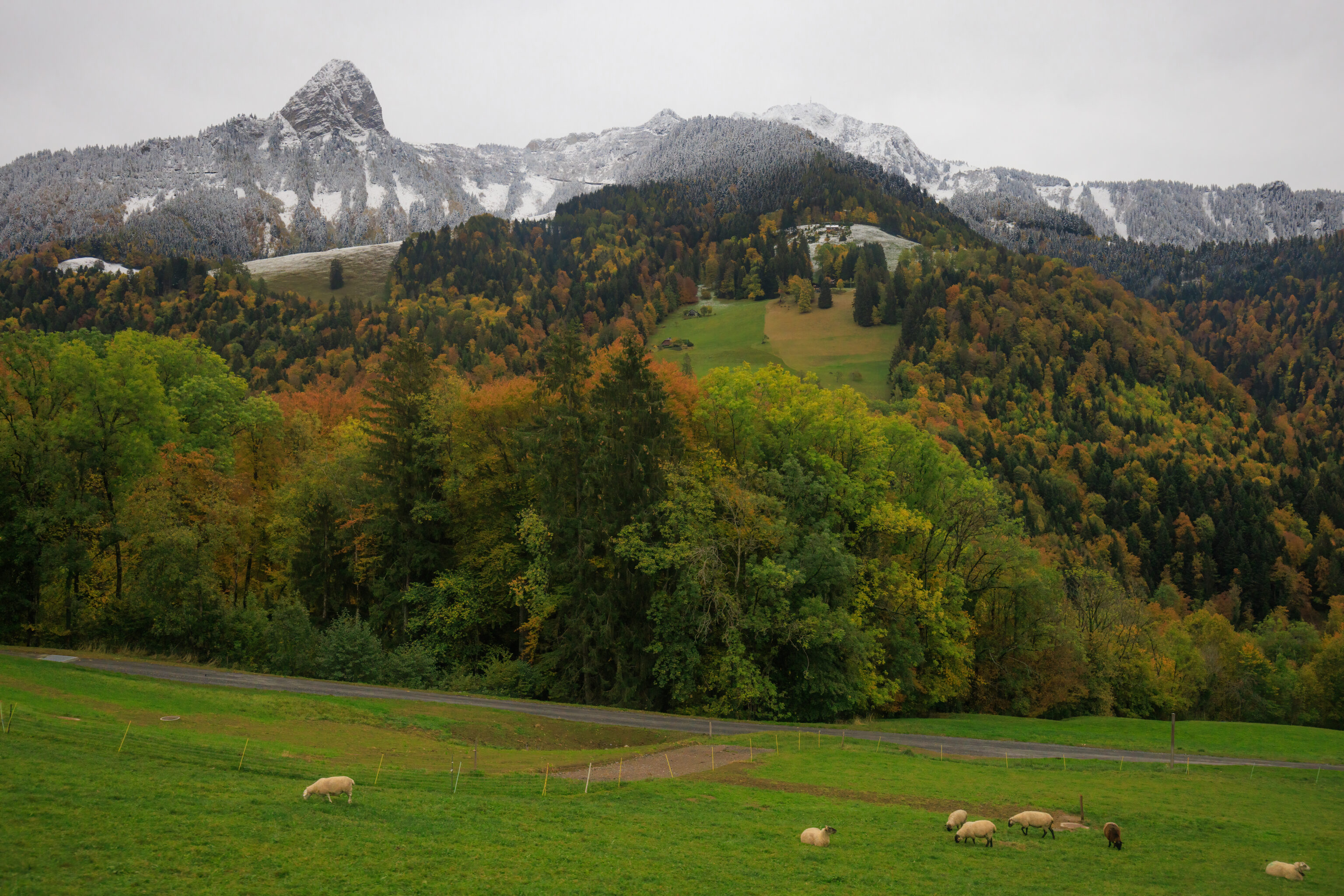
The route soon headed inland away from Lake Geneva. We could see fresh snow in the mountains at a slightly higher elevation. Sheep grazed on the farmland in front of us.
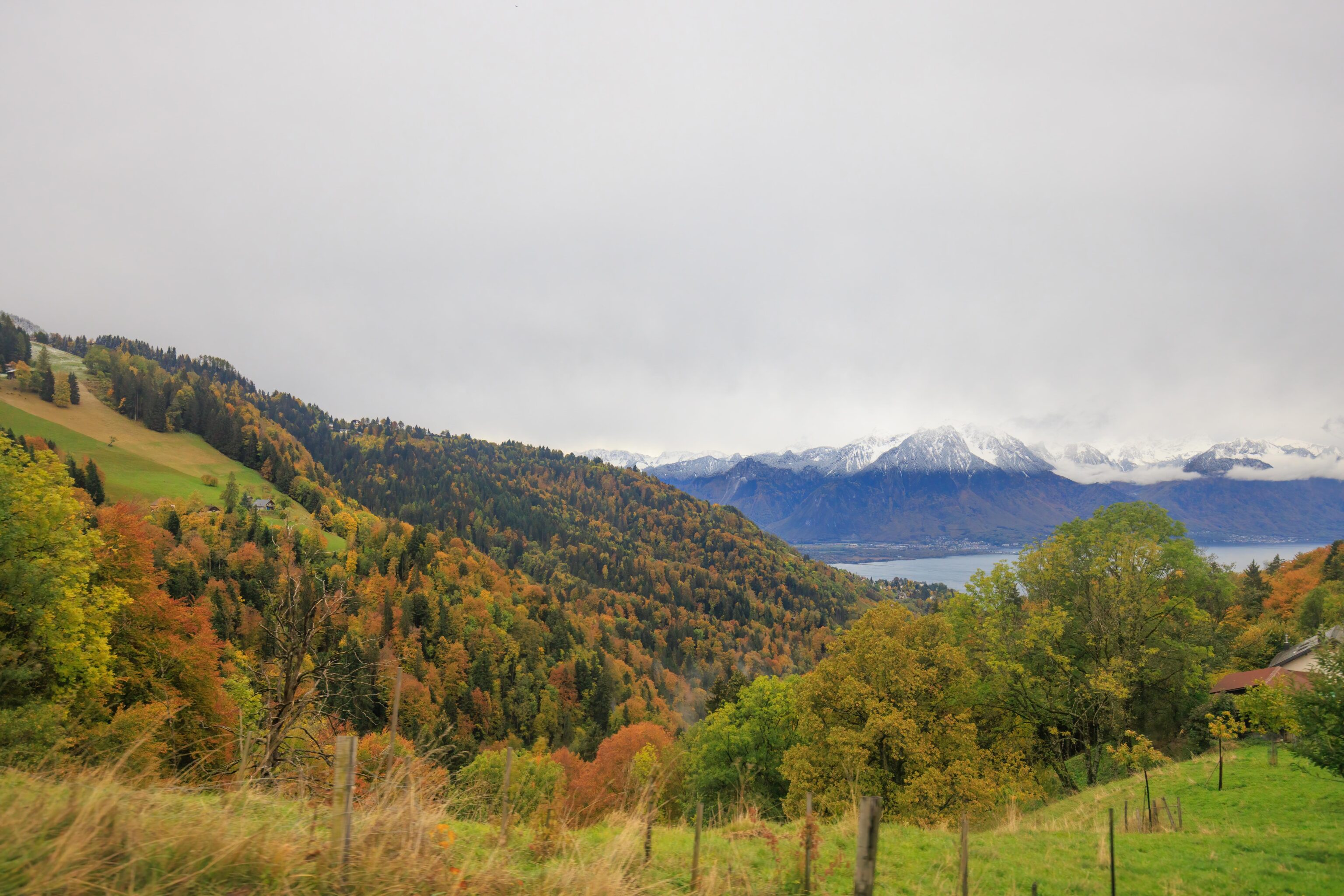
We briefly had one last glimpse of the lake.
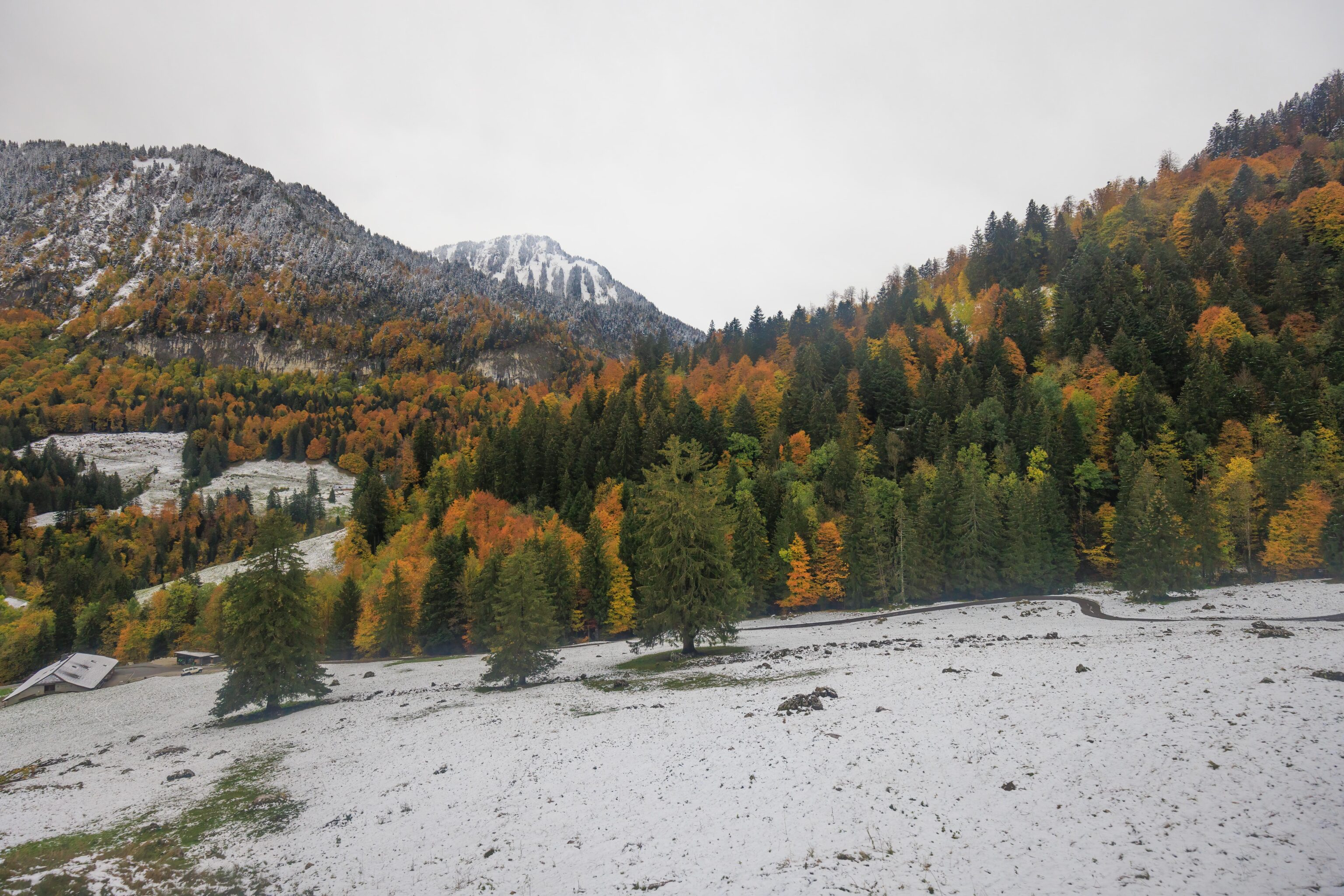
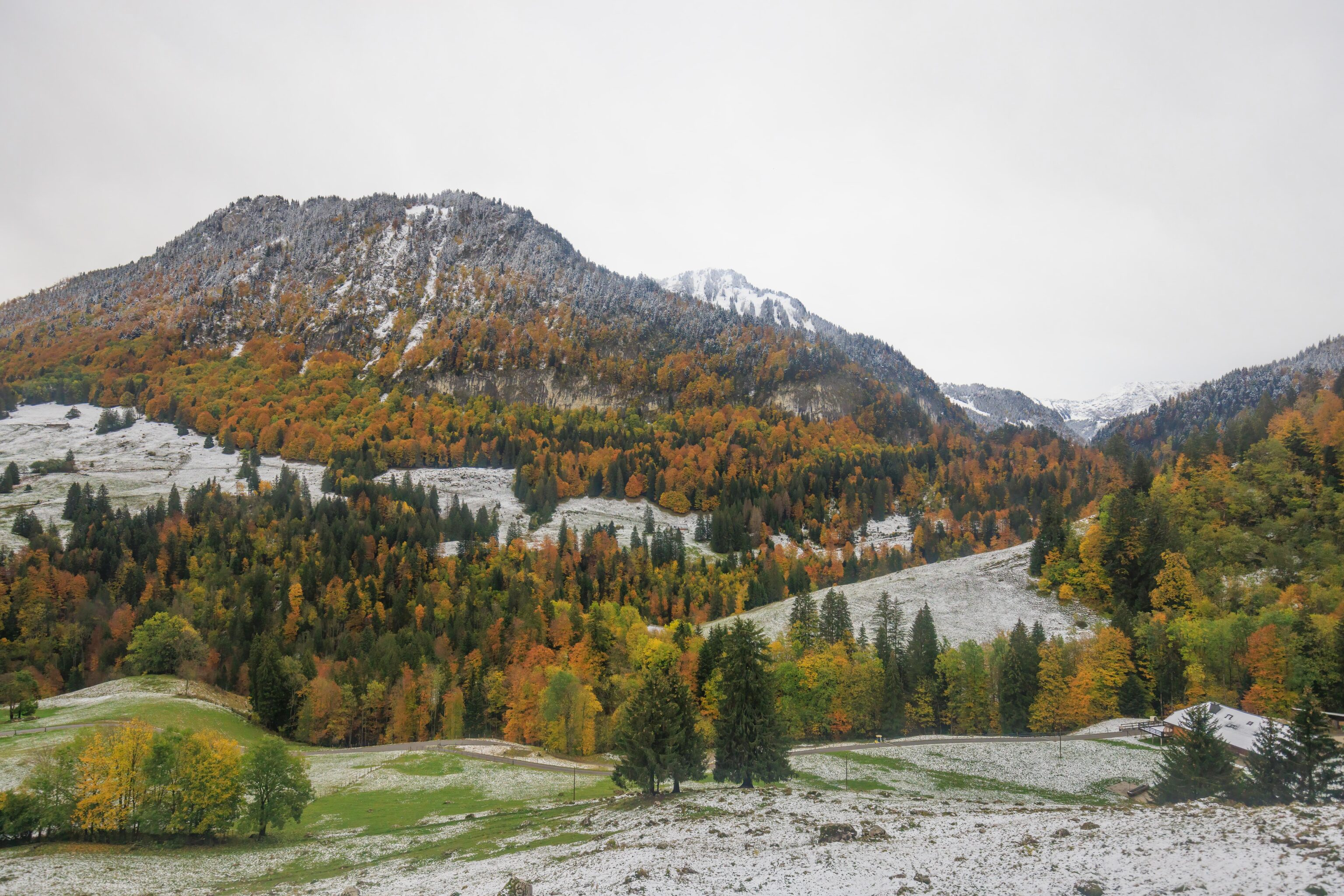
Soon, we were at the snowline. There was only a bit of snow at this elevation covering the grass. We could see quite a bit of beautiful fall colors though! It would have been better if the sky wasn’t overcast!
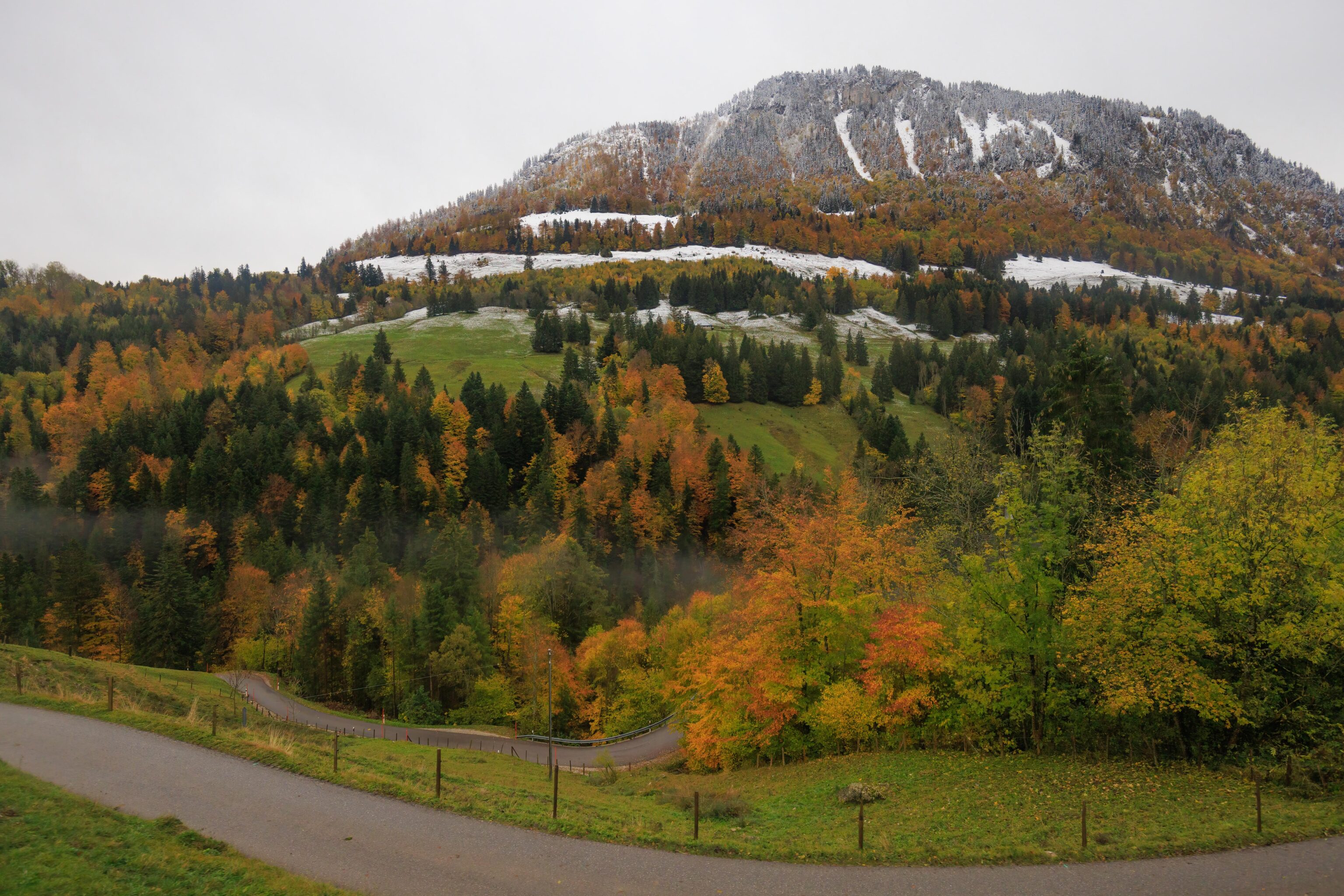
We started descending a bit, leaving the snow zone behind us. Sometimes, we could see a bit of fog.
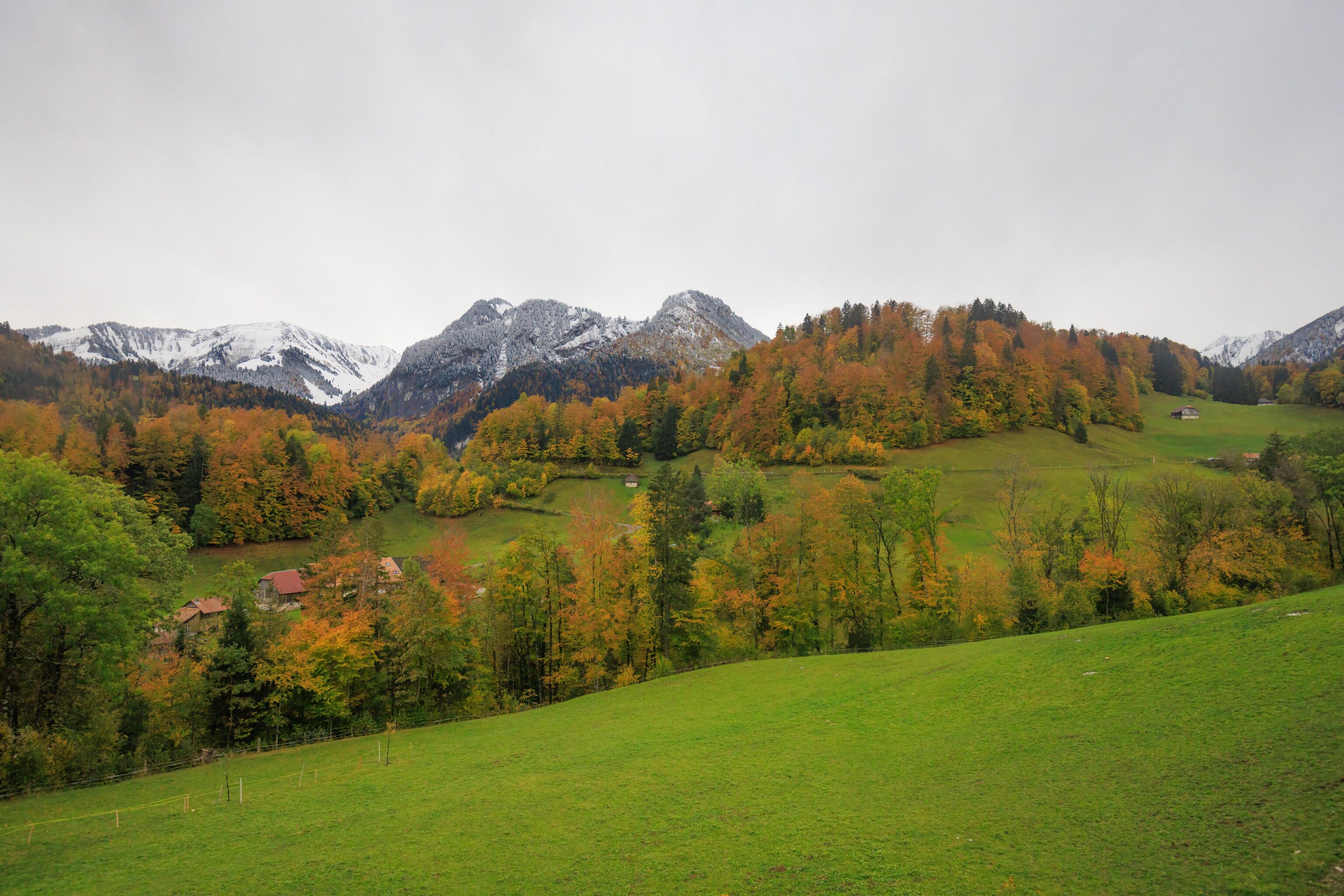
The scene near Montbovon. After arriving at the station, we quickly transferred to the train that was waiting on the opposite side of the platform.
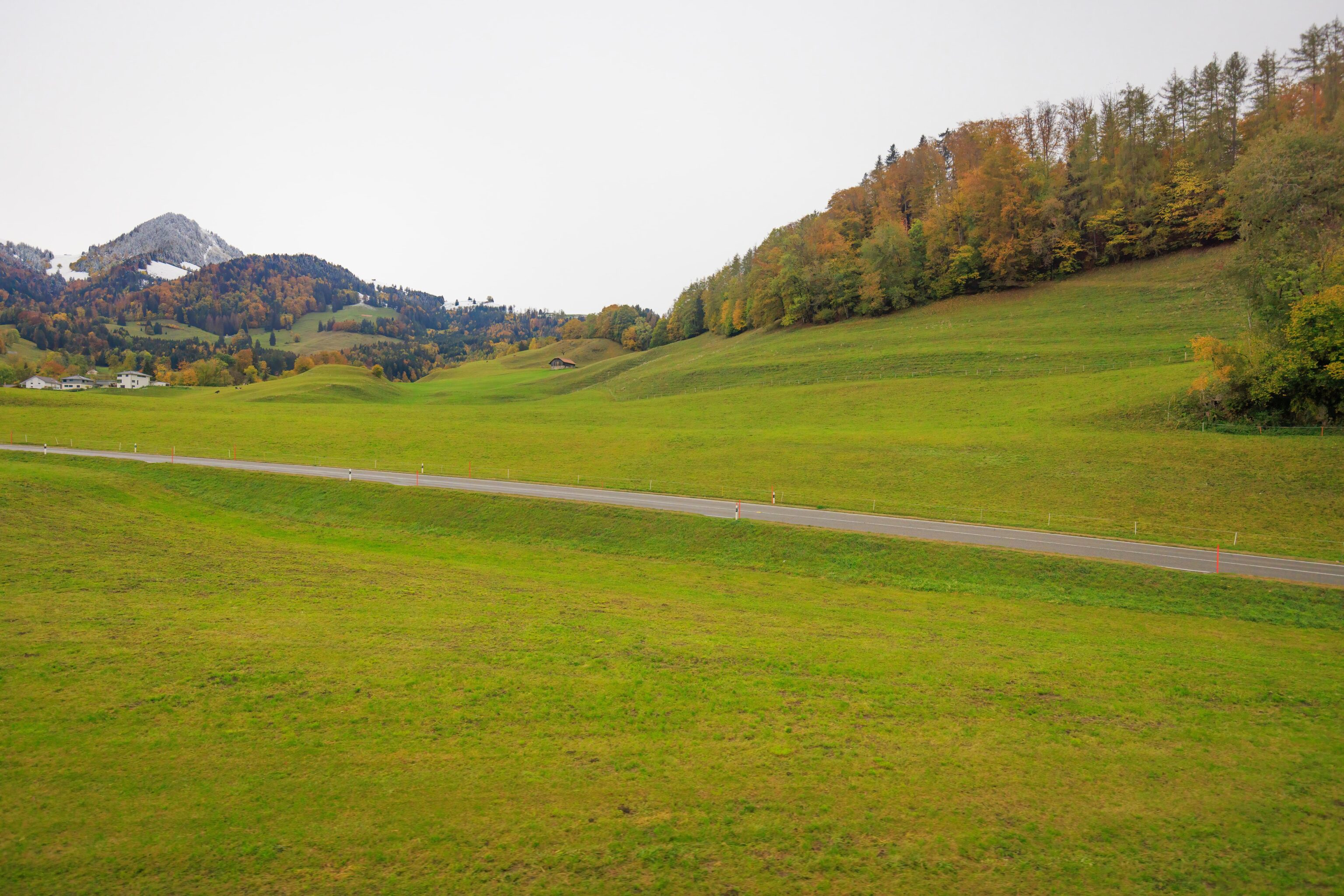
The scenery was pretty similar as we continued on to Gruyères.
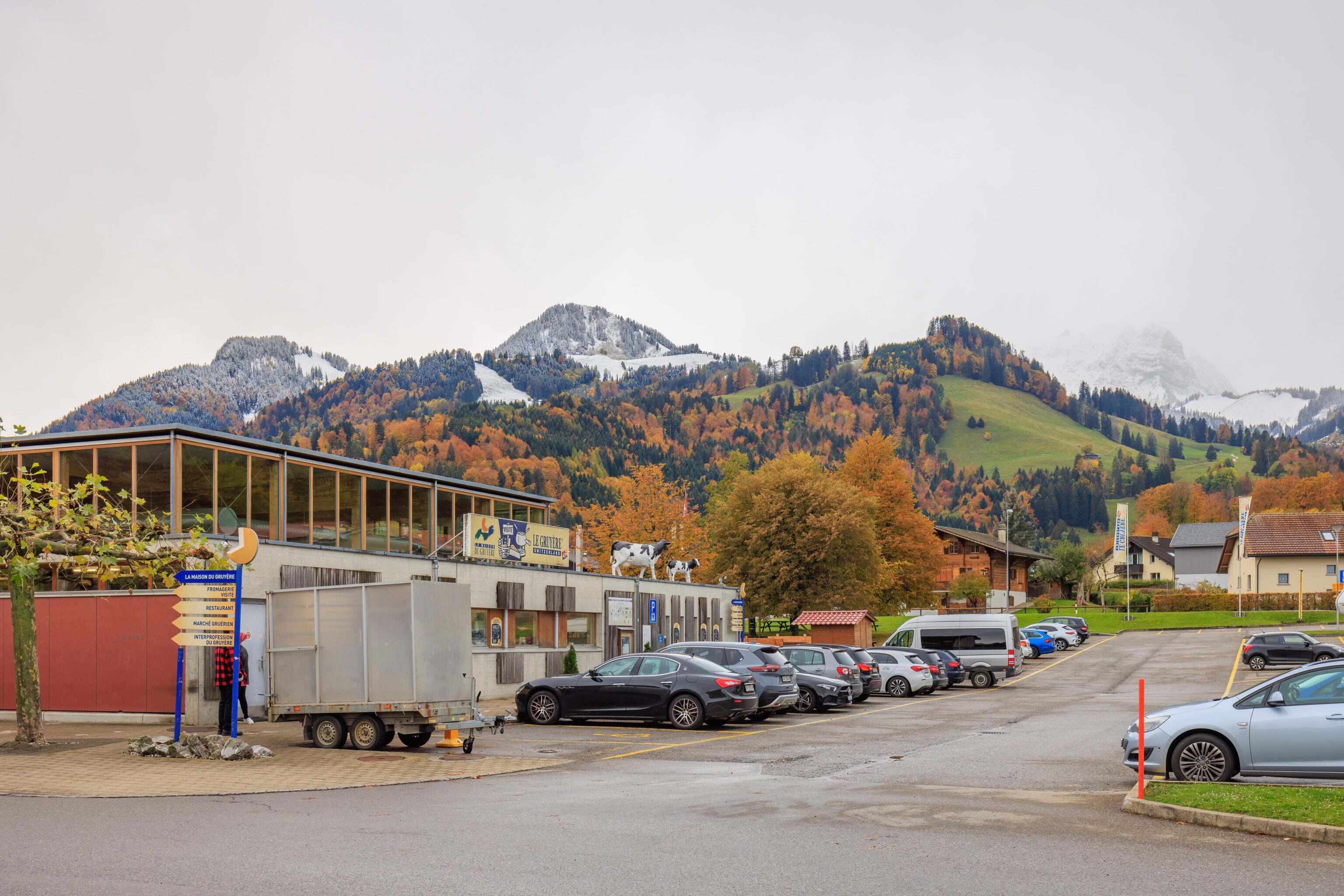
After arriving at the station, we saw La Maison du Gruyère across the street. The weather forecast was calling for rain in the afternoon so we decided to visit the Château de Gruyères first. We checked the sign by the cheese building first to verify that the demonstration kitchen and shop would still be open by the time we returned.
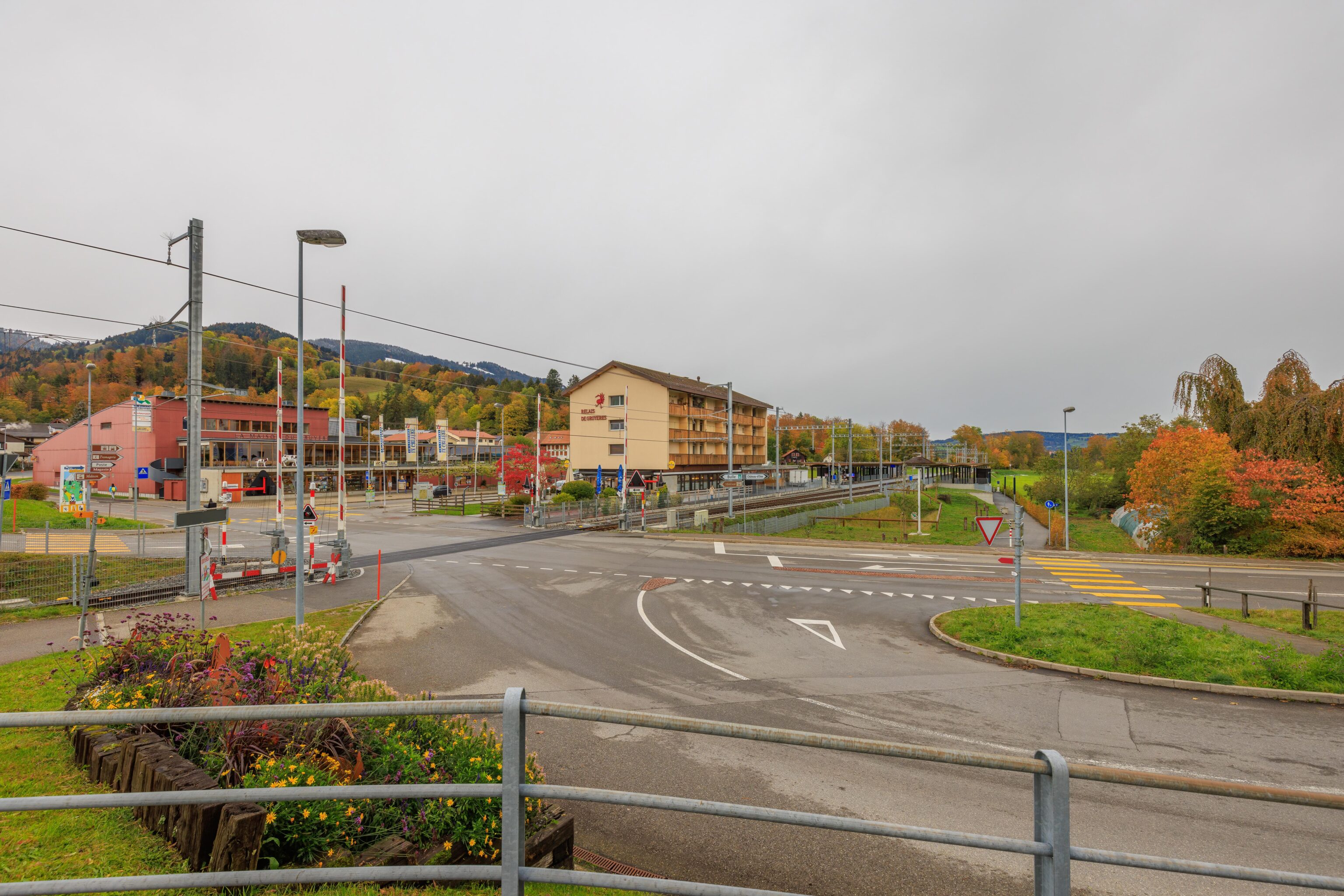
We crossed the railroad tracks and the road to head up to the castle. There were two ways to go, one on a sidewalk by the road and another directly up the hill.
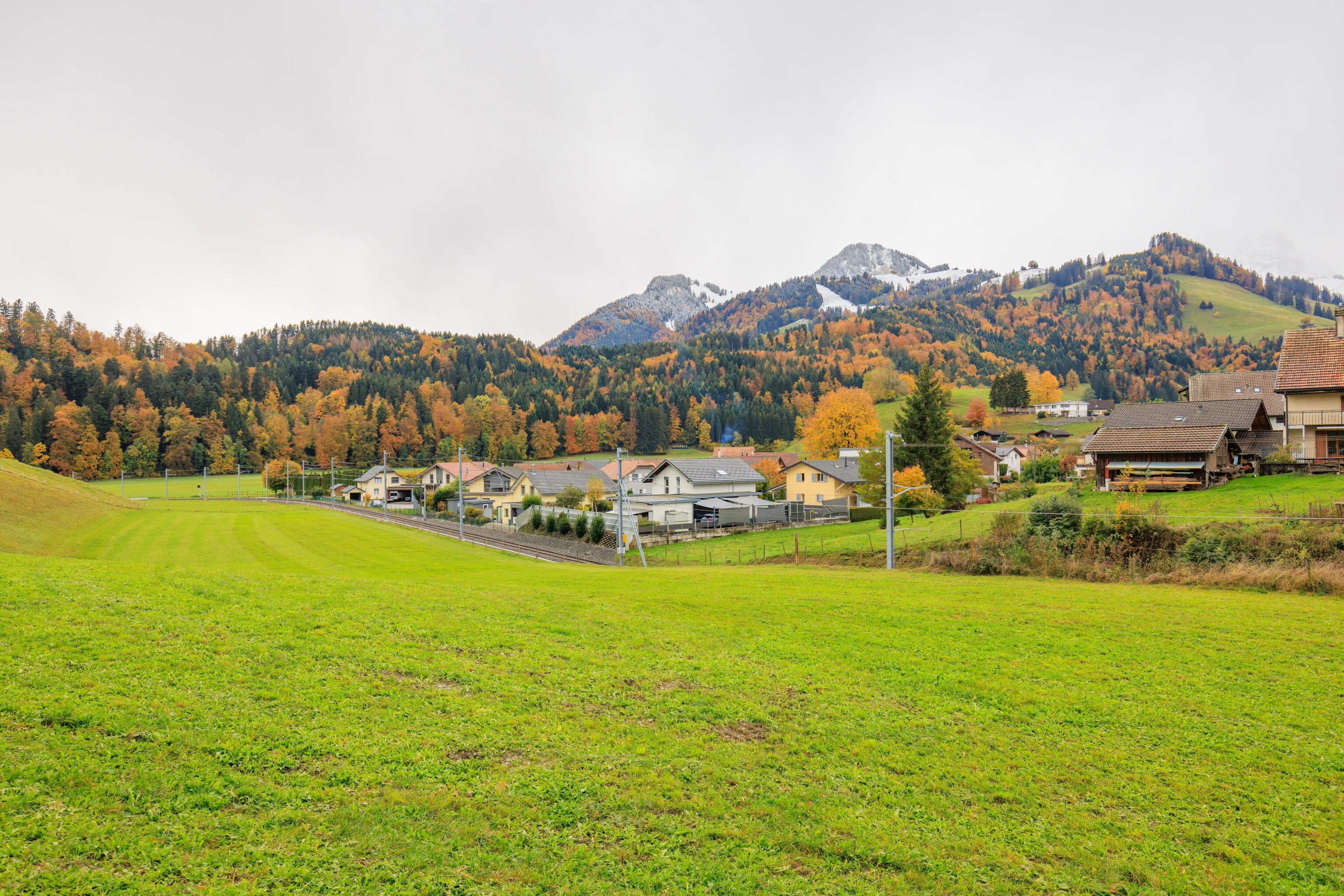
We decided to go up the hill. Looking to our right, we could see the railroad as well as some nice fall colors just outside of town.
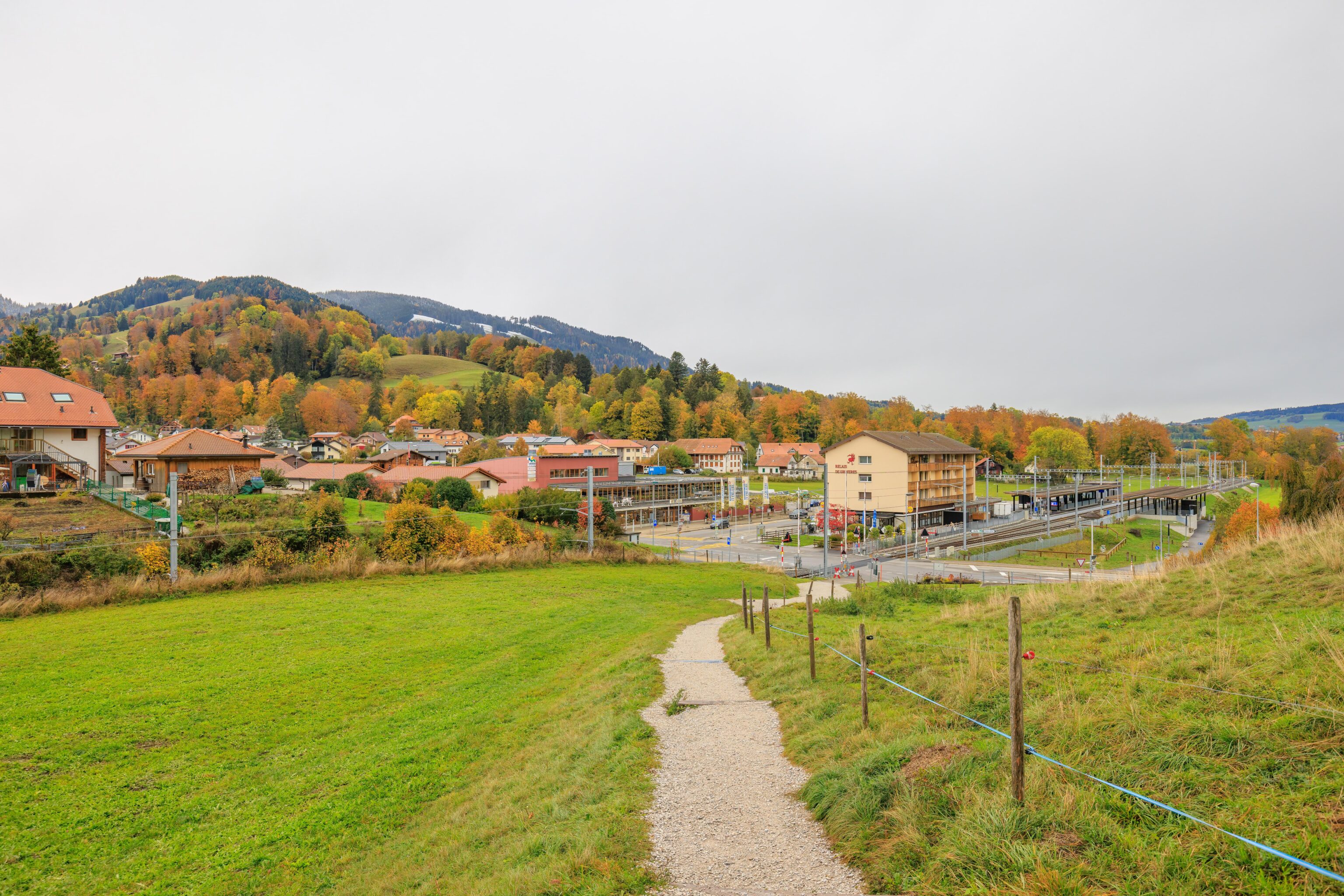
Looking back towards town. The path was fairly steep but in very good condition, as is often the case in Switzerland.
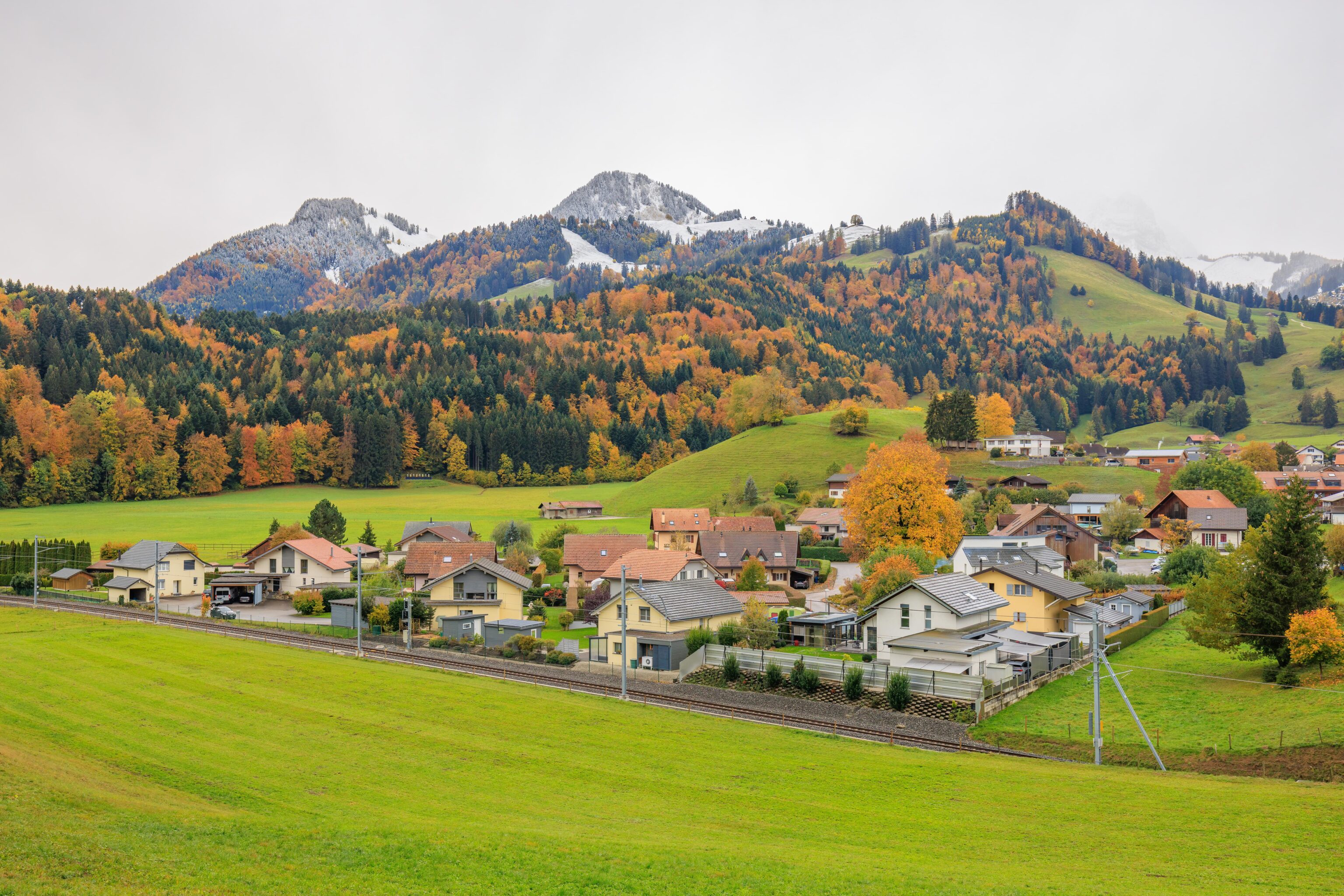
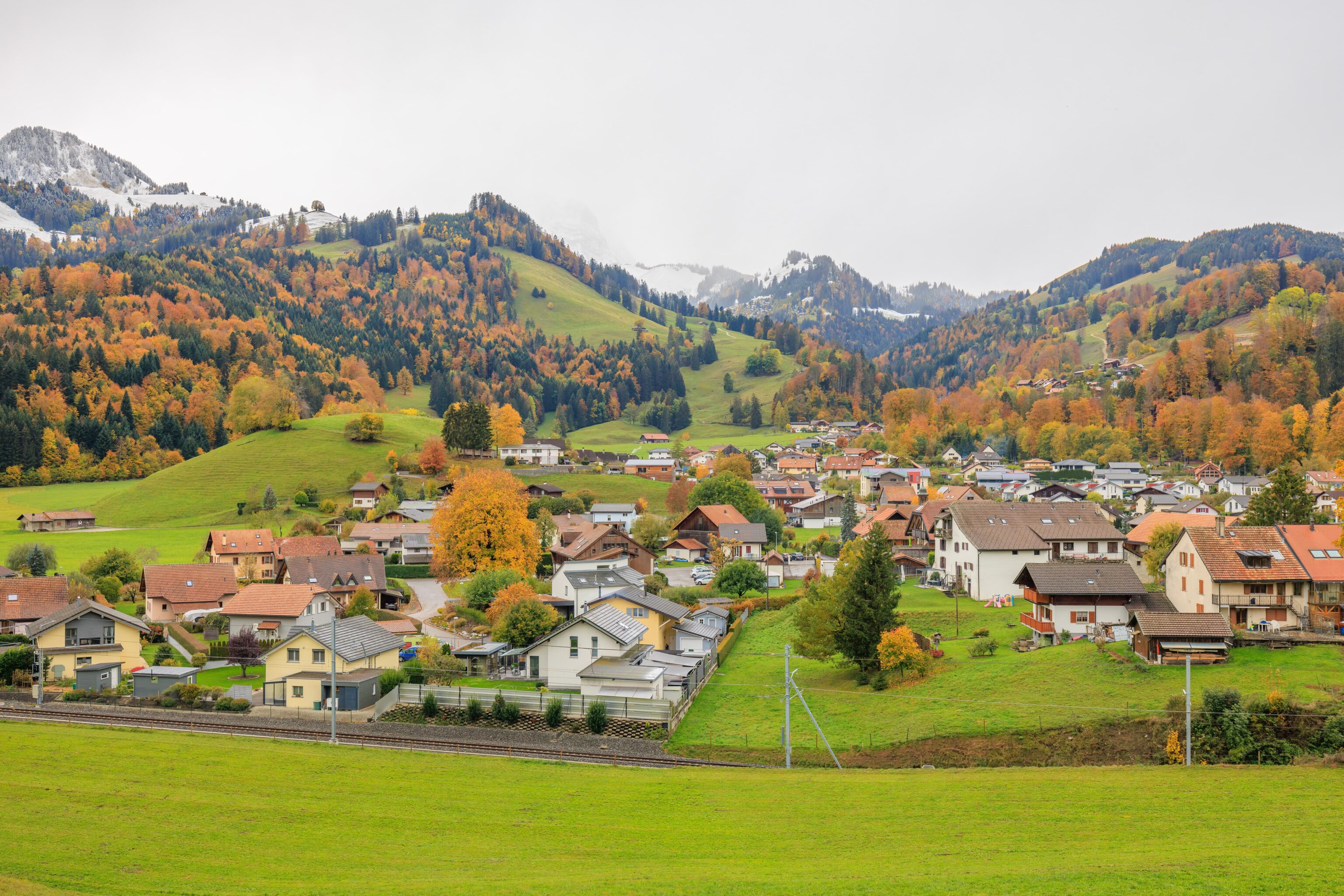
We continued ascending.
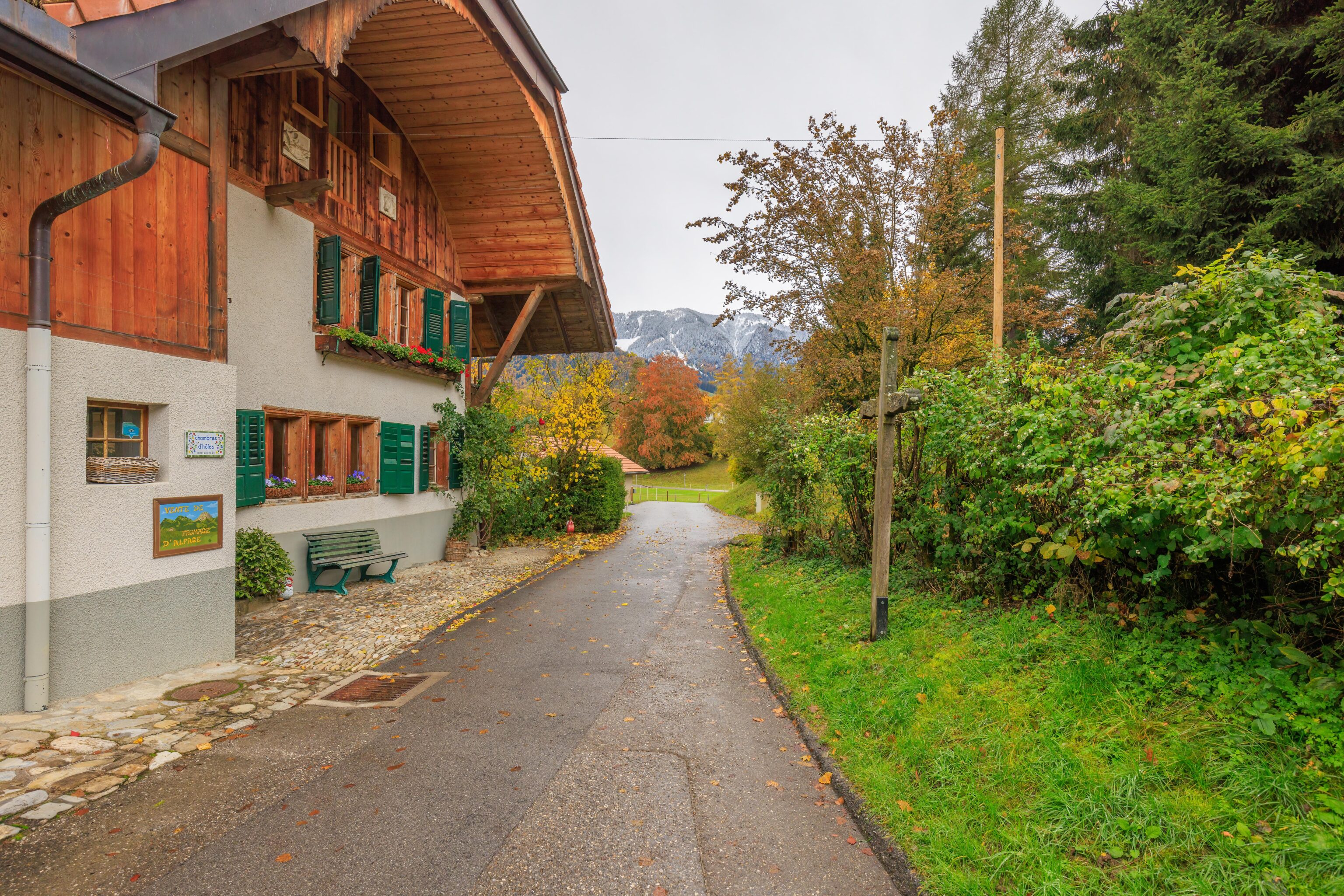
We quickly reached the top of the hill. We passed by a few buildings as we continued onward.
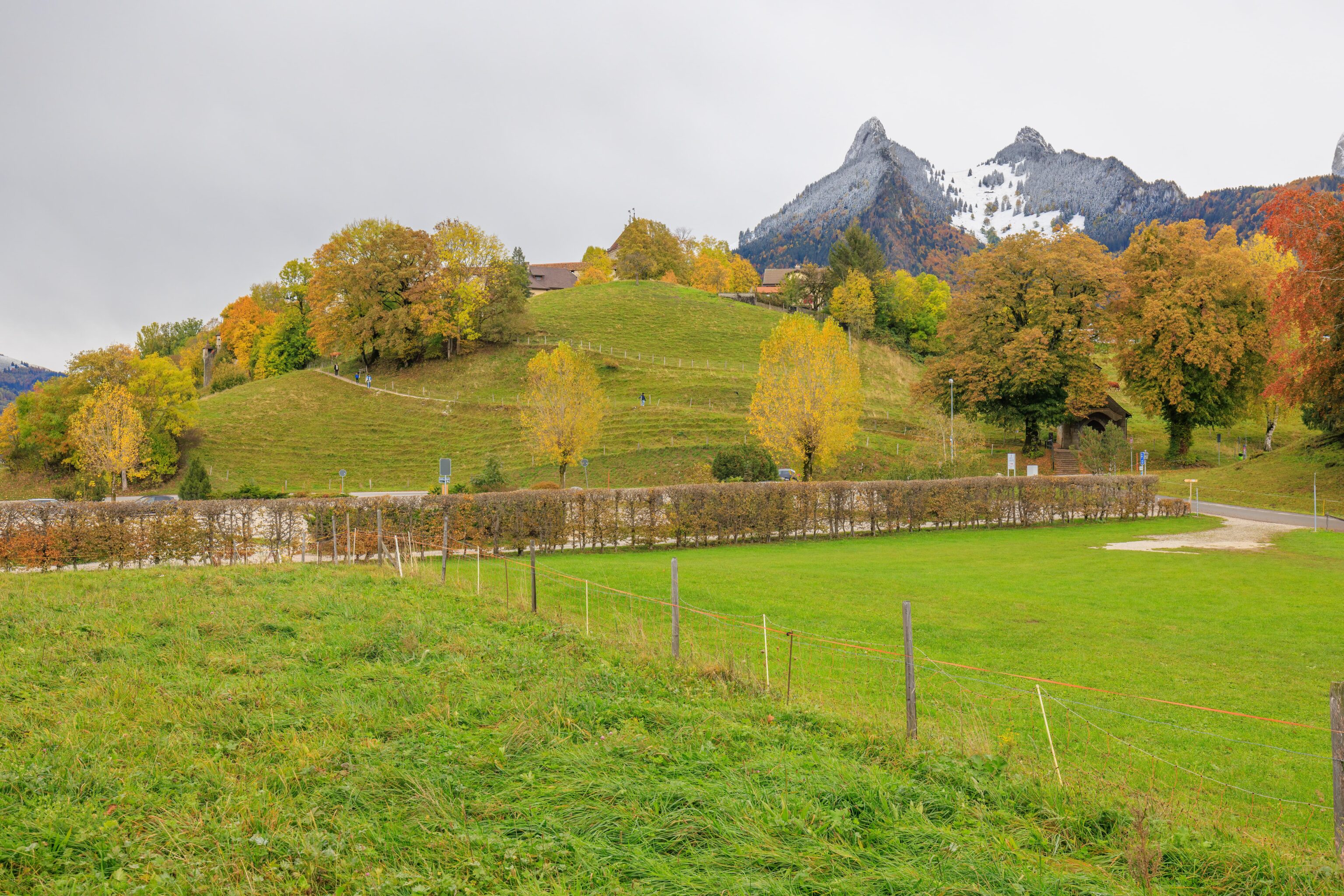
We soon saw our destination atop another hill in front of us!
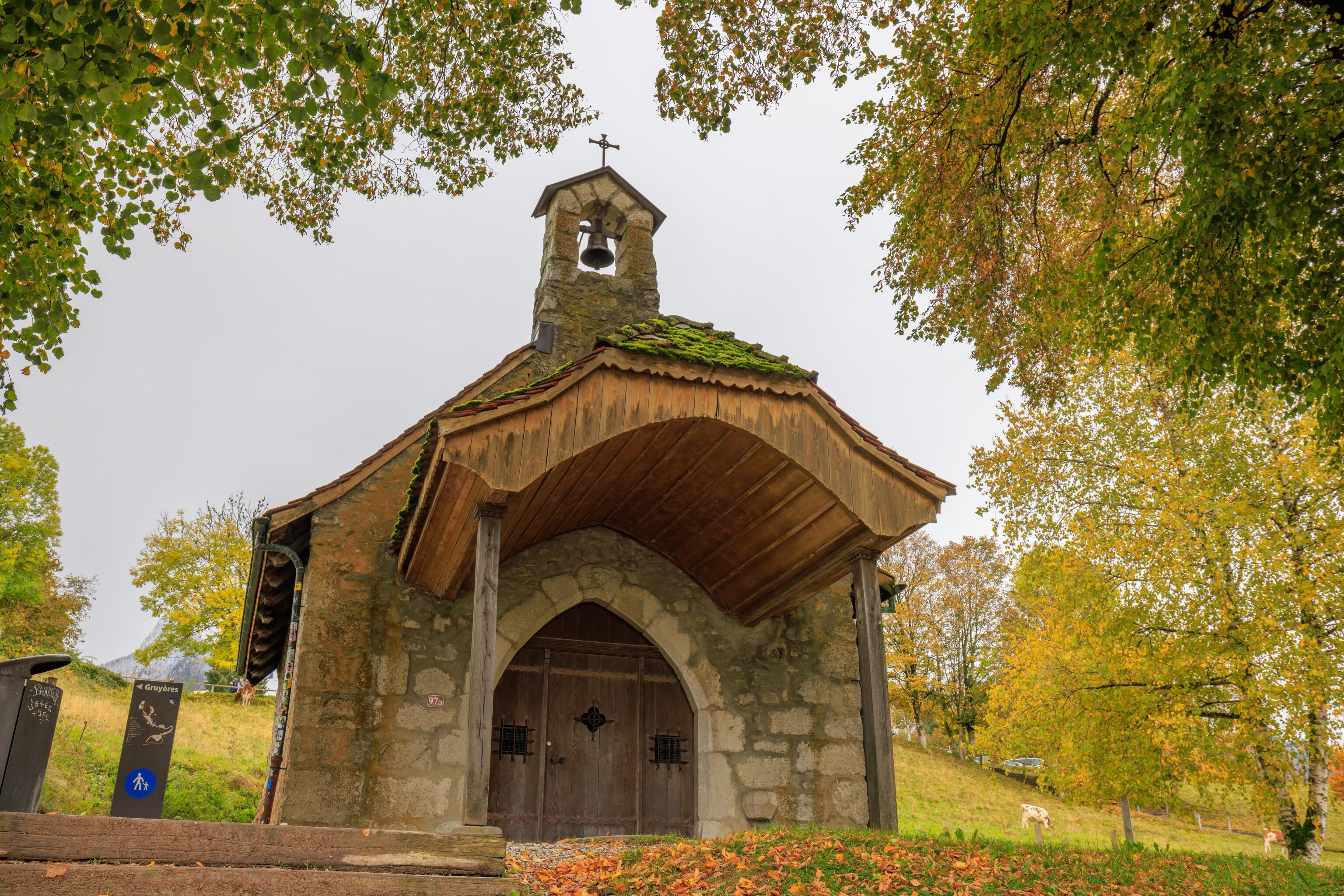
We walked by a small chapel as we chose one of three possible paths. We took the one that seemed likely to be the most direct.
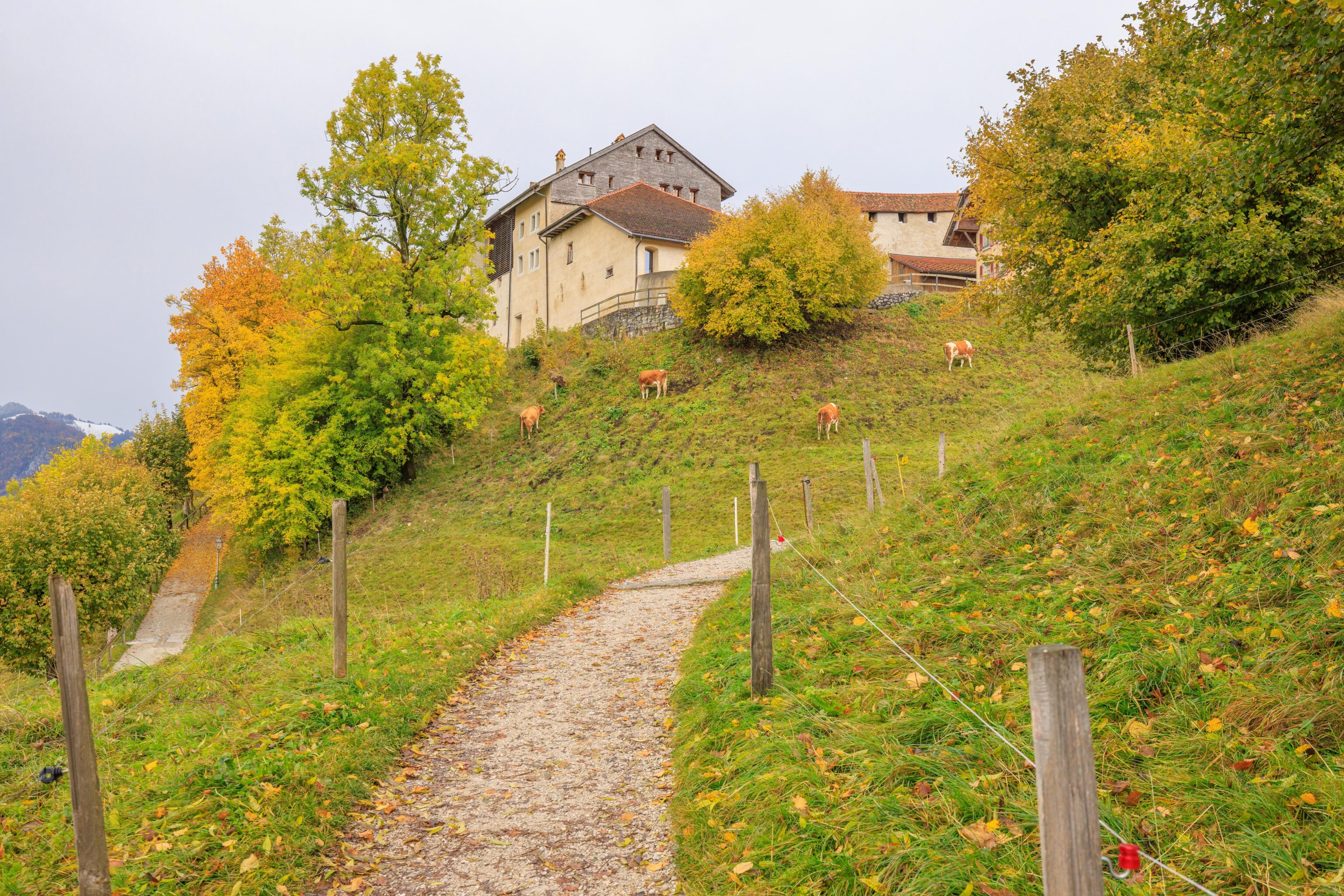
As we got closer to our destination, we saw some cows grazing on some very sloped land!
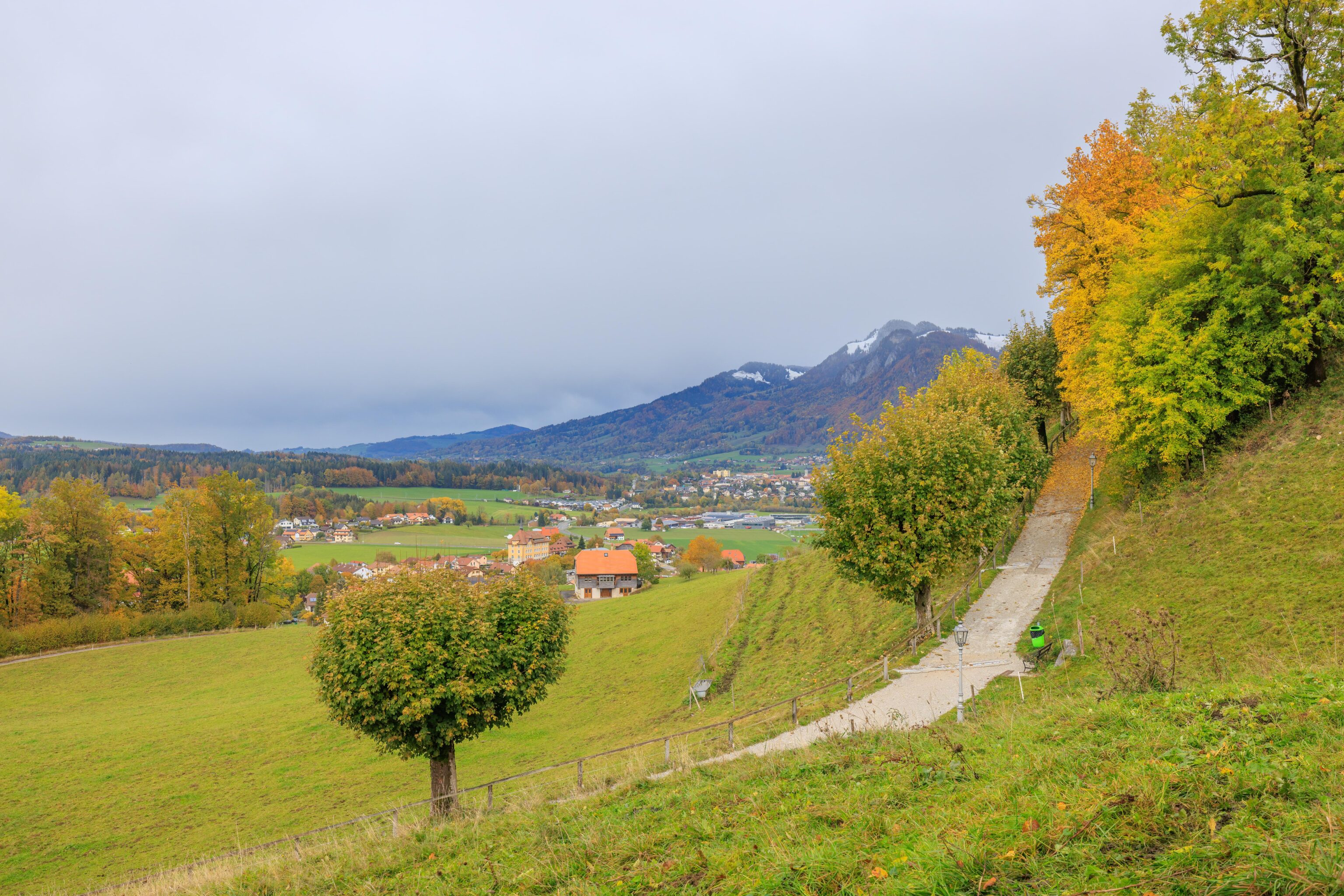
Looking to our left, we could see one of the paths that we did not take. It seemed to be very steep!
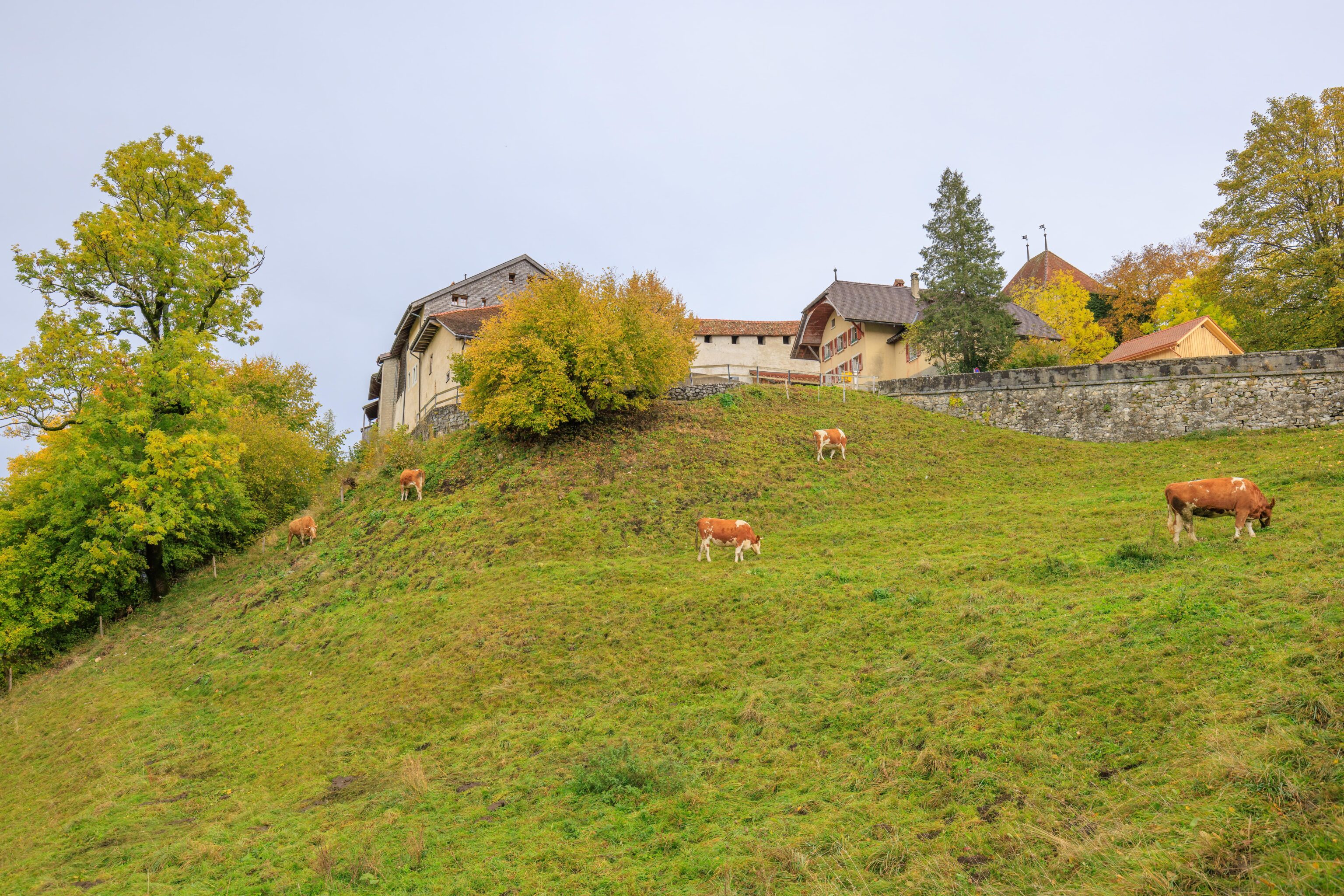
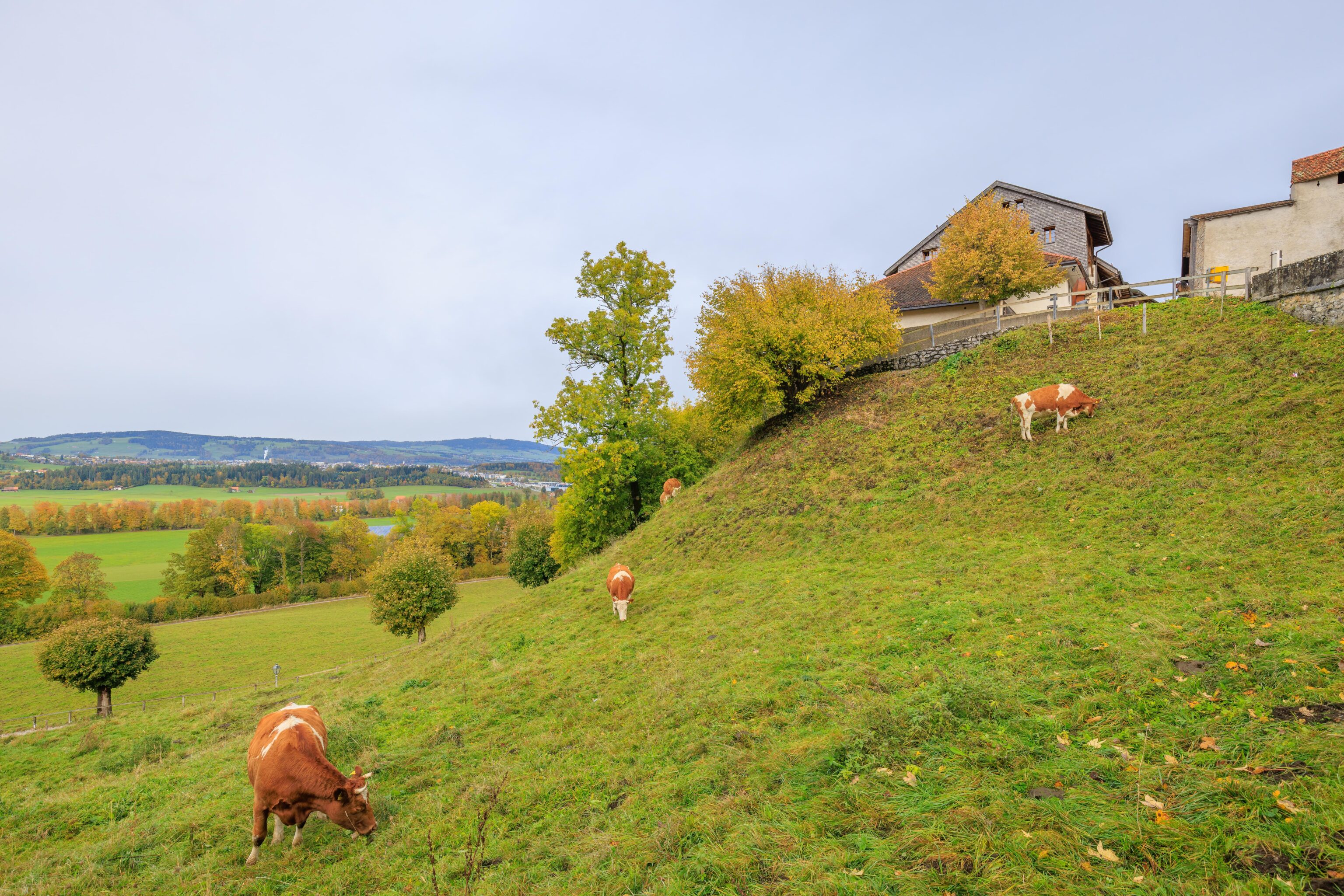
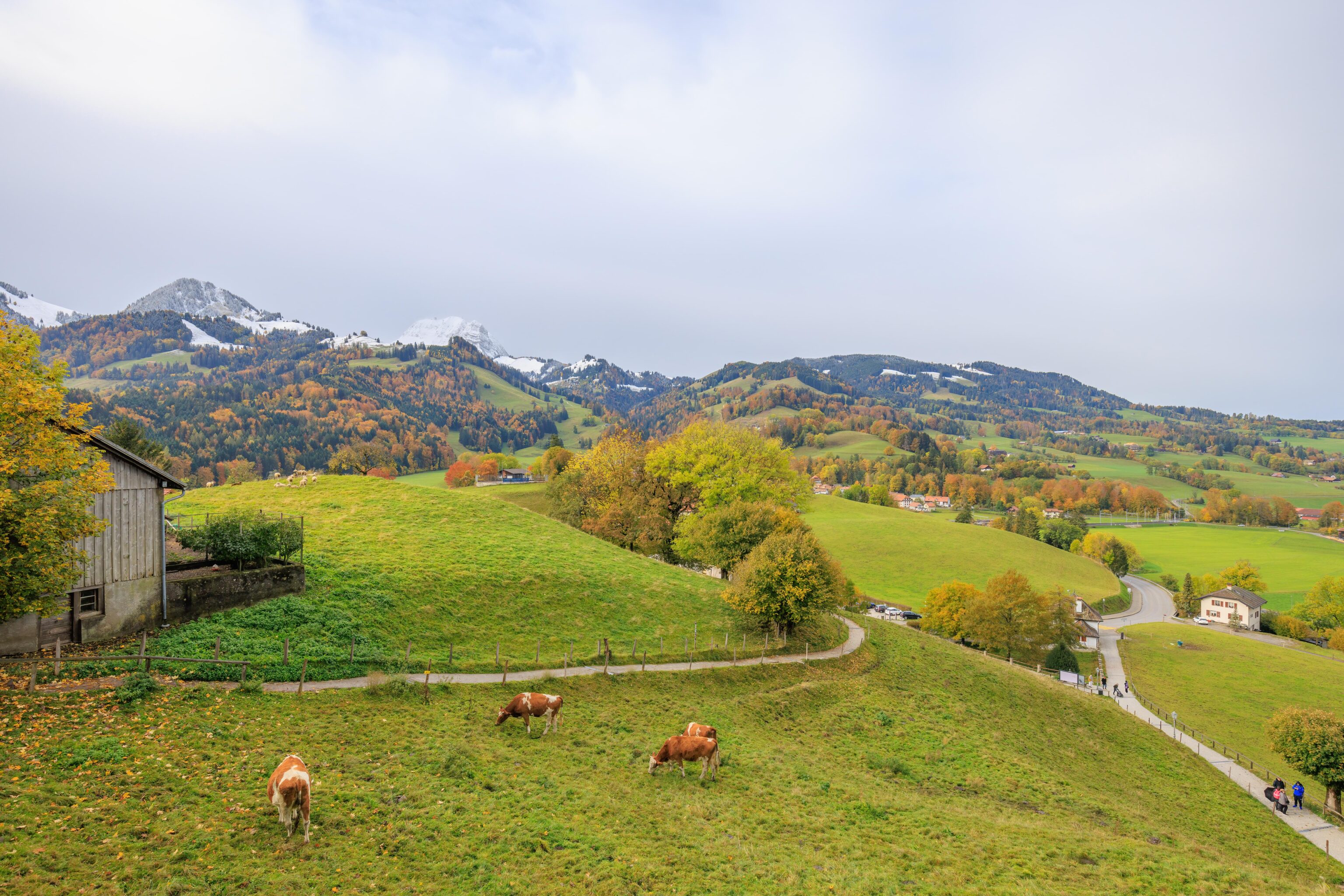
Our path was steep too, though only in the section near the cows. We quickly made it up above them.
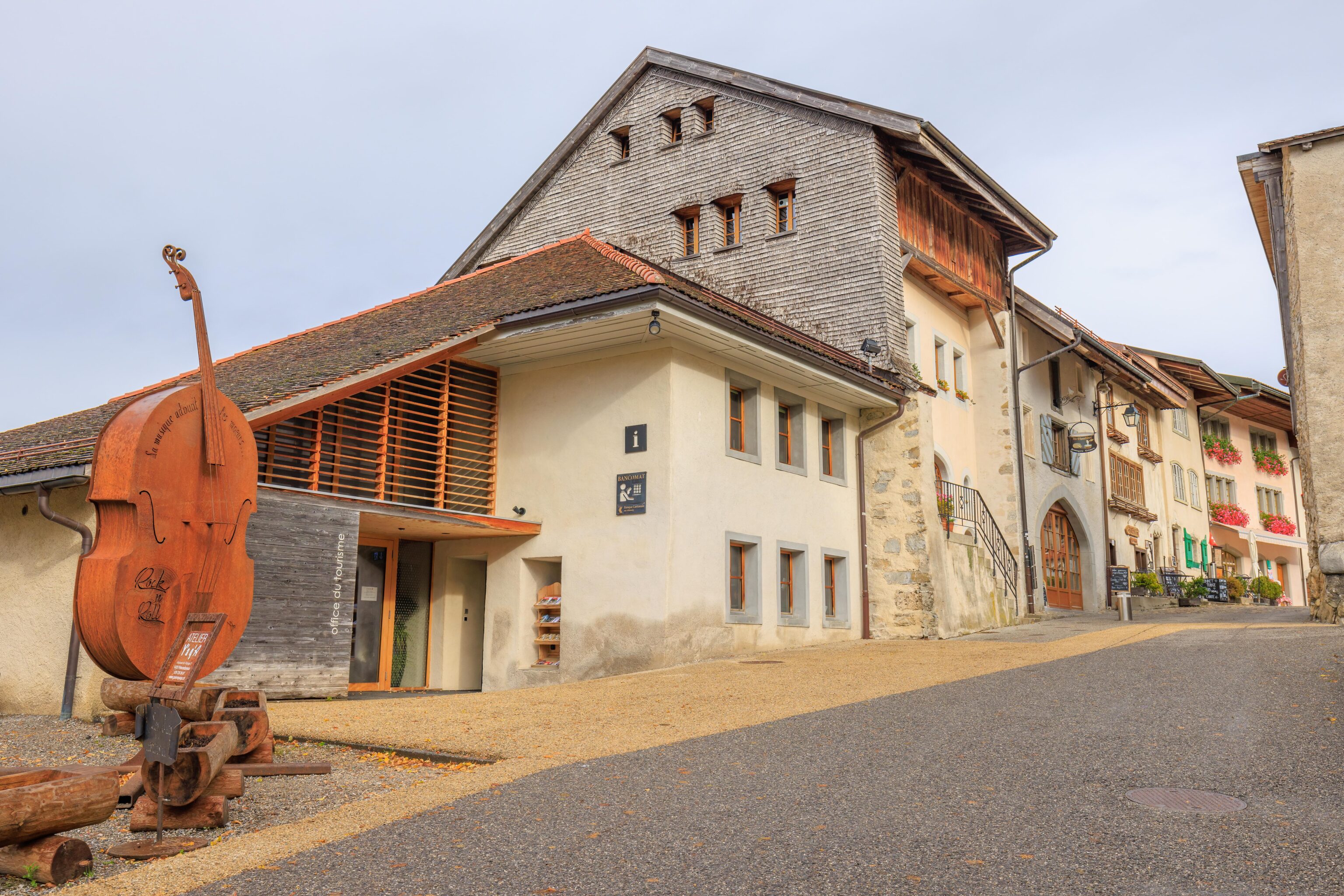
The small tourism office seemed to be closed.
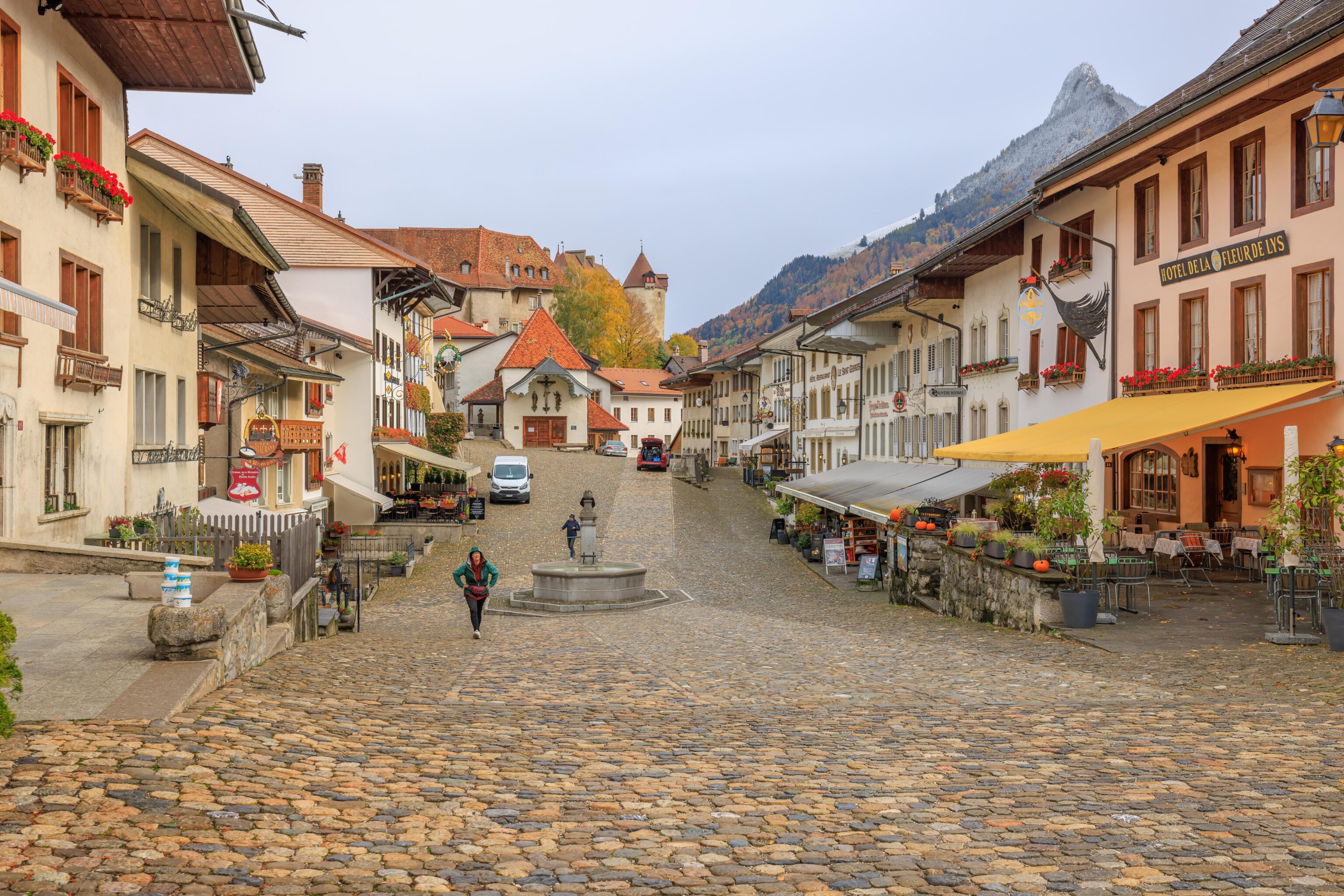
We entered a small town just beyond. The buildings mostly contained various restaurants, shops, and lodging. The castle was at the far end. This entire little town seems like it would have been contained within the castle’s wall.
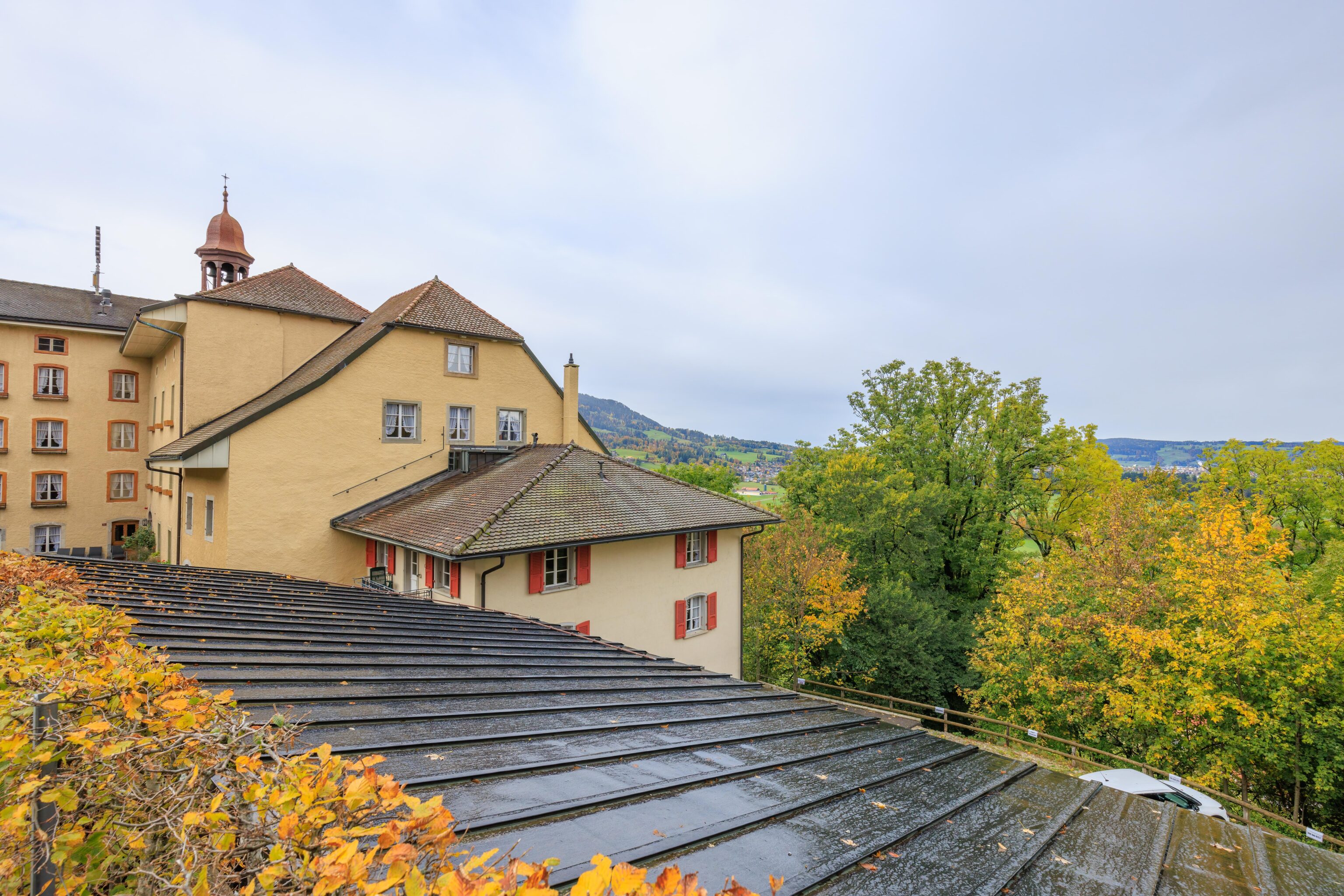
The view to the west as we approached the castle.
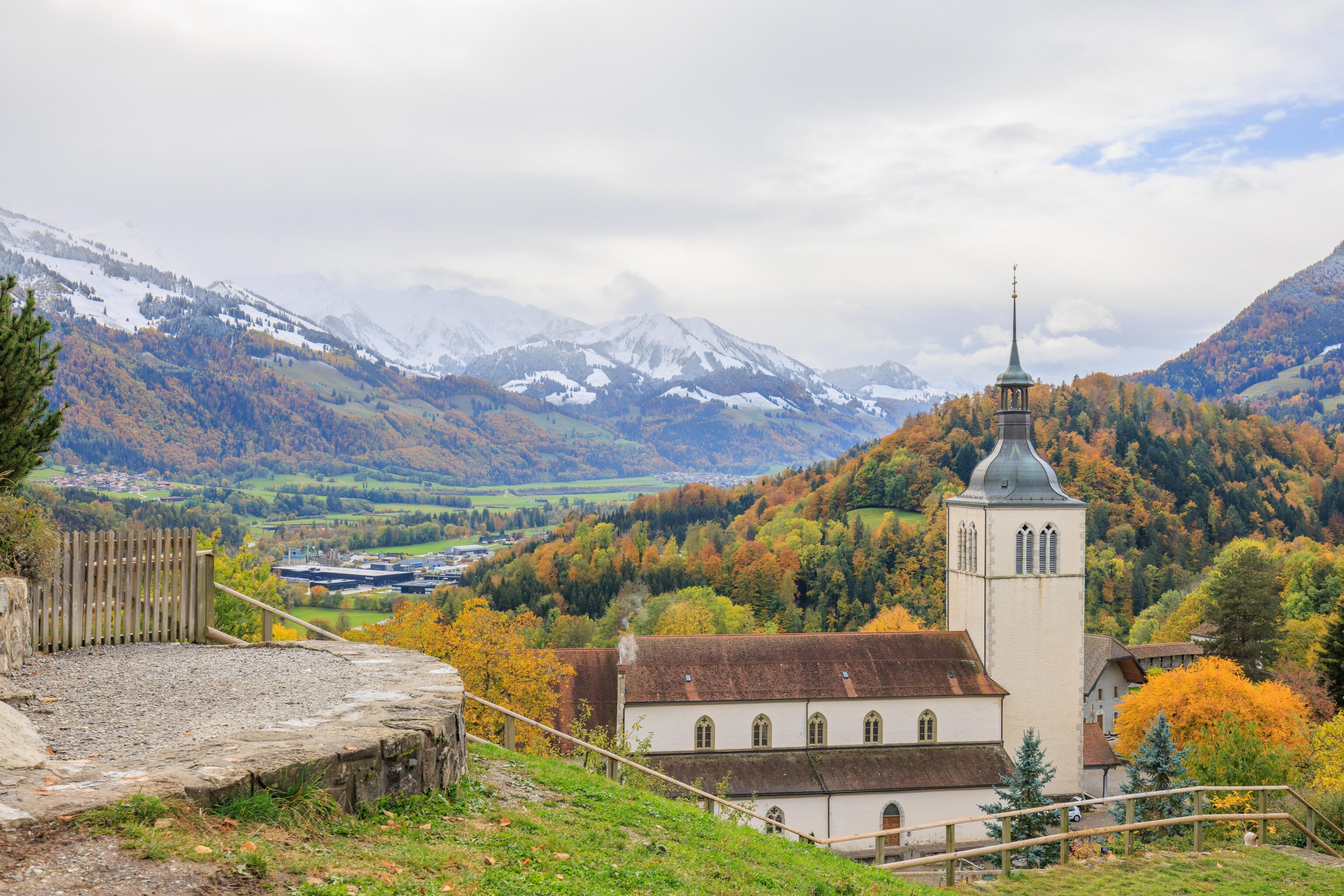
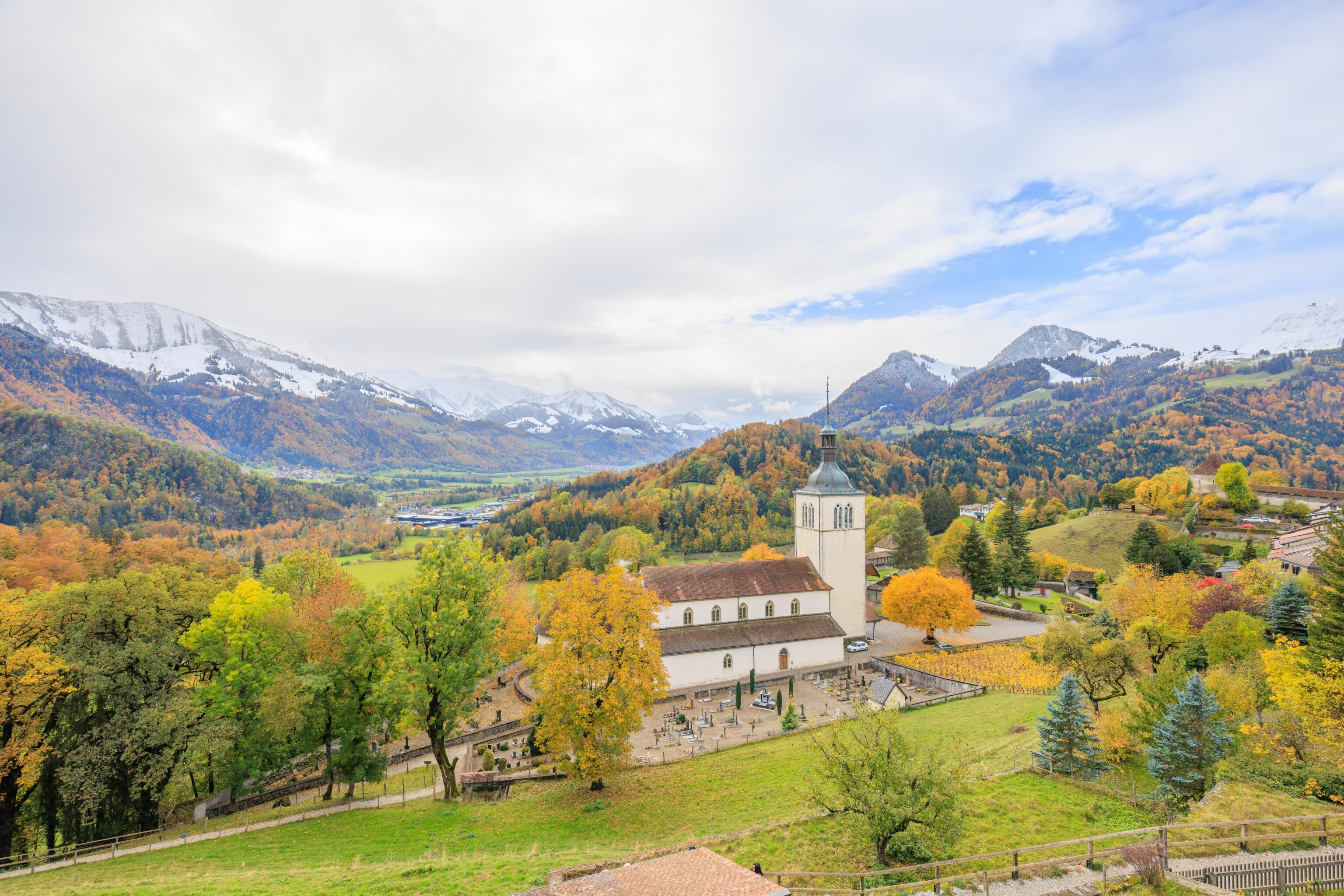
There was a much smaller hill to ascend to reach the castle’s entrance. We could see a small church on the right below us, to the south.
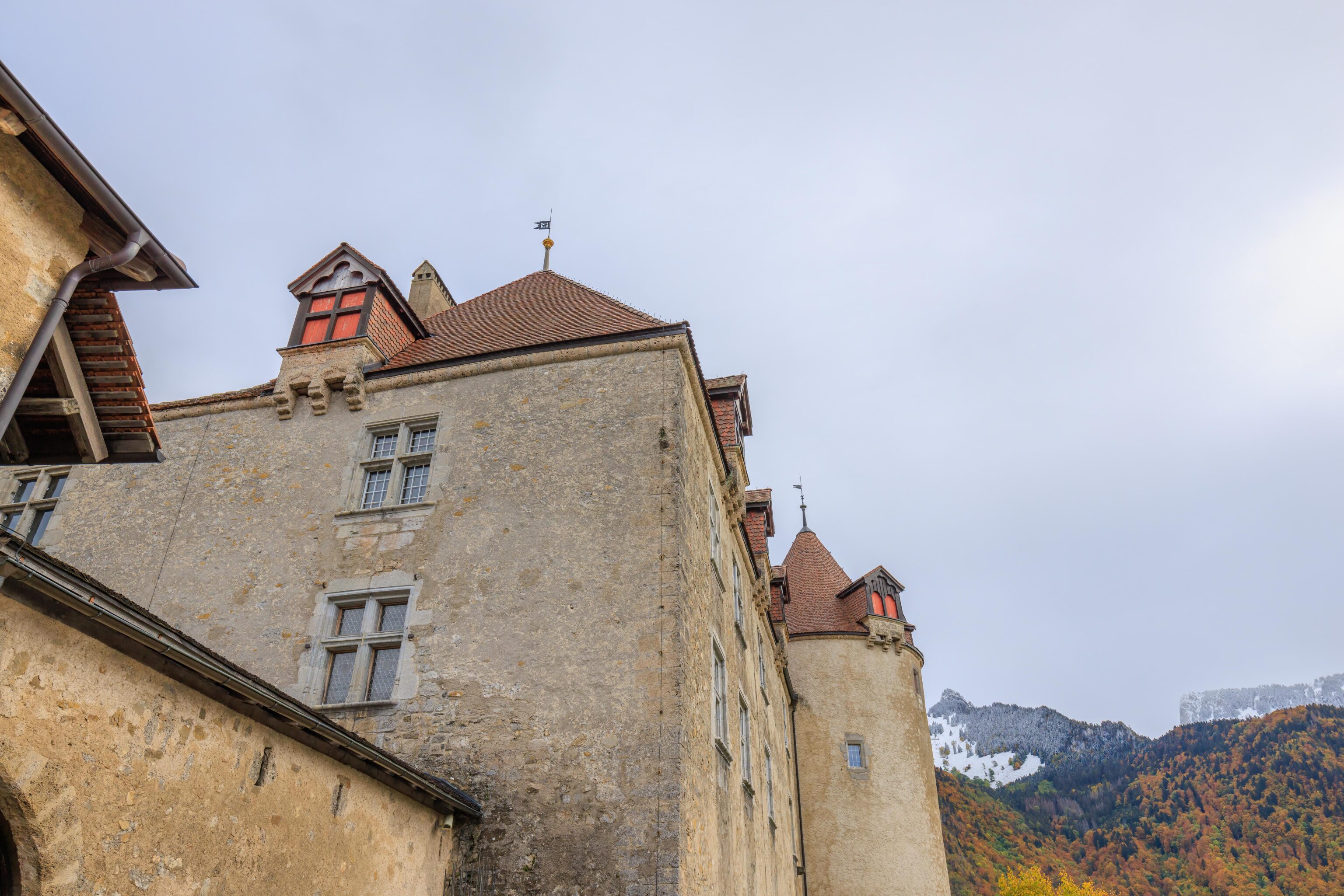
Finally, we were at the entrance!
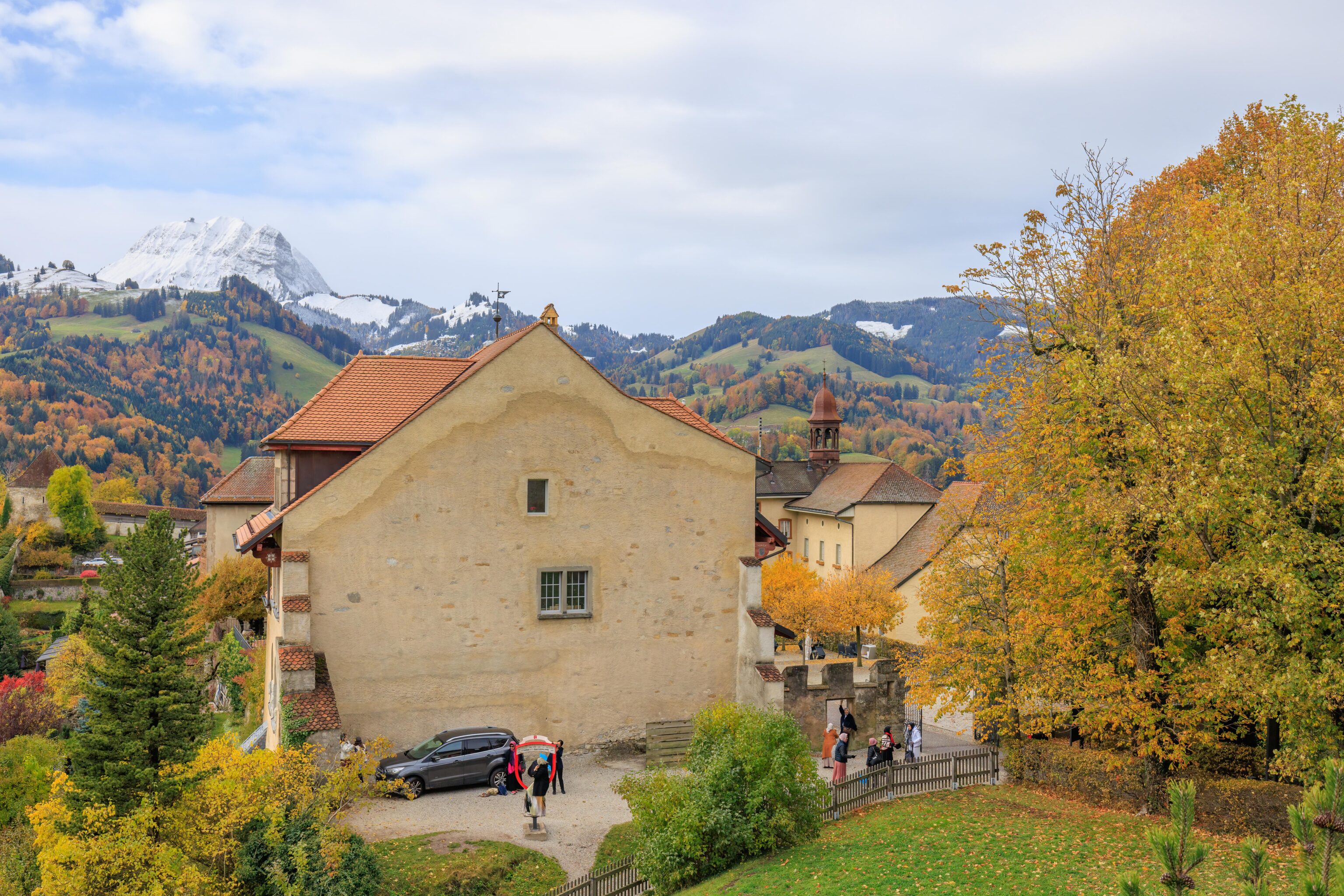
The view looking back towards the tiny town below the castle. There was a Grand Tour photo spot below us, one of 78 in Switzerland. It was busy at the time so we skipped it, hoping to return to it later.
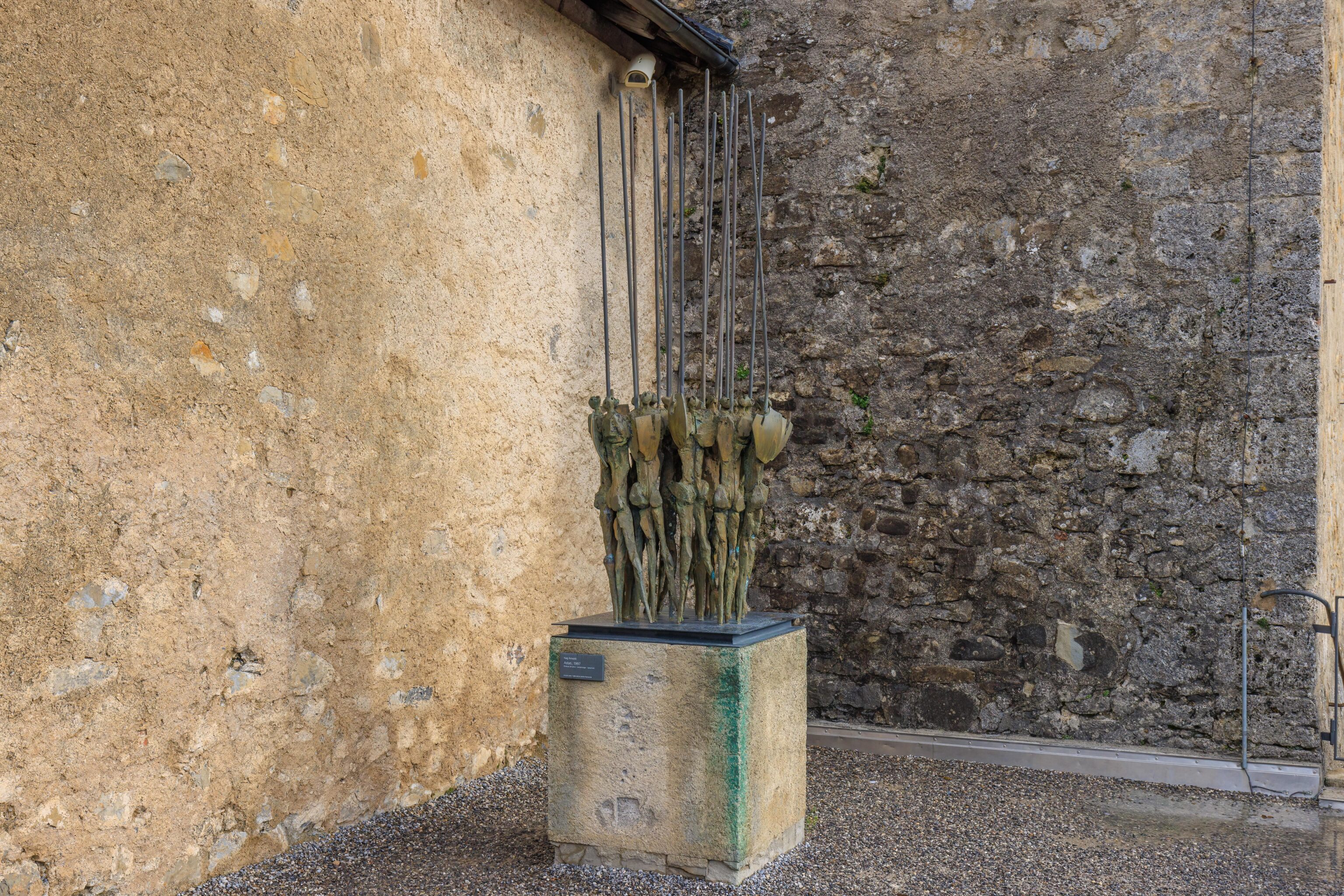
This sculpture of spearmen by Nag Arnoldi stands by the entrance. It is titled Astati. This word seems to be Hastati, a class of Roman infantry who originally fought with spears.
After going into the entrance beyond this sculpture, we purchased our tickets for the castle.
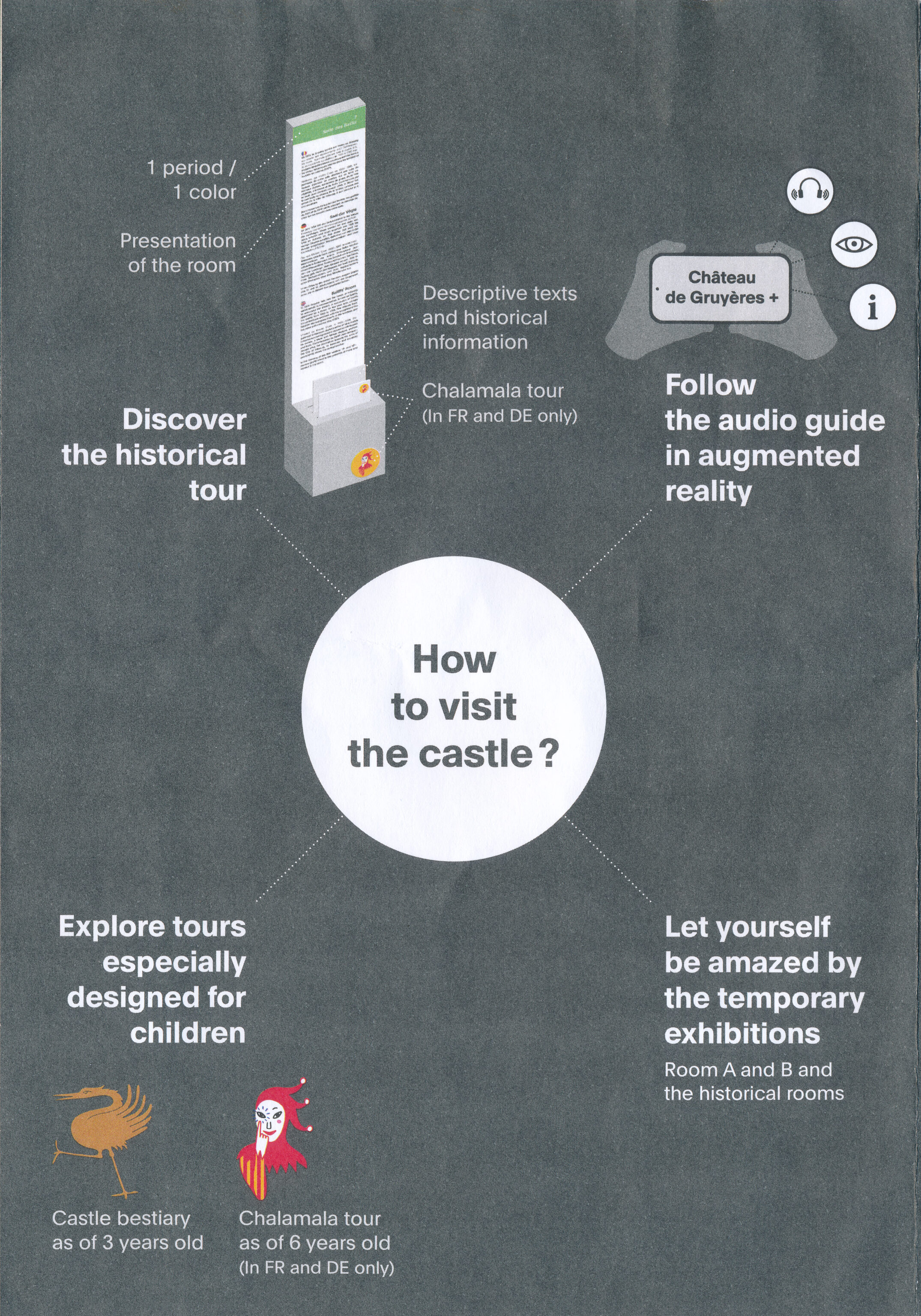
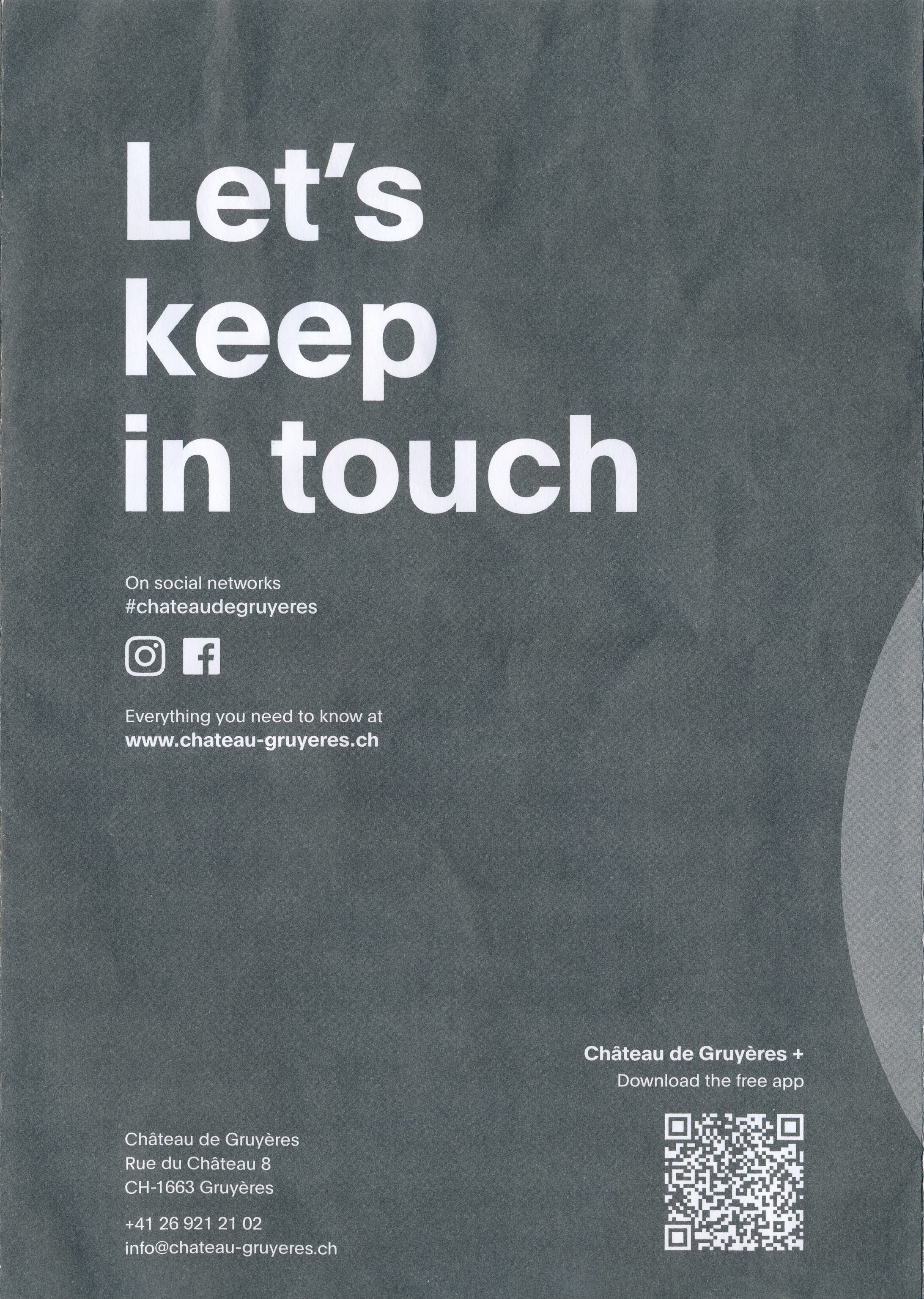
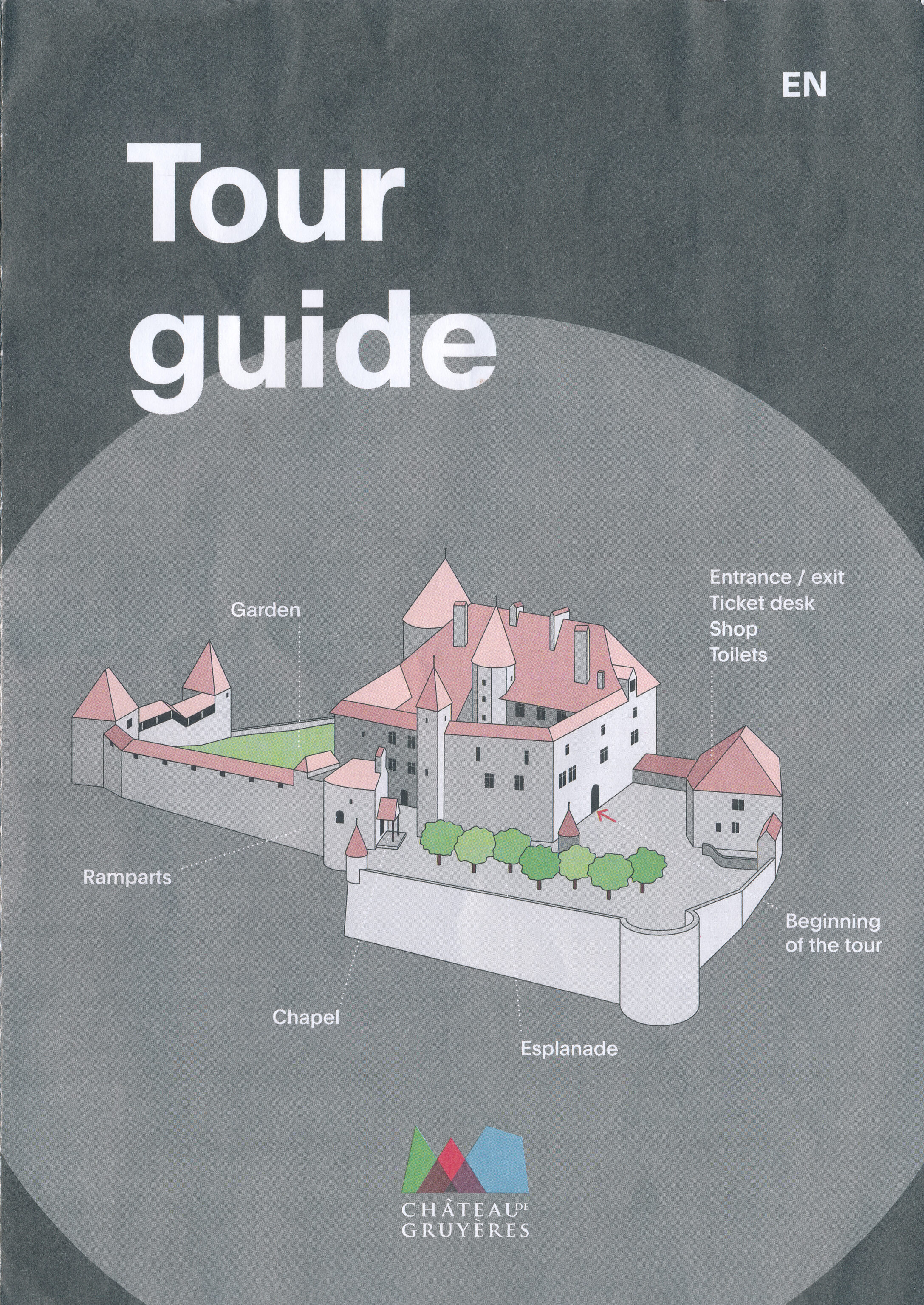
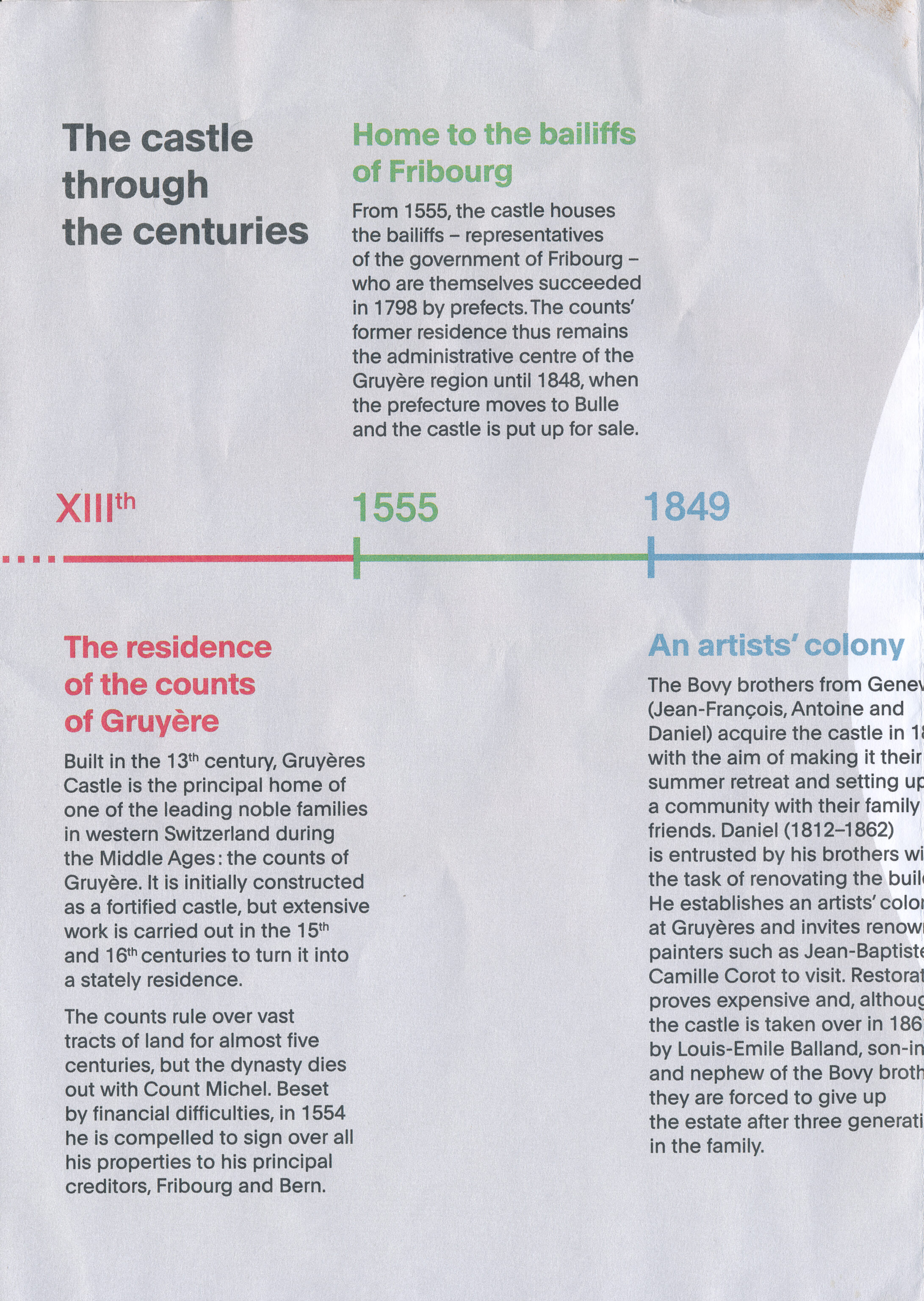
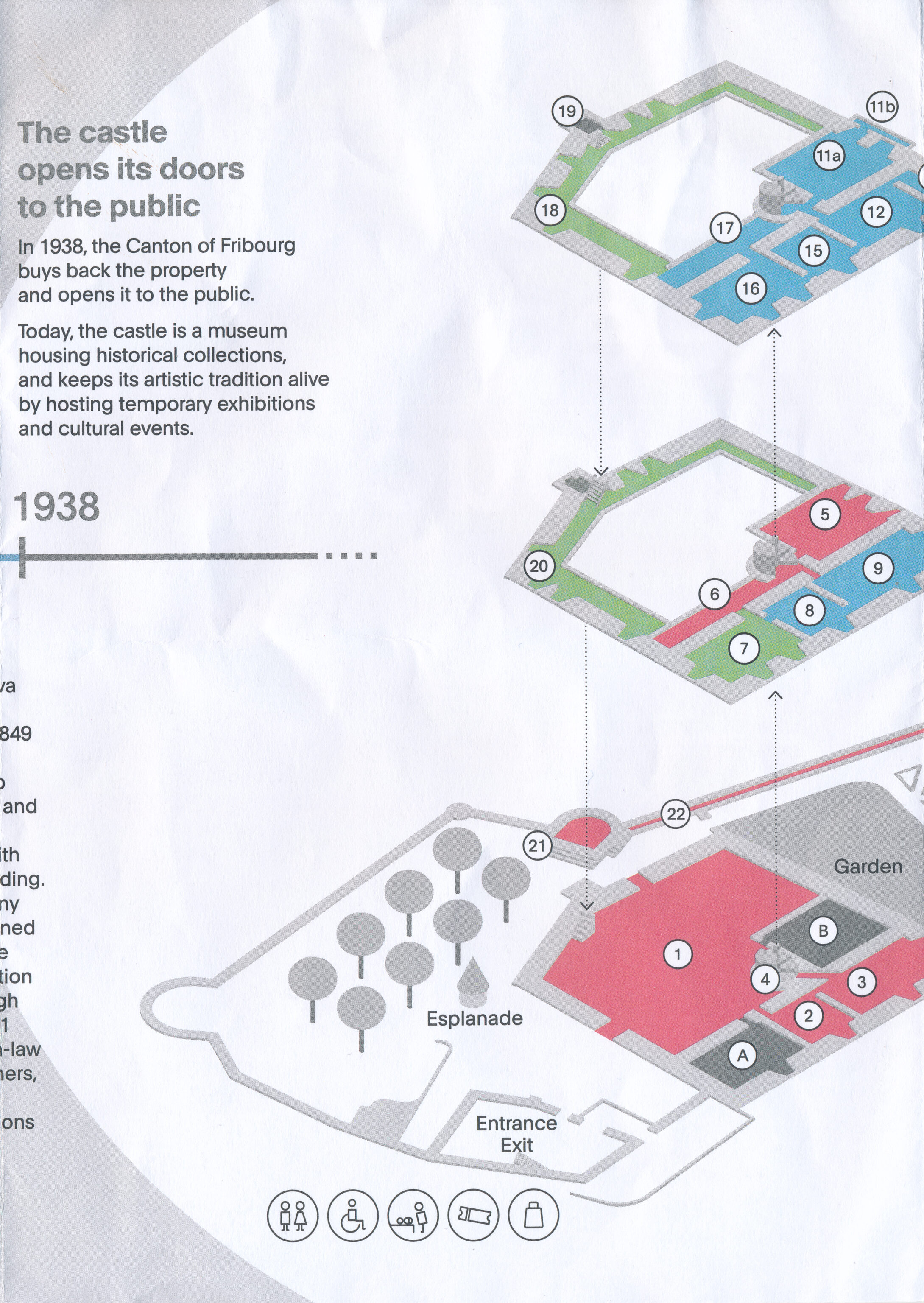
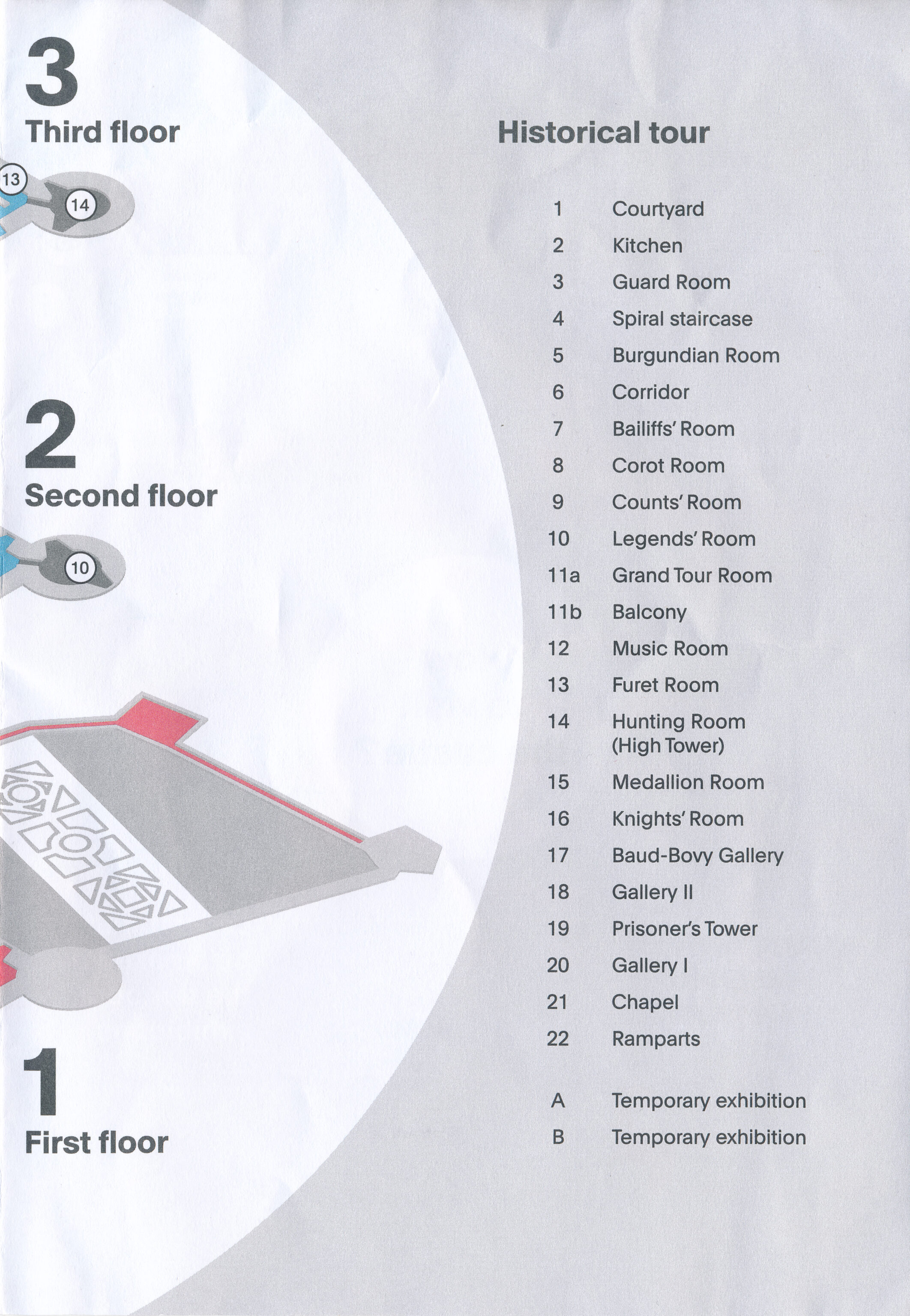
The map provided was helpful, showing all the rooms that can be accessed.
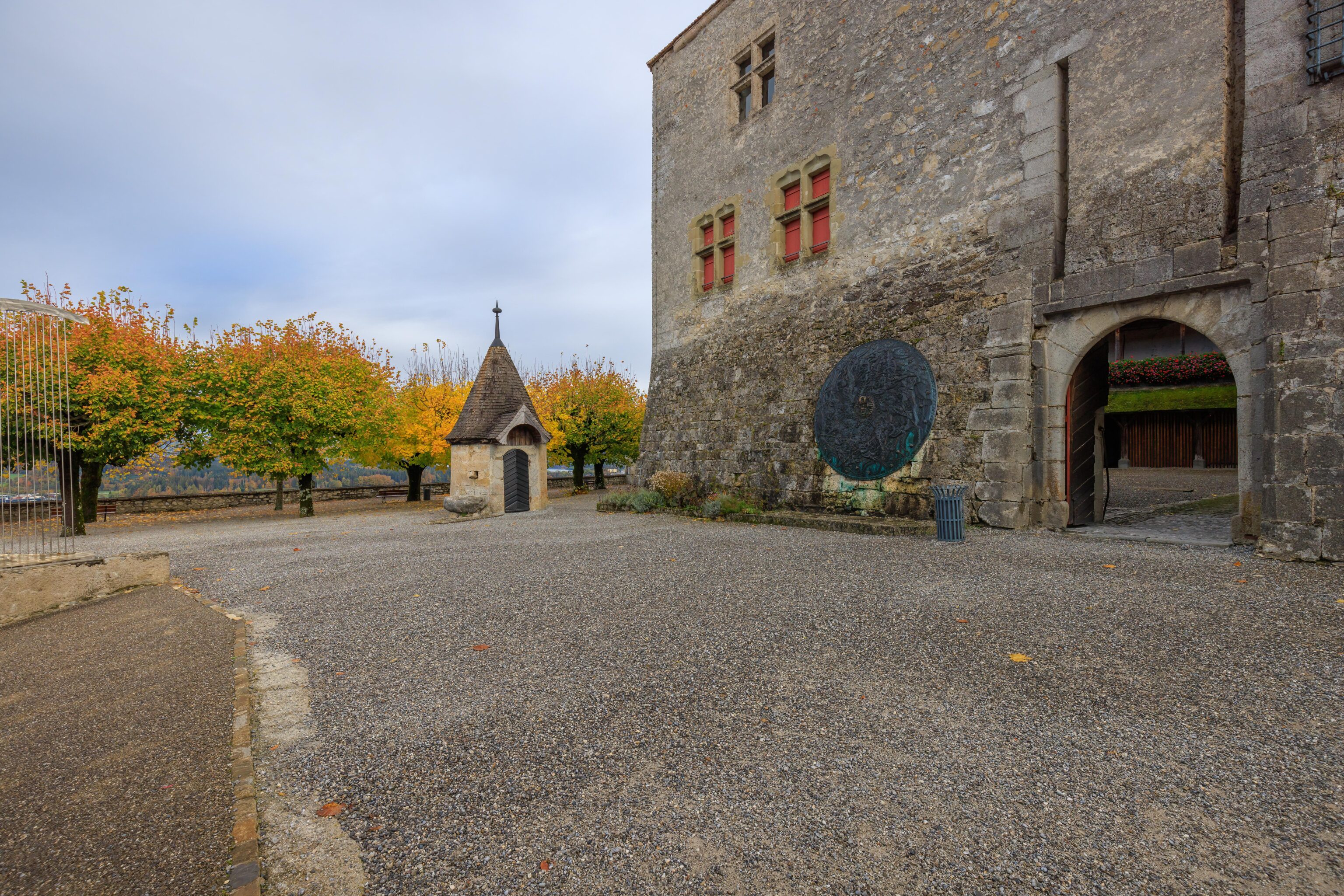
After exiting the ticket office, we were in a small open plaza by the castle’s main entrance.
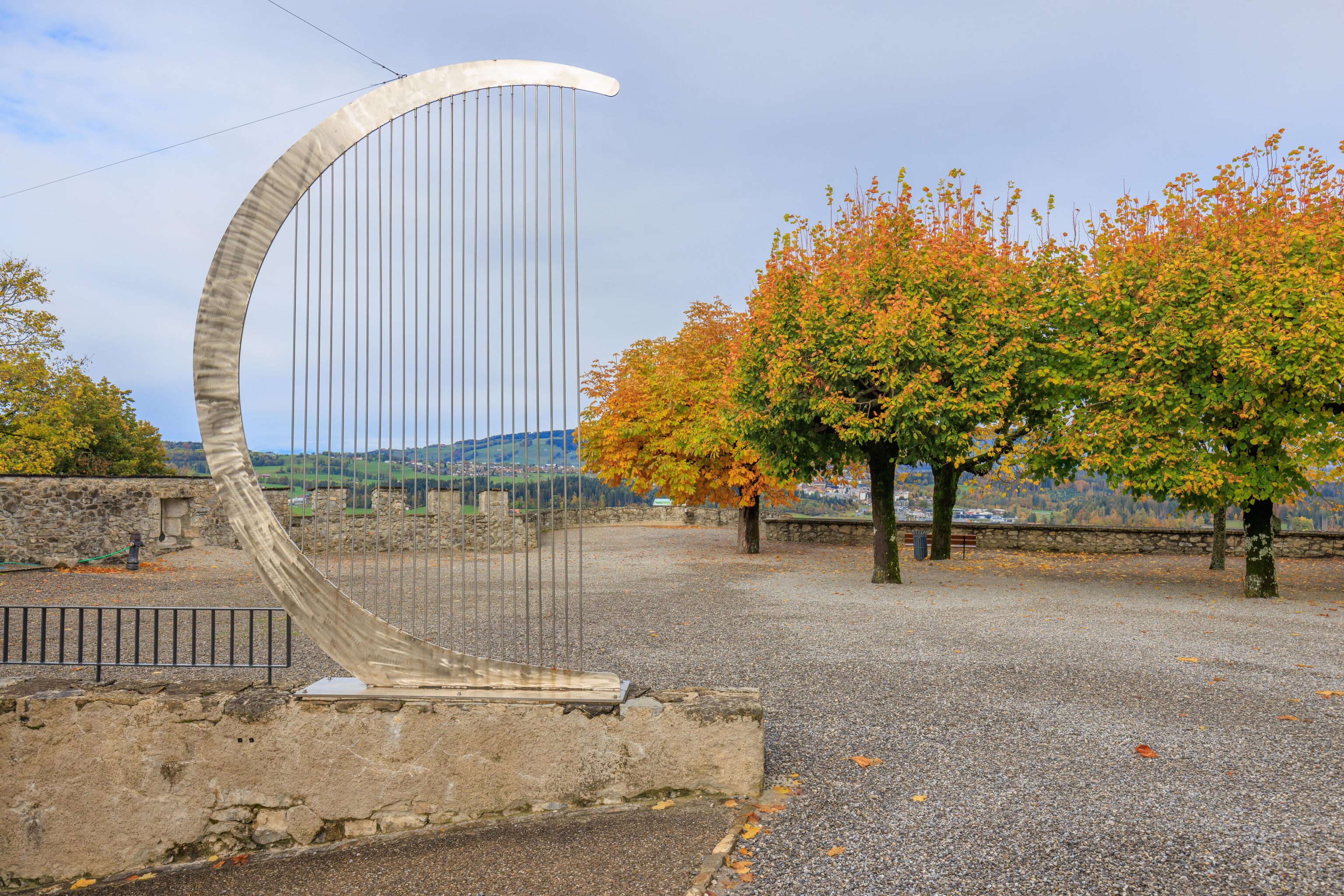
This could be a harp?
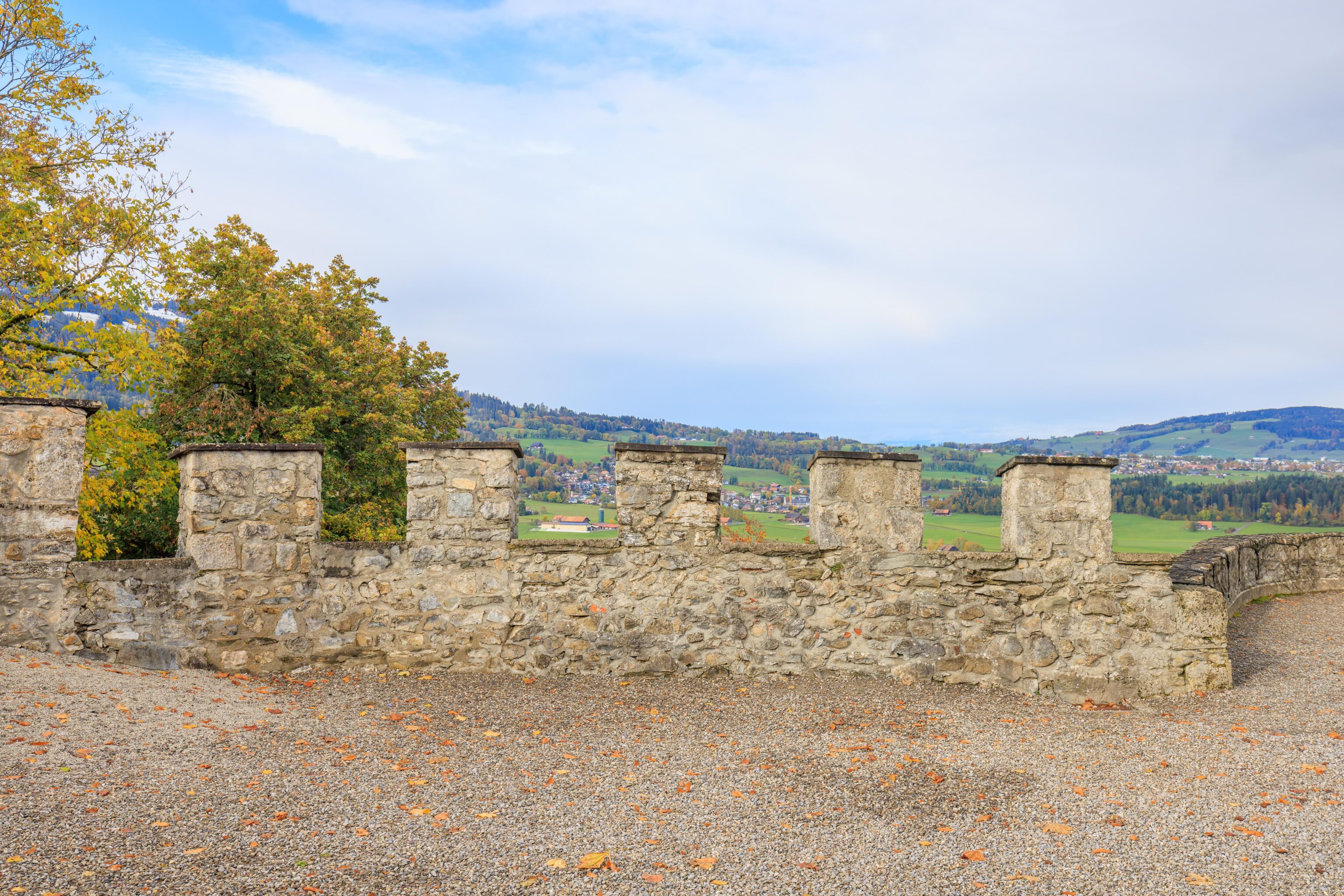
Some of the castle’s walls had a very stereotypical castle-like appearance! At least, this is how we Americans expect castle walls to look.
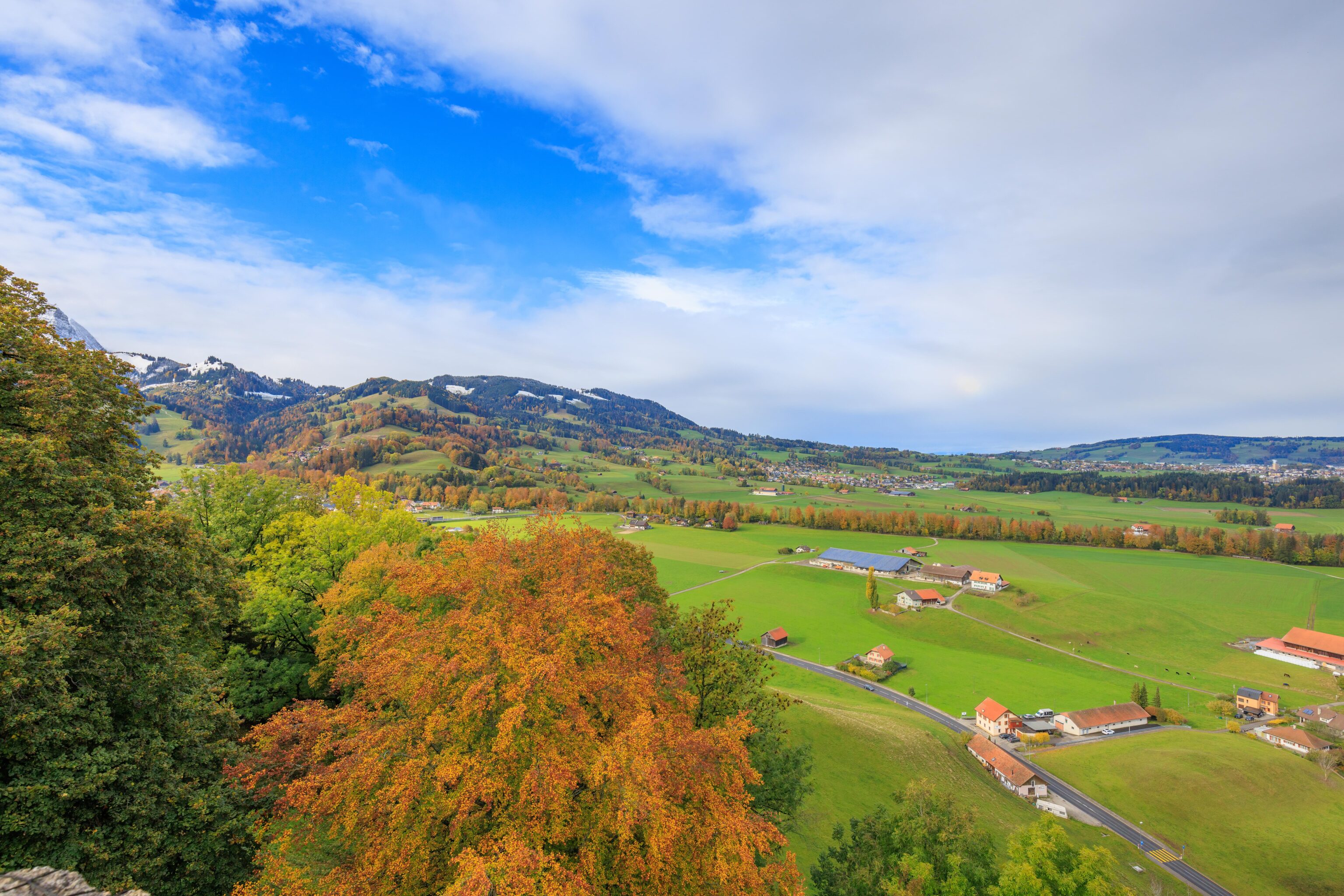
Looking to the west, we could see a bit of blue sky! The town of Gruyères is there, seemingly under that spot of clear sky and mostly hidden by the trees.
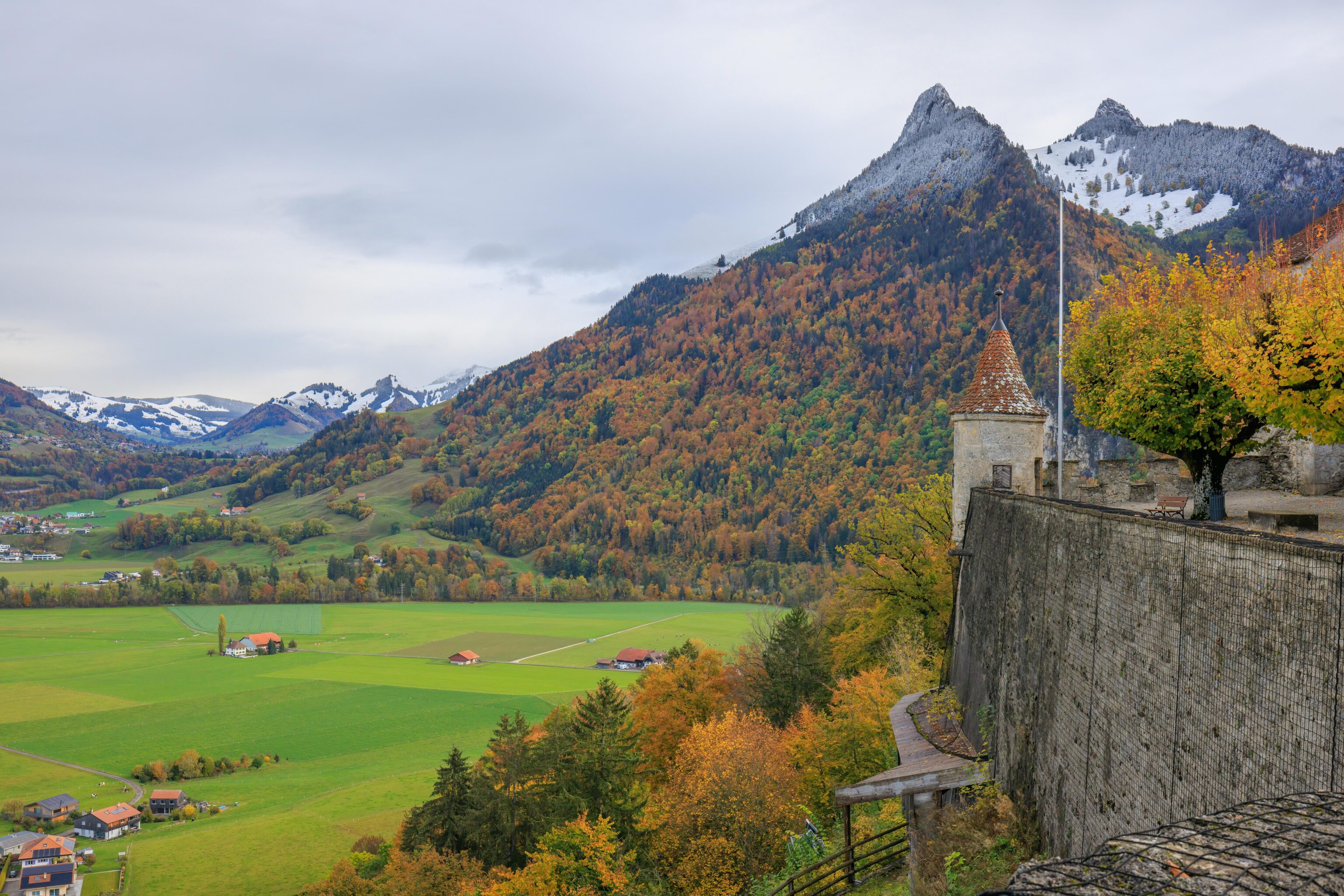
Looking to the east, we could see some of the castle’s walls in the foreground. Beyond, a few snowy peaks and some nice fall colors. For some unknown reason, the castle wall is here is covered with rope netting. There appears to be some sort of covered passageway down below, something we didn’t notice at the time.

We created a panorama of the view, though I haven’t figured out a good way to present these on the web yet. But here it is anyway.
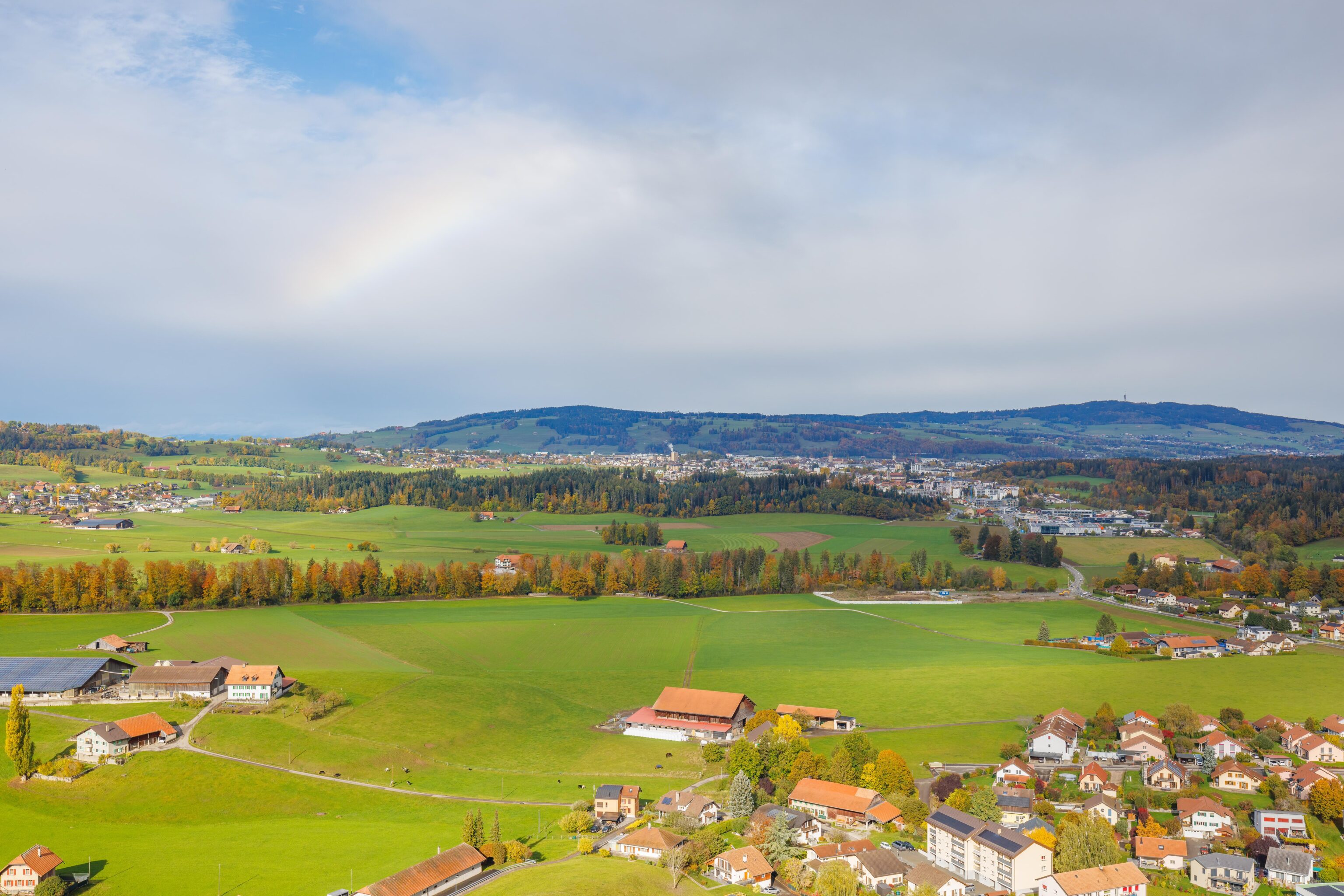
Looking straight out to the north, we noticed a partial rainbow!
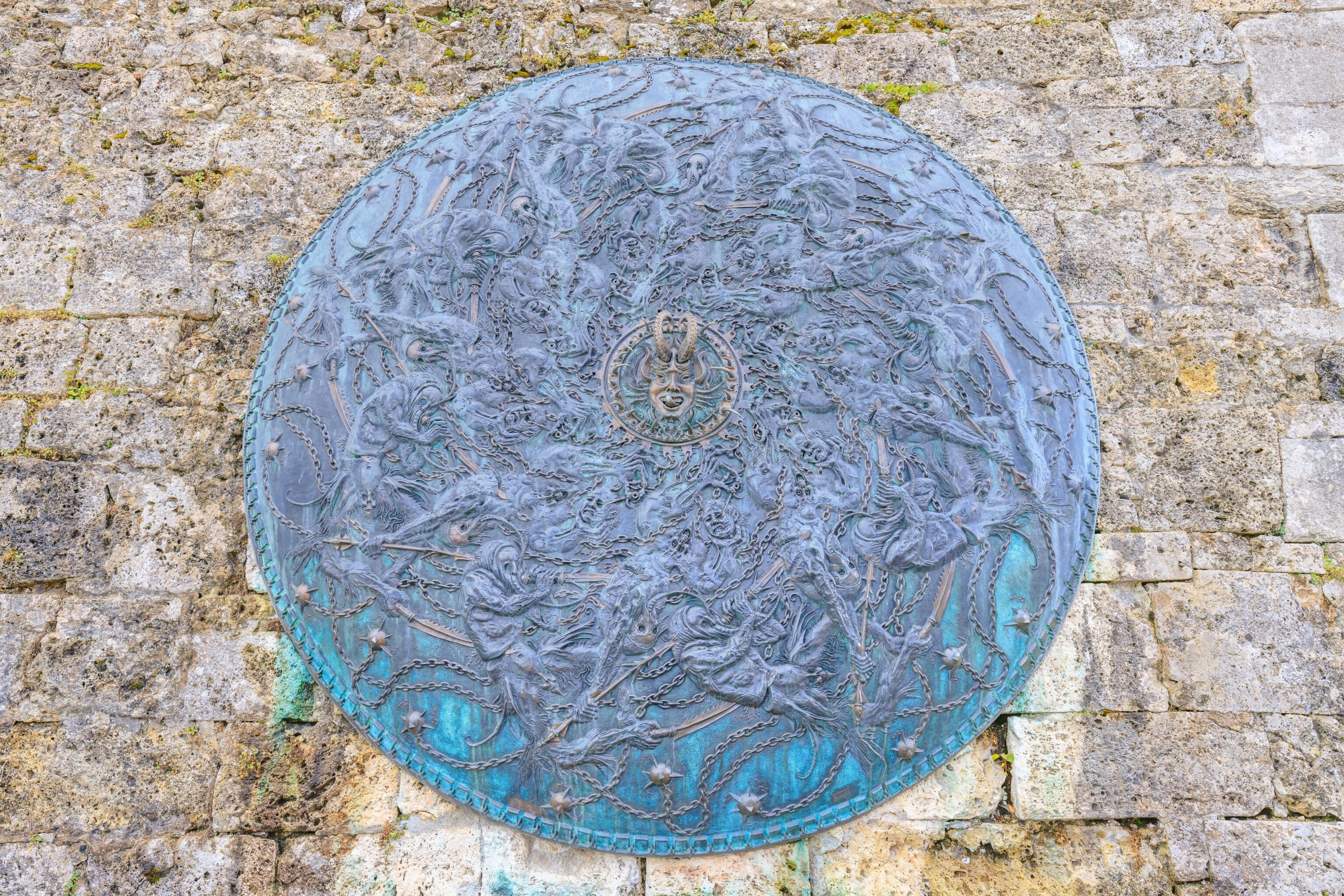
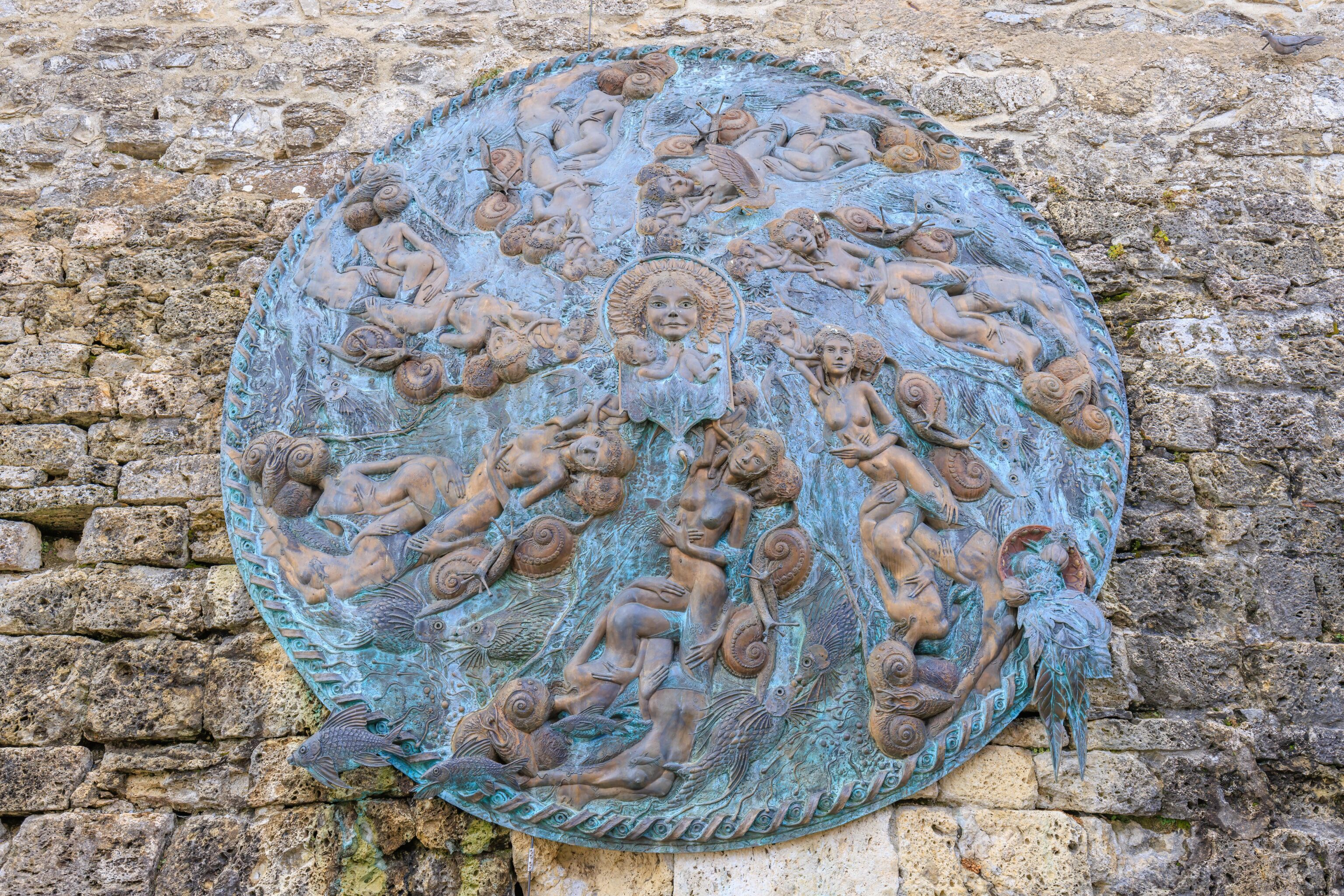
These two circular metal pieces were on the walls by the door into the castle. They are a bit of a mystery. Doing a Google image search on the second one yielded some information from a Wikipedia article about Patrick Woodroffe. They are titled Le Bouclier de Mars and Le Bouclier de Vénus – shields of Mars and Venus. Wikipedia describes him as “specialised in fantasy science-fiction artwork, with images that bordered on the surreal.” Gruyères is also home to the HR Geiger Museum, just outside of the castle. HR Geiger, who was Swiss and is buried in Gruyères, is perhaps most famous for having designed the alien from the movie Alien. So perhaps that is the connection? The castle was also used as an artists’ colony in the 19th century1, so more reason to have art present that may be otherwise unrelated to the castle’s use as a castle.
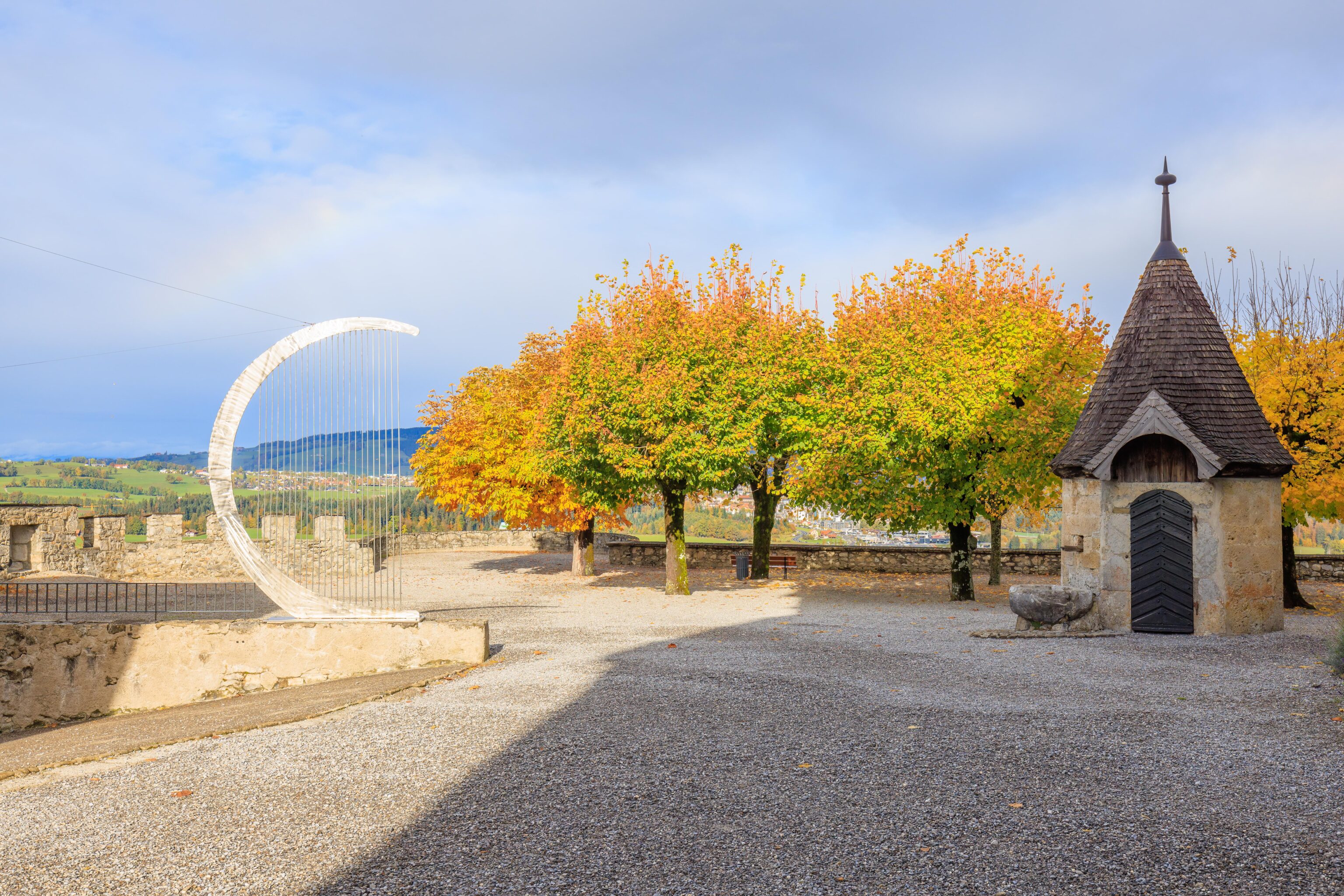
One last look at the rainbow and a bit of fall foliage before heading into the castle.
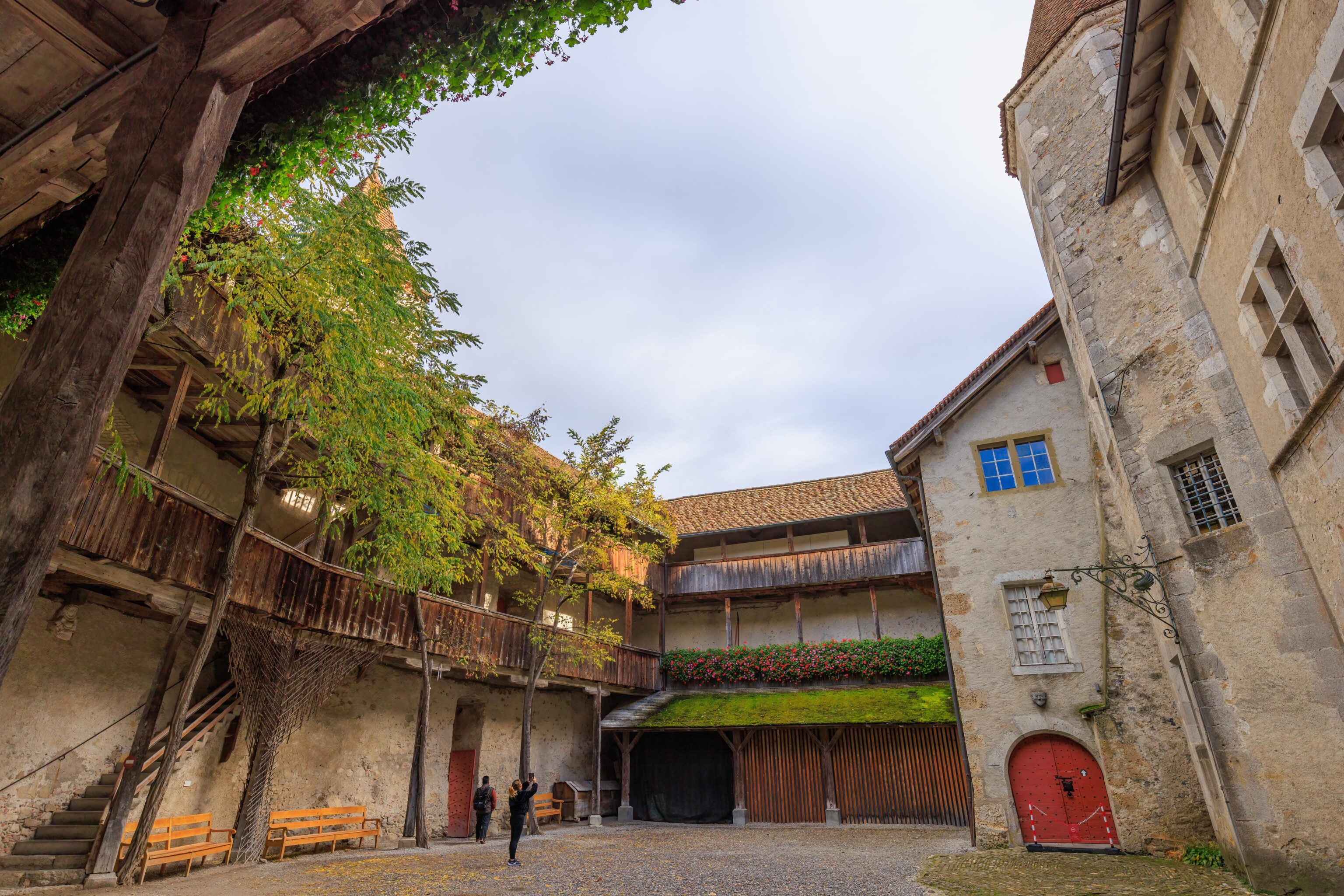
The entrance actually leads into a small courtyard.
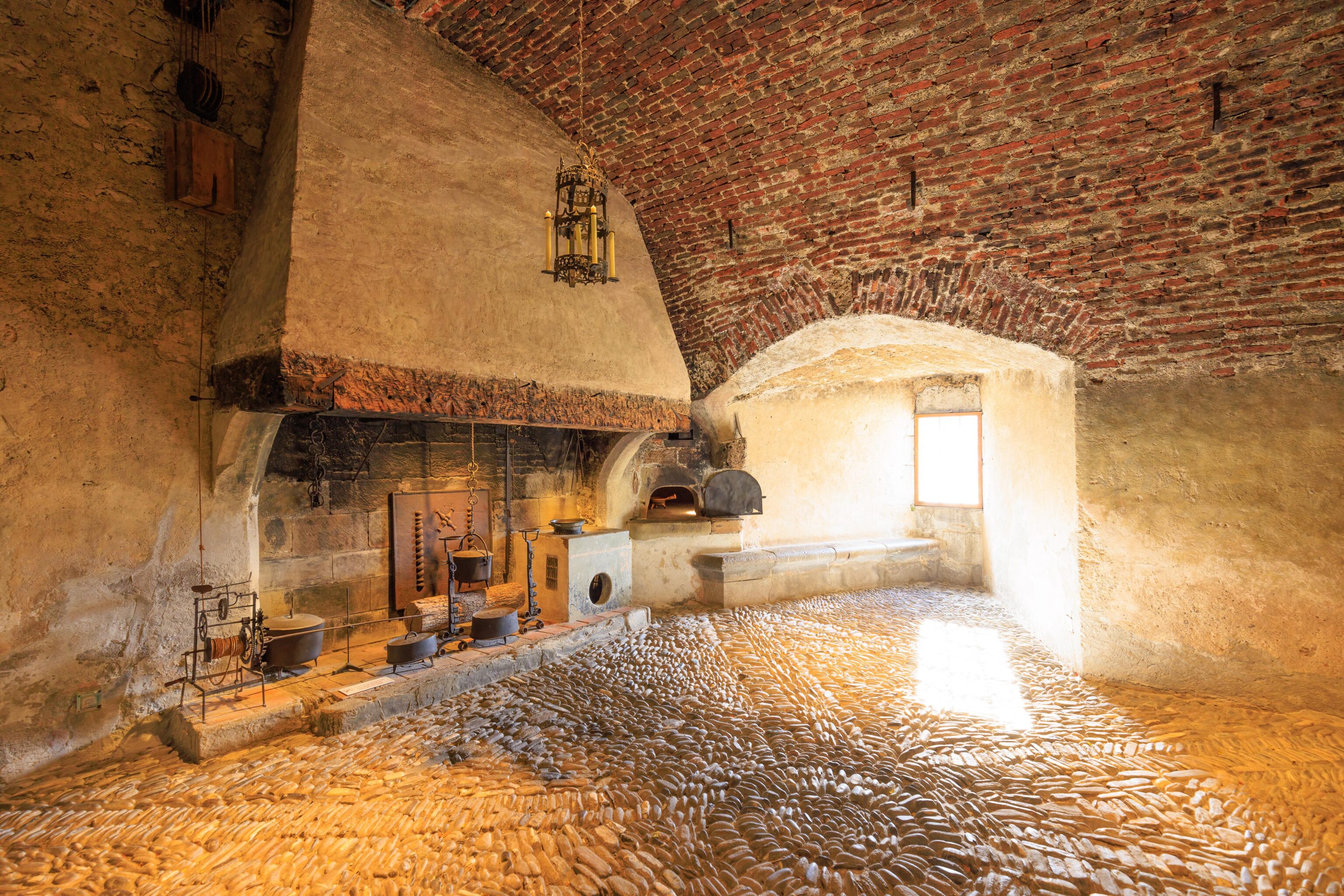
The first room we entered was a kitchen.
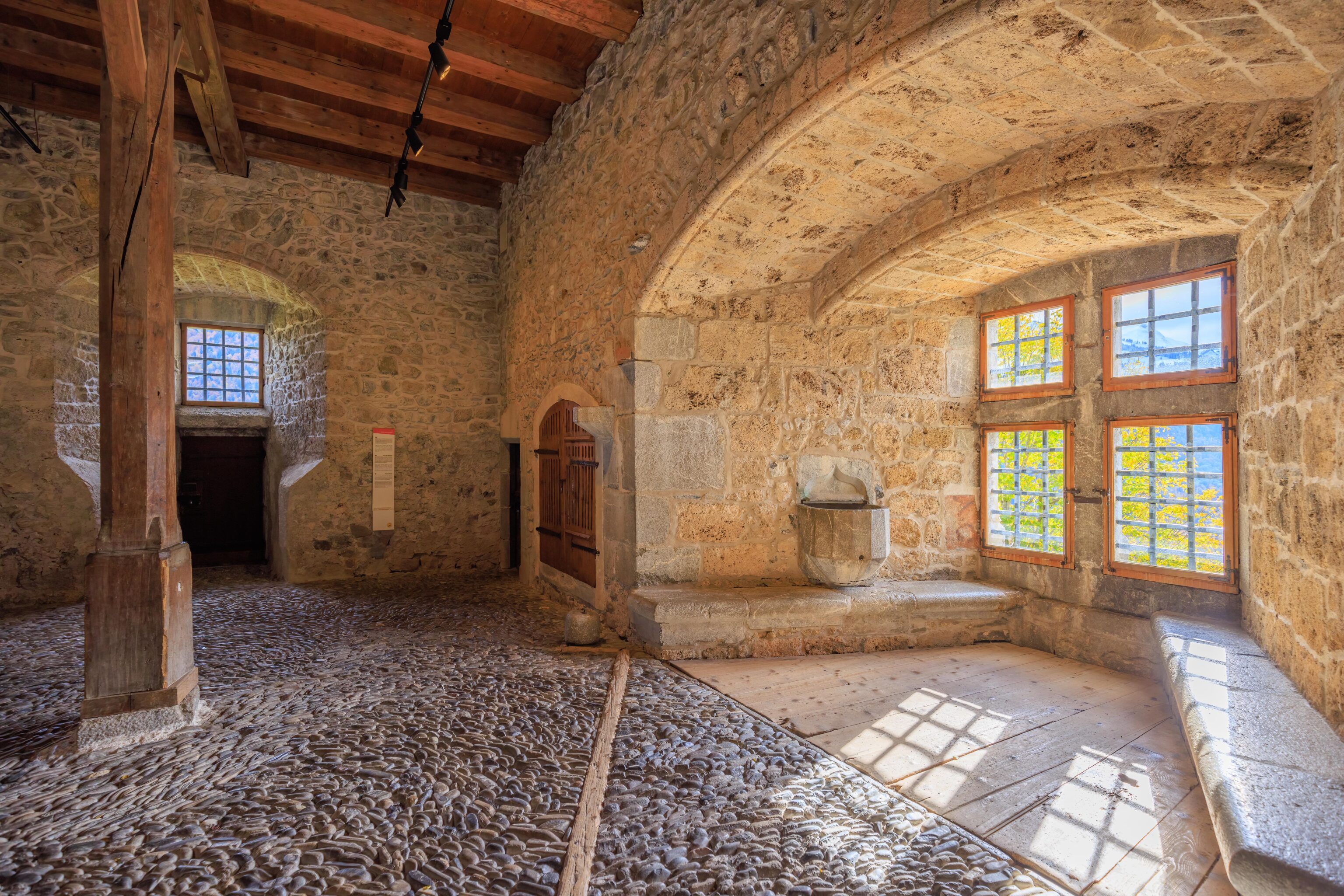
This second larger room is the Guard Room. A sign explains:
In the Middle Ages, access to the Guard Room was via spiral staircases or through the door leading to the wall walk. Brightly lit by the window that was enlarged in the late 15 century, the room originally had a wooden floor that retained as much as possible of the heat from the large fireplace. Located at the foot of the keep, this space was probably set aside for the count's guards. Although there is no evidence to confirm it, it is thought to have been a warm place for them to relax between two turns on watch or prepare their equipment by the light from the large window. The carved stone basin was installed at an unknown date.
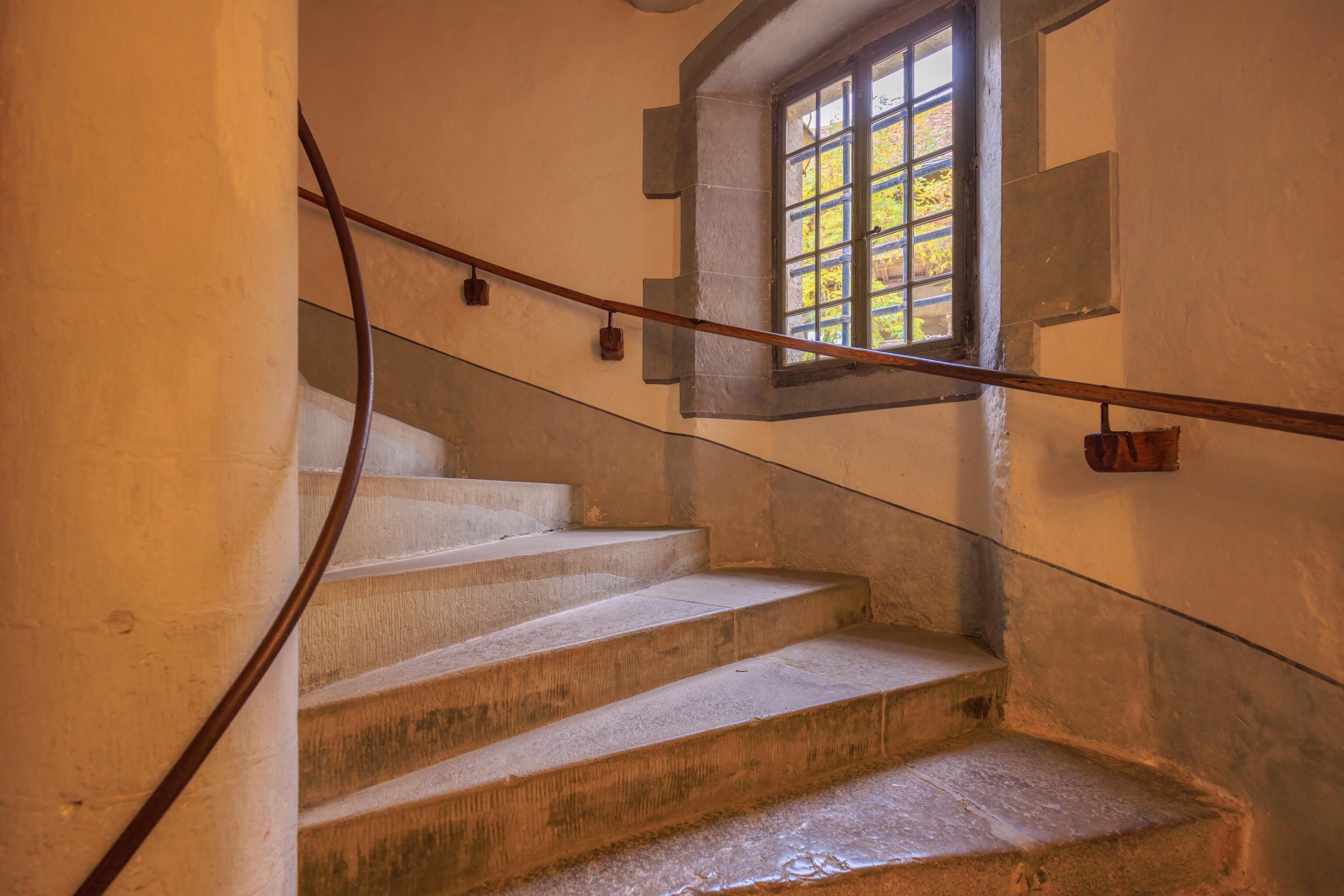
A spiral staircase led to the next floor. A sign explains:
Built in the late 15" century, the staircase tower bears the arms of its sponsors, Louis de Gruyère and his wife Claude de Seyssel, over the entrance door on the outside. As well as linking the floors of the castle together, the spiral staircase is also a prestige architectural feature of a kind often found In Renaissance castles Vestiges of painted decorations can still be discerned on the way up the stairs. A notable feature of the second landing is the chronogram crVX MVnDum LVXit (the Cross illuminated the world), the emphasised letters corresponding to the Roman numerals for the year 1685. On the next landing up, remnants of a large Crucifixion painted on the wall can be seen.
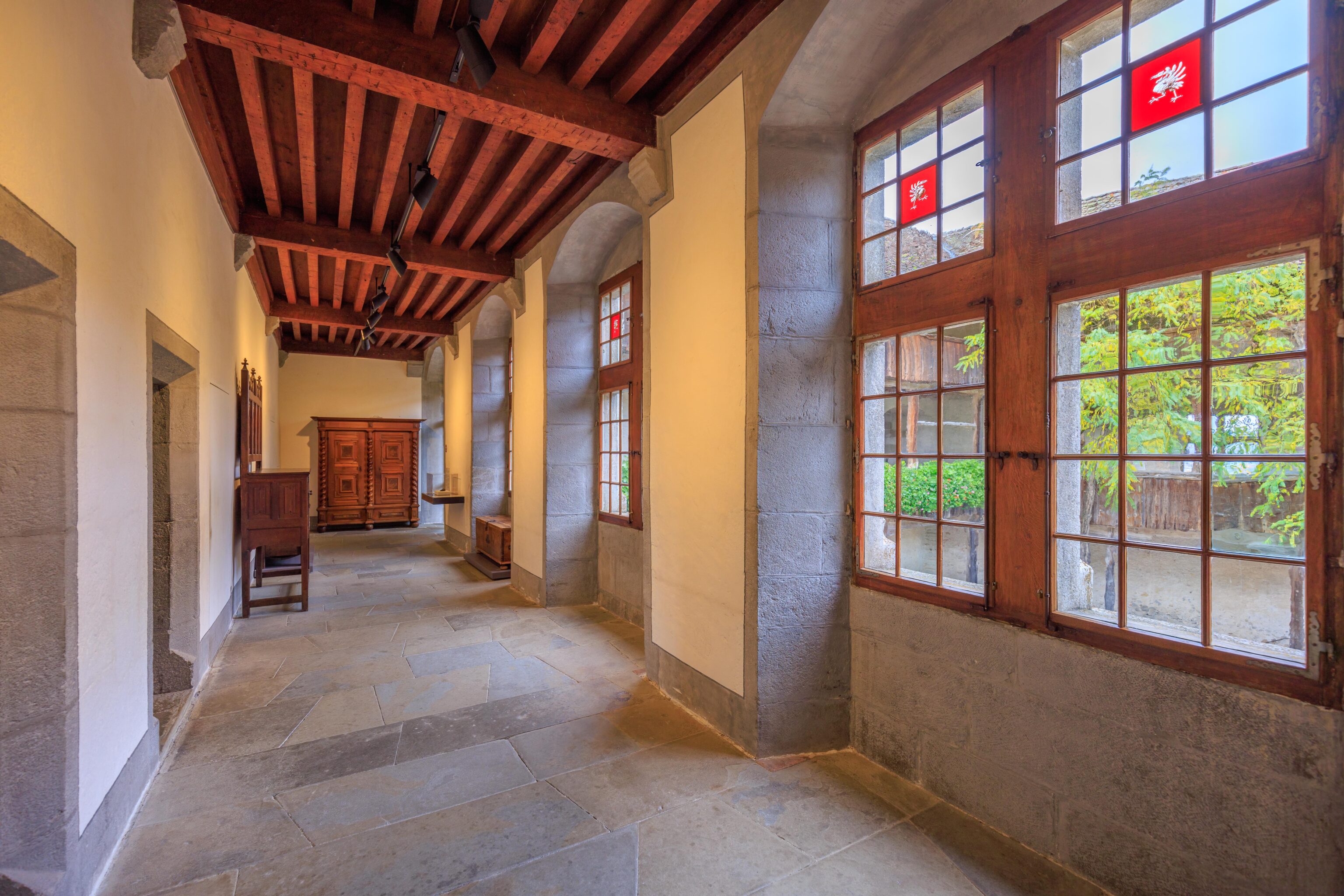
The corridor at the top of the stairs. One side overlooked the courtyard while the other side contained rooms.
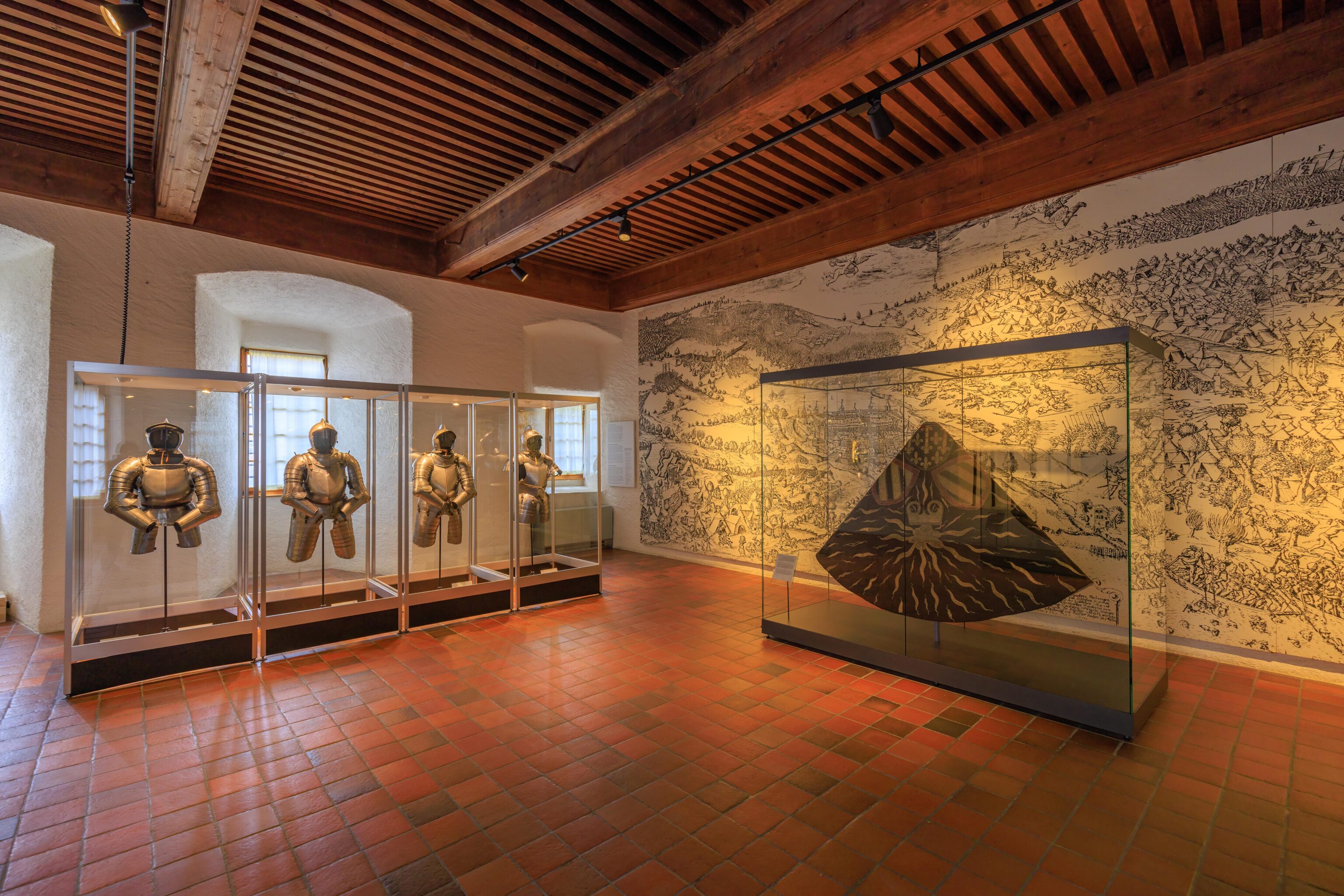
The next room, the Burgundian Room, was something of a little museum. Three capes featured prominently:
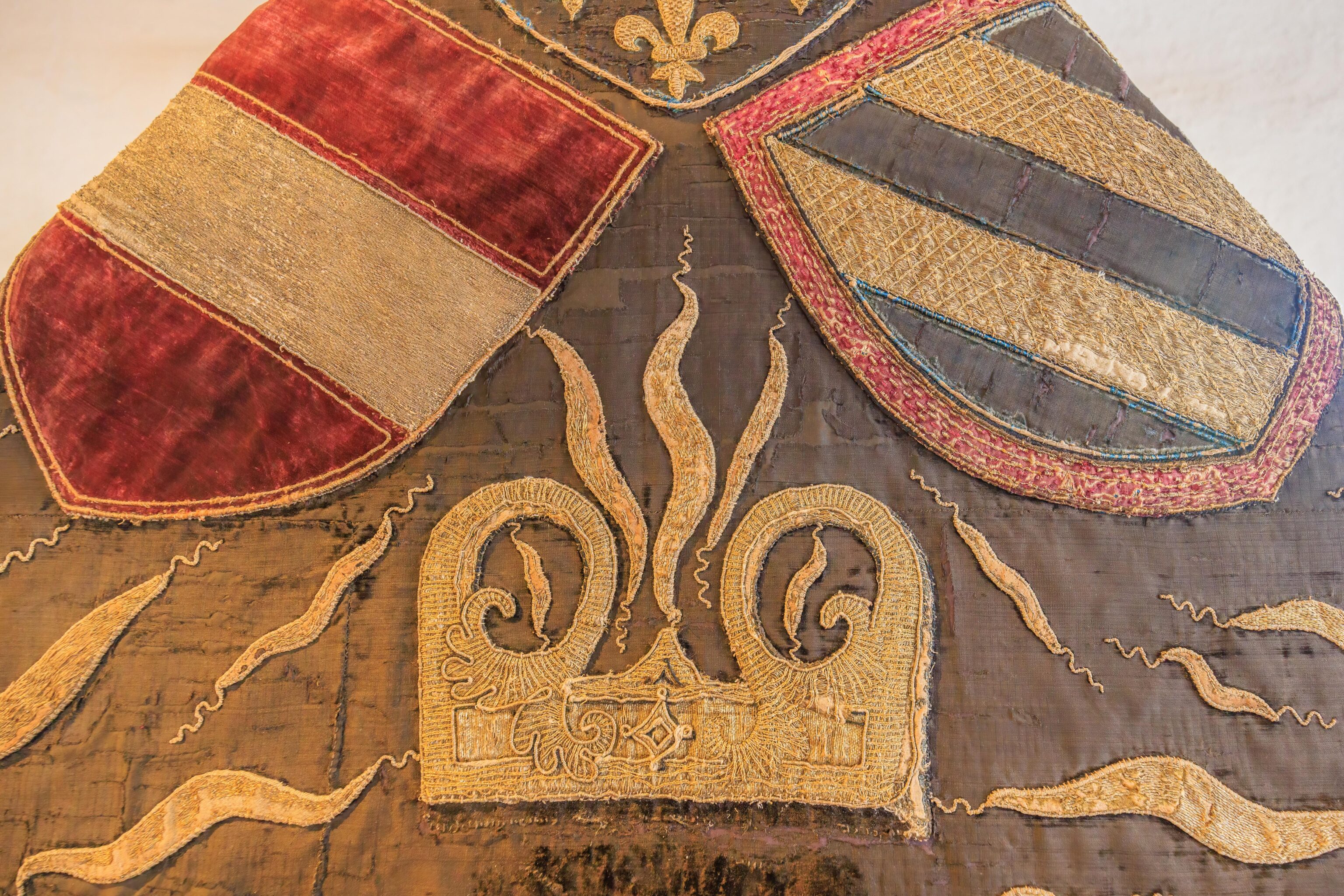
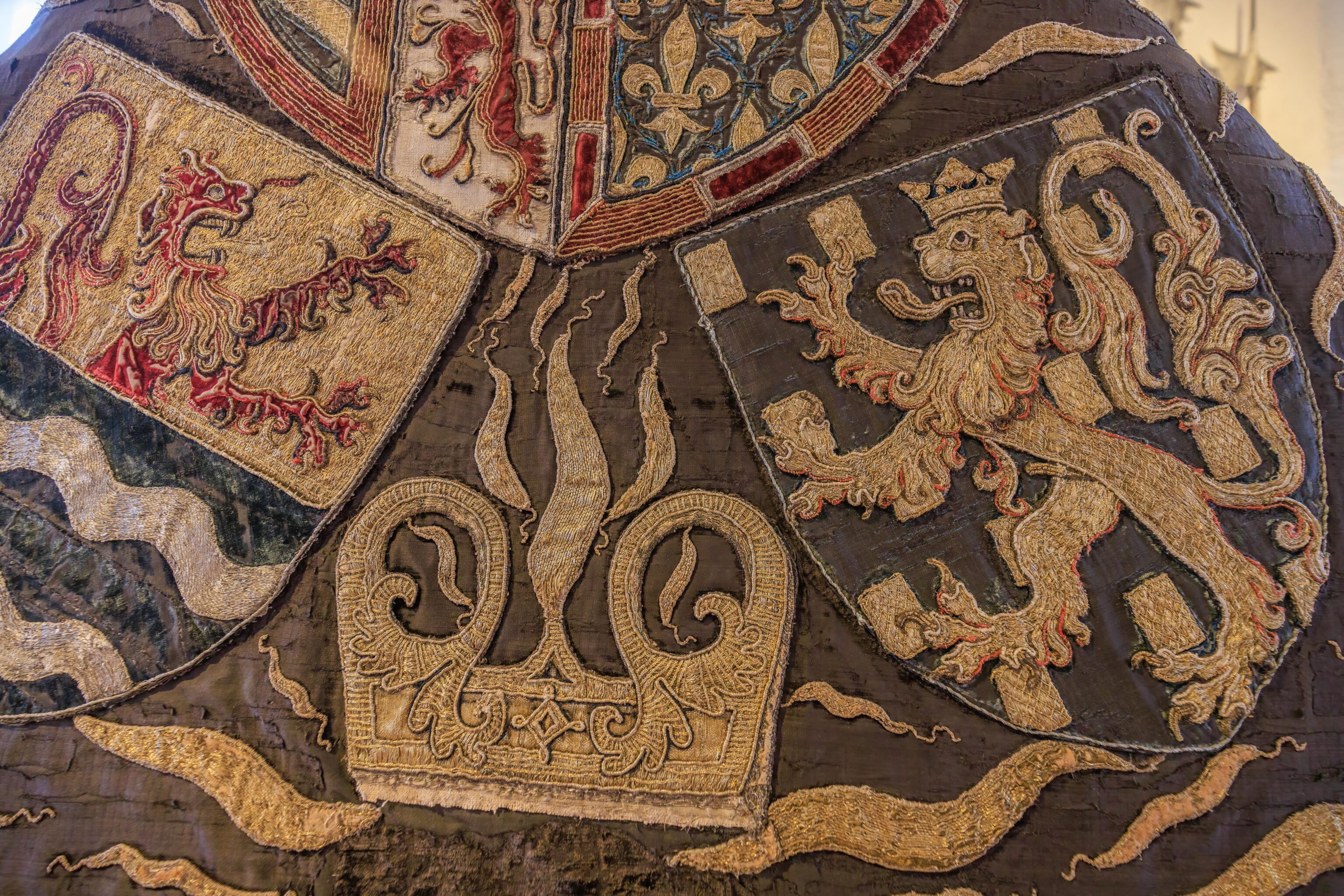
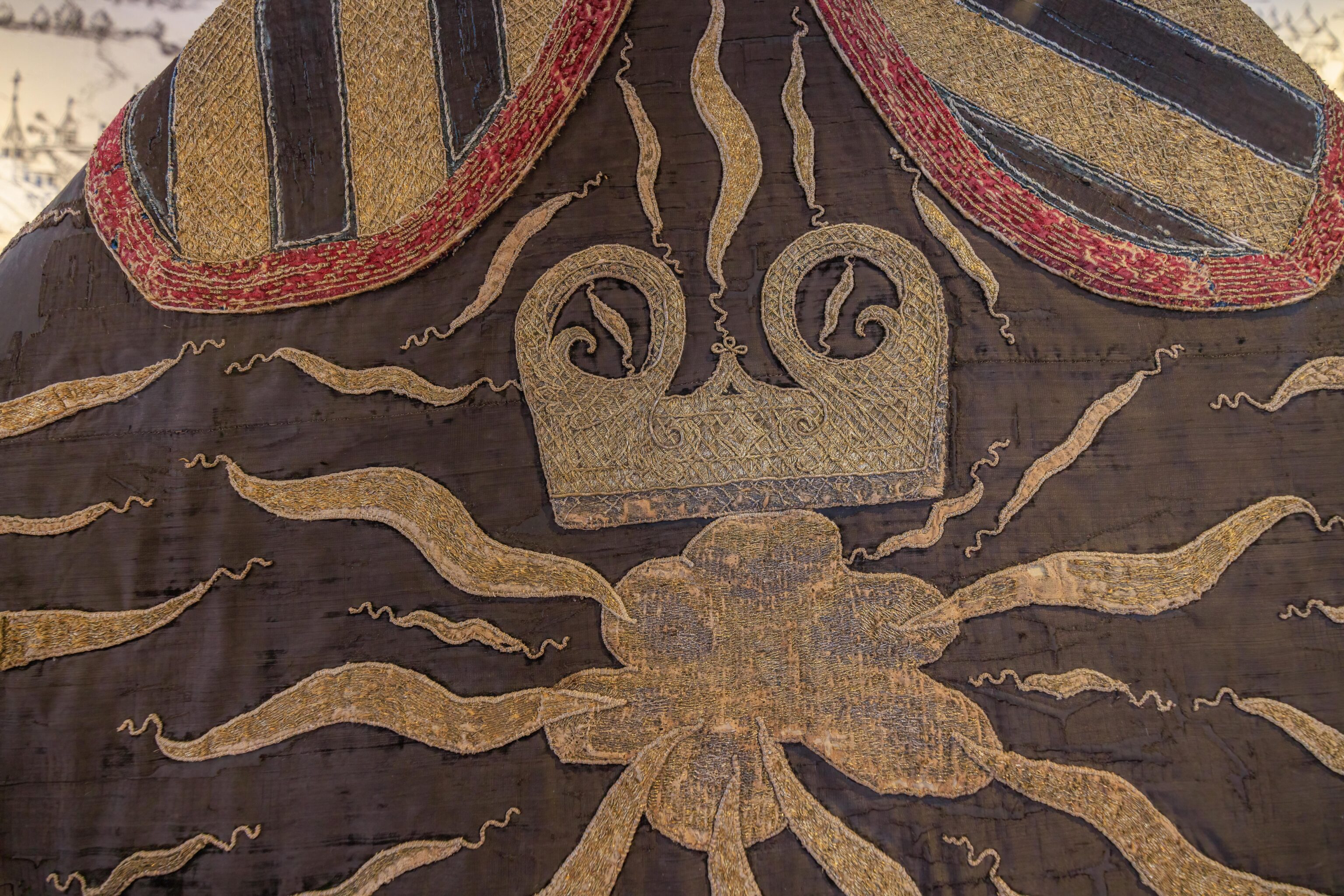
A sign helpfully explains:
Some of the counts distinguish themselves in battle; they include Rudolph the Young and Jean II of Montsalvens during the Hundred Years War, and Louis fighting alongside the Confederates during the Burgundian wars against Charles the Bold (1433-1477). The capes of the Order of the Golden Fleece are part of the booty seized in 1476 during the Battle of Murten by the Confederate troops, with their formidable halberdiers and pikemen. Made of luxurious materials such as black silk velvet and brocades of gold thread, these ceremonial garments bear the blazons of the Duchies of Burgundy, Zeeland and Brabant, but also personal emblems such as the B-shaped flint and flames of Philip the Good (1306-1467), father of Charles, for whom they were made.
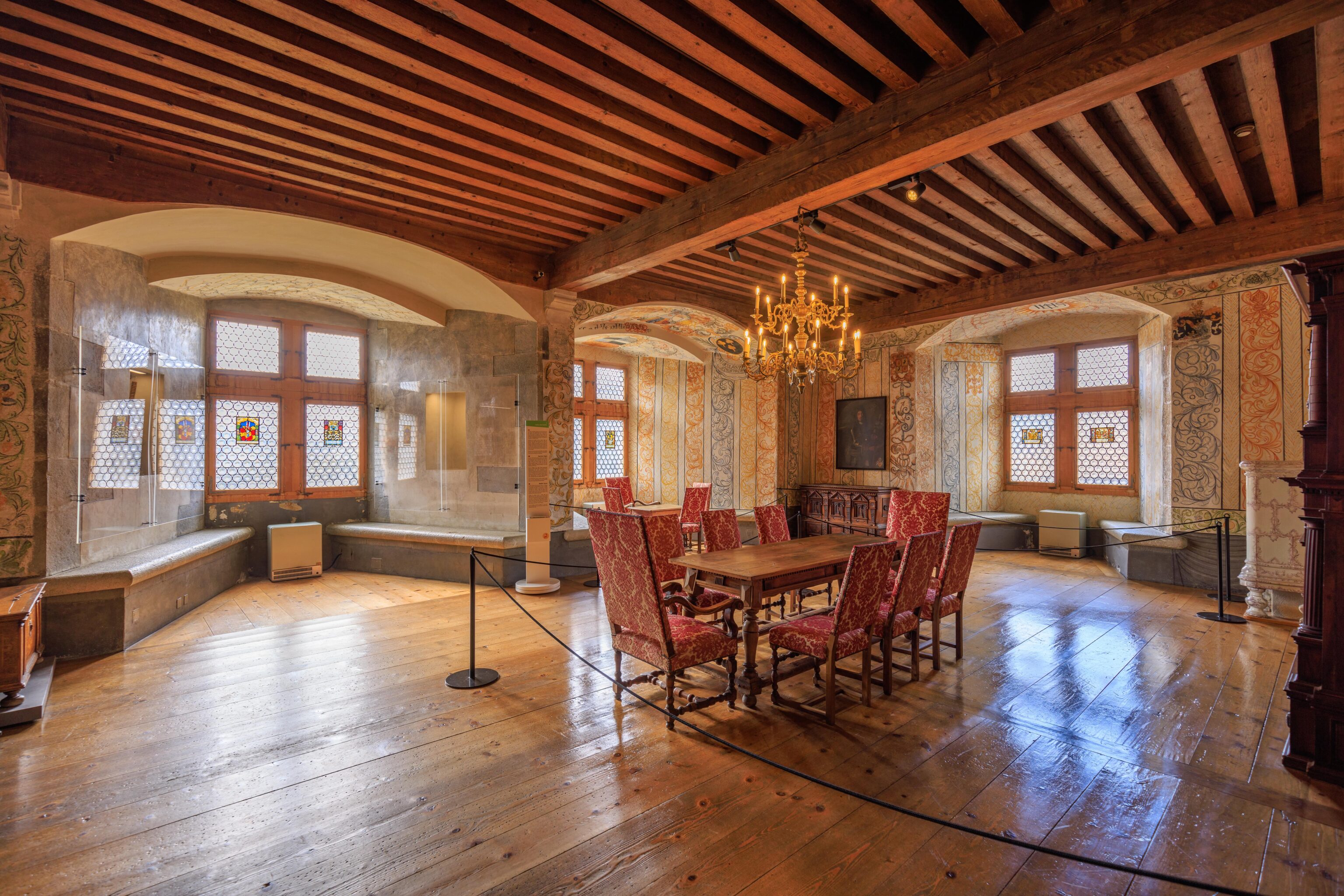
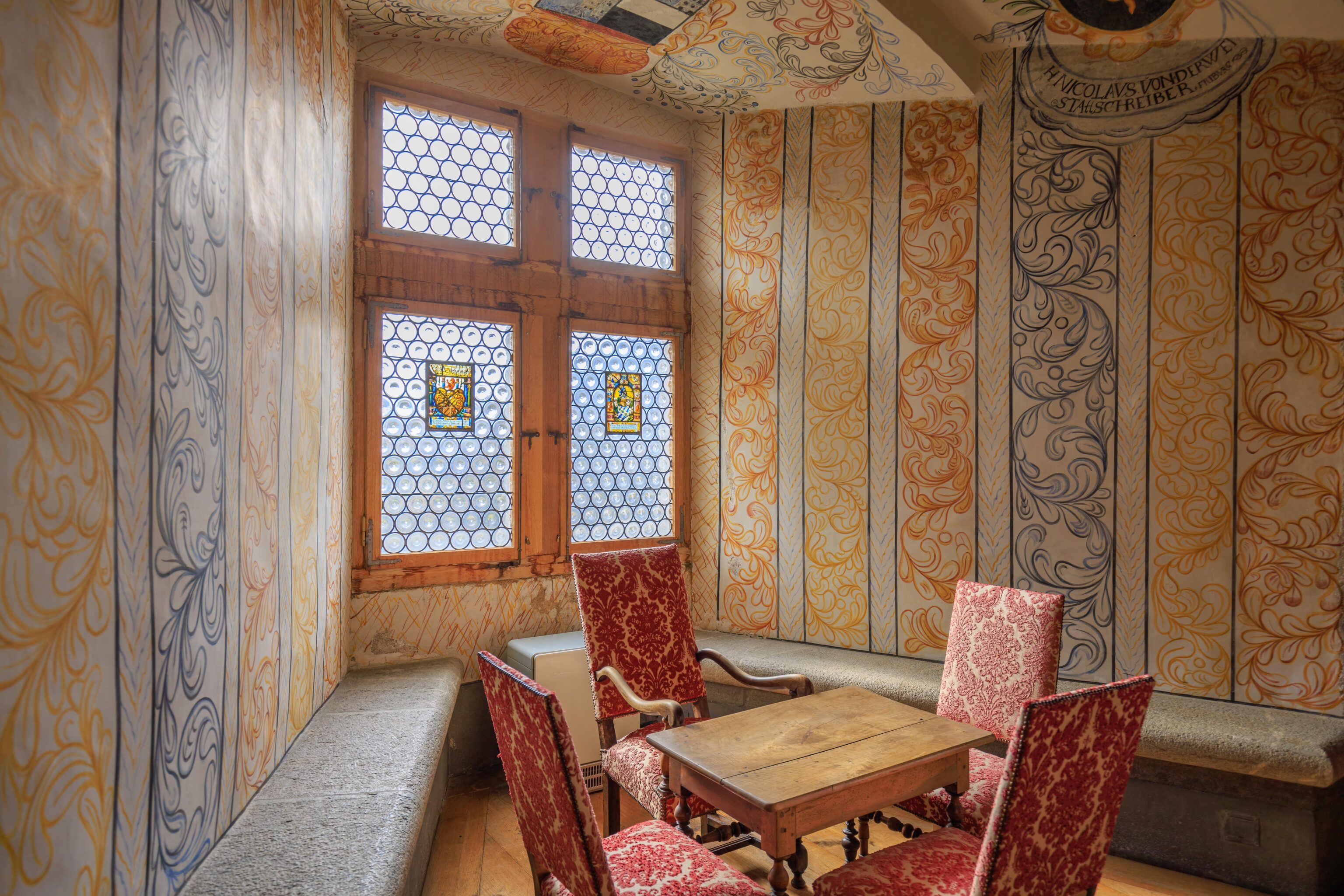
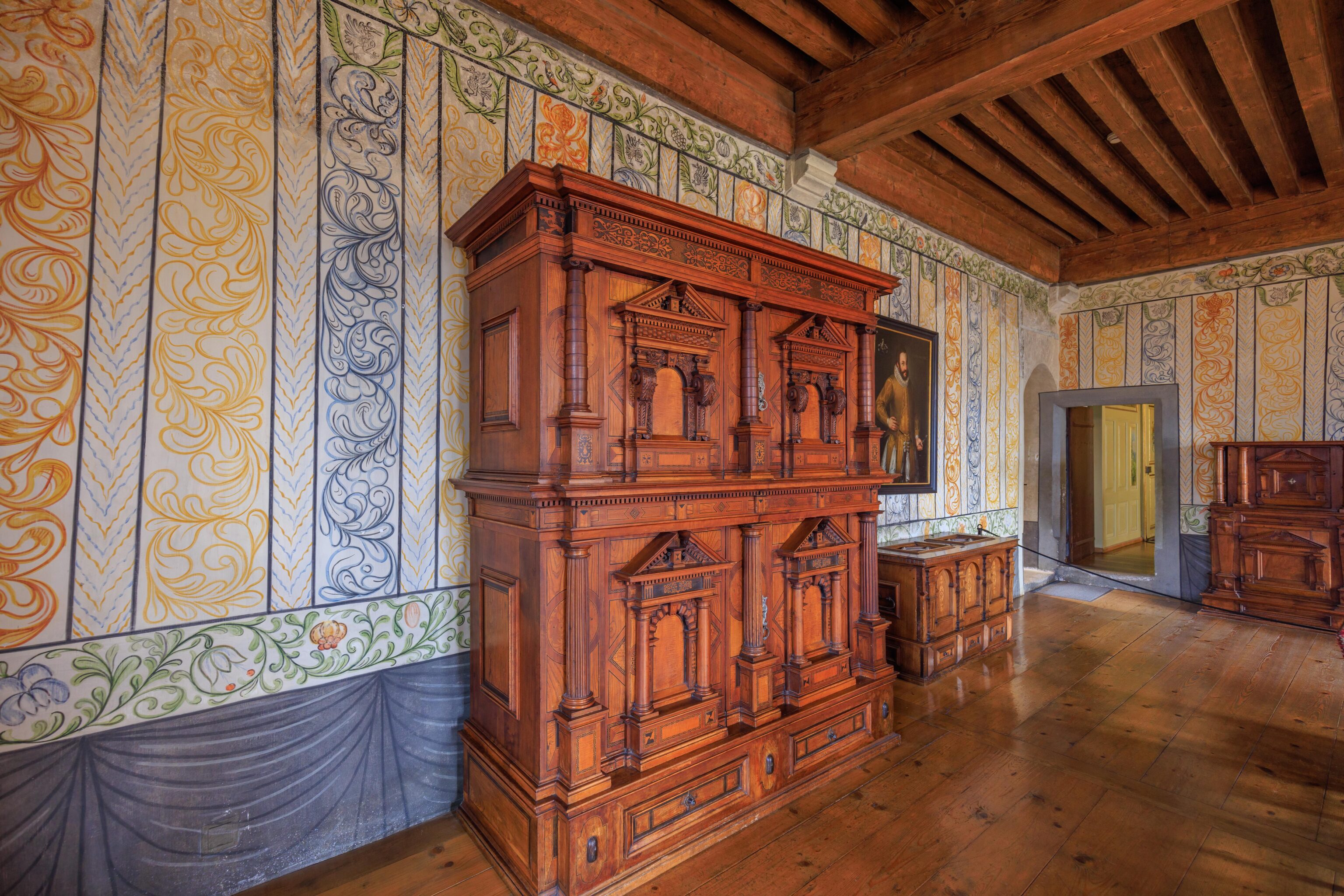
This next room was the Bailiffs’ Room. In the United States, a bailiff is essentially a court police officer. Here, a bailiff seems to be something like an appointed governor who would have ruled over the castle and its surroundings. Once again, there was a helpful sign with English:
In 1554 Gruyère falls into the hands of Fribourg, which sends its representatives, known as bailiffs, to administer the district. A succession of bailiffs appointed for a three- to four-year term occupy the castle from 1555 to 1798. Few objects from the period have survived, with the exception of the heraldic stained-glass inserts in the windows and the stove with ceramic tiles (1767). Created by Master Cuen in 1685-1686, the paintings in this room depict a series of false marble columns on a background of stylised scrolls topped by cranes, a frieze with foliage designs, animals and fruits. Commissioned by bailiff Jean-Jacques-Joseph d'Alt, the decoration features the arms of the City of Fribourg, its treasurer and secretary prominently above the central window. In the opening of the first window, 17th- and 18" century graffiti attest to the presence of those who worked in this room.
The graffiti is protected by the plastic panels visible next to the window on the left.
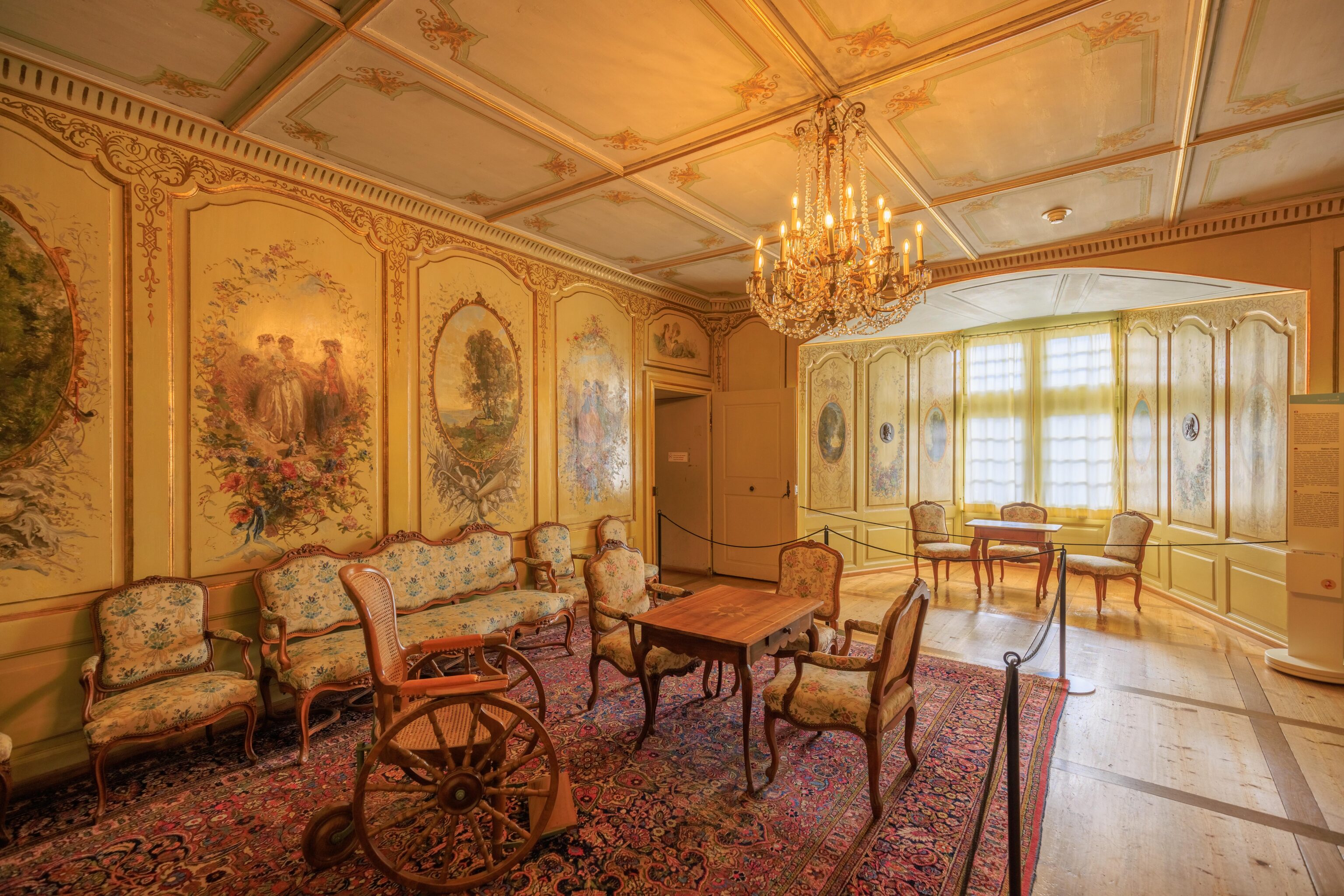
This next room, the Corot Room, has a wheelchair in it. Its appearance dates to the artists’ colony that was here in the 1800s. Once again, a sign explains:
After the prefecture moves from Gruyères to Bulle, the castle is put up for sale by the Canton of Fribourg. The Bovy brothers from Geneva purchase it in 1849 with the aim of turning it into their summer home. One of them, Daniel (1812-1862), an artist who was paralysed following an accident at the Simplon Pass, invites his friends to the castle to assist in its refurbishment. They include the painters Barthélemy Menn (1815-1893) and Jean-Baptiste Camille Corot (1796-1875), who work on the décor of this salon. Corot resides at the castle in June of 1852 and 1857 and paints four landscapes in medallion format on the wood panelling. Each summer, the castle is thronged with artists. As its members marry, have children and so forge ties, the family grows into what they themselves refer to as a "colony".
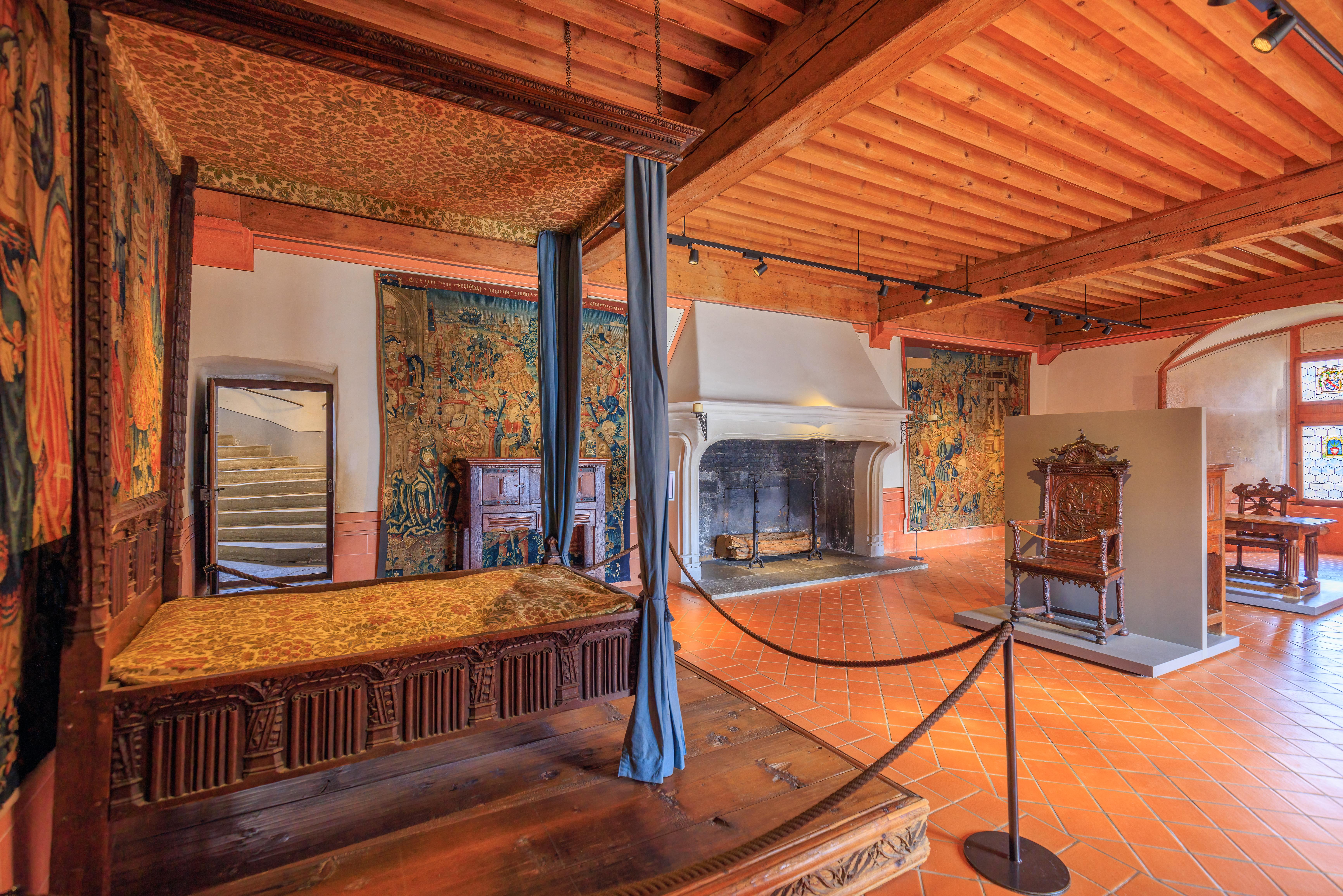
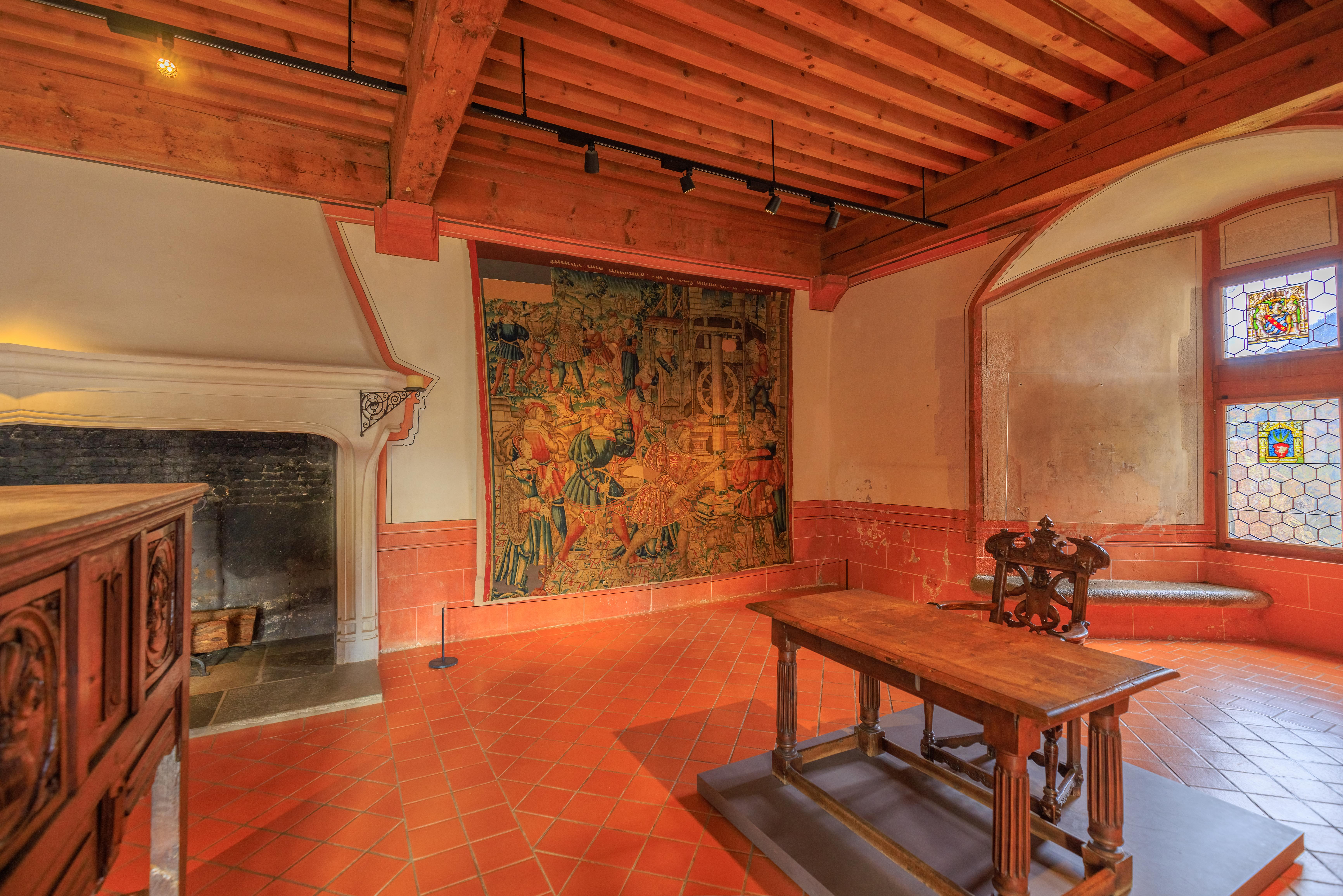
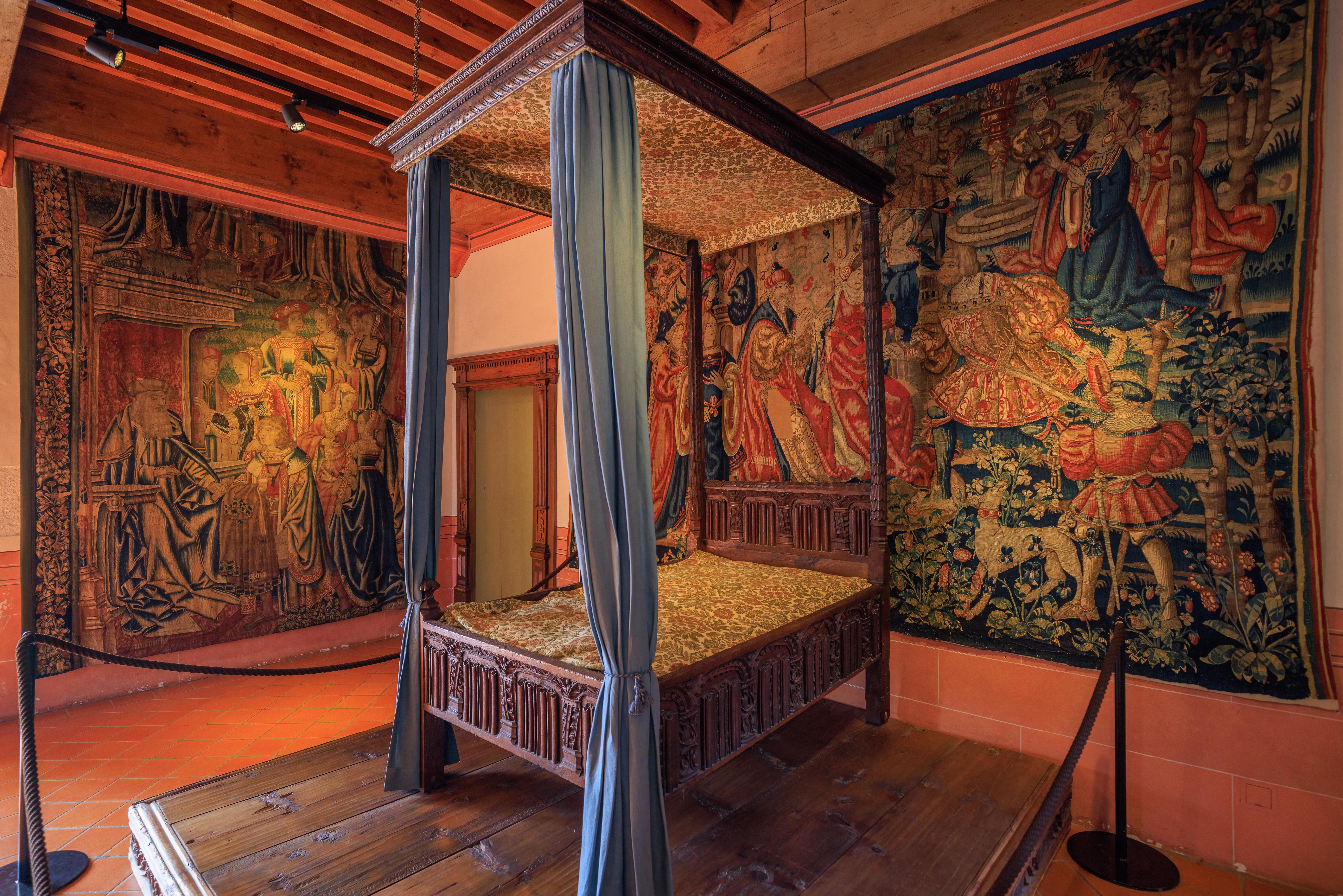
The next room, the Counts’ Room, was decorated with tapestries and contained a bed. A sign explains:
Beginning in 1849, the Bovy family undertakes large-scale work to refurbish the castle and return it to its former splendour under the counts of Gruyère. In keeping with late 19th-century taste and its rediscovery of the Middle Ages, they create "historical rooms": the chambers of the count, countess and La Belle Luce as well as the Knights' Room (the only one that still exists). They fit them out with 16th-century tapestries acquired in Paris and a number of items of antique furniture purchased from dealers in the region, including a bed in the Gothic style (15th century), a dresser bearing the arms of Jean I (the count from 1500 to 1514) and his wife Huguette de Menthon, and a chair that belonged to Jean II (count from 1514 to 1539).
There is supposed to be a Legends’ Room but we seem to have missed it.
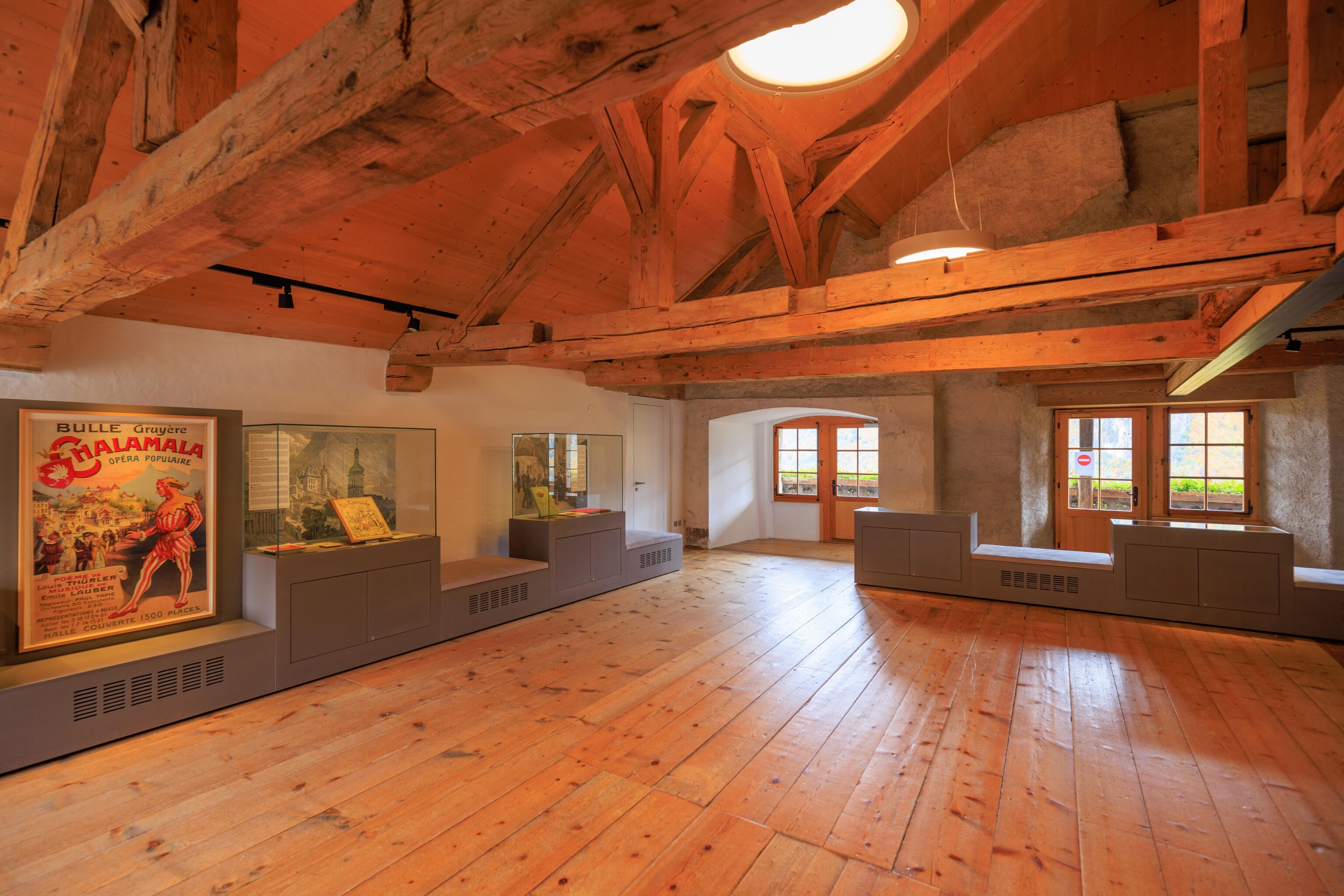
The next room, the Grand Tour Room, had a modern appearance and featured historical travel advertisements and other artifacts related to Switzerland. A sign explains:
In the 16th century, Switzerland is no more than a stop on the Grand Tour undertaken by young British aristocrats. By the late 18th century, however, its image is transformed and the country described by the Romantics as an "Alpine paradise" becomes a destination of choice for European travellers. By the 19th century, literature and travel guides recommend a visit to Gruyères Castle, contributing to the tourism boom and fashioning the imagery that persists to this day. The Bovy and Balland families also contribute to the castle's popularity among sightseers. They help to nurture the medieval myth by creating interiors evocative of the golden age of the counts and opening their doors to passing visitors. Castle-themed stories, guides, postcards and characters, both historical and mythical, cement the legend surrounding the ancient medieval fortress.
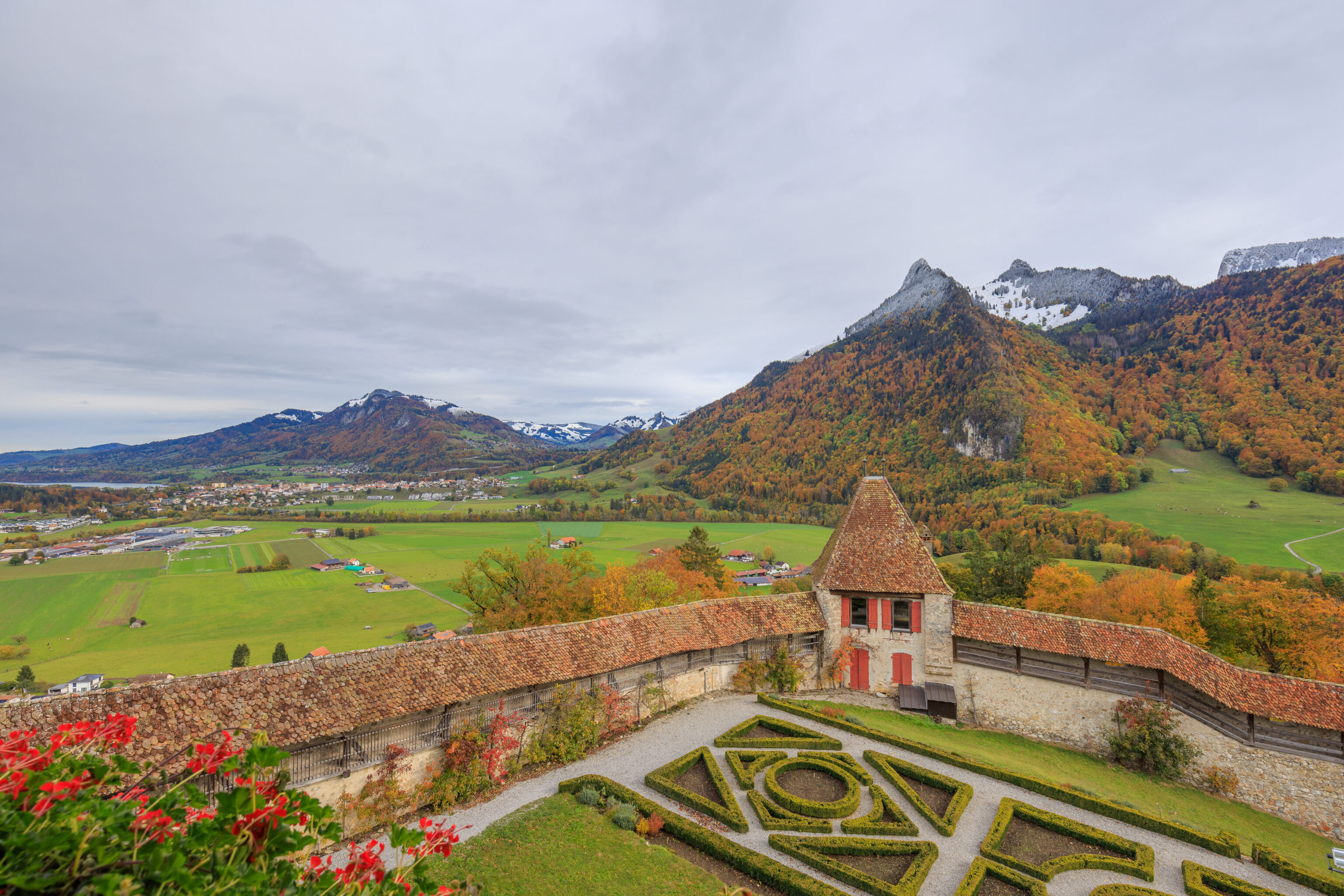
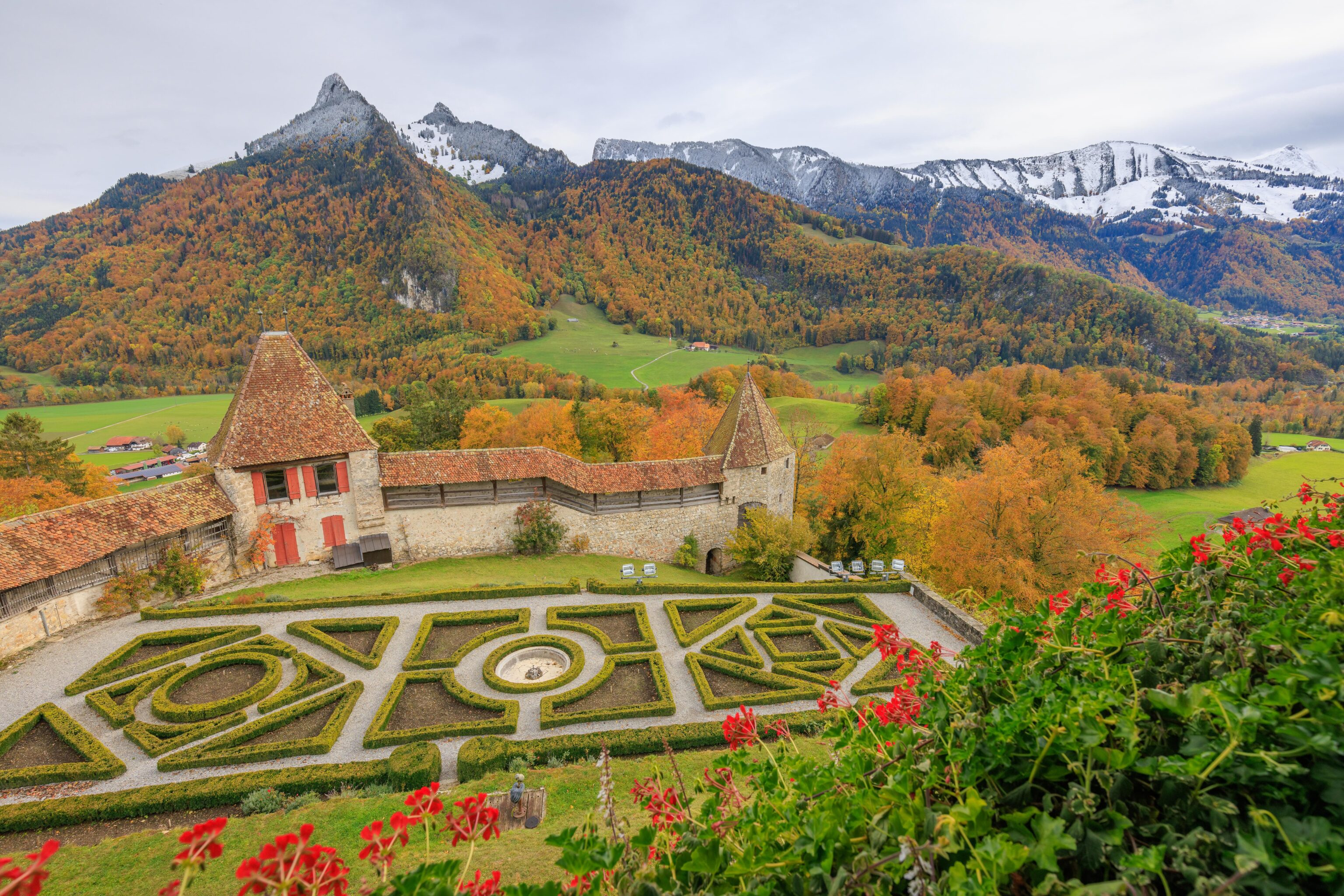
There is a balcony at the rear of the room with a beautiful view of the mountains behind the castle as well as the garden below.
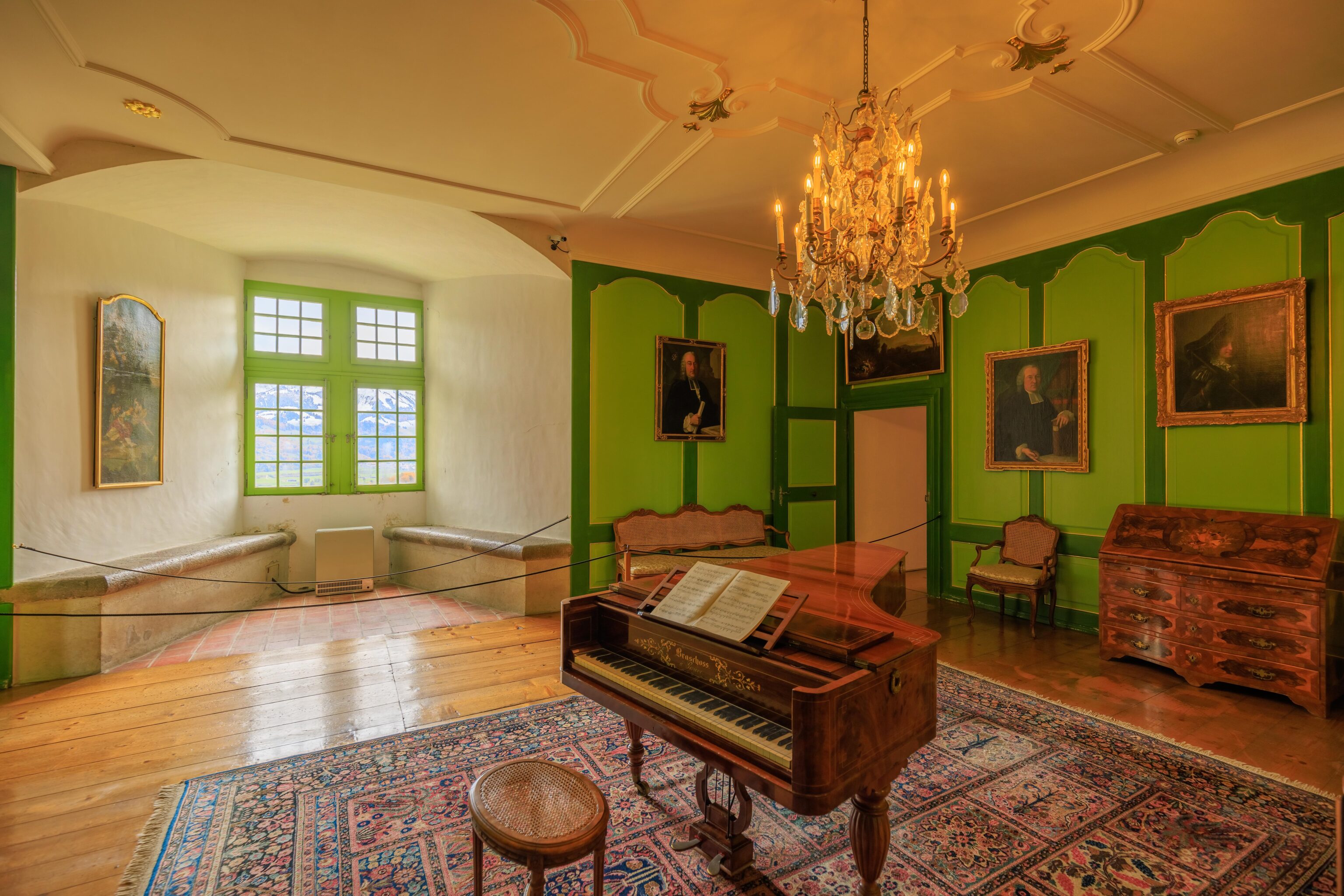
This room, with piano, is the Music Room. Once again, a sign explains:
This room gives a taste of evenings at the castle in the late 19th and early 20th centuries, which are enlivened by singing, performances and dancing, as the Bovy-Balland family gather with their friends during their stays at Gruyères. The castle's records document the daily life of its owners and their guests, who join them in taking walks, creating art and enjoying evening entertainments. While the artistic colony produces a few compositions of its own, it is equally admiring of musicians such as Franz Liszt and Frédéric Chopin, under whom Charles-Samuel Bovy- Lysberg (1821-1873) studies in Paris. The pianoforte now on display in this room was made for Liszt in around 1835 by Braschoss in Geneva.
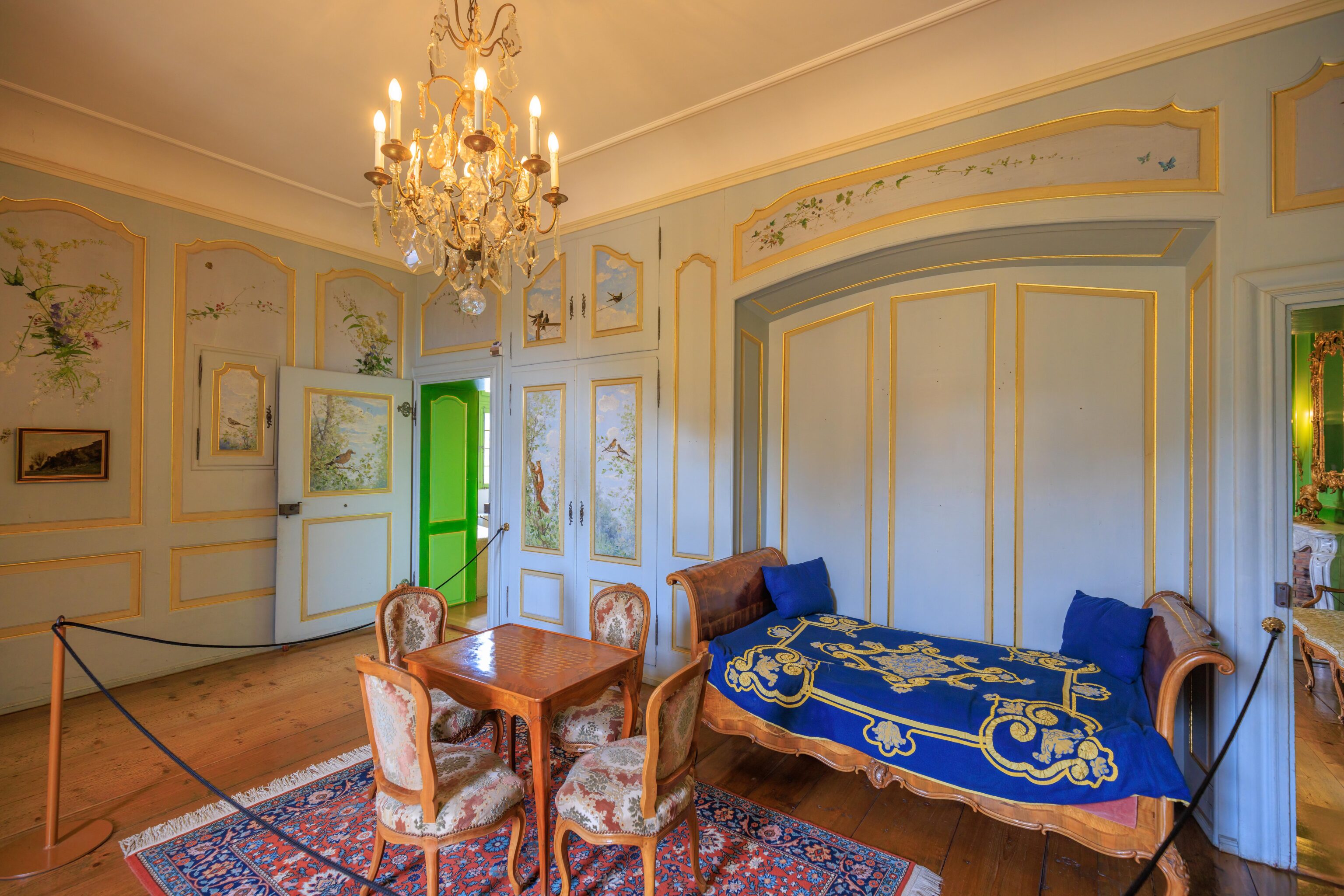
This subsequent room, the Furet Room, had various paintings of wildlife. A sign explains:
The Gruyère region is rich in woodlands and picturesque motifs. The members of the artistic colony are receptive to the charms of nature and routinely set up their easels in the open air to capture the pastoral scenes. The paintings on the wood panelling in this room are created in around 1875 by Francis Furet (1842-1919) and Jules Crosnier (1843-1917), members of the second generation of artists to frequent the Gruyères colony. With their portrayals of gentle and charming life at Gruyères, they evoke an experience encapsulated by the motto "All's well that ends well" on the wall to the left of the mirror.
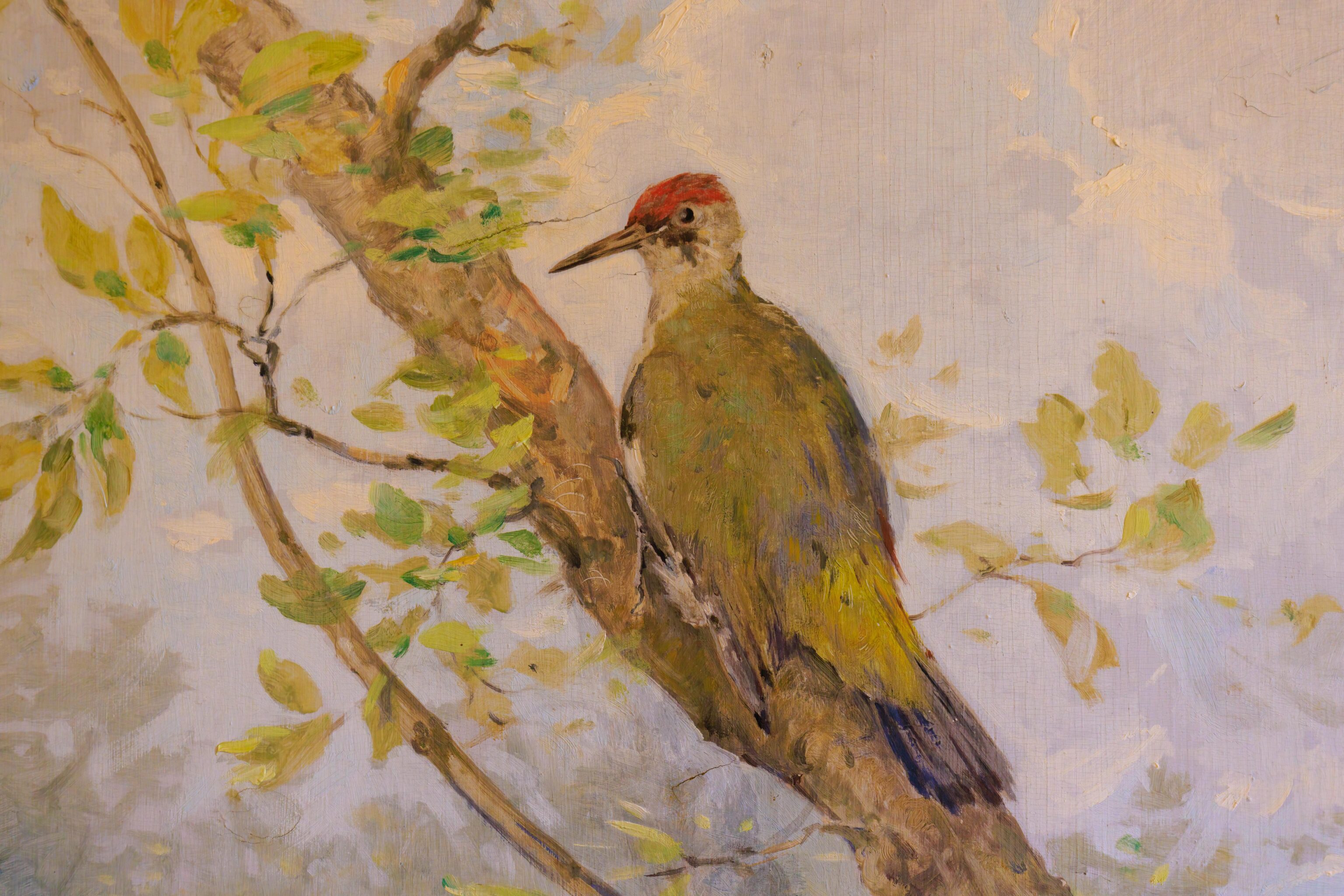
Clearly a woodpecker! Assuming it is local, perhaps a Eurasian Green Woodpecker?
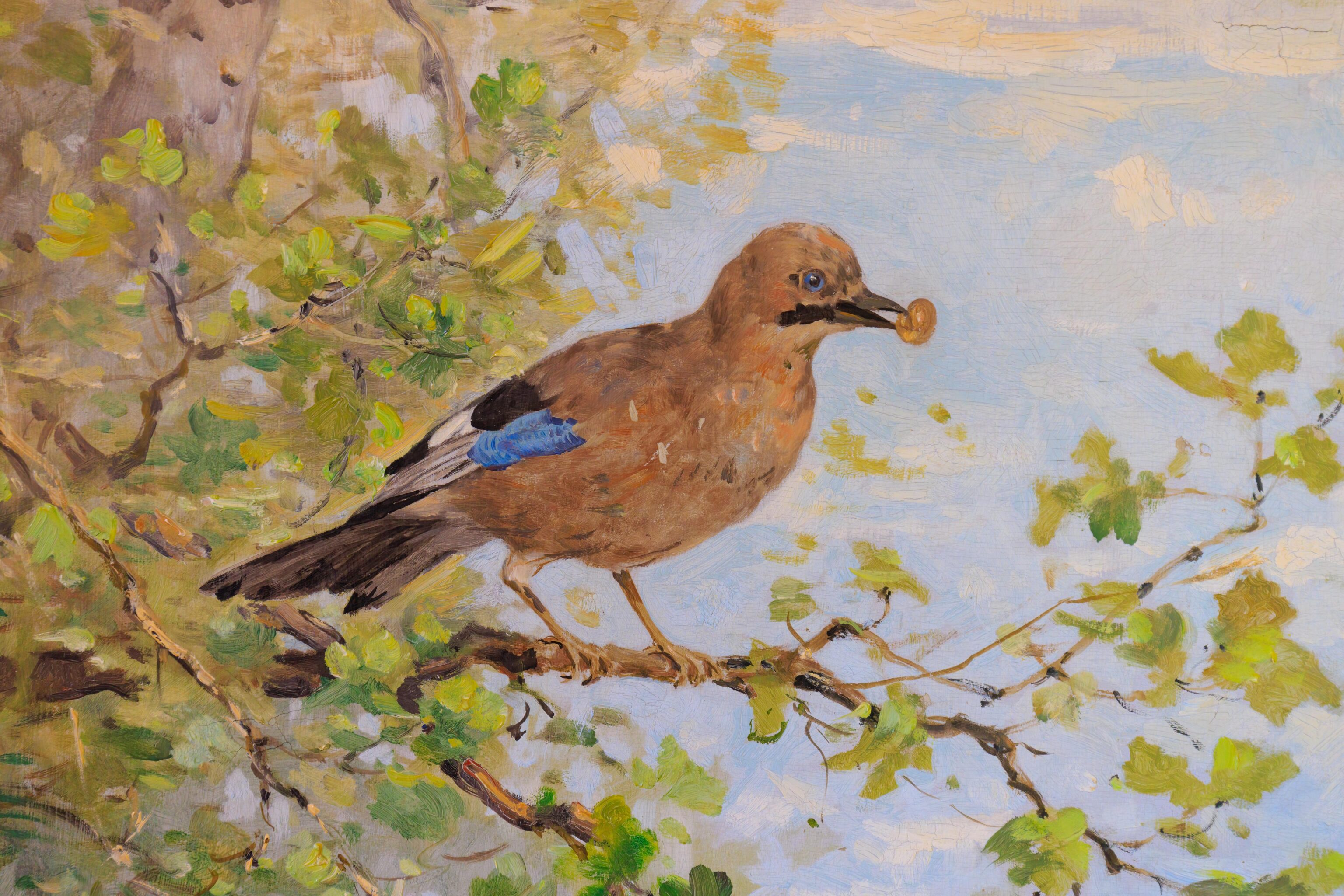
We thought this one had a bit of a resemblance to a male Yellow-Shafted Northern Flicker, though probably mostly because of the “mustache” as the beak is way too short and it otherwise doesn’t look right at all! It is probably a Eurasian Jay, particularly due to the blue patch on the wing.
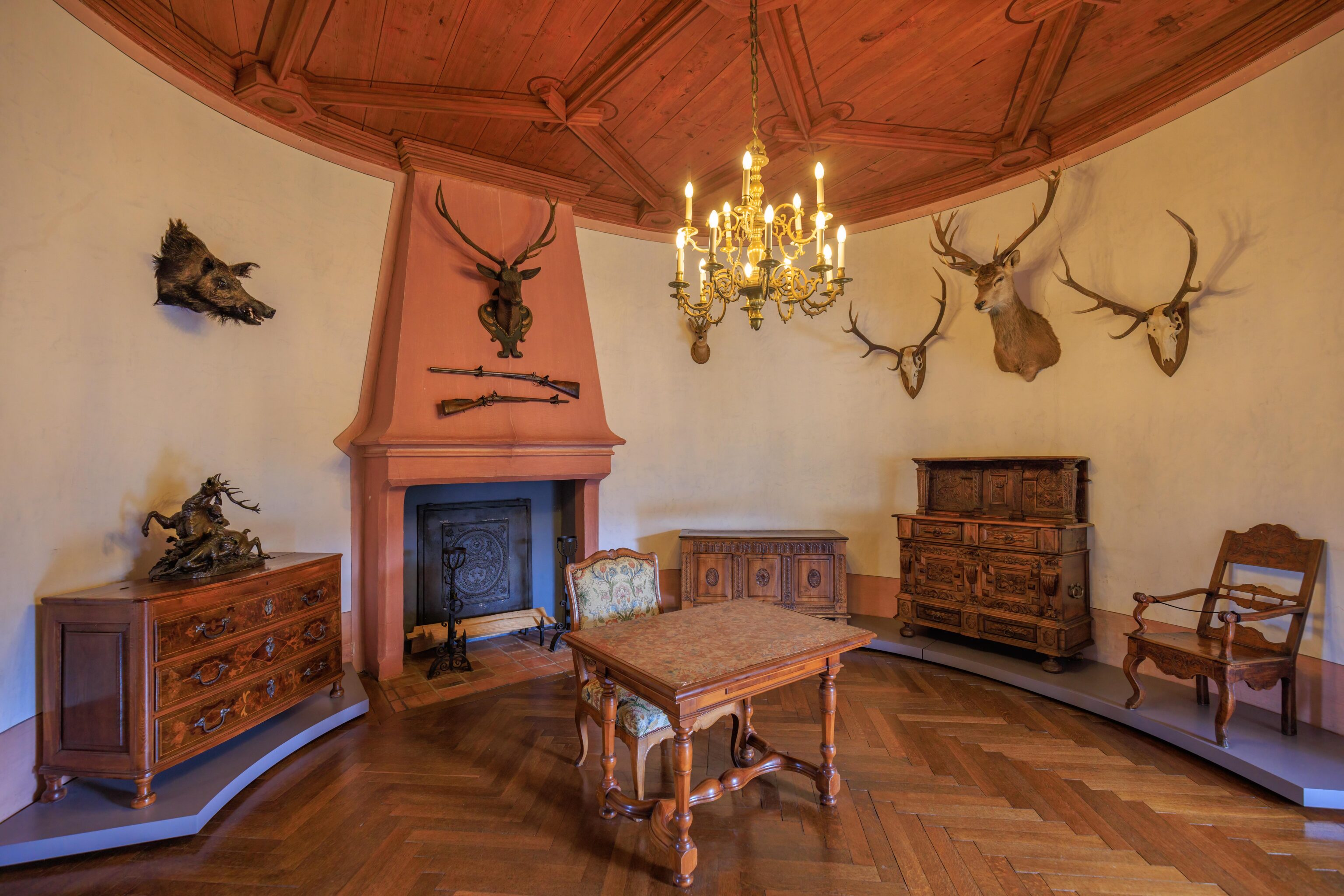
Another room with an animal theme, though this is the Hunting Room. Once again, a sign explains:
Tradition preserves the memory of pavilions and hunting lodges owned the counts of Gruyère; one of these, now demolished, stood in the village of Charmey. For the lord of the manor, hunting is both a sporting activity designed to promote physical fitness for combat and an aristocratic pursuit governed by elaborate codes. This room and its trophies recall the hunt, which was undoubtedly practised by the counts of Gruyère - and the bailiffs who succeeded them in wooded terrain very - much suited to it.
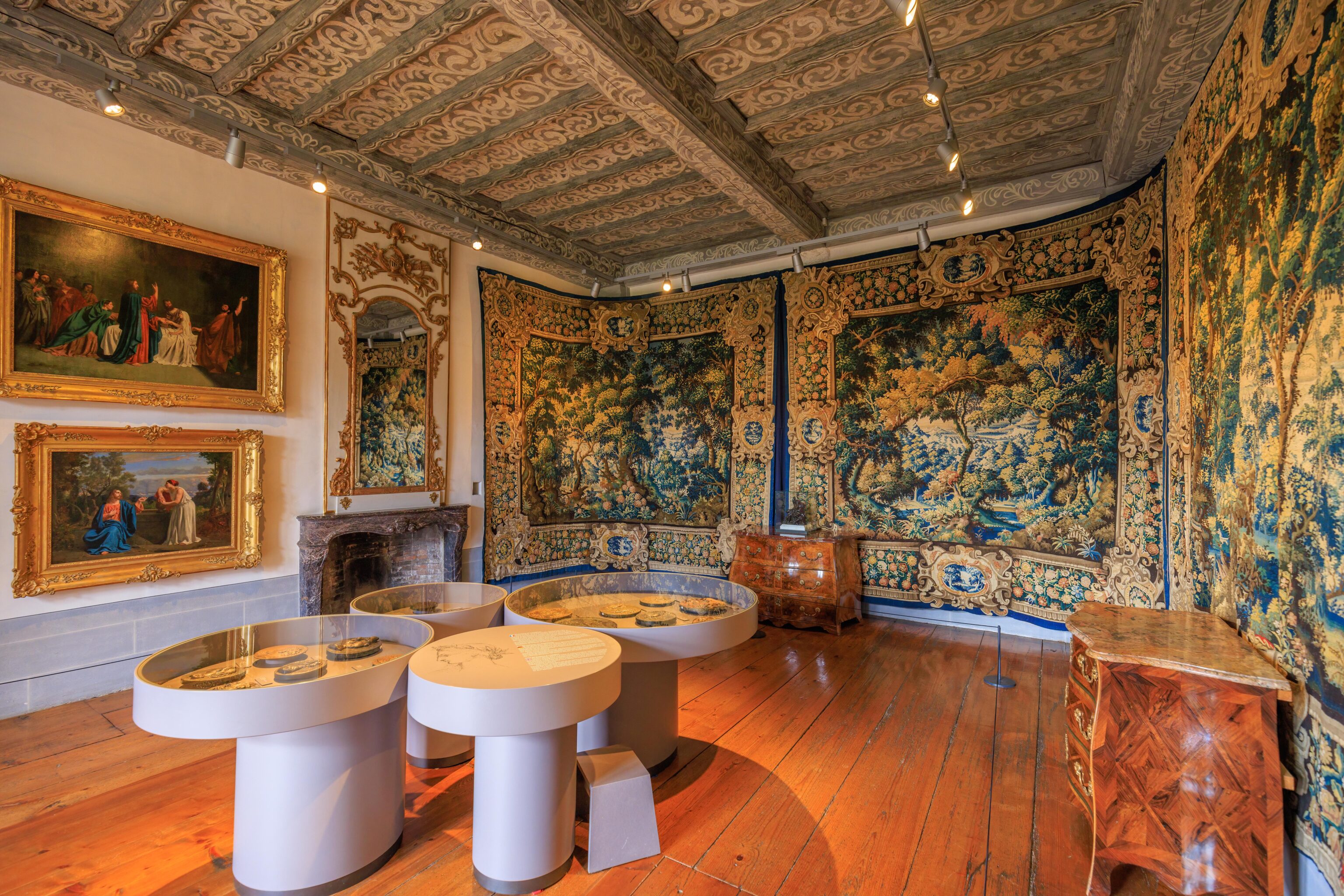
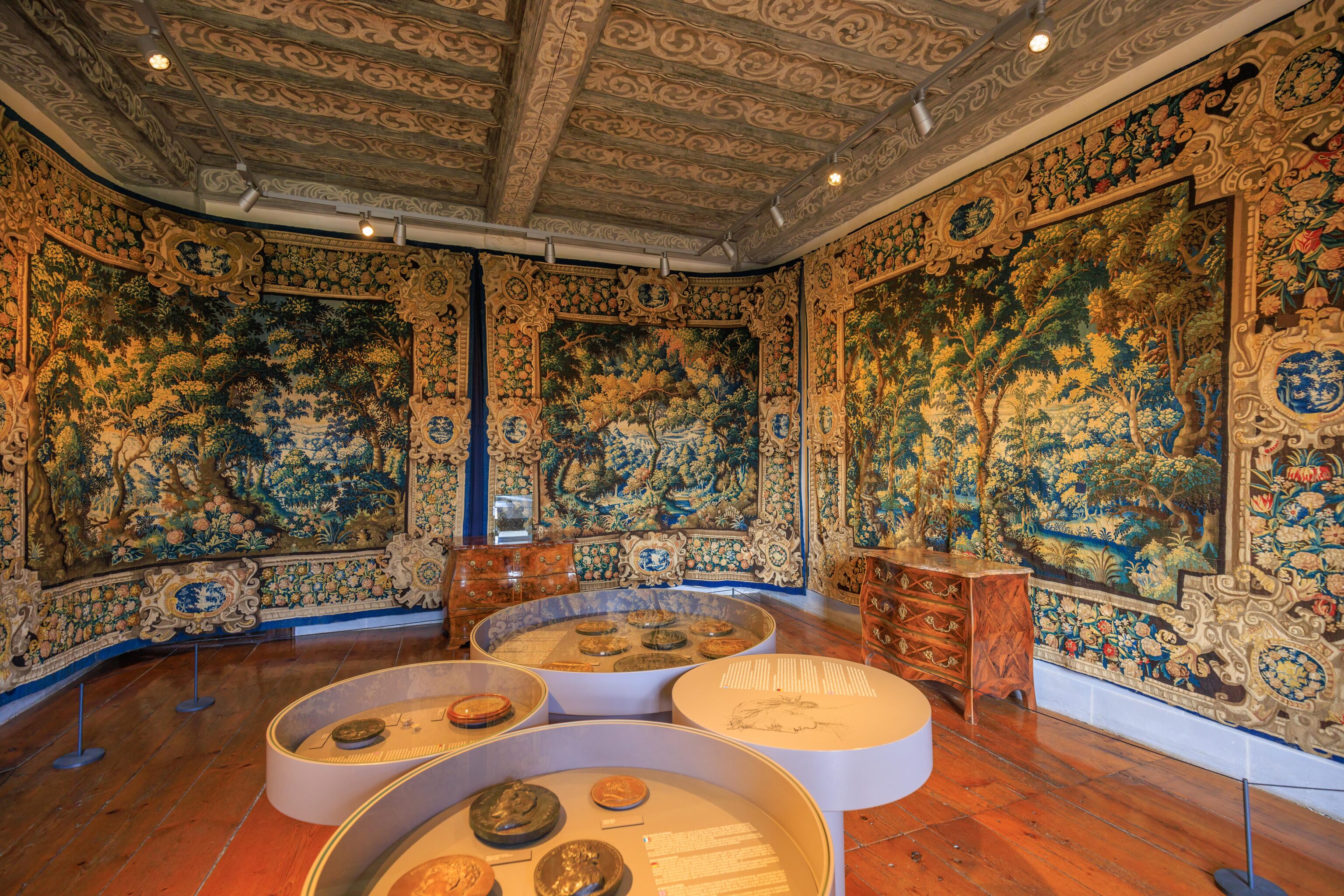
This room had huge tapestries hanging on the wall along with a very detailed ceiling. This is the Medallion Room, as a sign explains:
The Bovy family counts a number of artists among its members, including the sculptors and medal-makers Antoine (1795-1877) and his nephew Hugues (1841-1903). The former is especially known for engraving the famous figure of Helvetia which still appears on Swiss coins. Active in the late 19th century, they both created a large number of commemorative medals and portraits in medallion format. The room, with its ceiling painted during the age of the bailiffs, houses paintings from Daniel Bovy's time in Paris, when he was a pupil of the celebrated neoclassical painter Jean-Auguste- Dominique Ingres (1780-1867). A set of three 17th-century Flemish foliage tapestries known as "verdures" adorn the walls. A popular way of shielding houses against the cold, such textiles were also used to advertise the prestige and wealth of their owners.
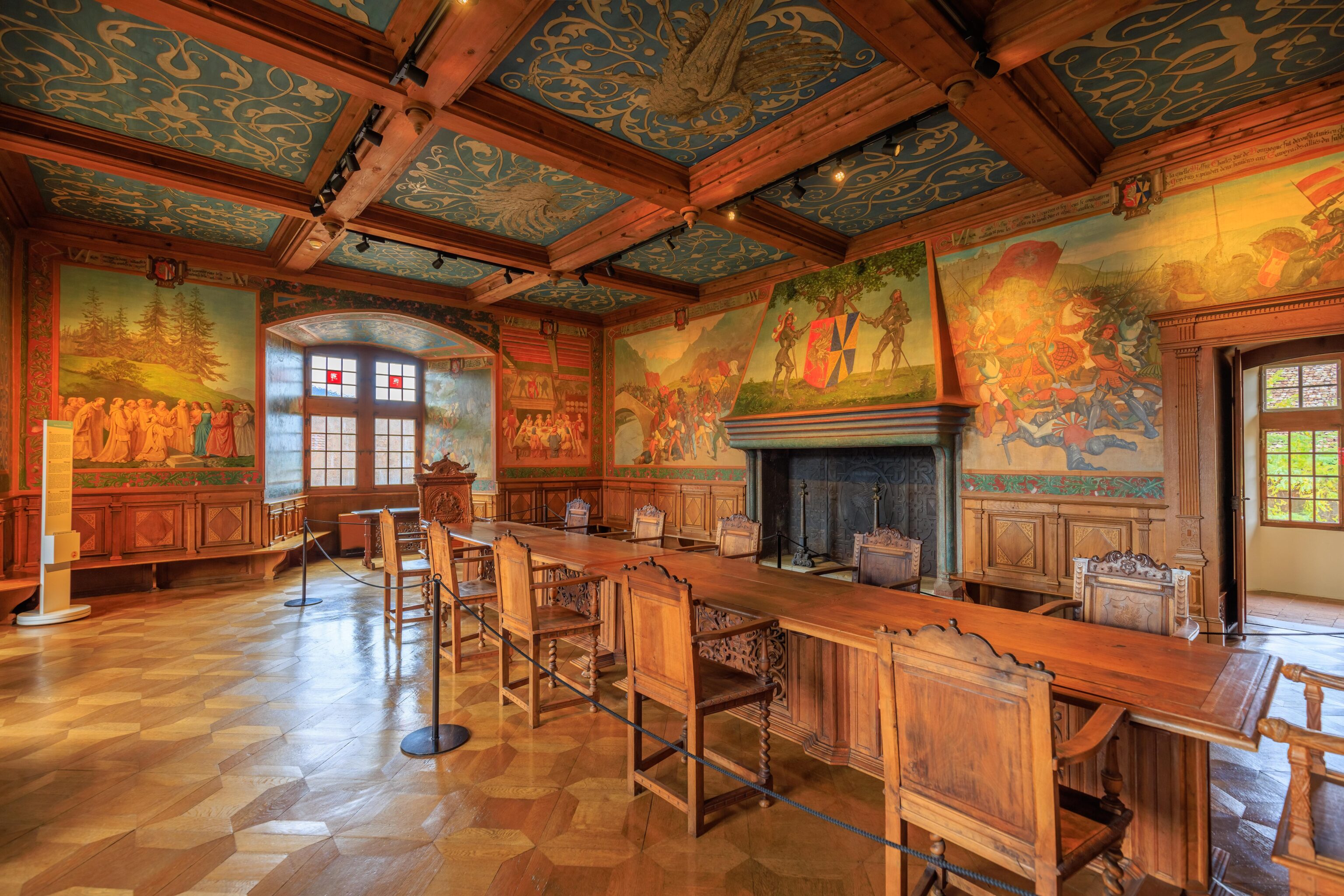
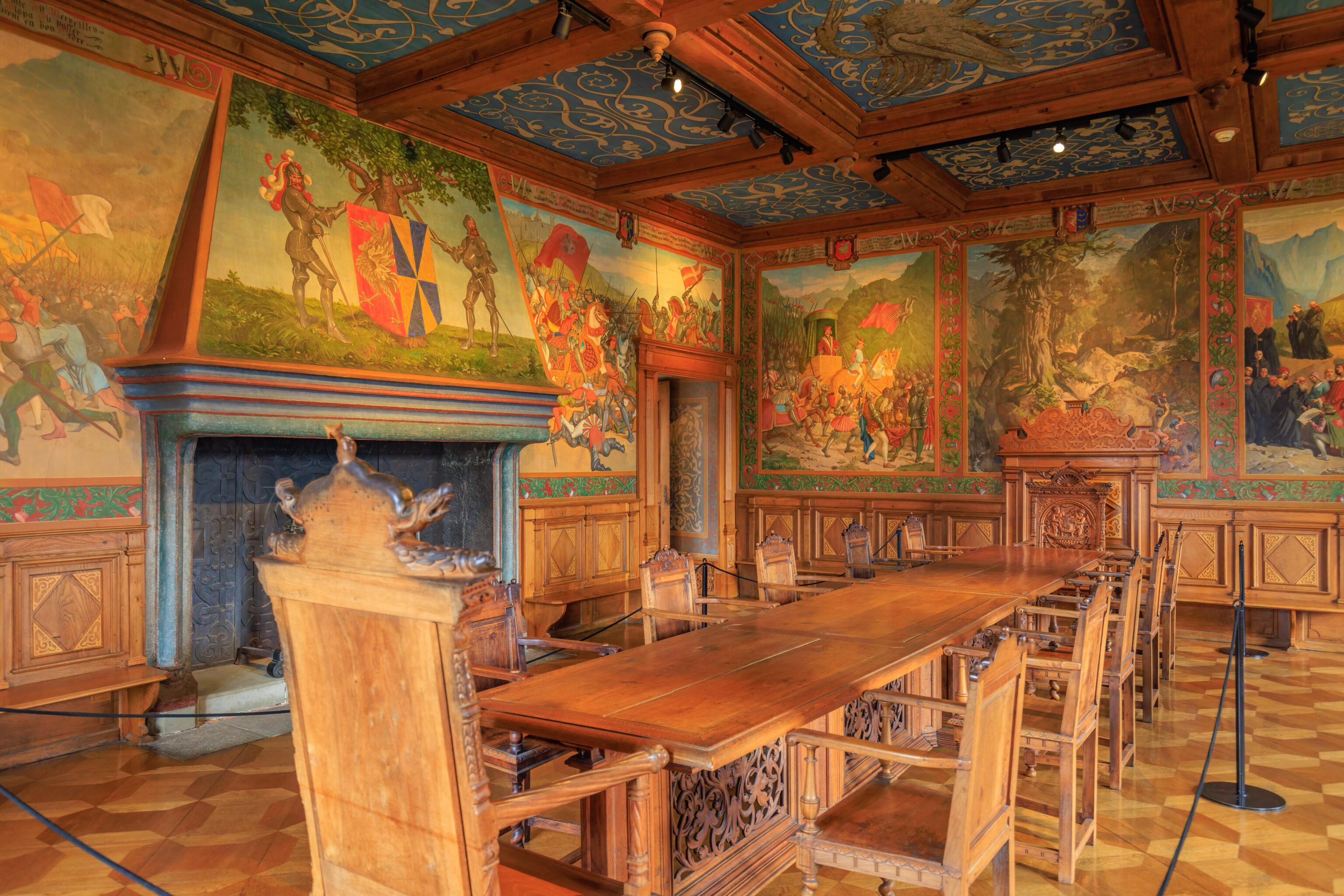
This next room, the Knights’ Room, is also well decorated with paintings on every wall. A sign explains:
In 1850, Daniel Bovy (1812-1862) decides to devote this room to the memory of the counts of Gruyère. He has the walls and paintings from the bailiffs' period covered over; coats of arms revealed during the restoration can be seen in the embrasure of the first window. For the décor the artist draws on the history of Gruyère, about which little has been written at this stage, and on regional legends. He devises a cycle recounting the heroic deeds of the counts, from the mythological foundation by Gruérius I to the Battle of Murten, which was viewed at the time as the dynasty's golden age. The paintings are executed by Henri Baron, Barthélemy Menn and his students; they are not completed until after Daniel Bovy's death in 1862.
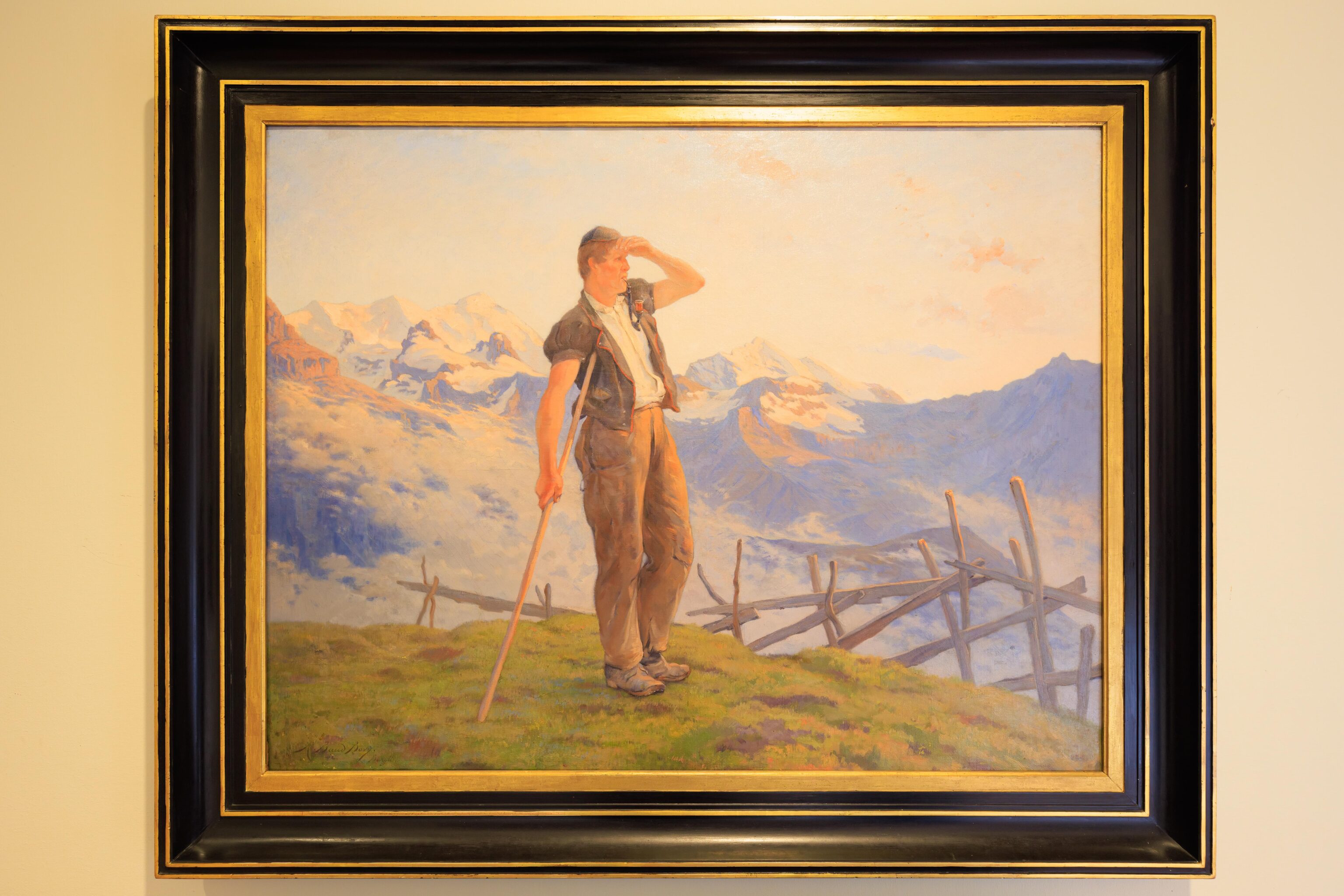
A painting of a shepherd by Auguste Baud-Bovy in the Baud-Bovy Gallery. A sign explains this room:
Auguste Baud (1848-1899), a young painter from Geneva, enters Gruyères Castle in the footsteps of Barthélemy Menn, his teacher from 1862 to 1868. Invited to work on the décor of the castle rooms alongside established members of the artists' colony, he stays there regularly with the "Emules", a group of young artists that also includes Francis Furet (1842-1919). In 1868 he marries Zoé Bovy (1839-1917), Daniel's niece, and begins signing his paintings "Baud- Bovy". Auguste is one of the second generation of the artists' colony to absorb the teachings of Jean-Baptiste Camille Corot and Barthélemy Menn during the daily encounters among the steady stream of painters, musicians and writers passing through the castle.
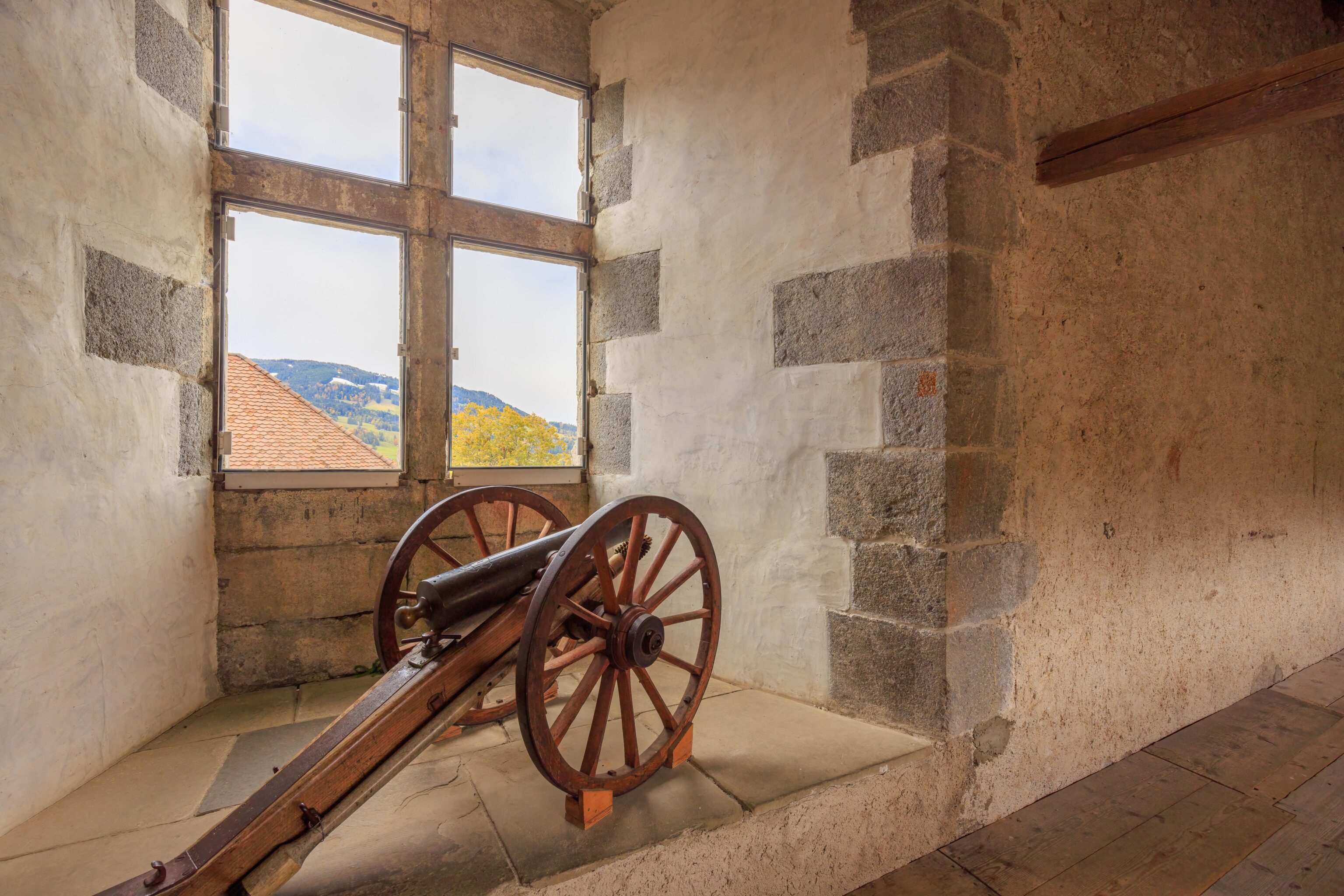
An odd place to put a cannon!
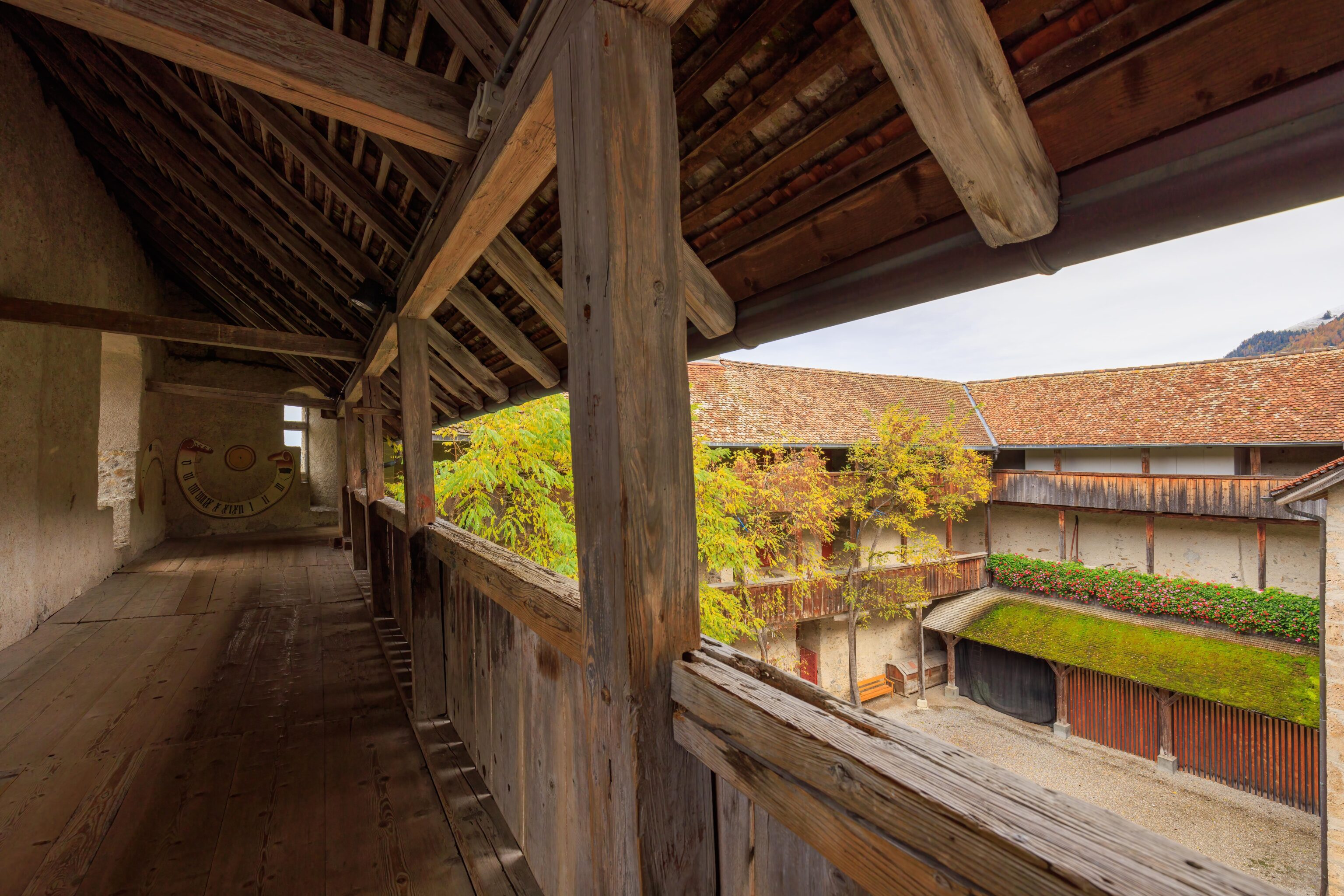
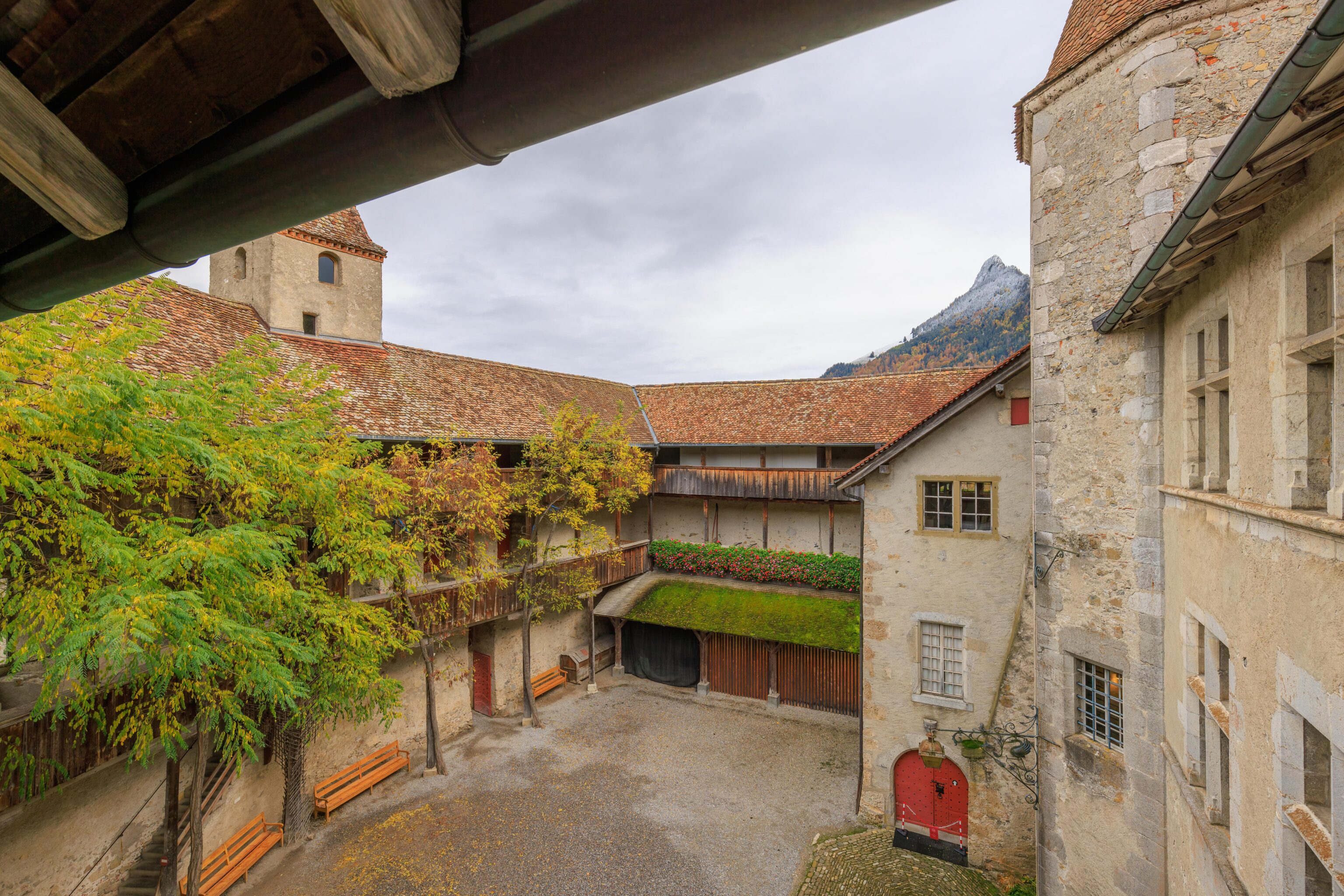
A gallery overlooks the courtyard. In this context, a gallery is described by Oxford Languages as, “a long room or passage, typically one that is partly open at the side to form a portico or colonnade.” Of course, there is a sign:
Shortly after arriving at the castle, the bailiffs of Fribourg embark on a major programme of maintenance work. In particular, they order the construction of the wooden galleries in 1586-1587, probably to replace older galleries that had fallen into disrepair. It is not known whether a tiled roof was added immediately, but it is certain that the new covering rendered unusable the sundials painted with the arms of Fribourg in 1559. The original purpose of the 15th-century tower is unknown; some believe it housed latrines, but it is unlikely that waste would have been allowed to fall from the tower right in front of the castle's chapel. Now known as the Prisoner's Tower, it contains the pictures on illuminated panels by the British artist Patrick Woodroffe (1940-2014).
The Prisoner’s Tower was shown on the castle’s map but was closed today.
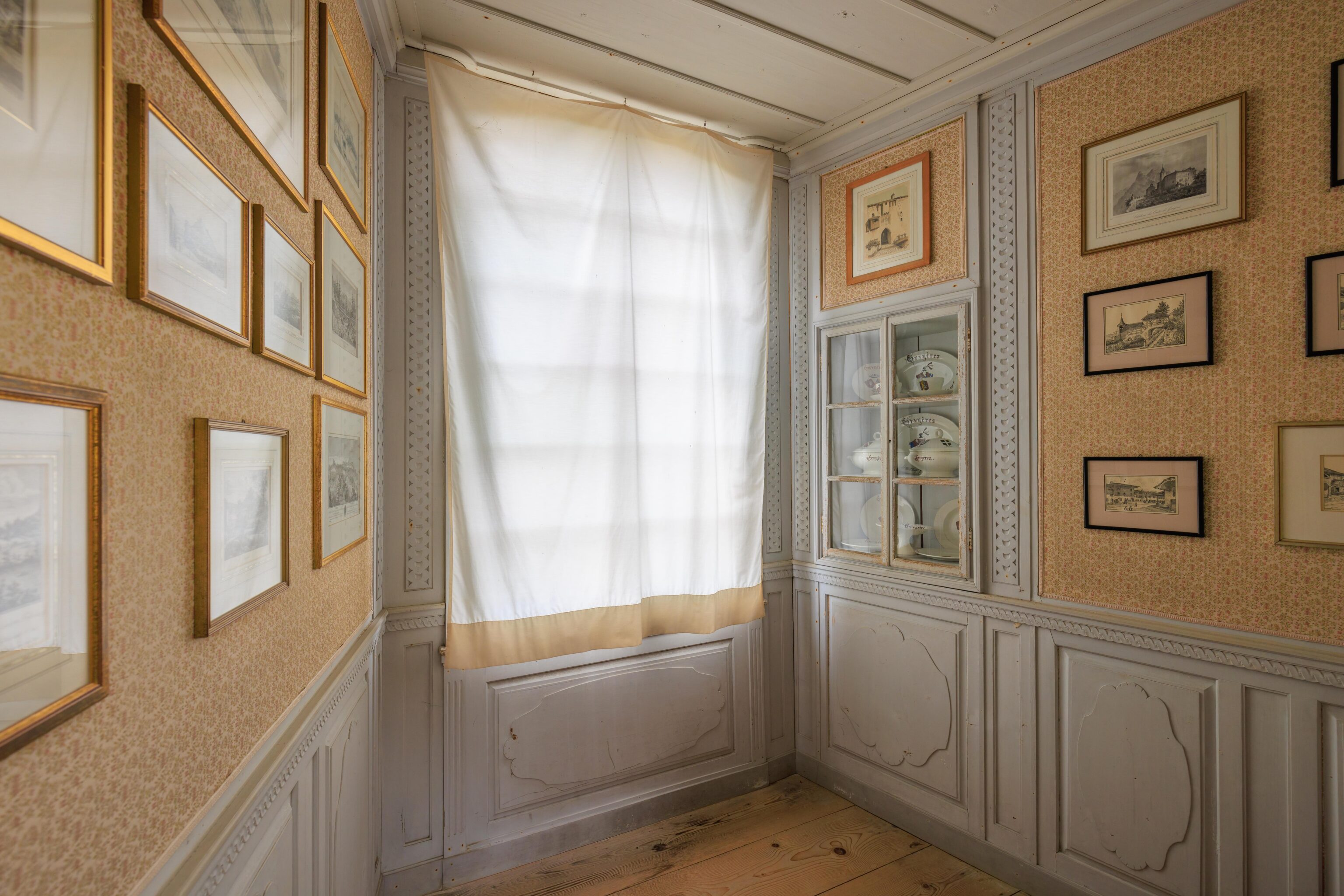
We passed by this tiny room on our way out, the smallest and final indoor room on the tour route. A sign explains:
A small wooden belvedere, installed in this gallery in the 19th century, frames a north-facing window. Known as Le Bel-Air, it affords the castle's residents a view of both the esplanade garden and the landscape stretching into the distance. Today it is decorated with engravings and lithographs depicting the Gruyères countryside and the castle. The gallery still contains a pulley and a lever- operated mechanism that was used from the mid- 19th century to raise Daniel Bovy's wheelchair through a trapdoor.
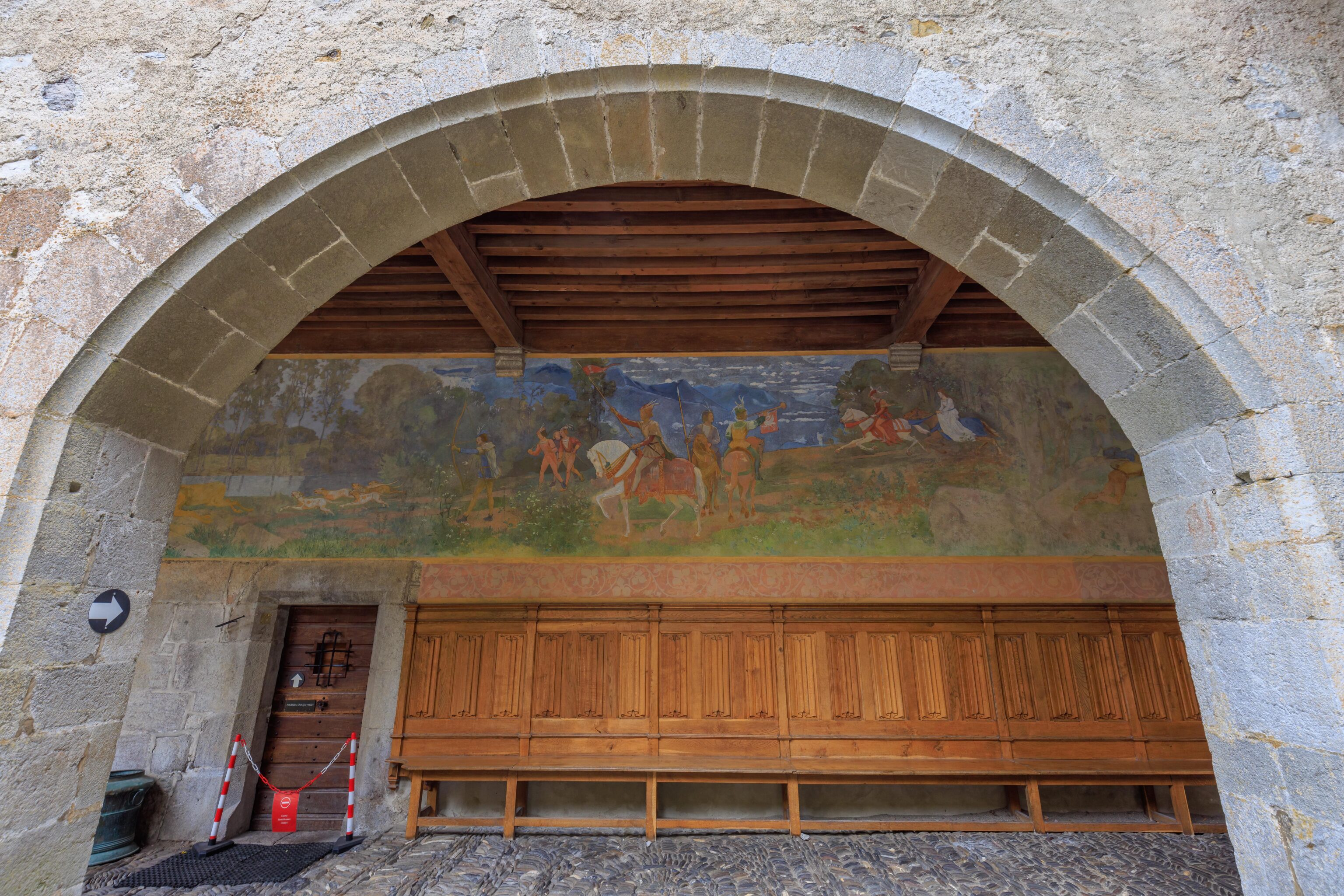
We found ourselves outside at the courtyard again. We missed this mural earlier.
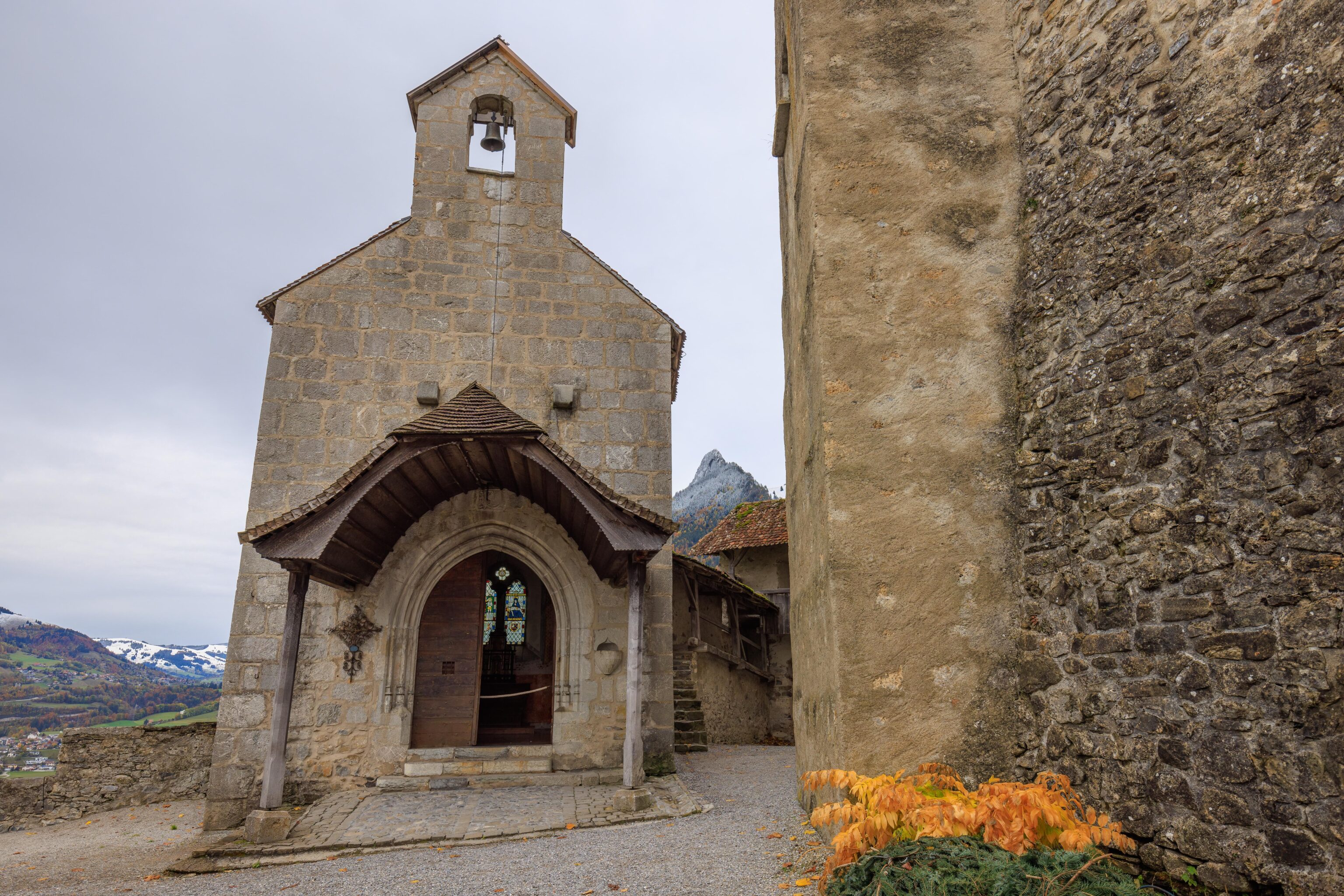
We went outside to try and find the path to the gallery that extends behind the castle. There it is, to the side of the little chapel!
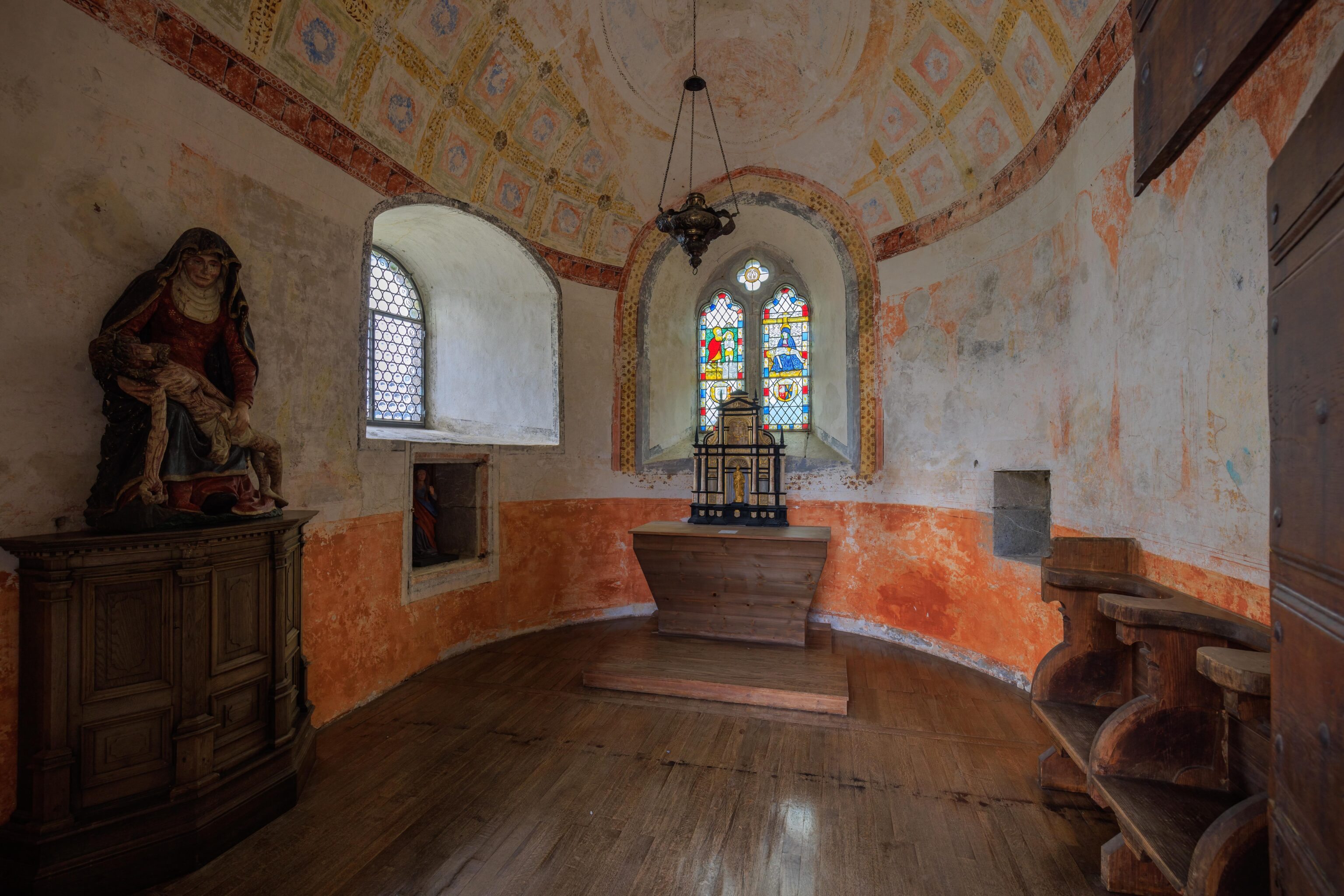
First, a peek inside. The door was open but blocked off by a rope.
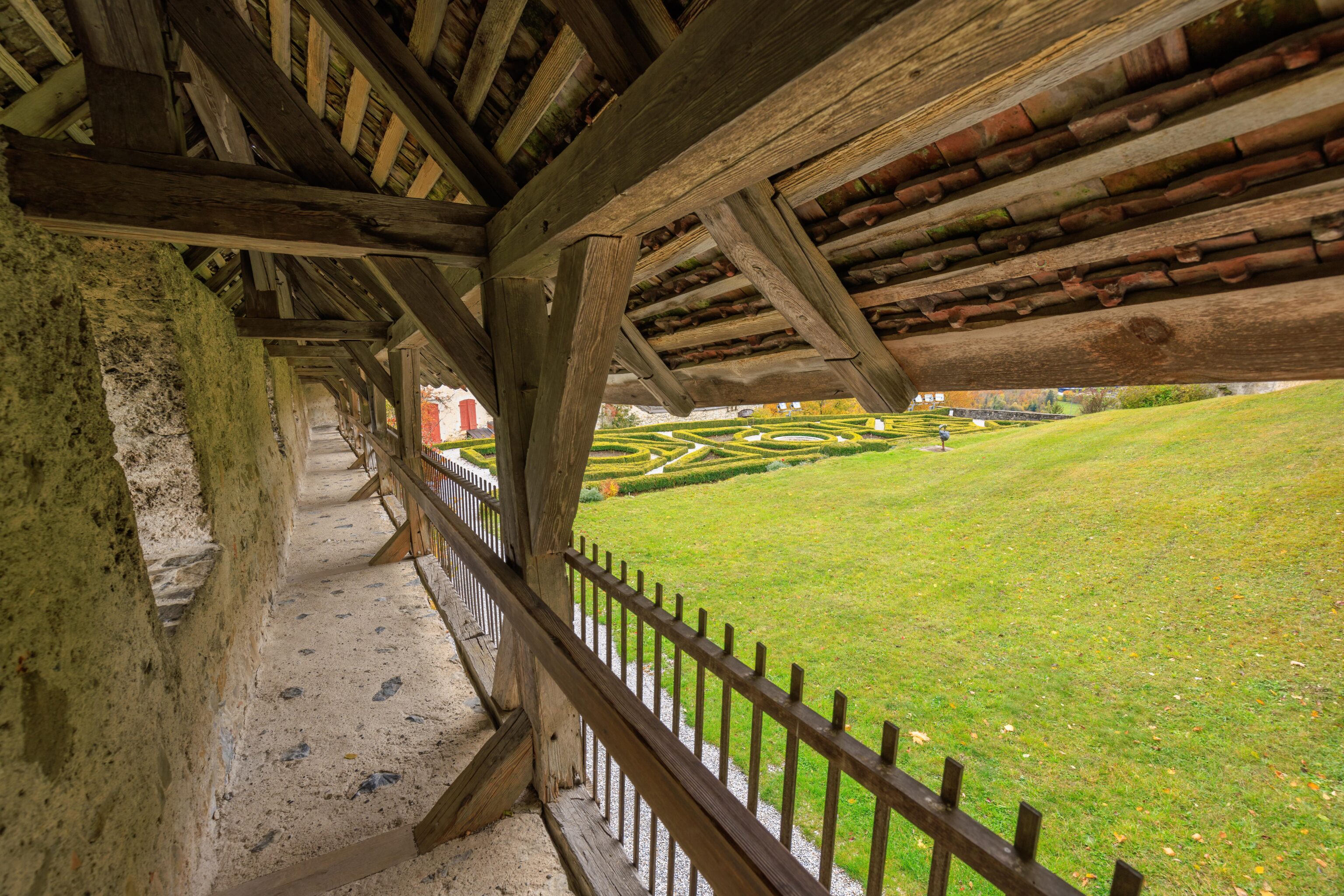
We went and entered the gallery, along the castle wall. The covered ceiling was relatively low and just high enough to stand under in some places.
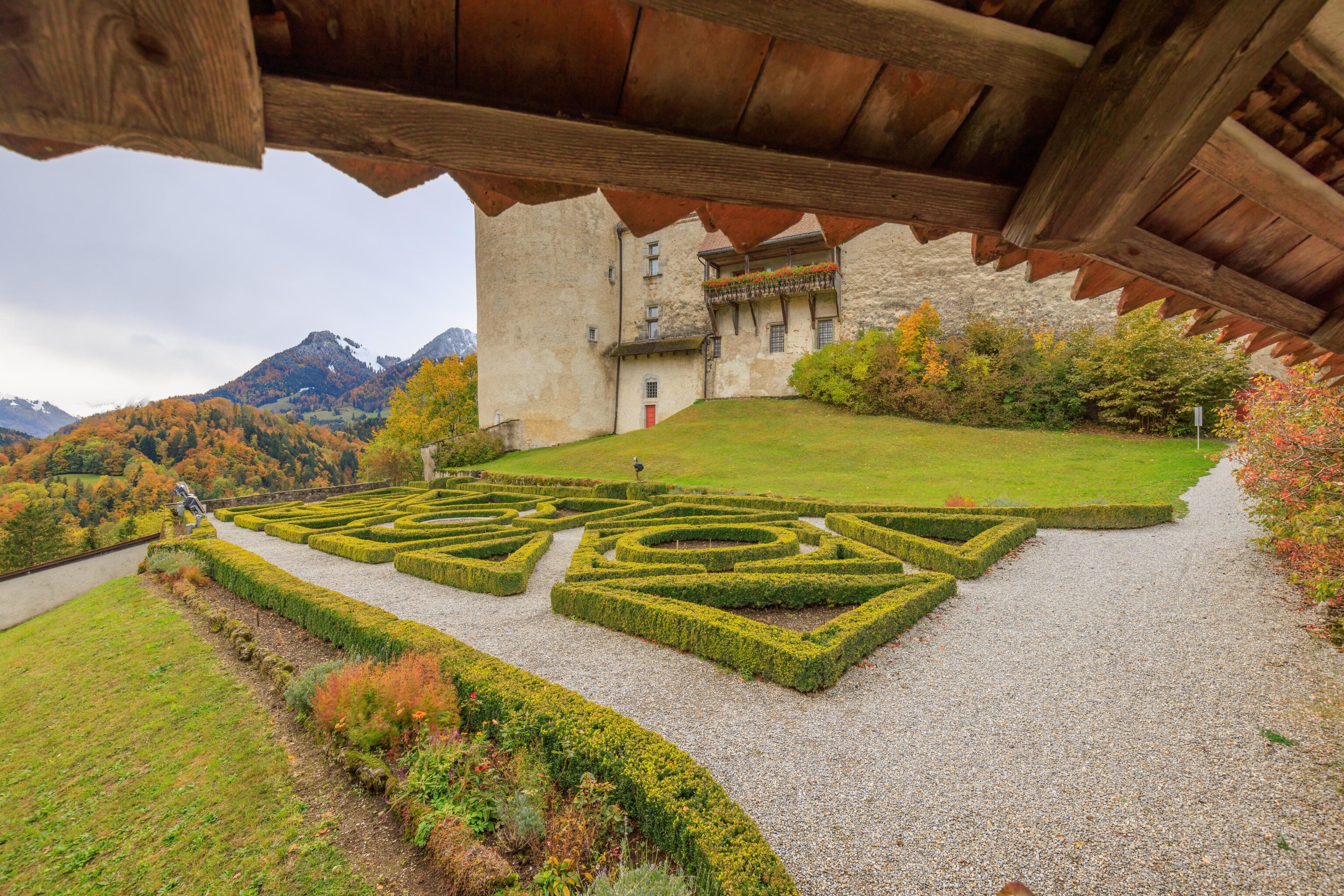
There is a little garden behind the castle.
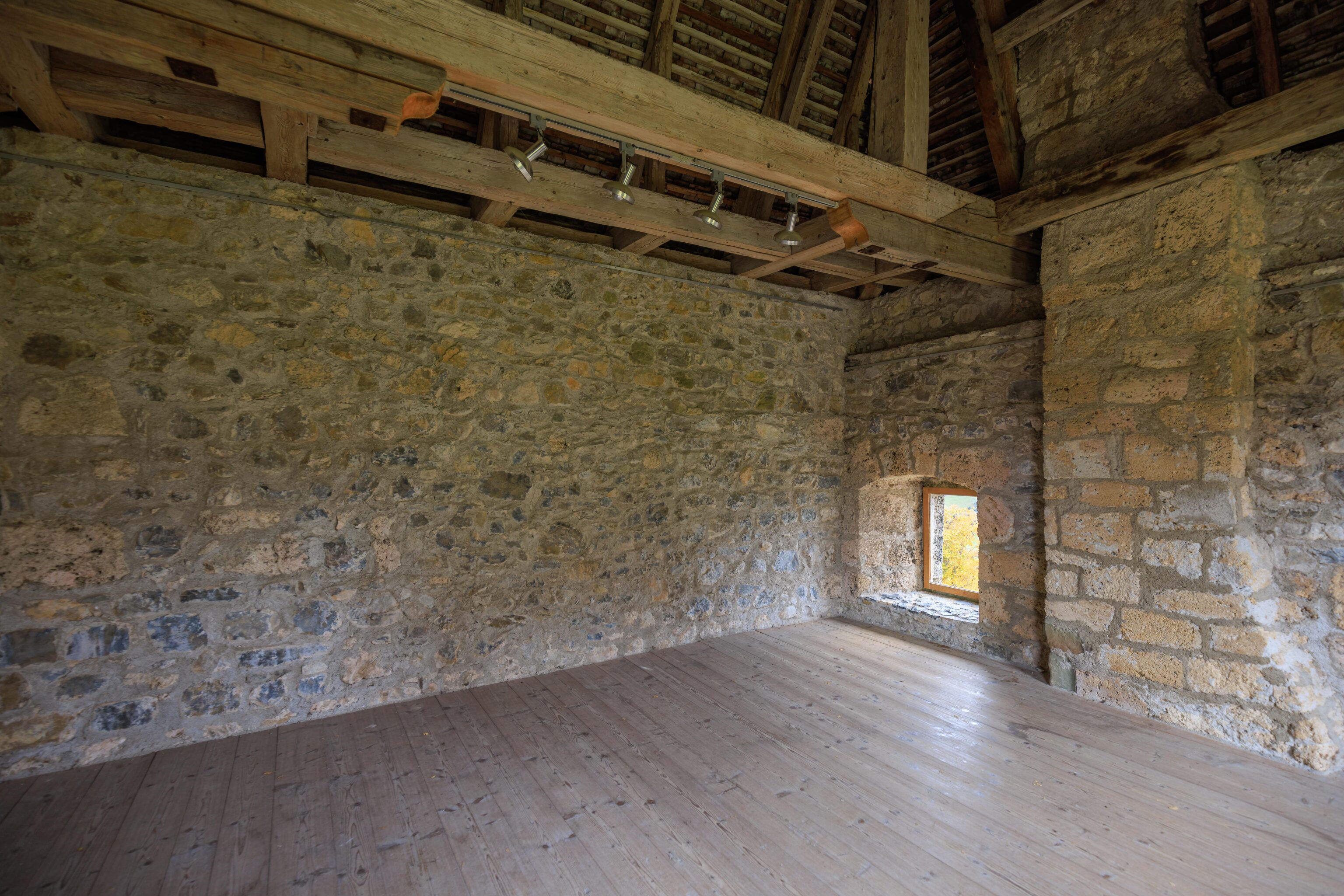
This relatively large room was in a tower at the northeastern corner of the castle. There wasn’t anything inside, though the presence of lights on a ceiling beam suggests there may have been something on display here.
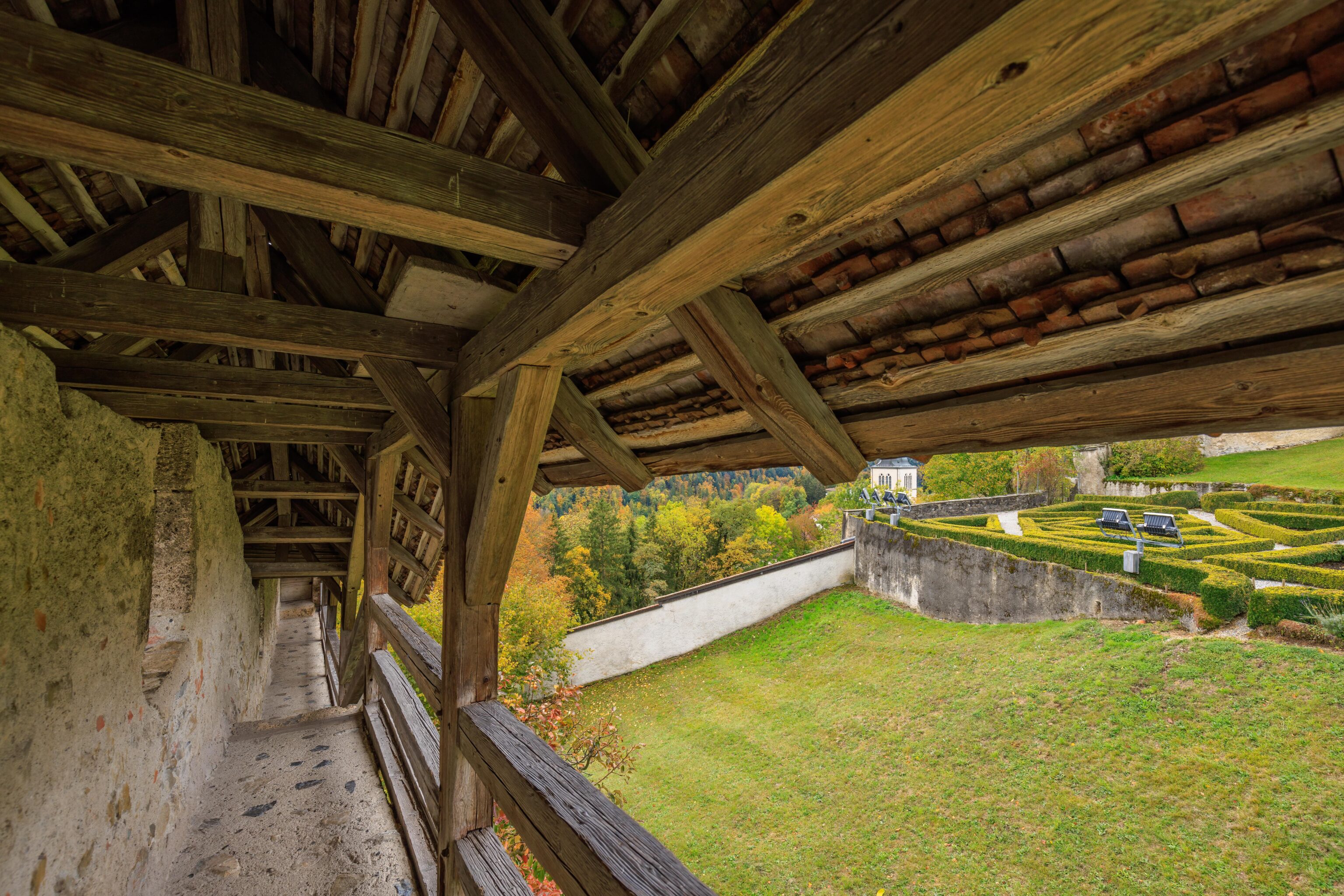
We continued walking to the southeast corner.
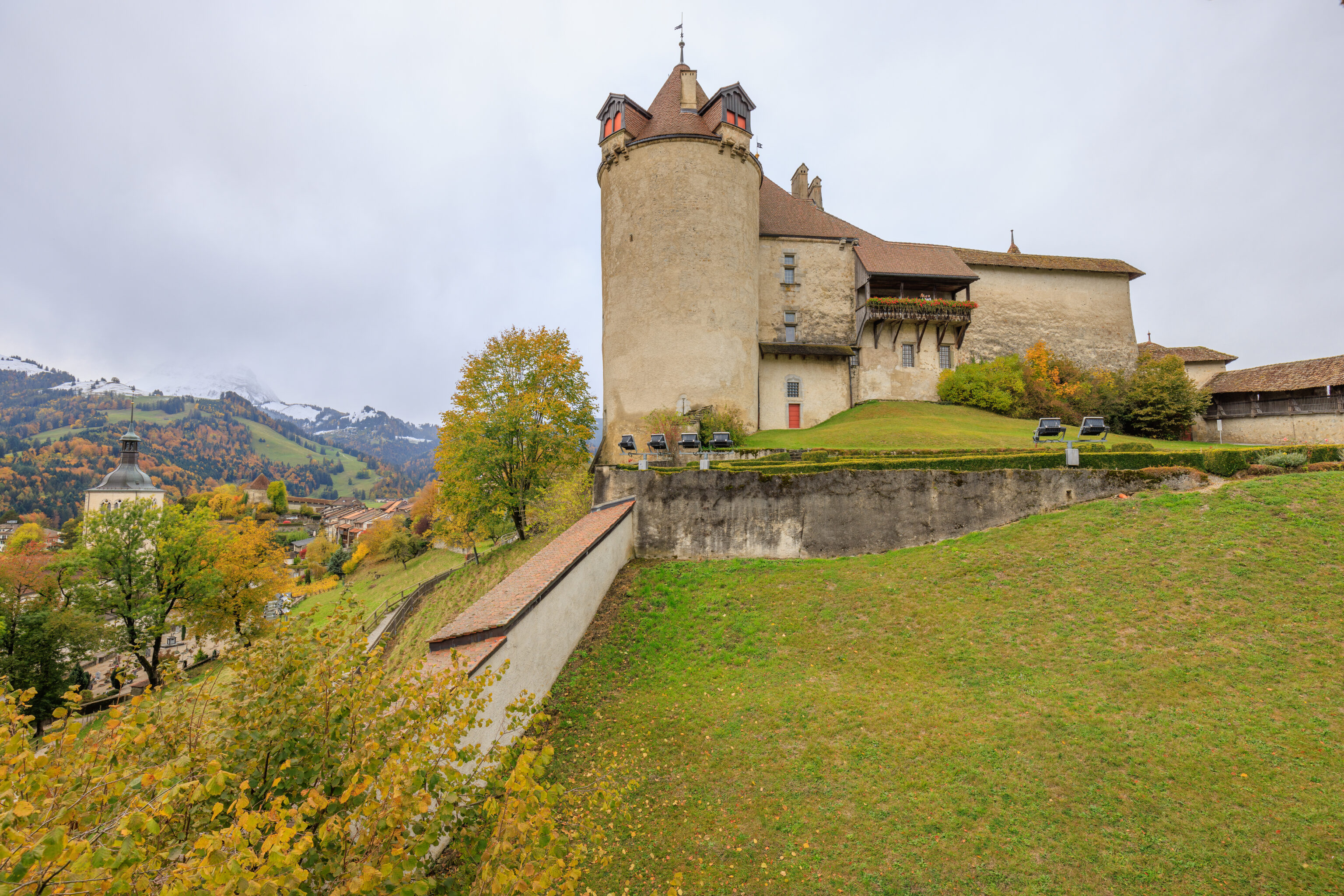
That’s it, as far as one can go!
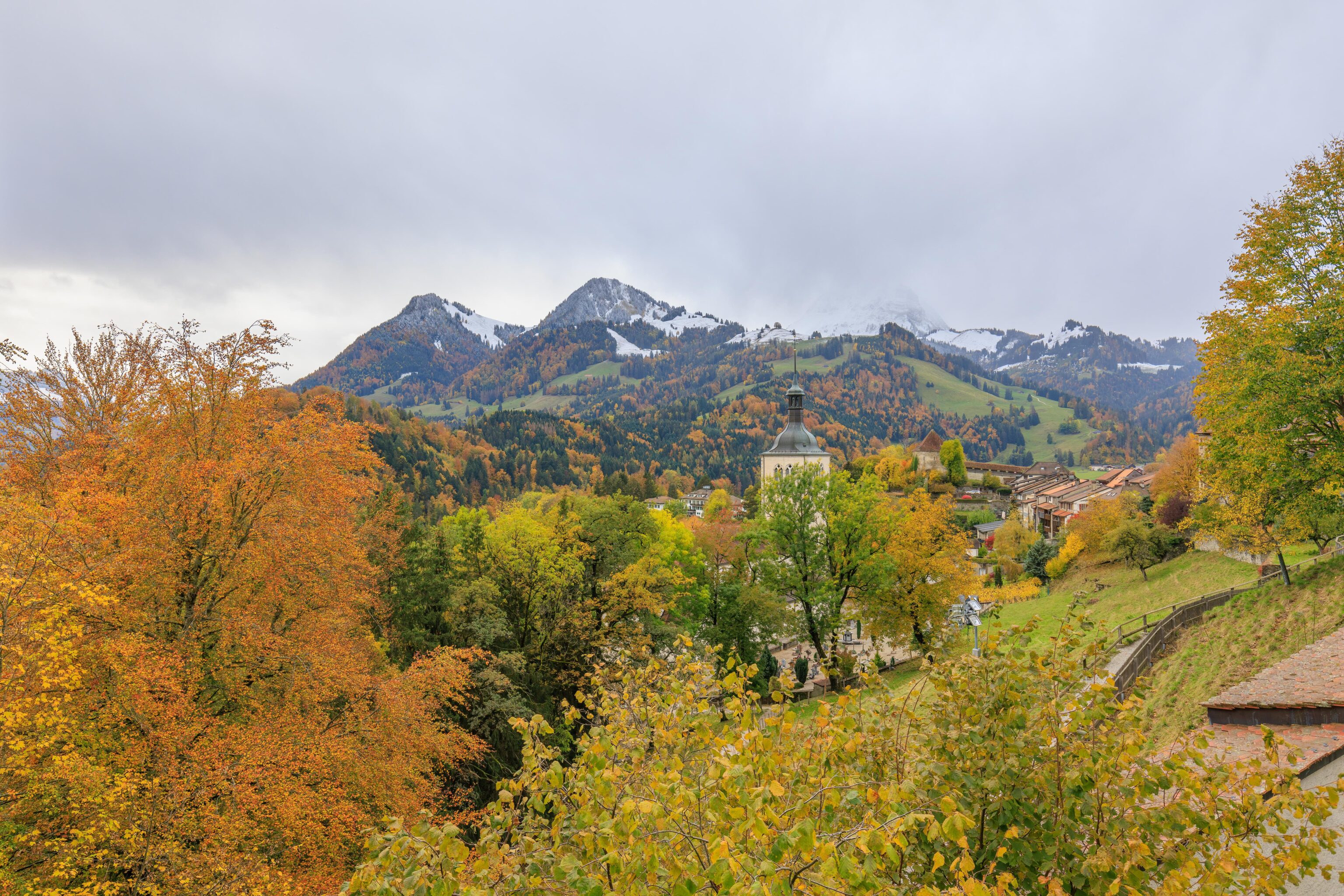
A nice view of the landscape with mountains in the background and the small church below.
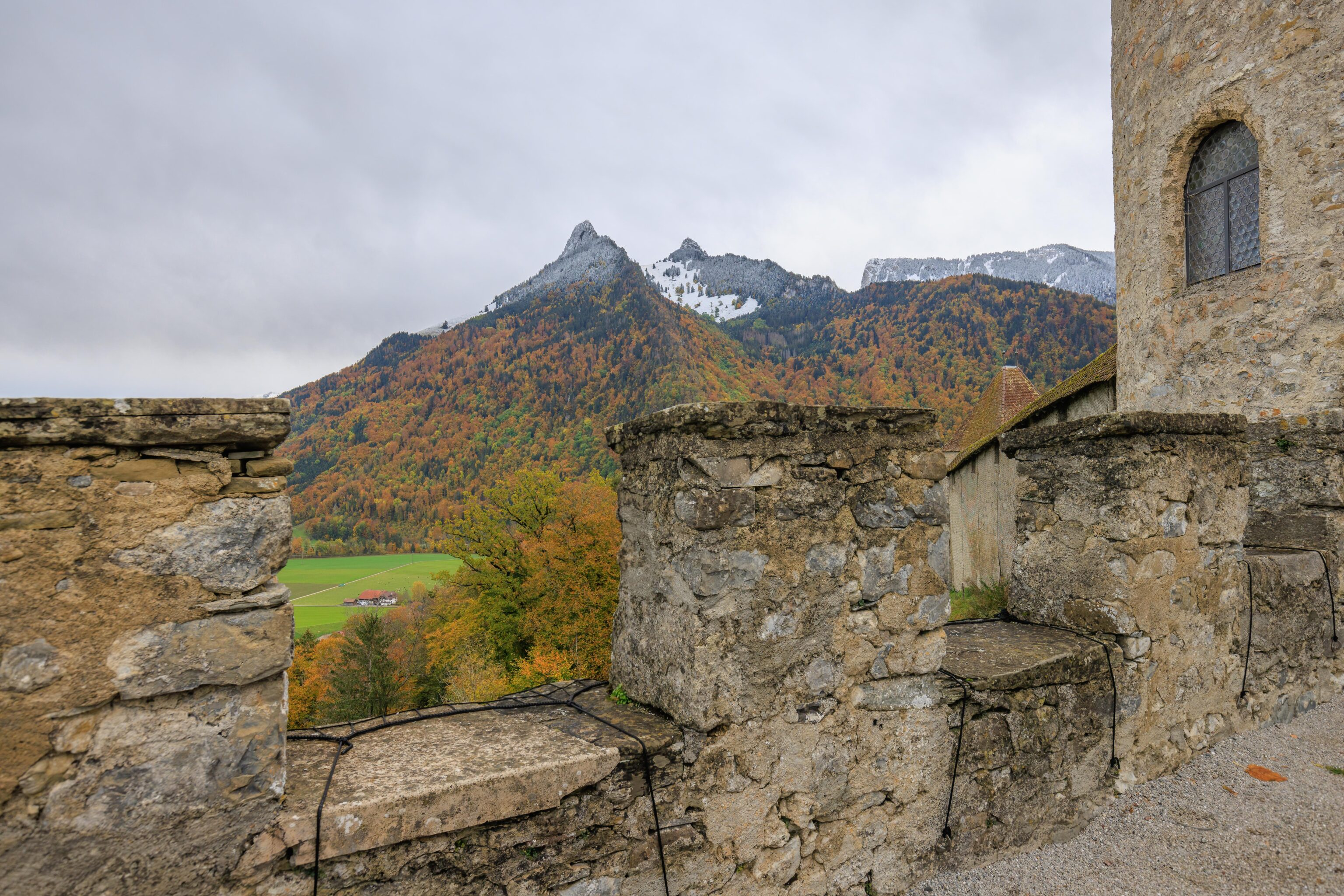
We backtracked and made our way back to the small plaza outside of the castle building. One last look from the castle’s walls before exiting.
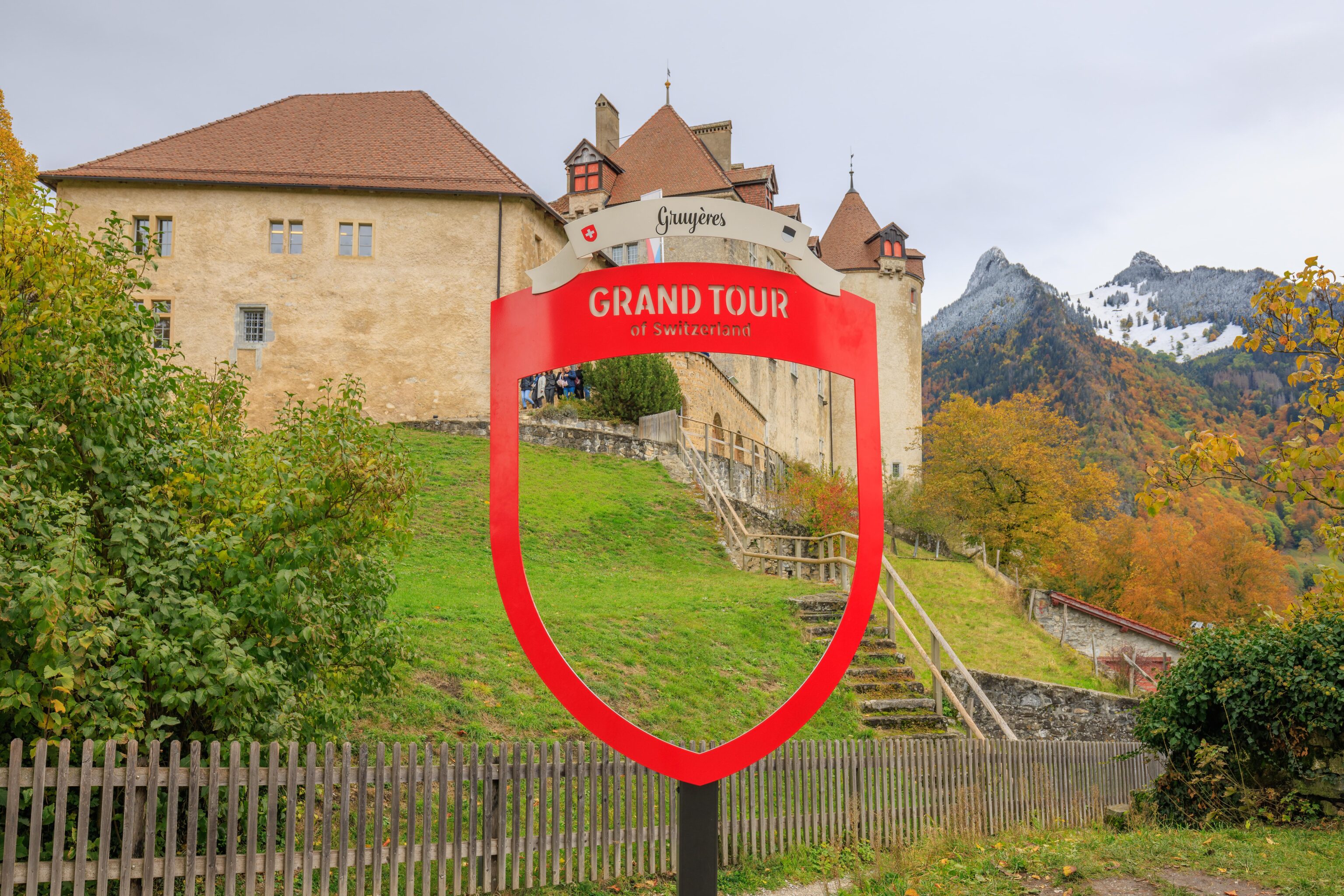
The Grand Tour of Switzerland! Maybe we should be keeping track of how many we’ve found?
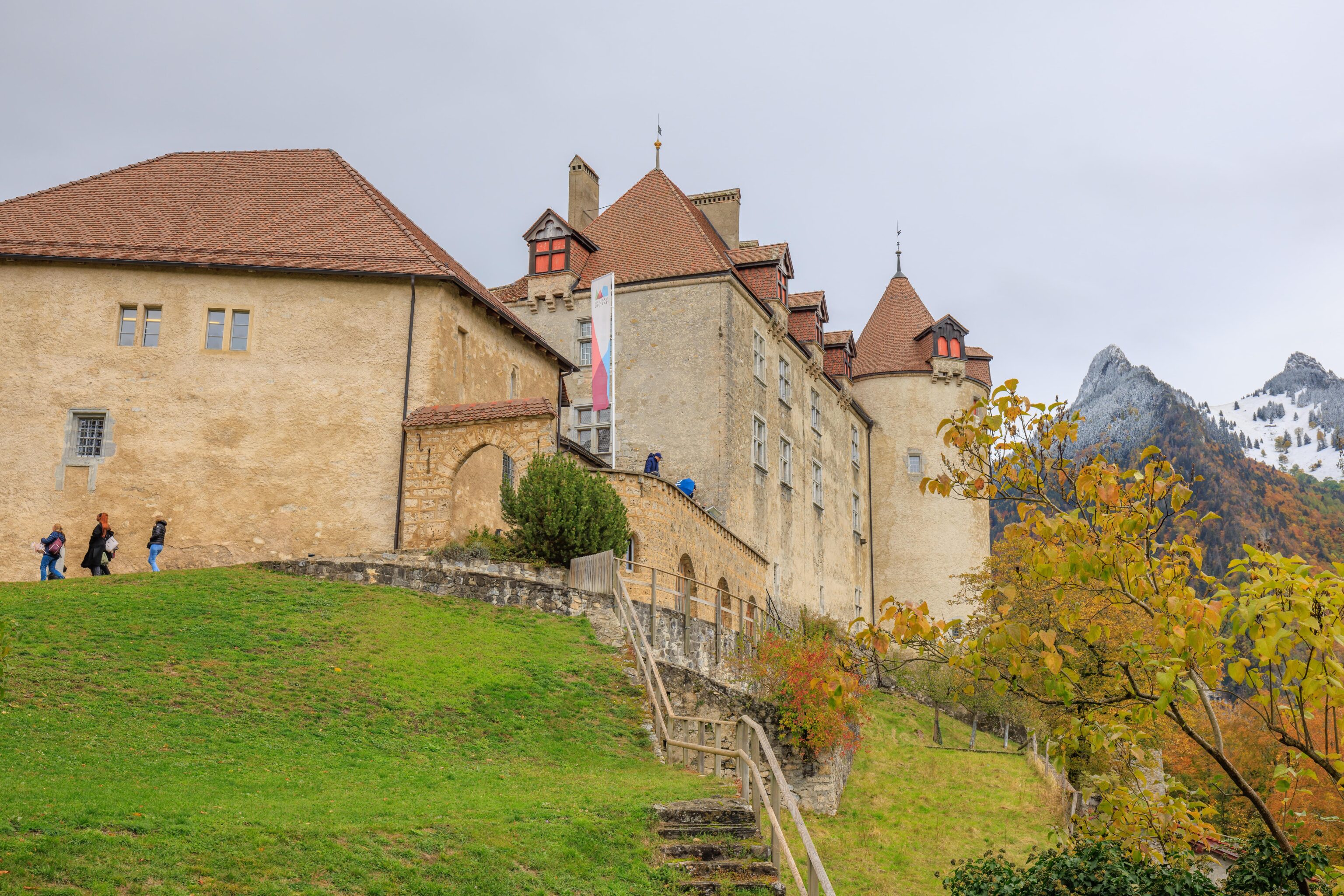
The same view of the castle without the photo spot sign in the way.
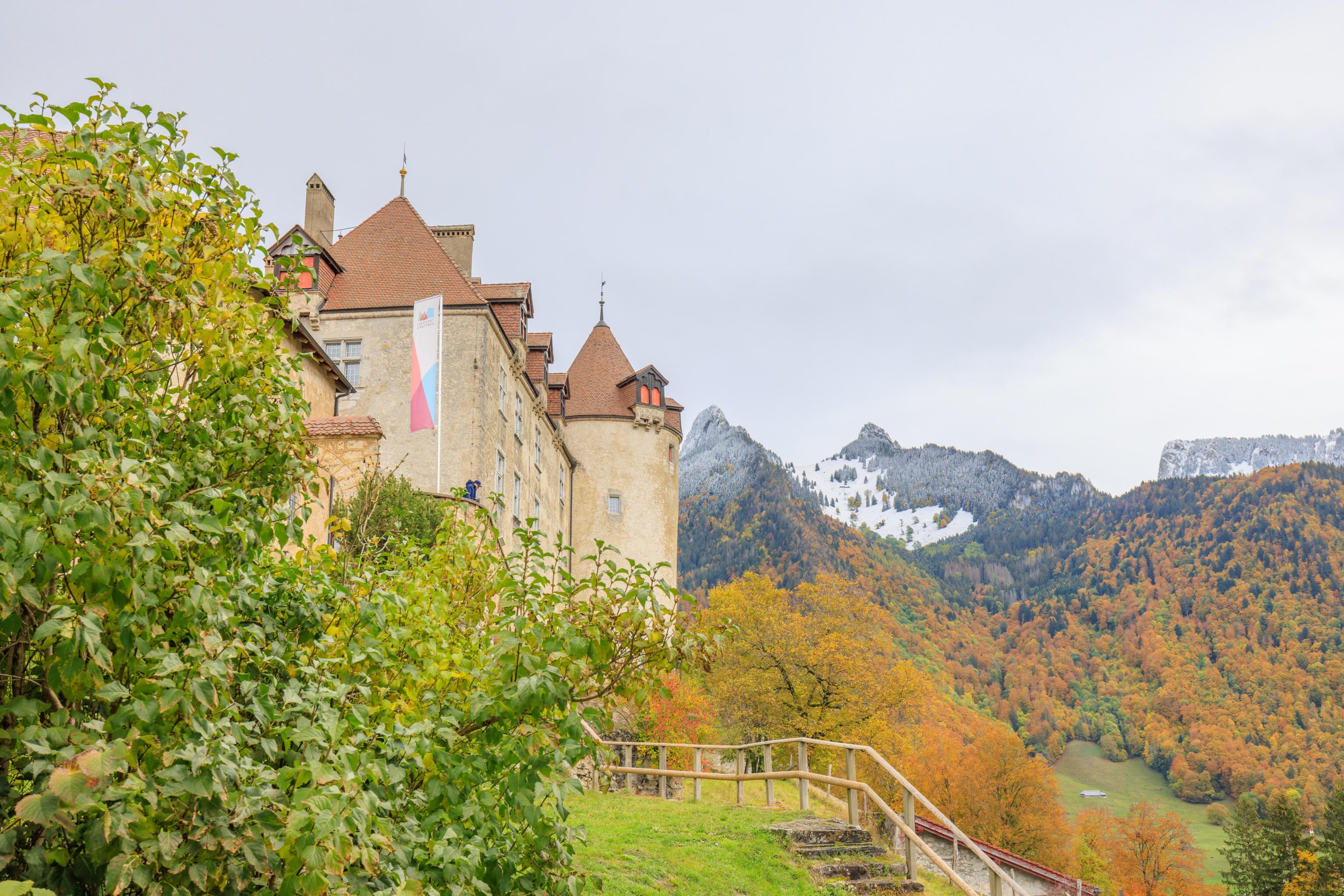
Same view, slightly different location and perspective. The autumn colors transitioning to snow covered trees above look quite nice.
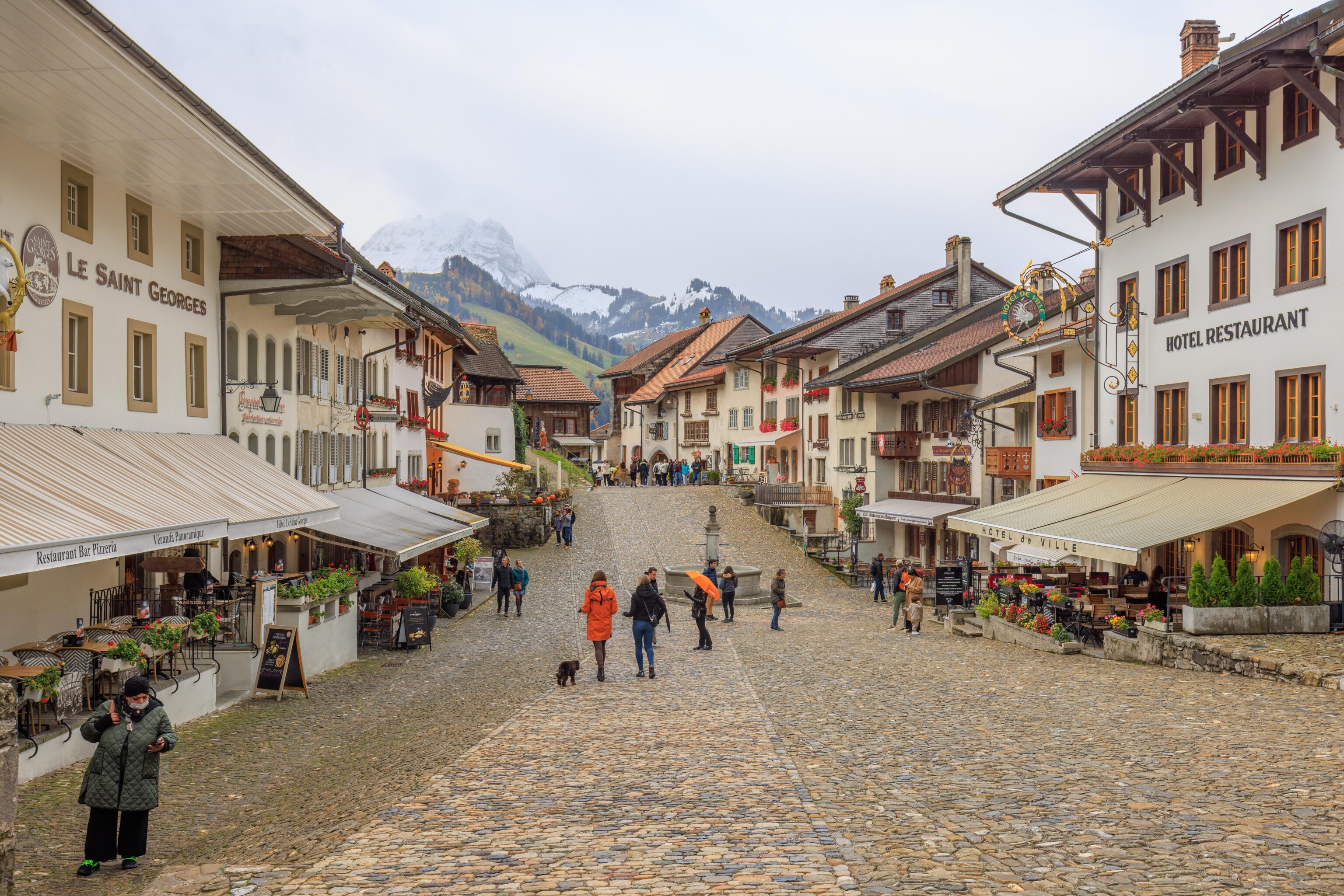
After exiting the castle, we walked through the little town again. It was busier than before, though still relatively empty. We decided to get lunch at Remparts, a restaurant right next to a small side entrance into the town.
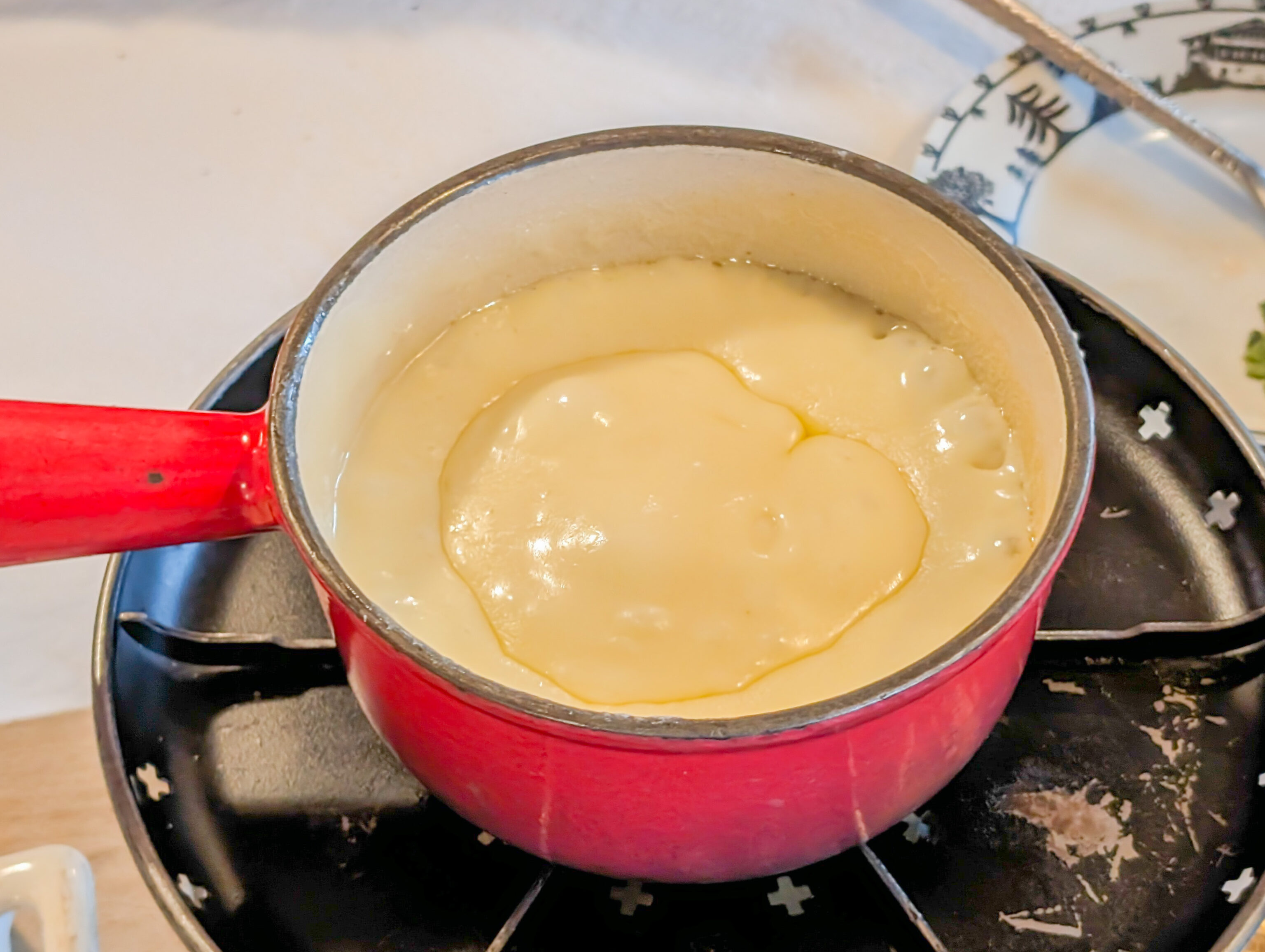
This is Gruyères so of course we’re going to have fondue with the local Gruyère cheese as an ingredient!
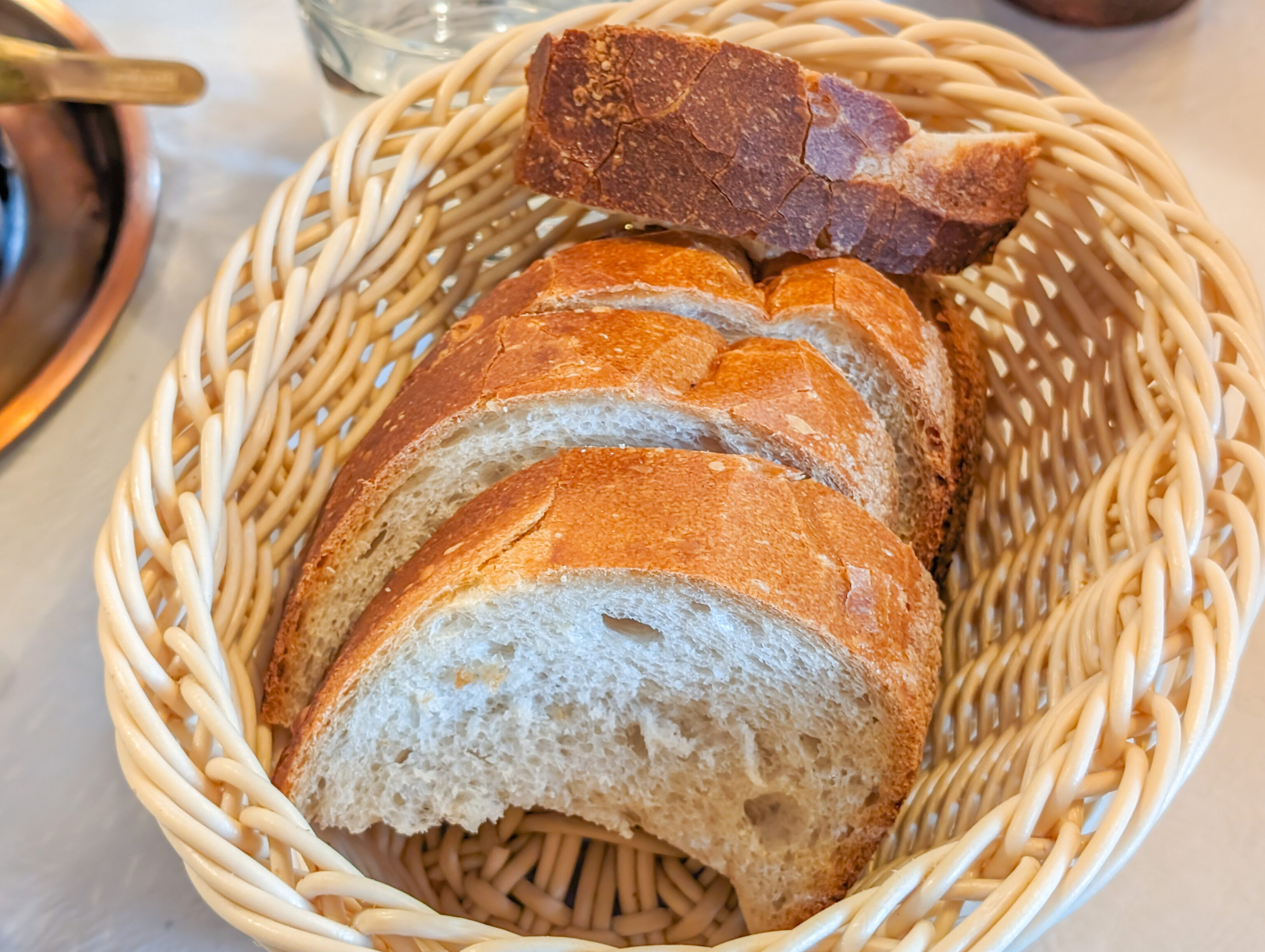
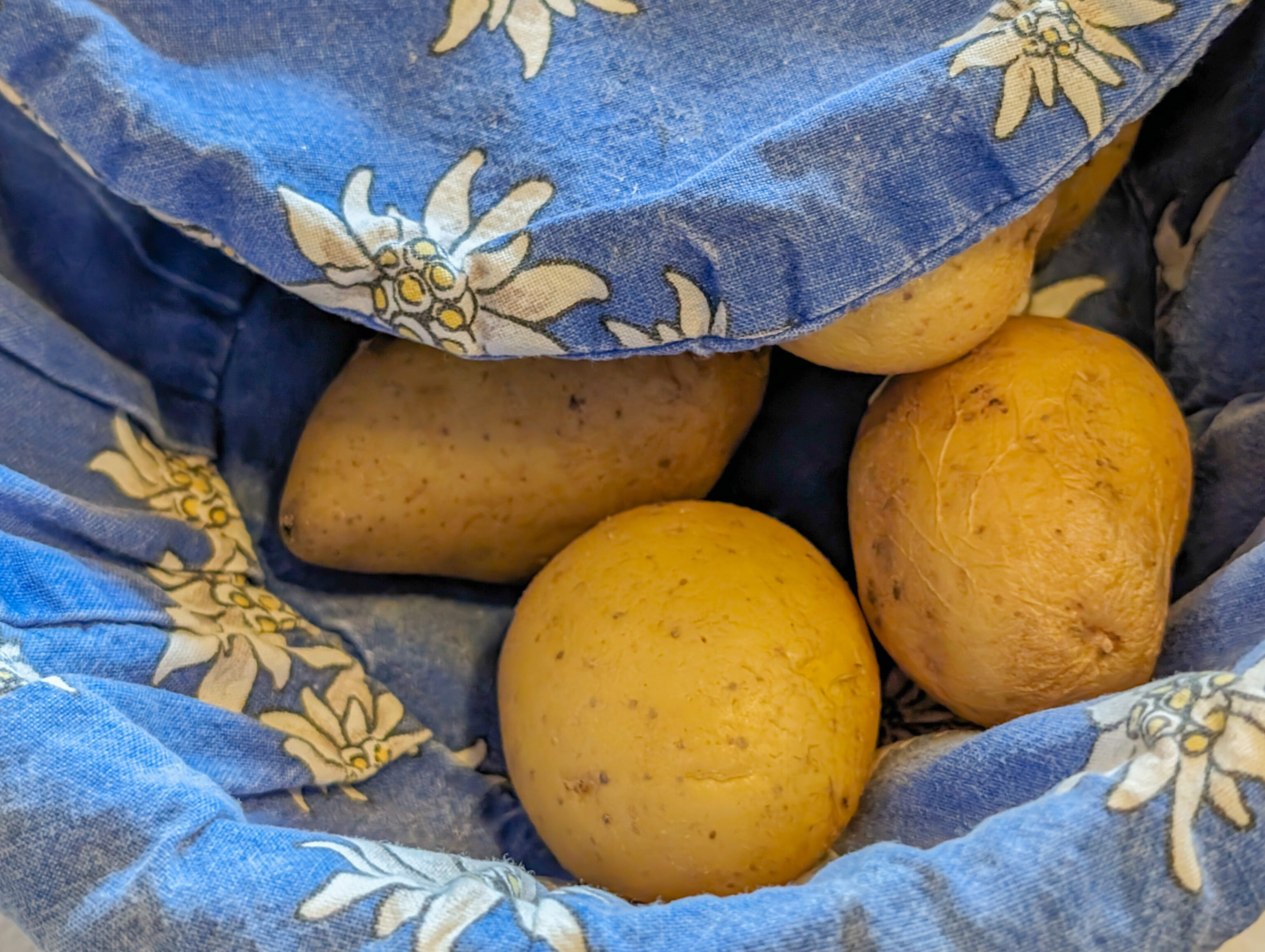
It was served with bread and potatoes.
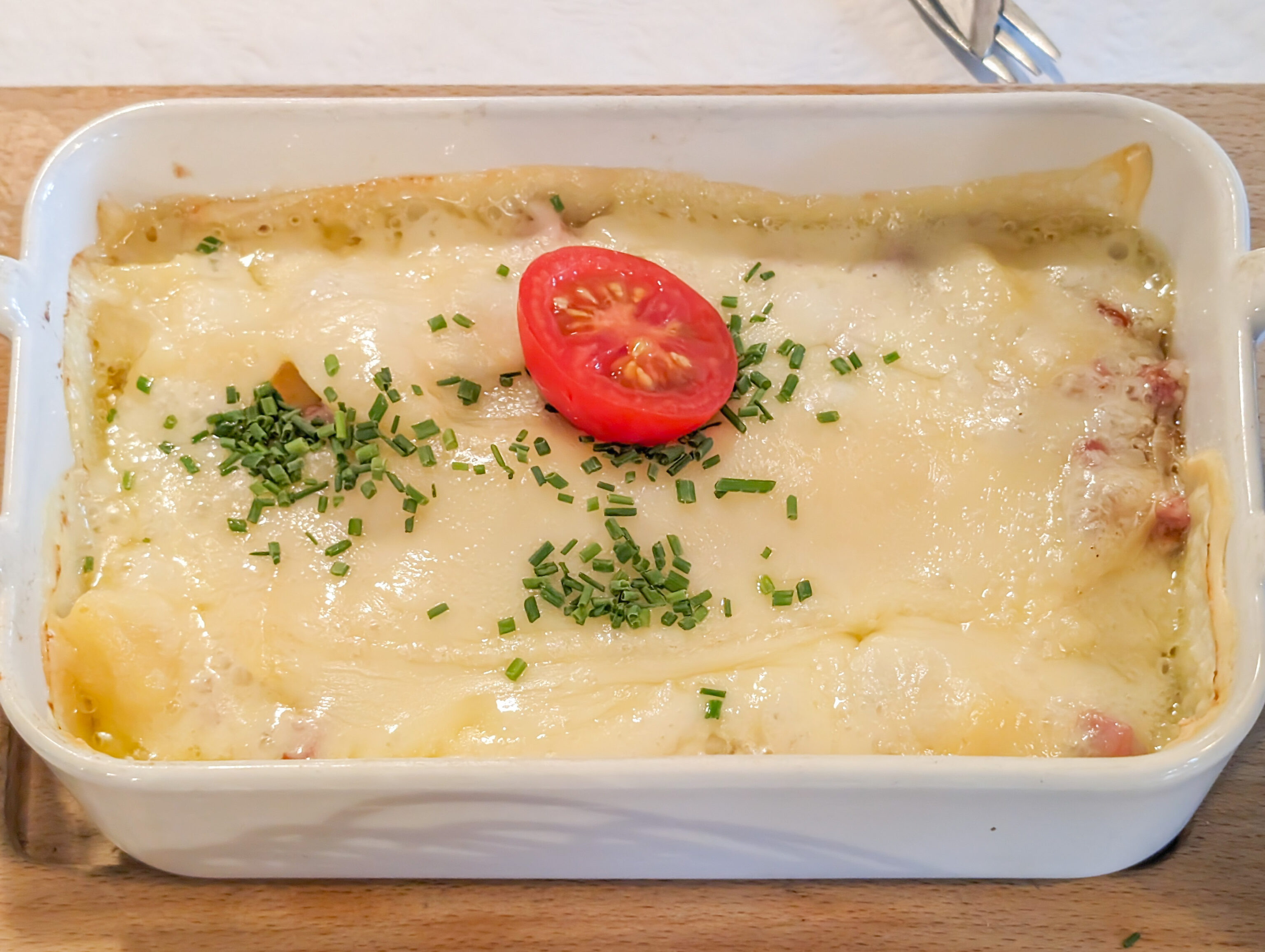
We also got a tartiflette with Gruyère cheese. It was very good as well and came with ham inside along with the cheese and potatoes.
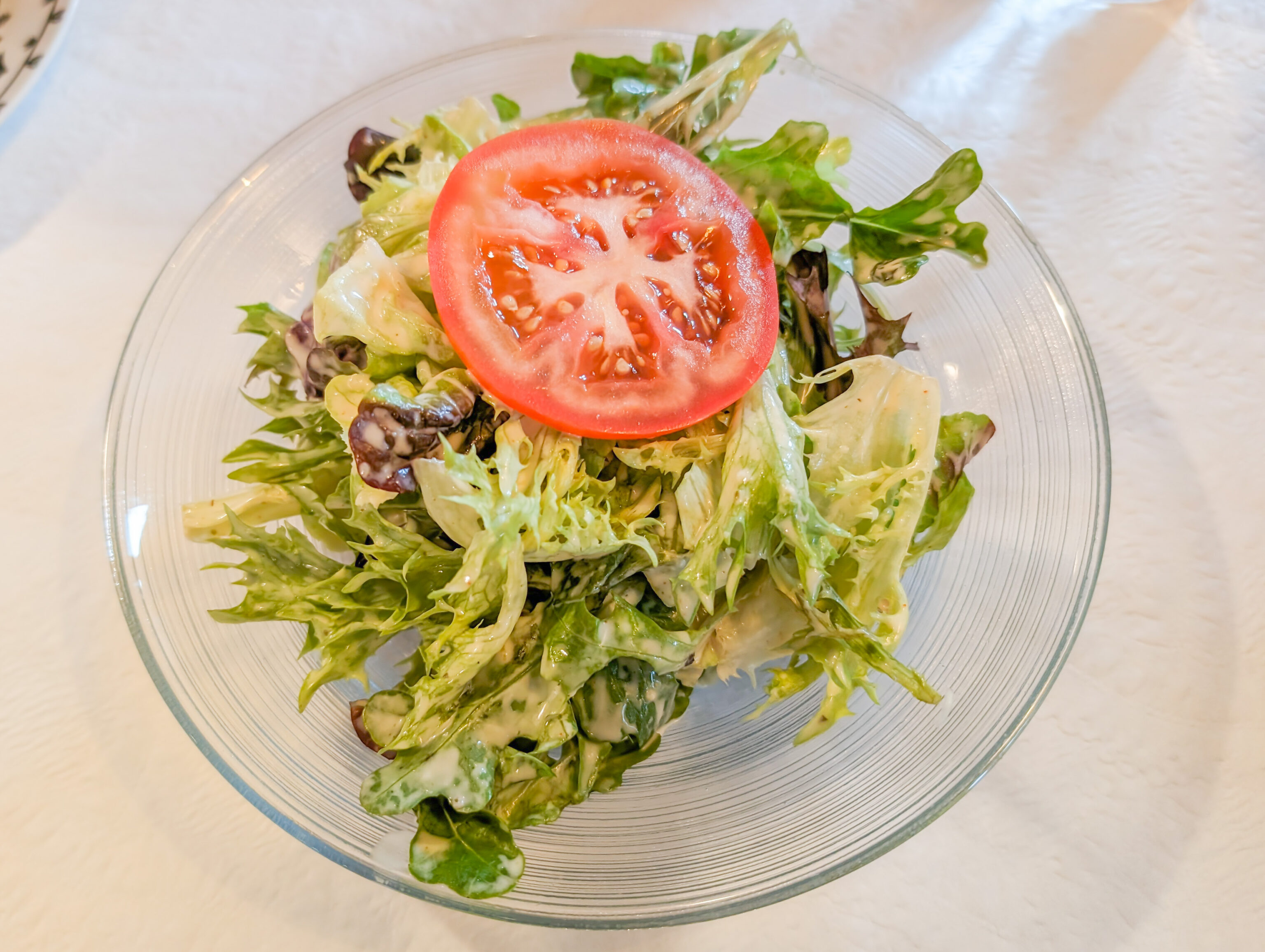
The little salad was pretty good too.
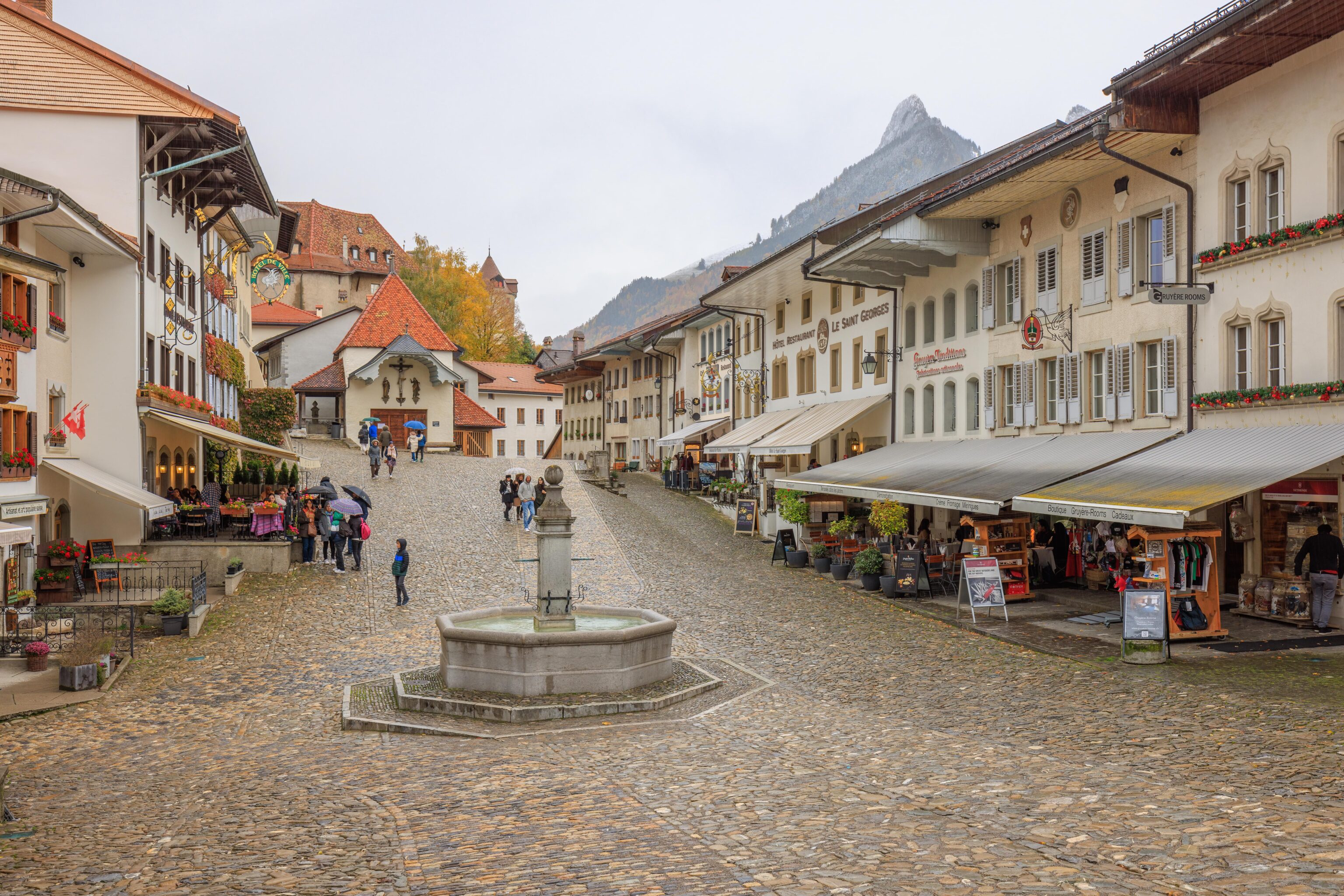
It was raining when we went back outside after lunch. We planned on visiting a little chocolate shop in town but it was closed for lunch. We decided to check out the little church that we saw from above before leaving.
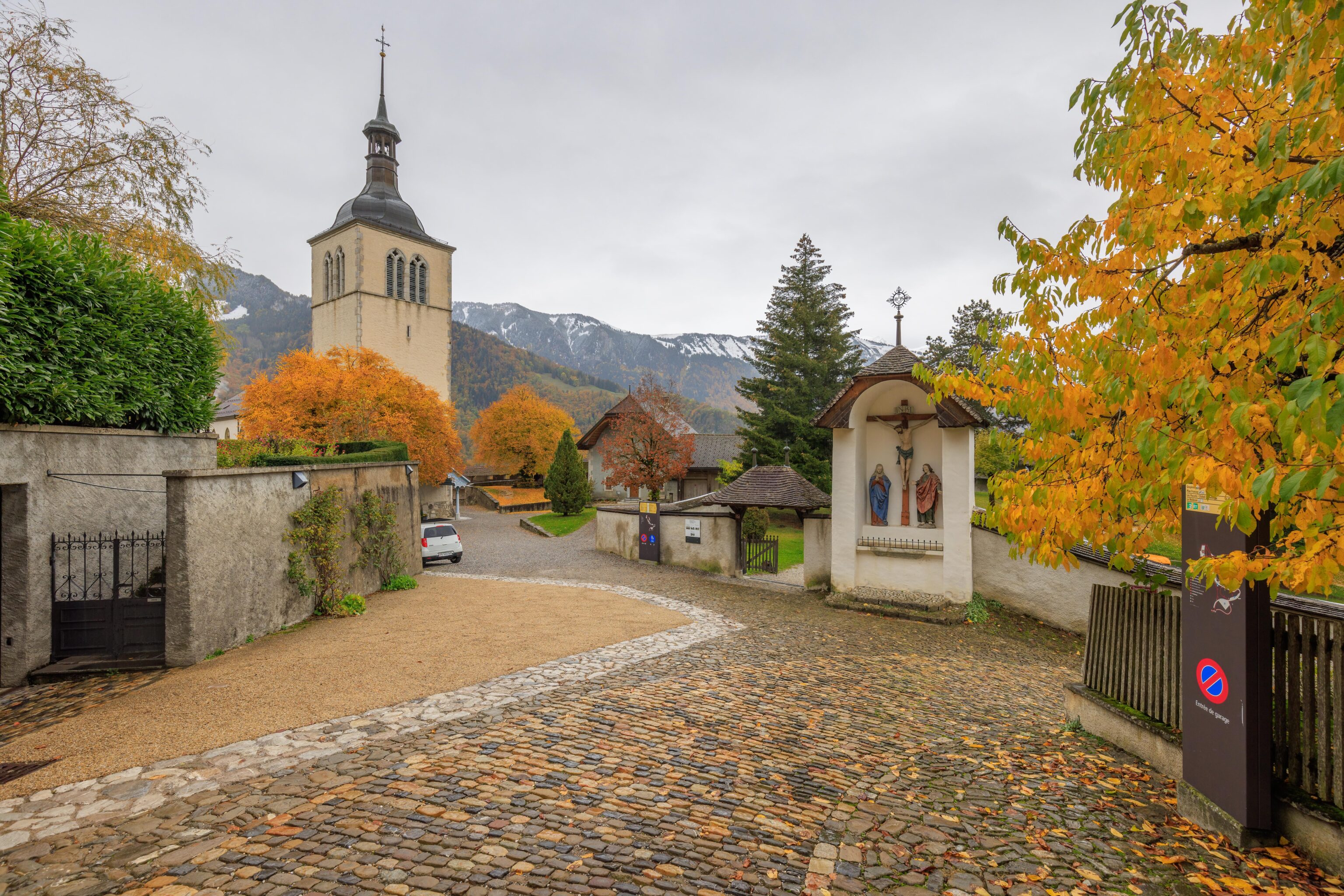
There it is, the Église Saint-Théodule. It wasn’t far away, just a short downhill walk through the rain.
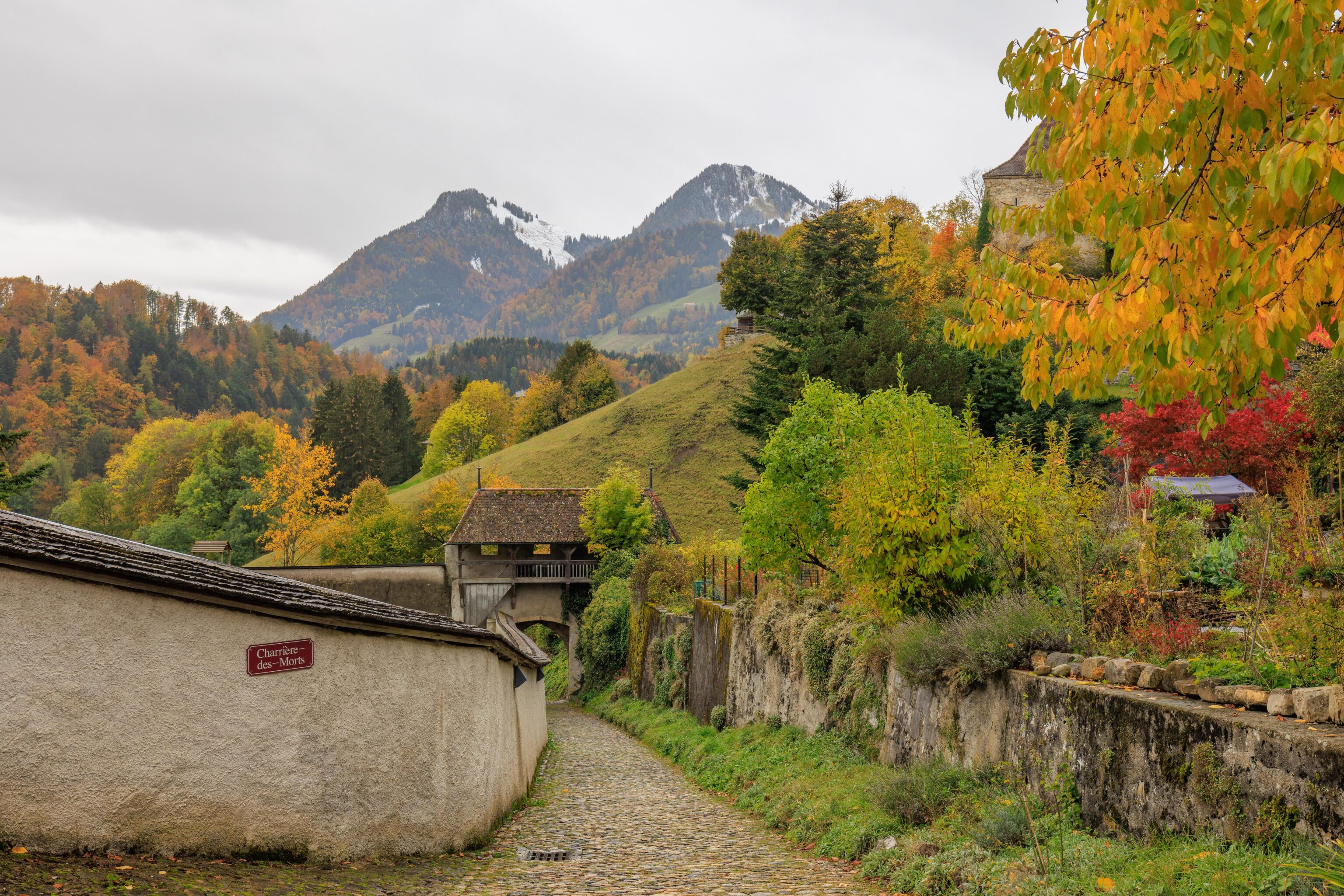
This little narrow path, maybe a road, seems to lead outside the walls.
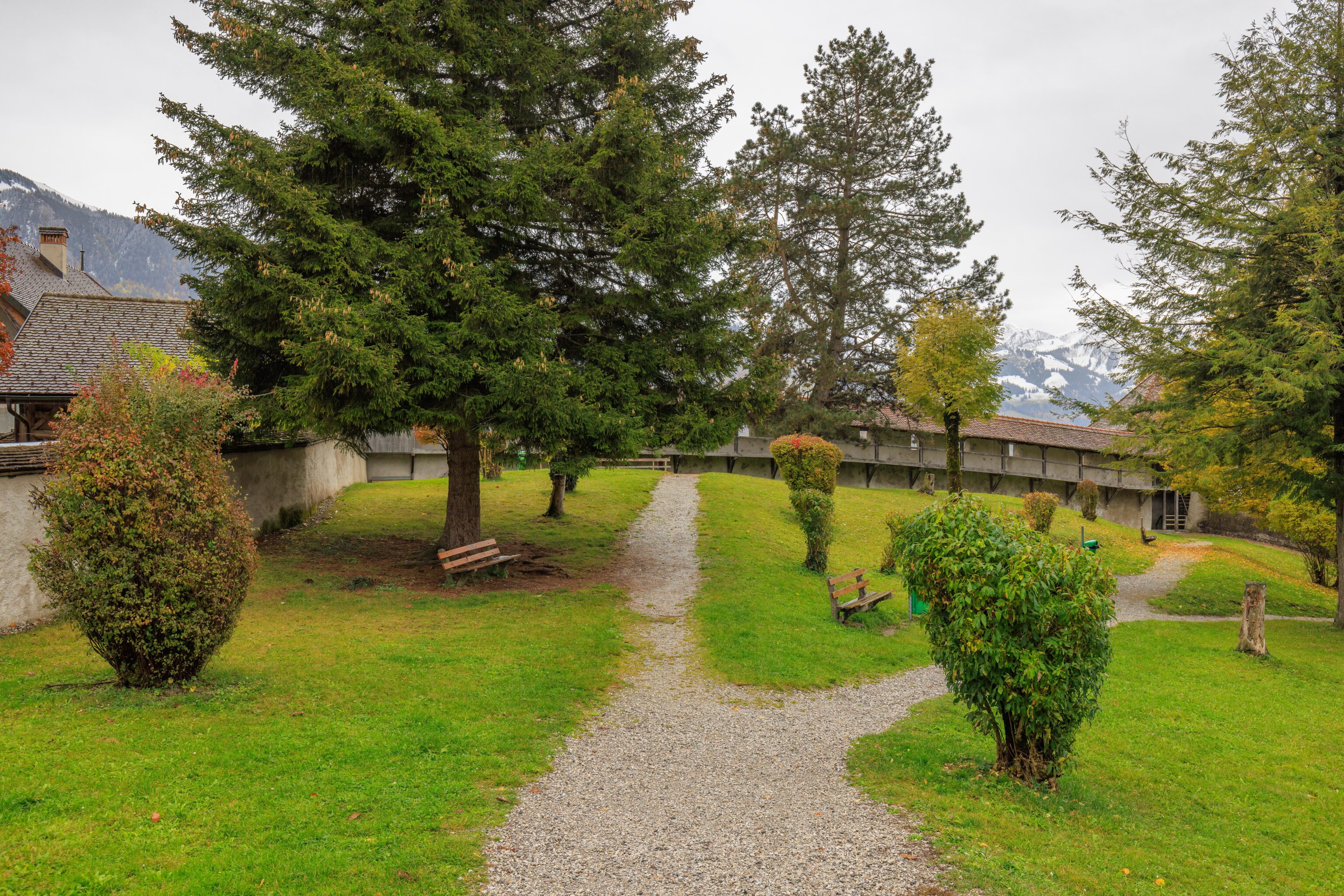
This seems to be the Clos aux Cerfs. This was originally used to keep cattle safe from theives2.
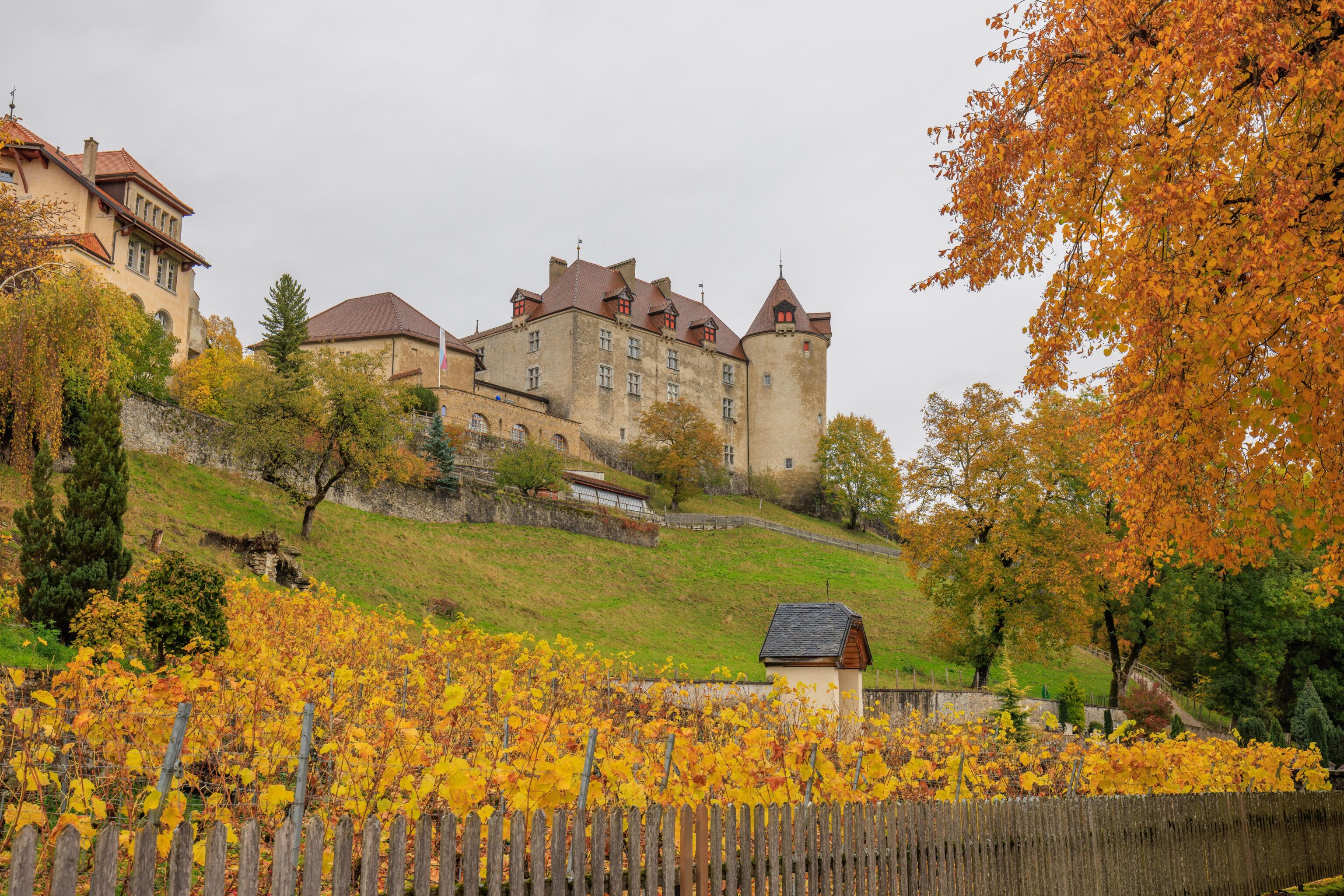
There is a fine view of the castle from the church. Although the church is lower in elevation, it is still within the castle’s walls and still sits above the surrounding land.
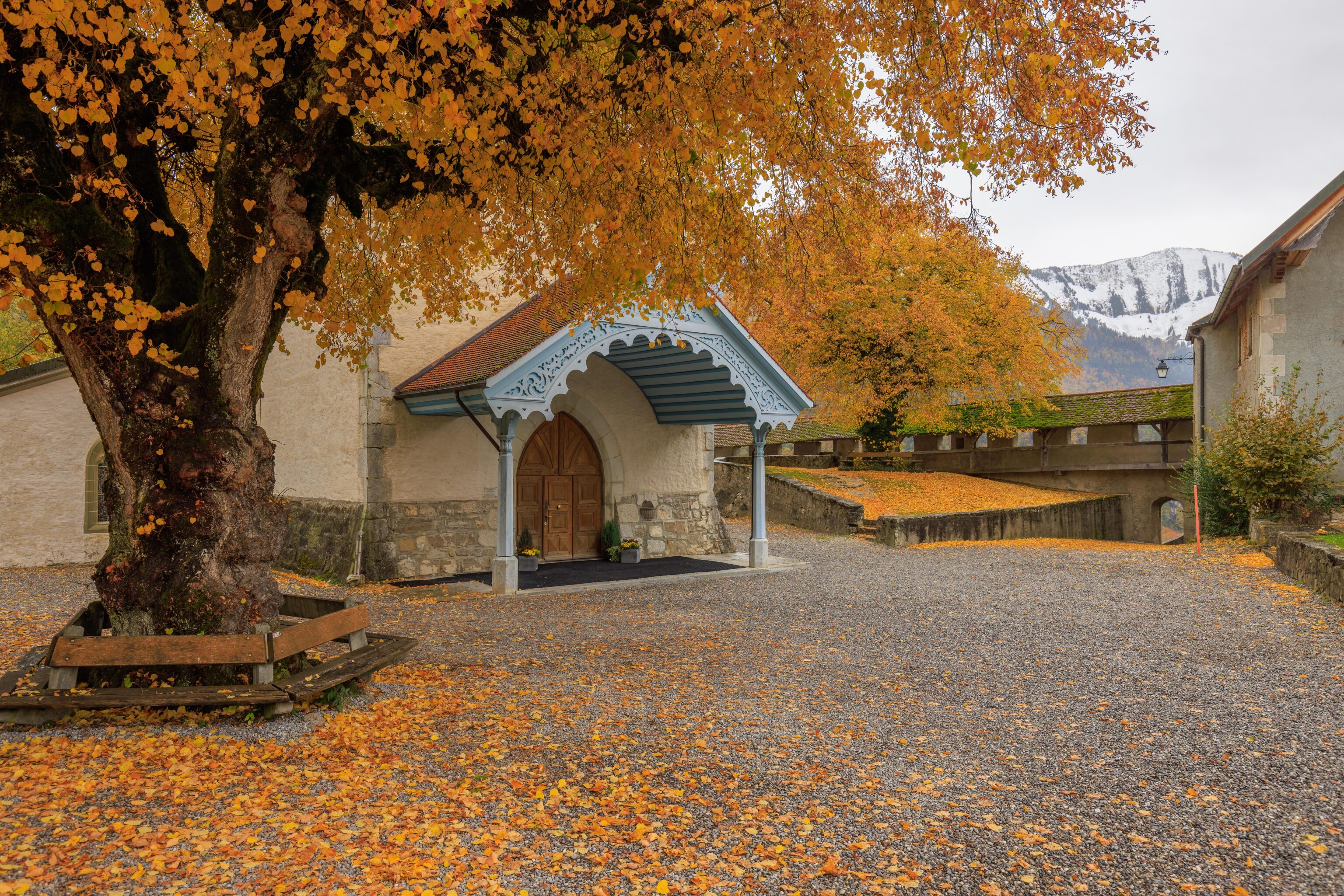
Finally, the entrance to the church.
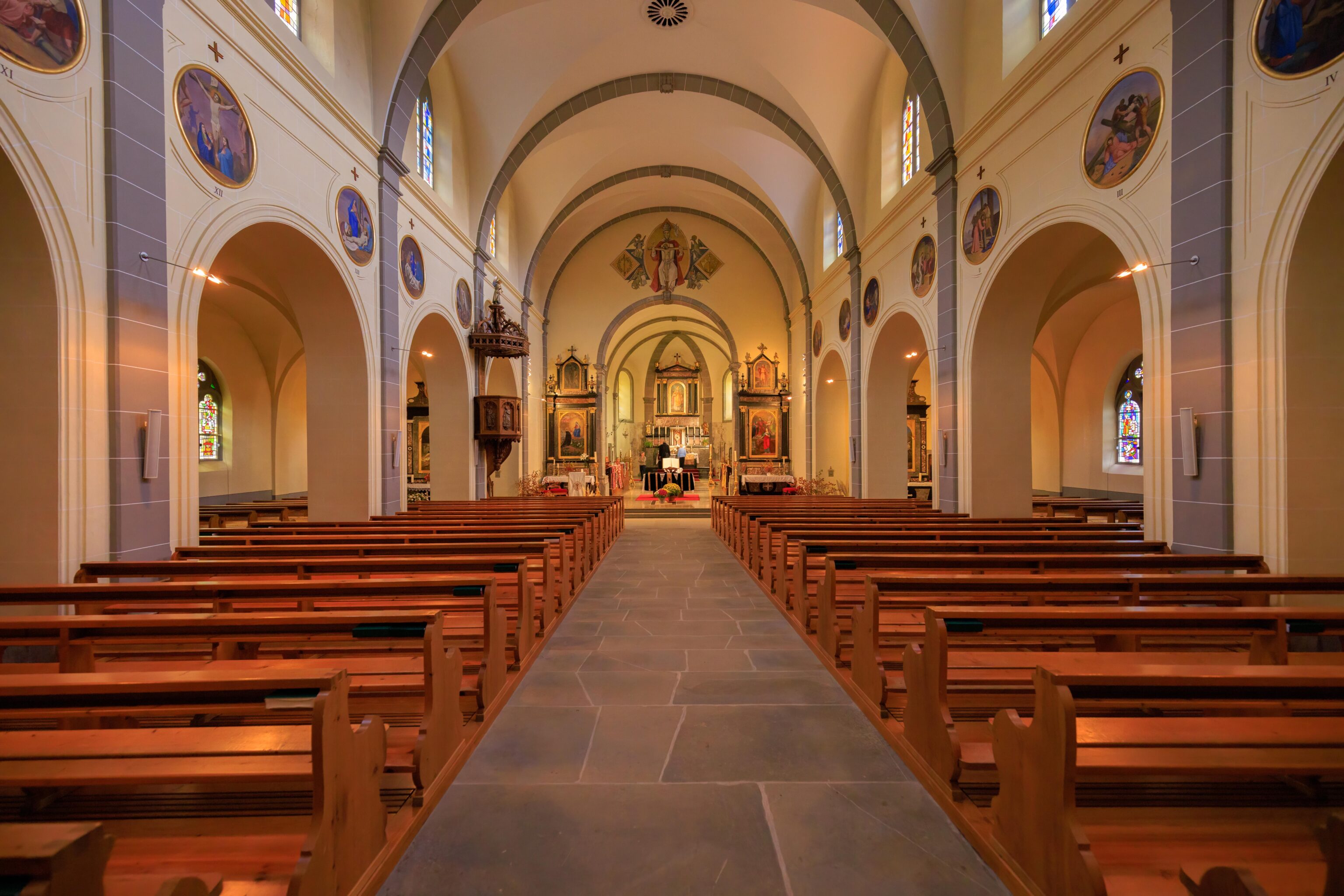
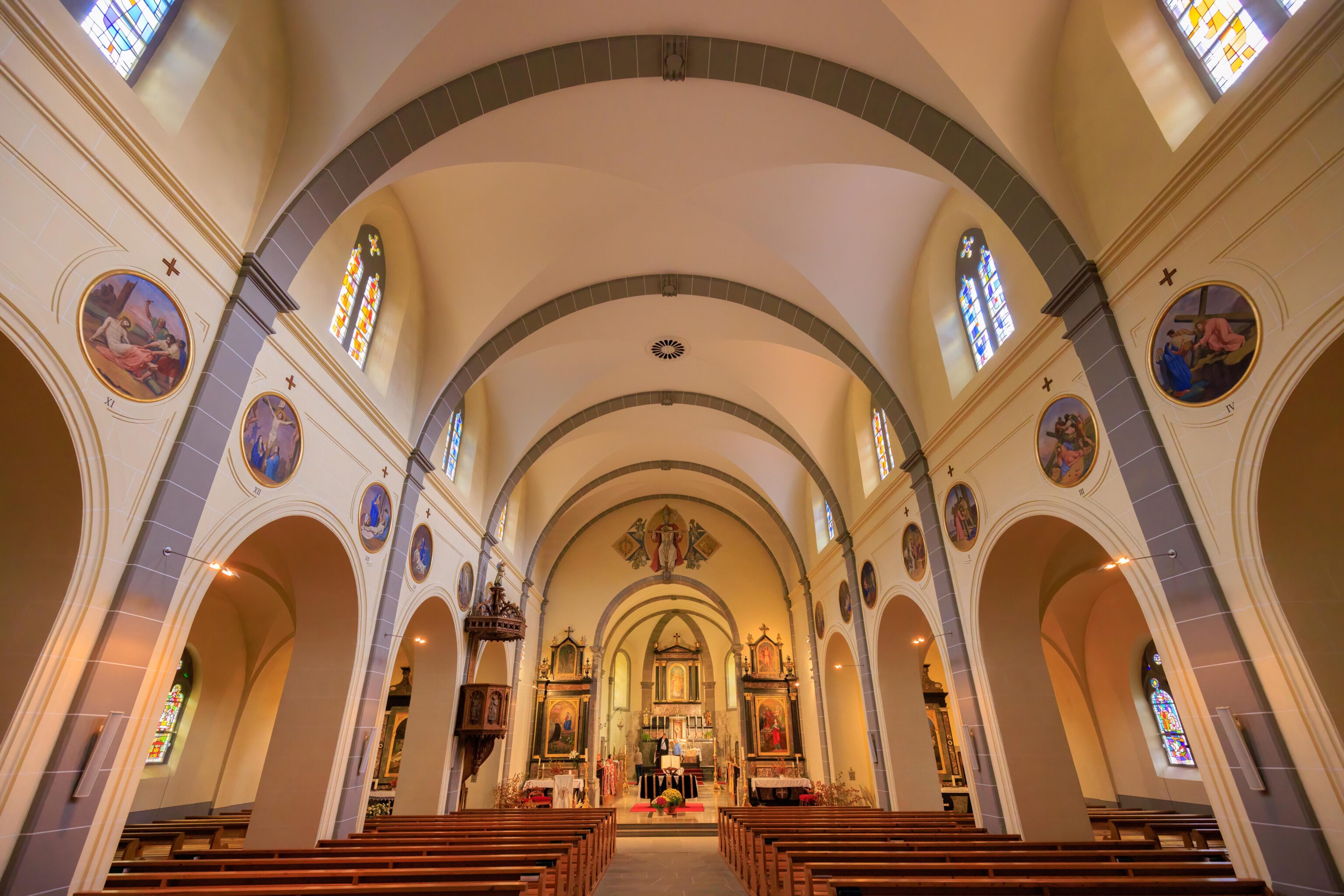
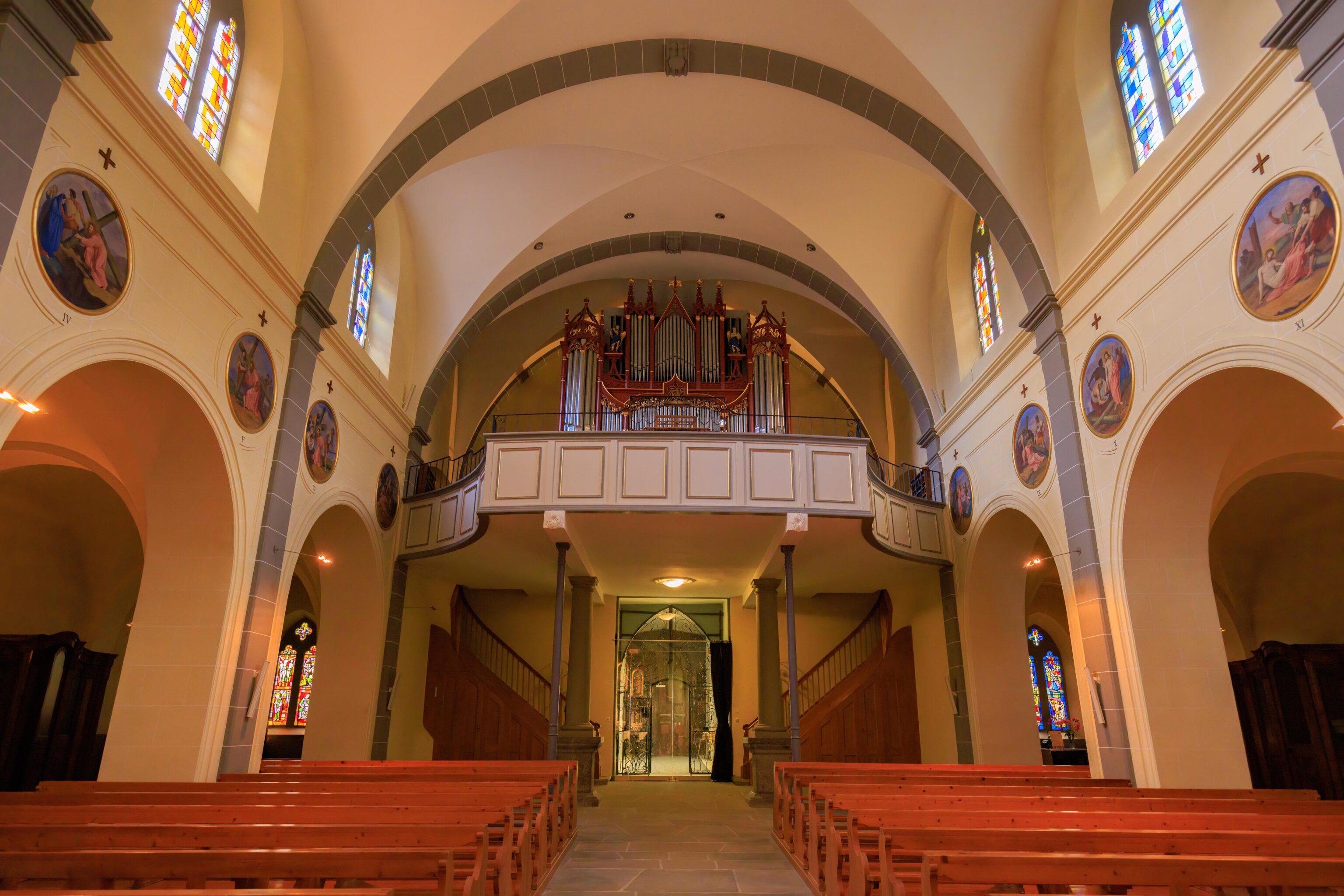
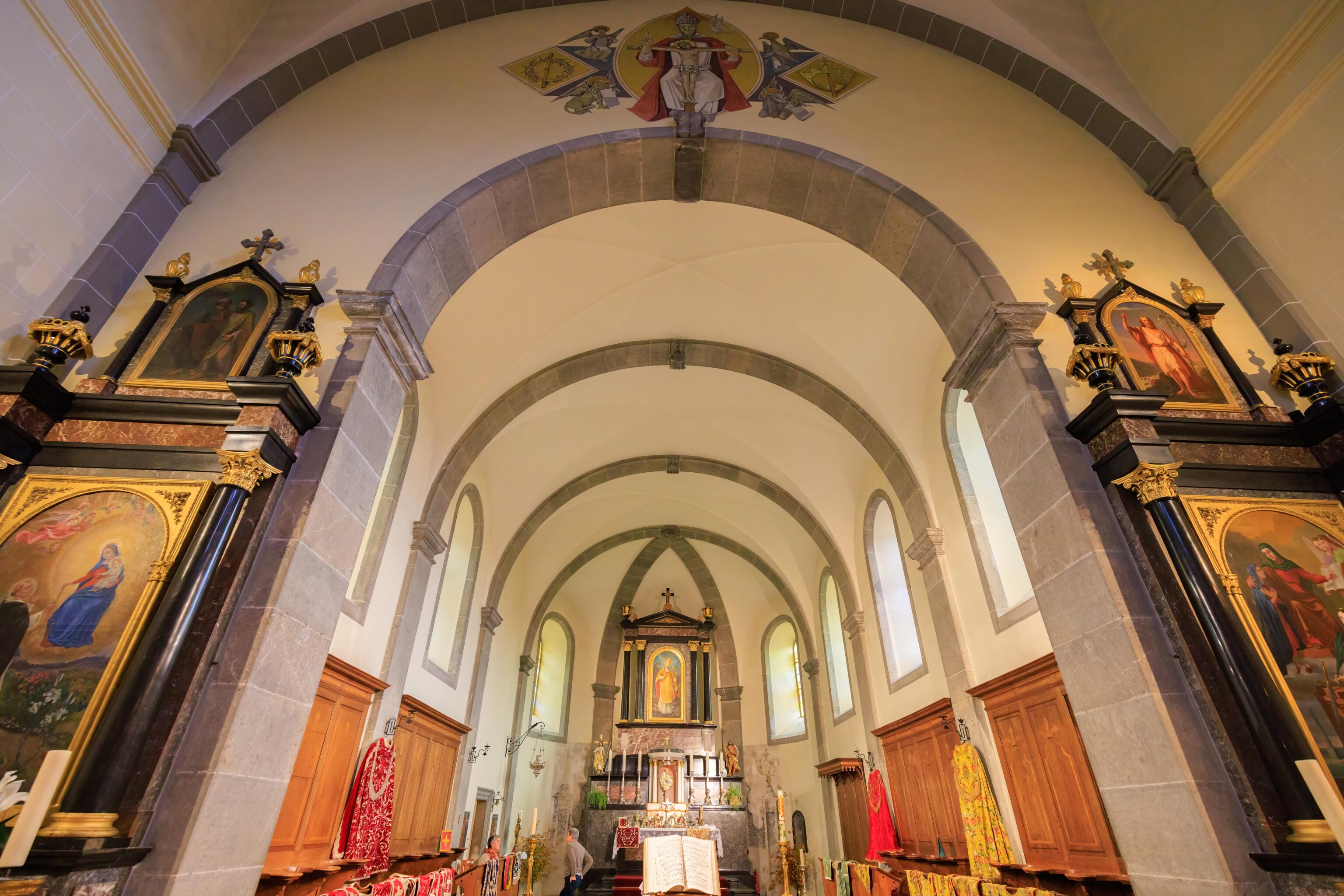
The interior of the church is different yet familiar.
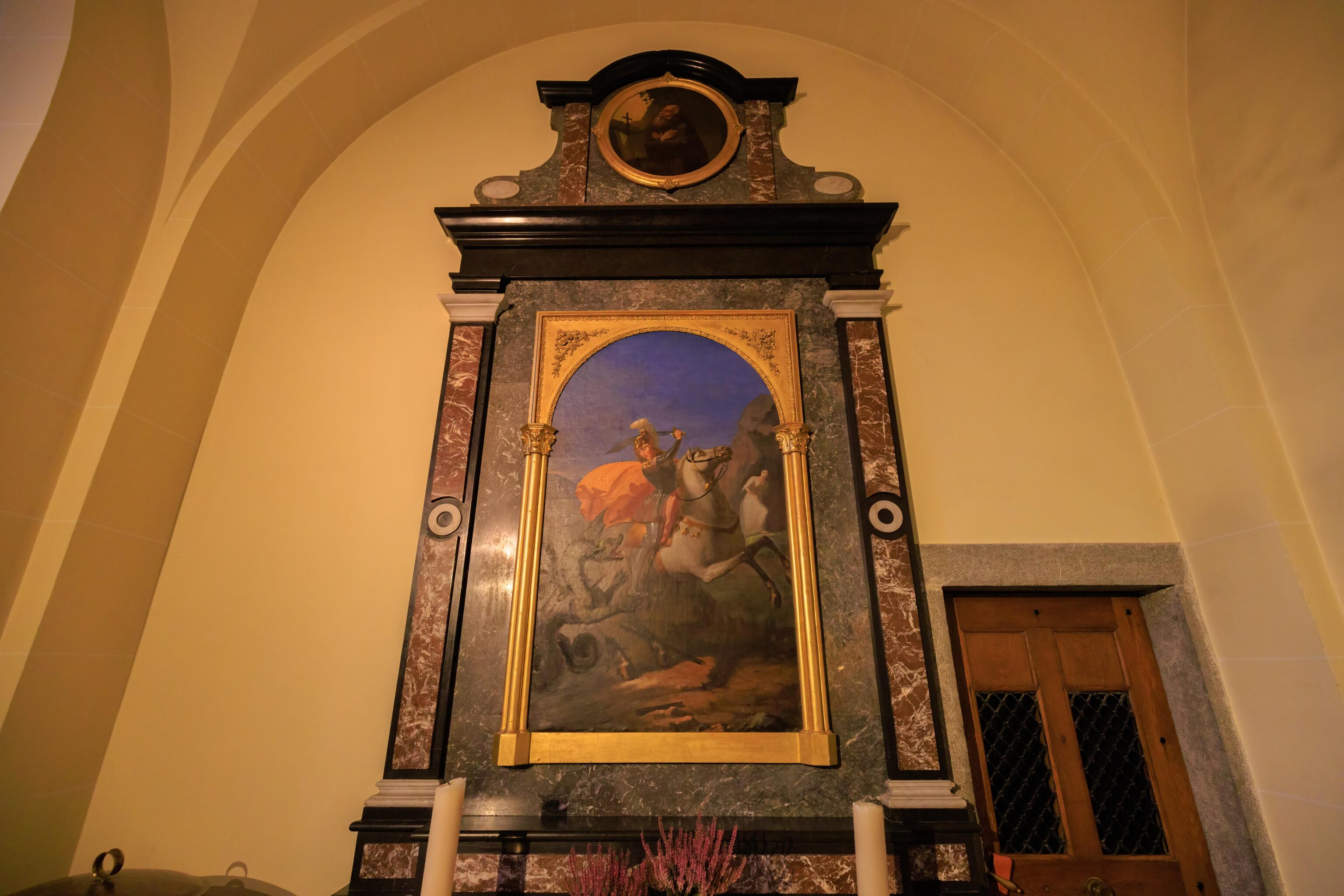
An unknown painting. Unfortunately, we haven’t been able to find any information about it.
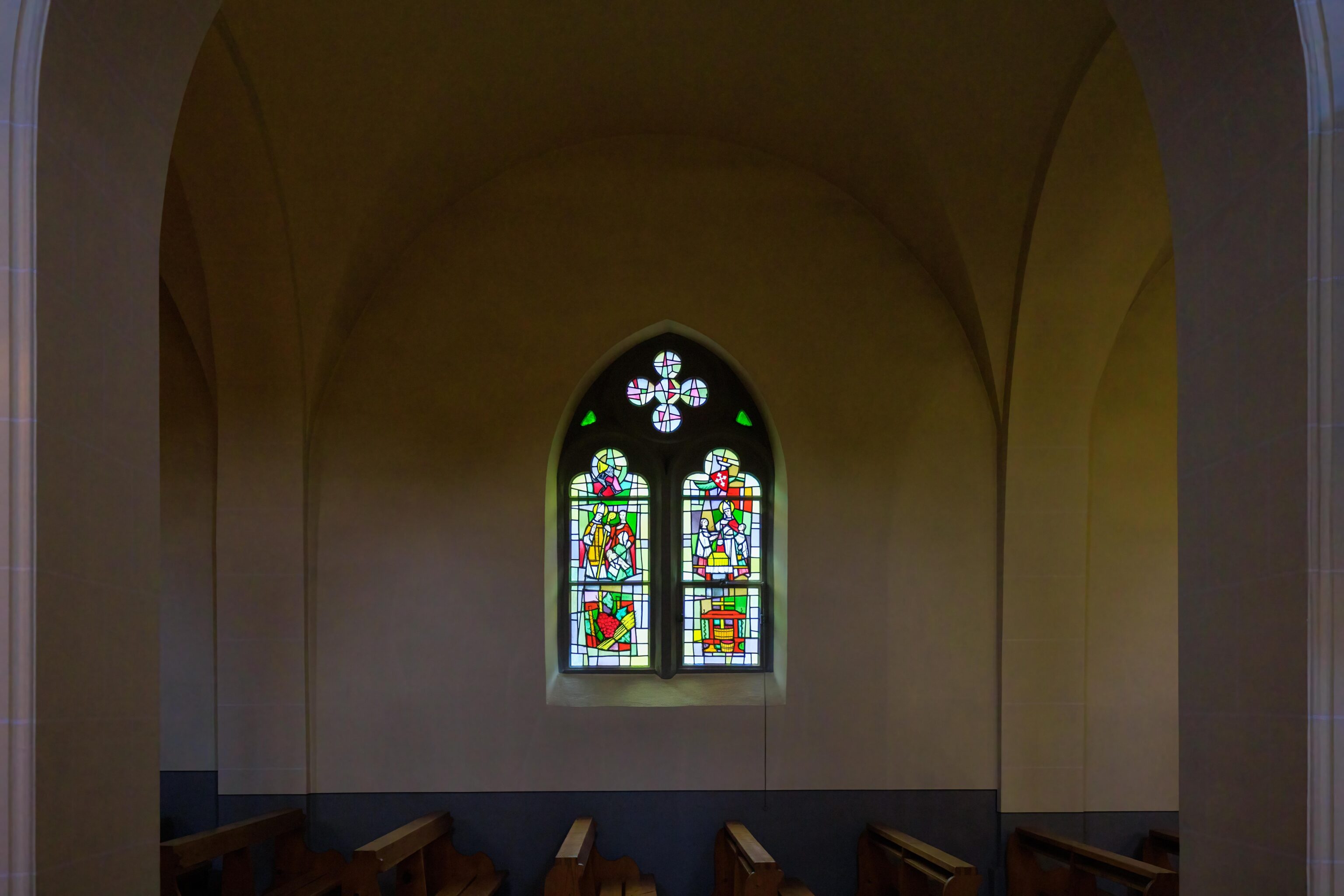
This seems to be the stained glass windows by Yoki, an artist from the local Canton of Fribourg, mentioned in an article the Gruyères town website.
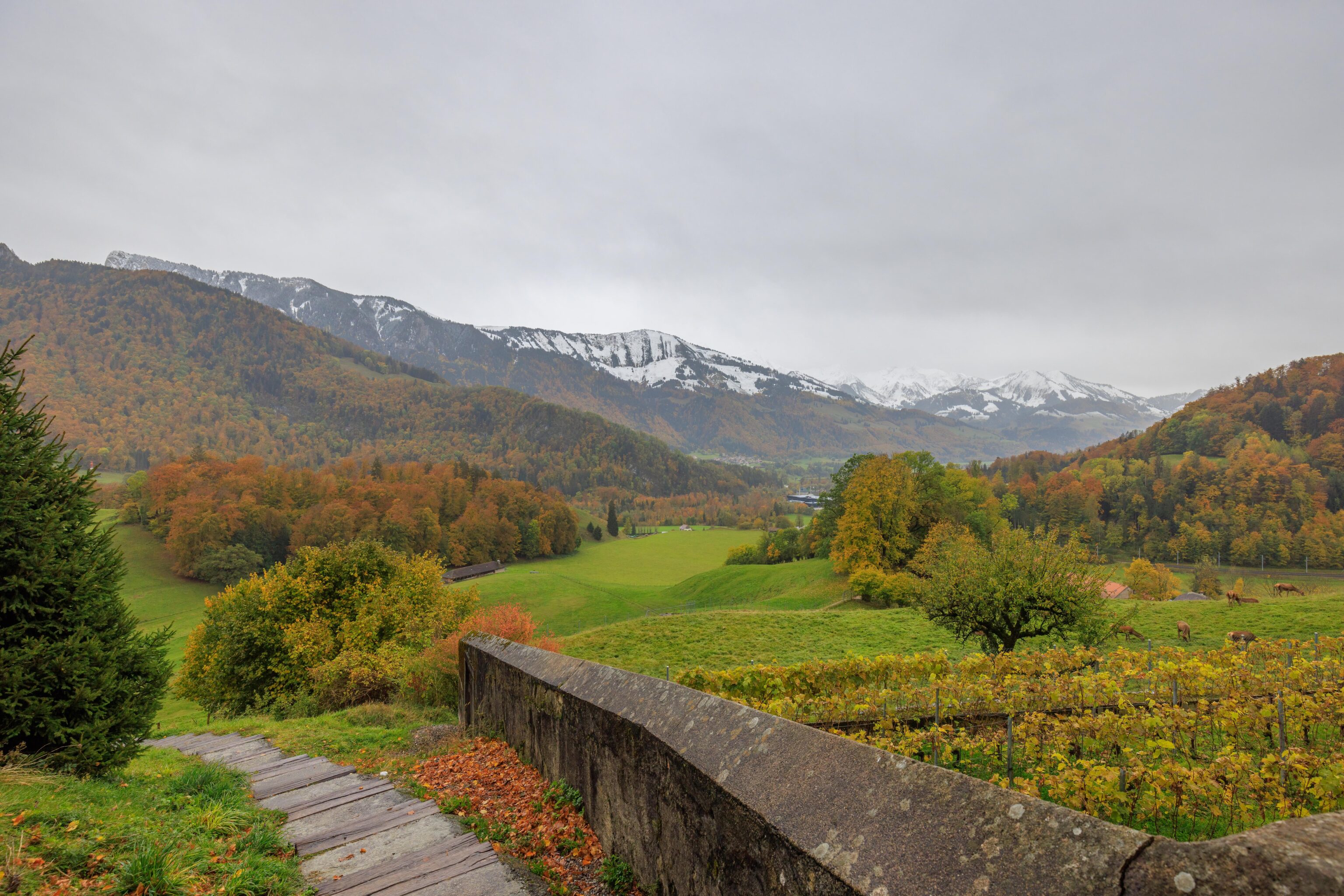
After our brief visit to the church, we took a look through an opening in the castle’s wall to the south. A pretty scene!
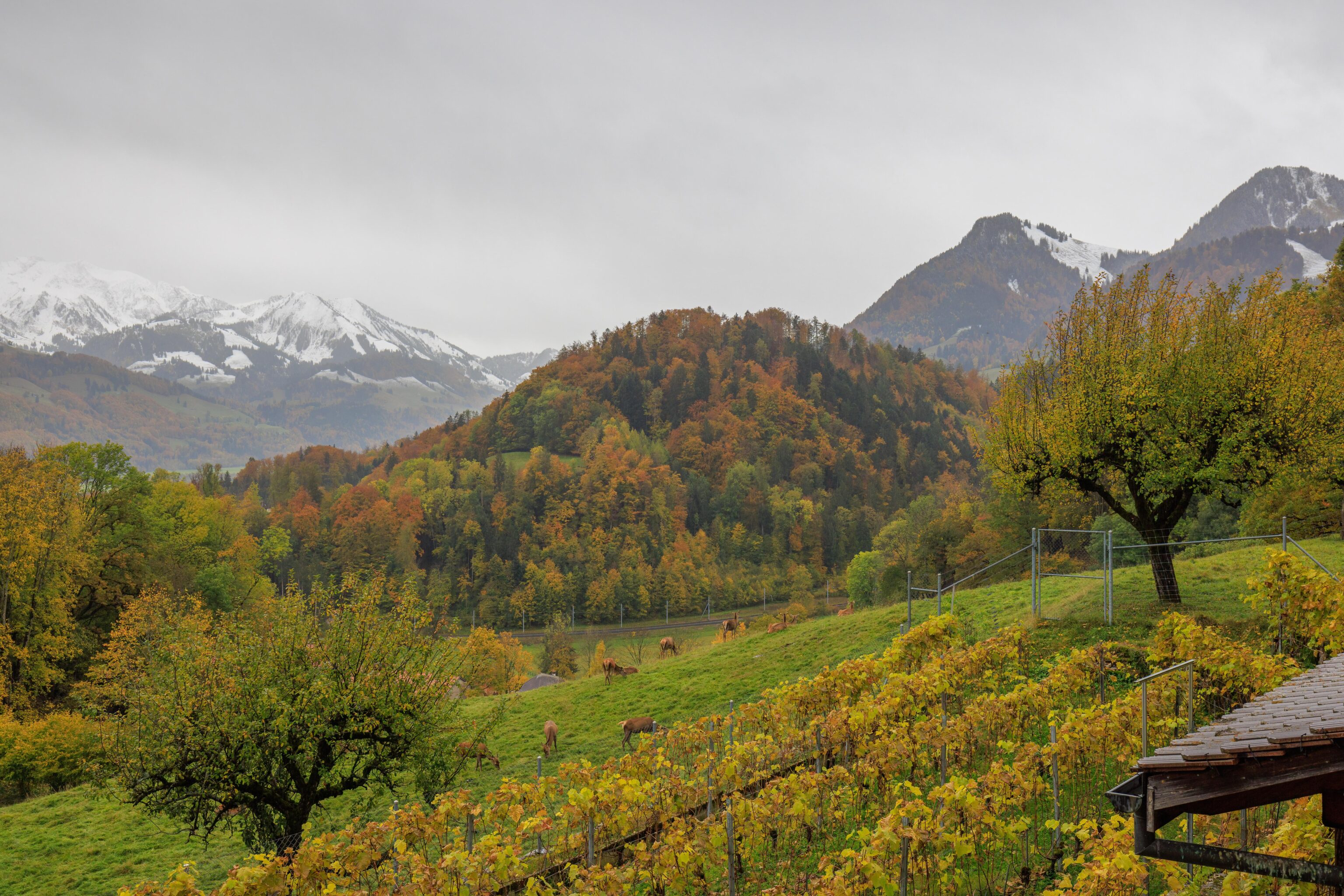
There were some deer grazing outside.
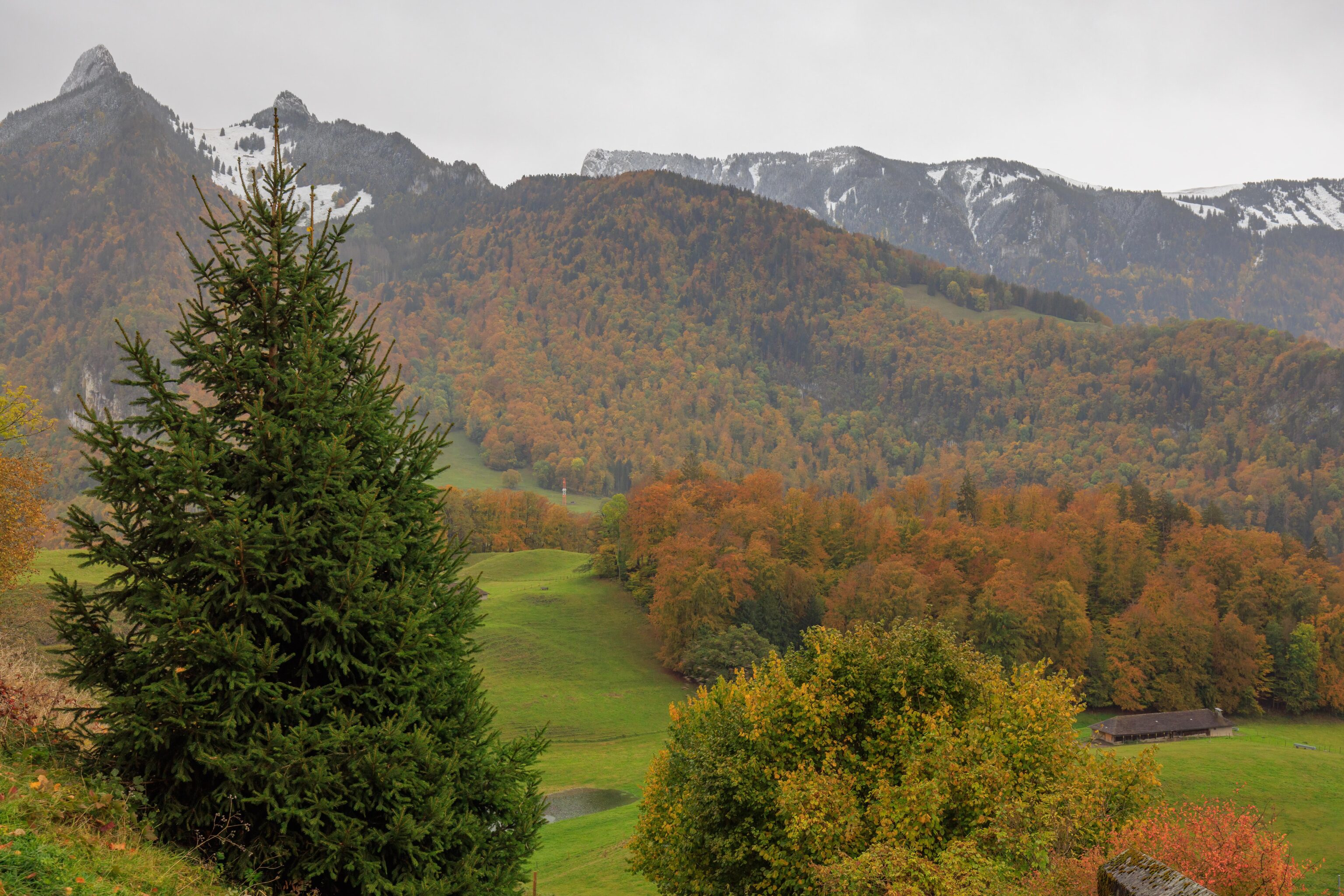
Another pretty scene after stepping outside of the wall.
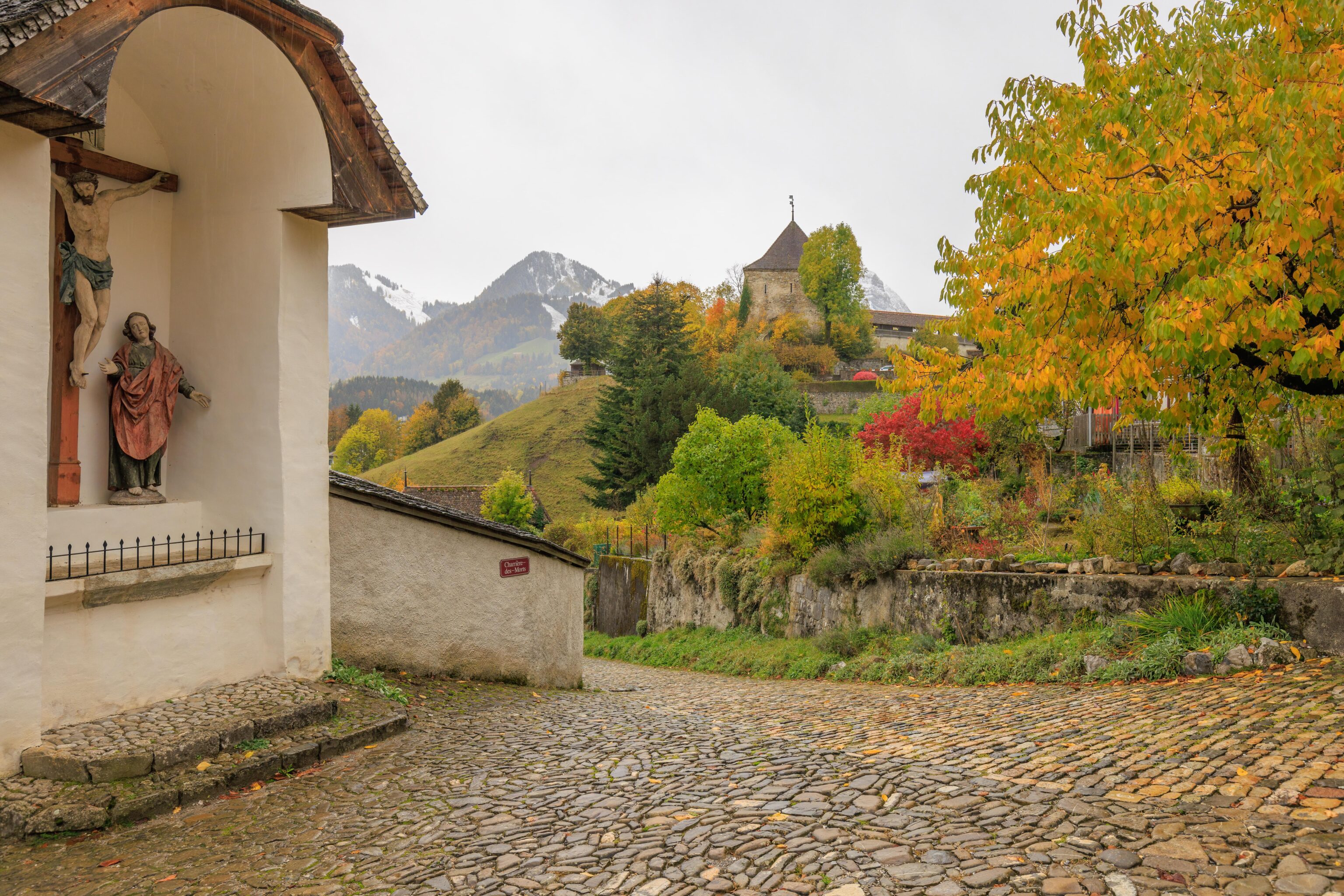
We started to make our way back to the small town within the castle’s wall.
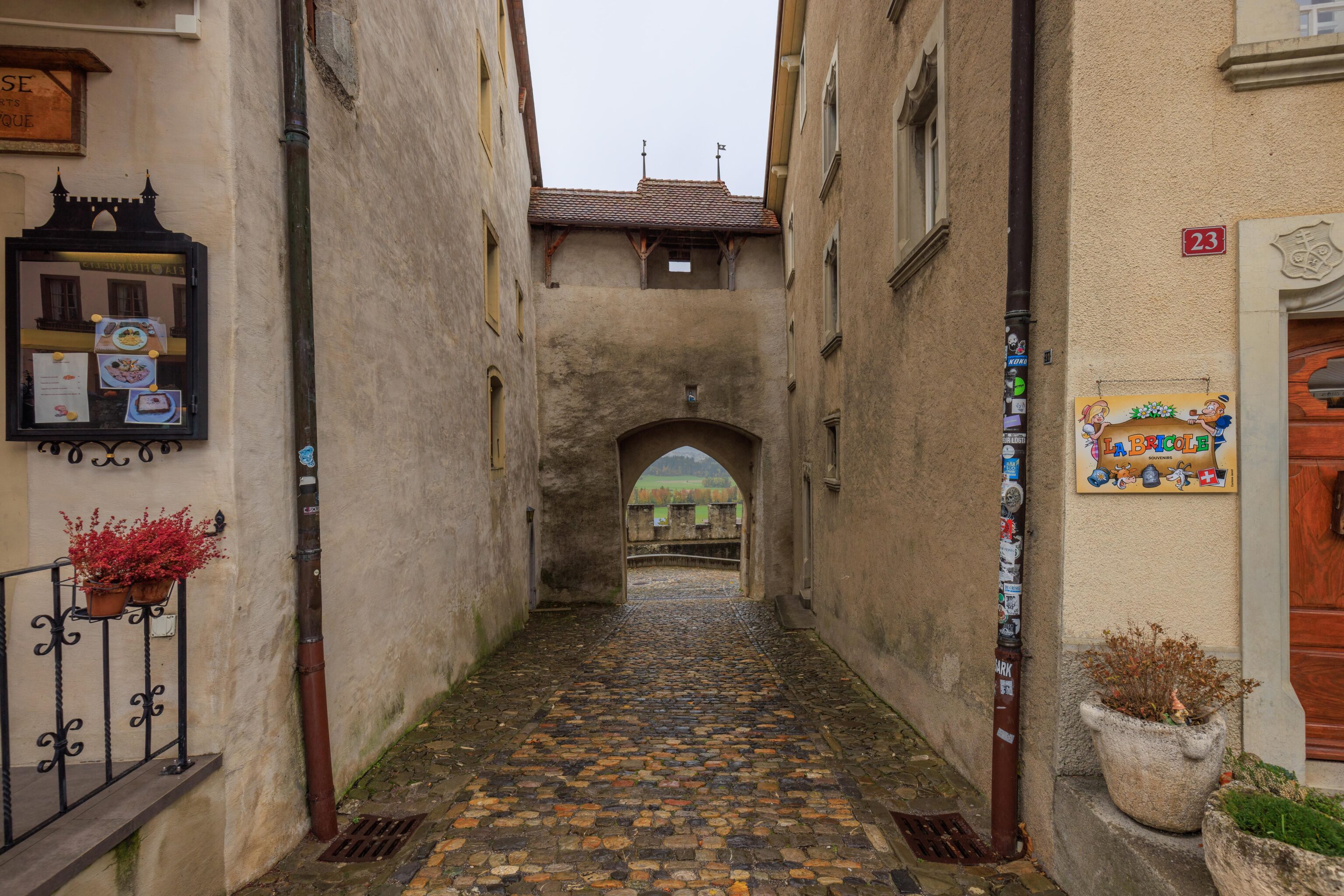
We exited via the path next to the restaurant where we had lunch.
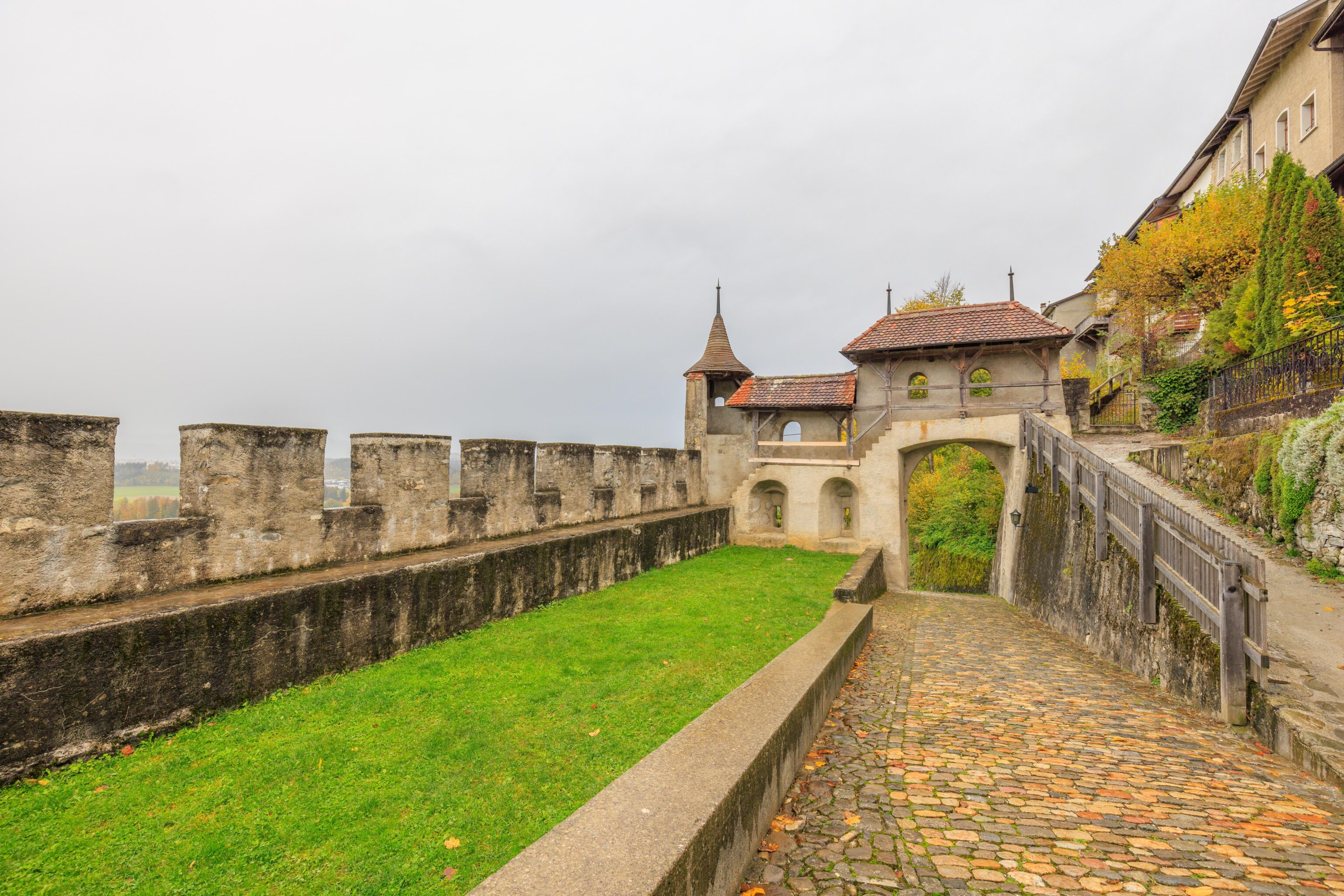
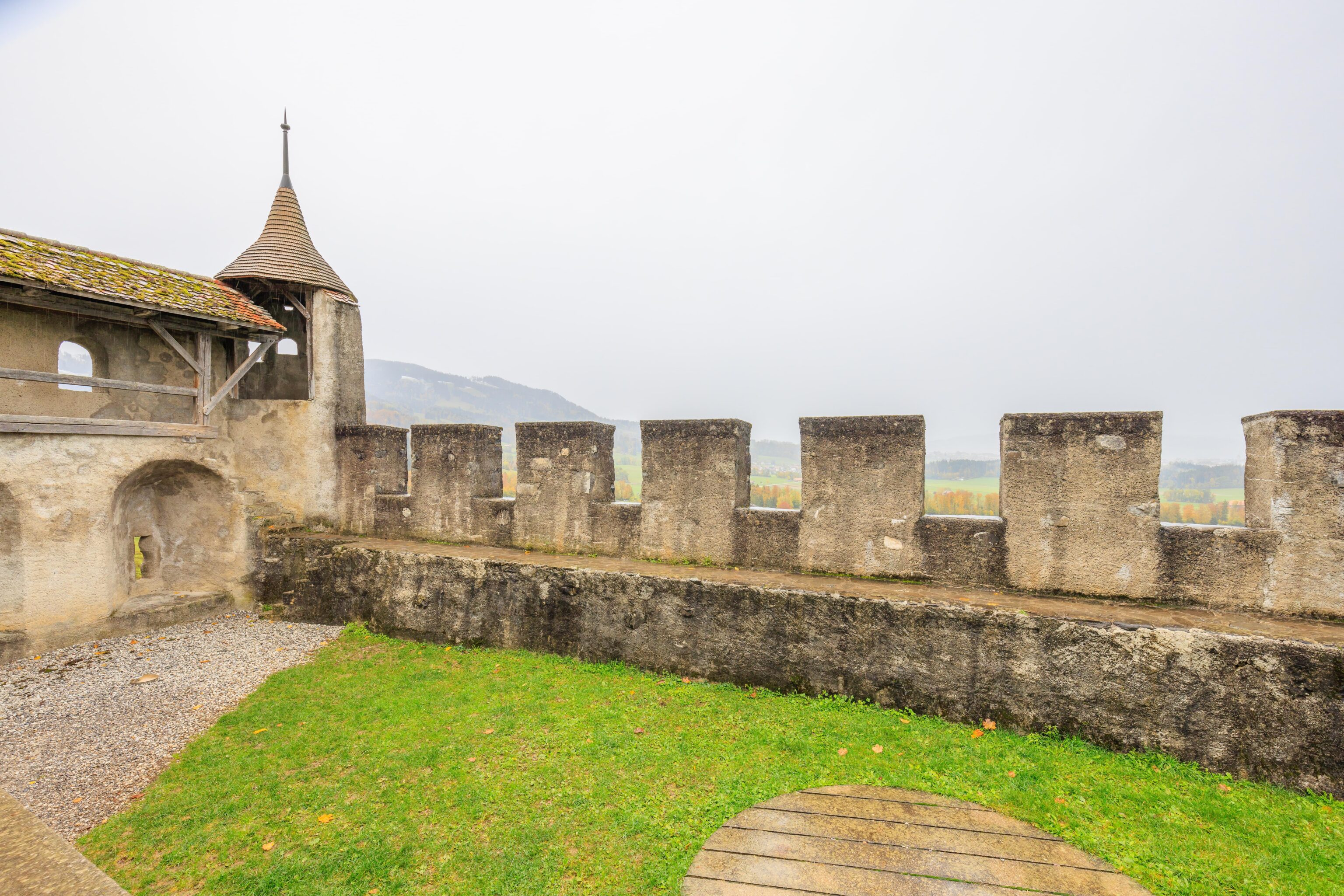
The castle wall here is exactly what we Americans think of when we think of castles!
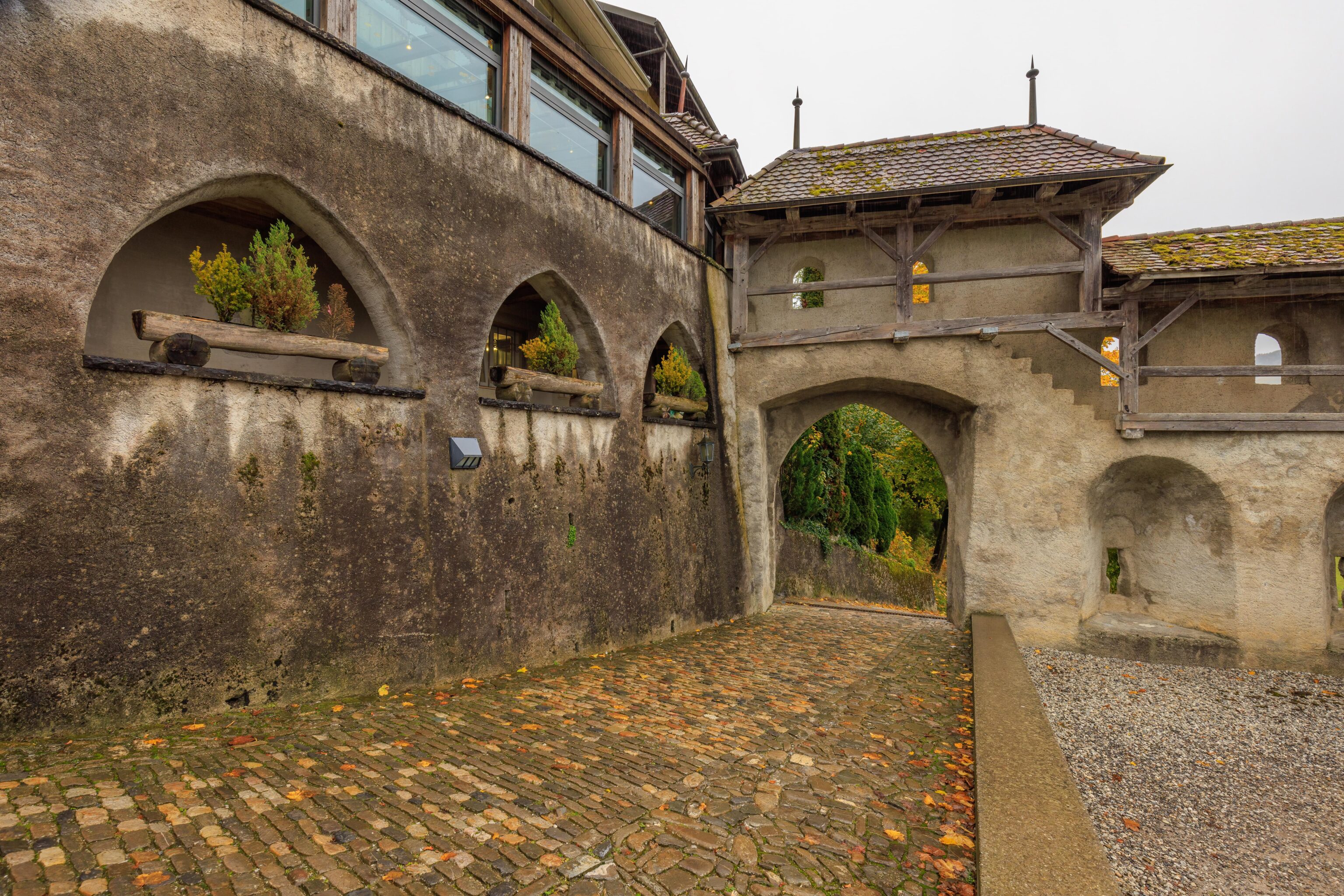
Time to exit though a gate in the wall! The glass windows above are the enclosed patio of the restaurant where we had lunch.
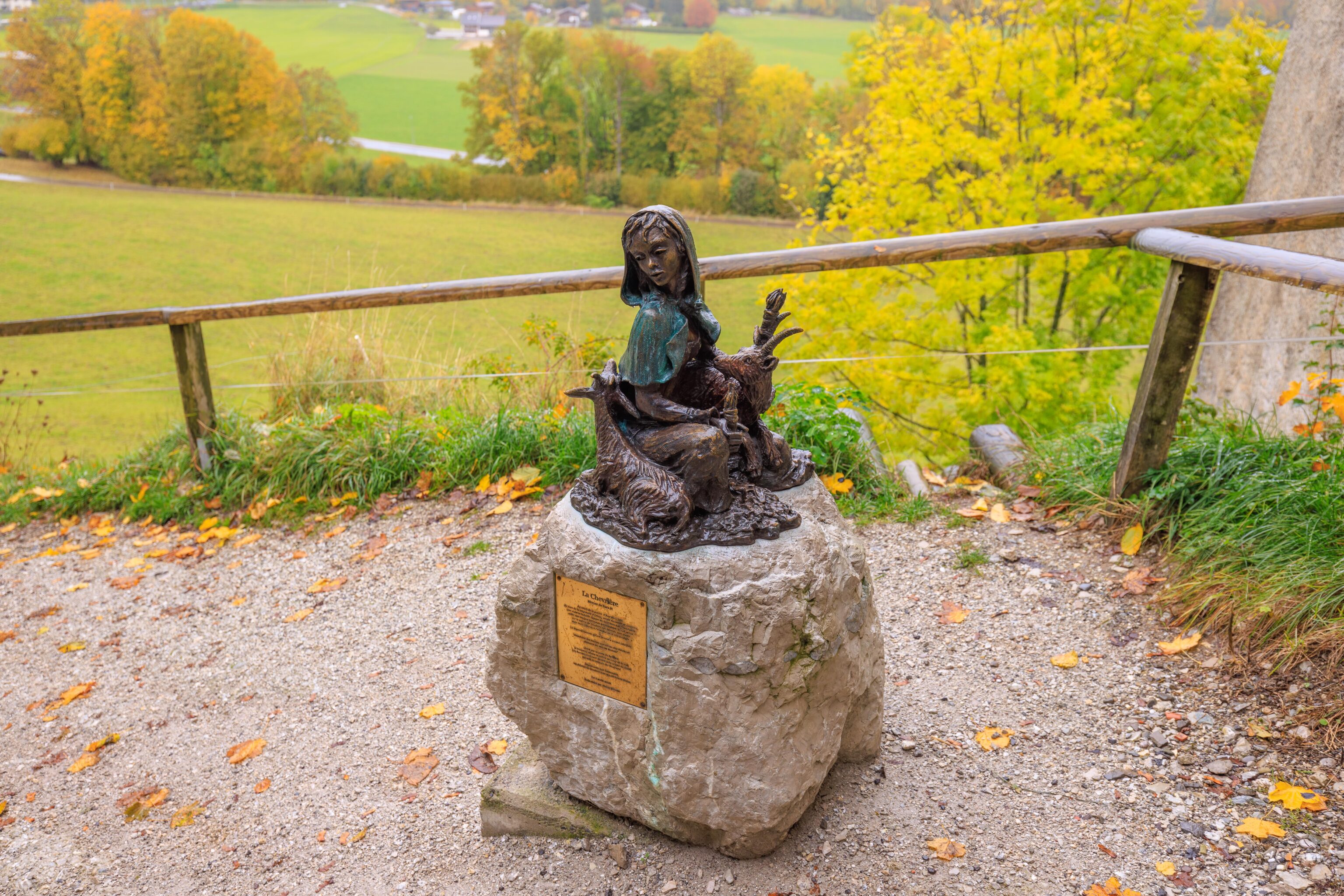
This little sculpture was just outside of the wall. It is La Chevrière by Sara H. Her website has the text that is inscribed on the plaque, translated to English using Google Translate, it reads:
During the War of Everdes (1349), named after the lordship of Othon, vassal of the Count of Gruyères, a violent battle pits the Gruériens against the Fribourgeoises helped by the Bernese troops who march, at nightfall, on the hill of Gruyères. Women are alone with their goats inside the besieged city. Legend has it that a woman had a crazy idea: ‘‘Let us attach torches to the horns of goats and let’s chase them towards the Bernese.” Released by the Belluard gate, the herd rushes down the hill in the dead of night. The Bernese flee before this army of the devil who flies to the aid of the Gruériens. Since that memorable night, Gruyères goats are regularly celebrated.
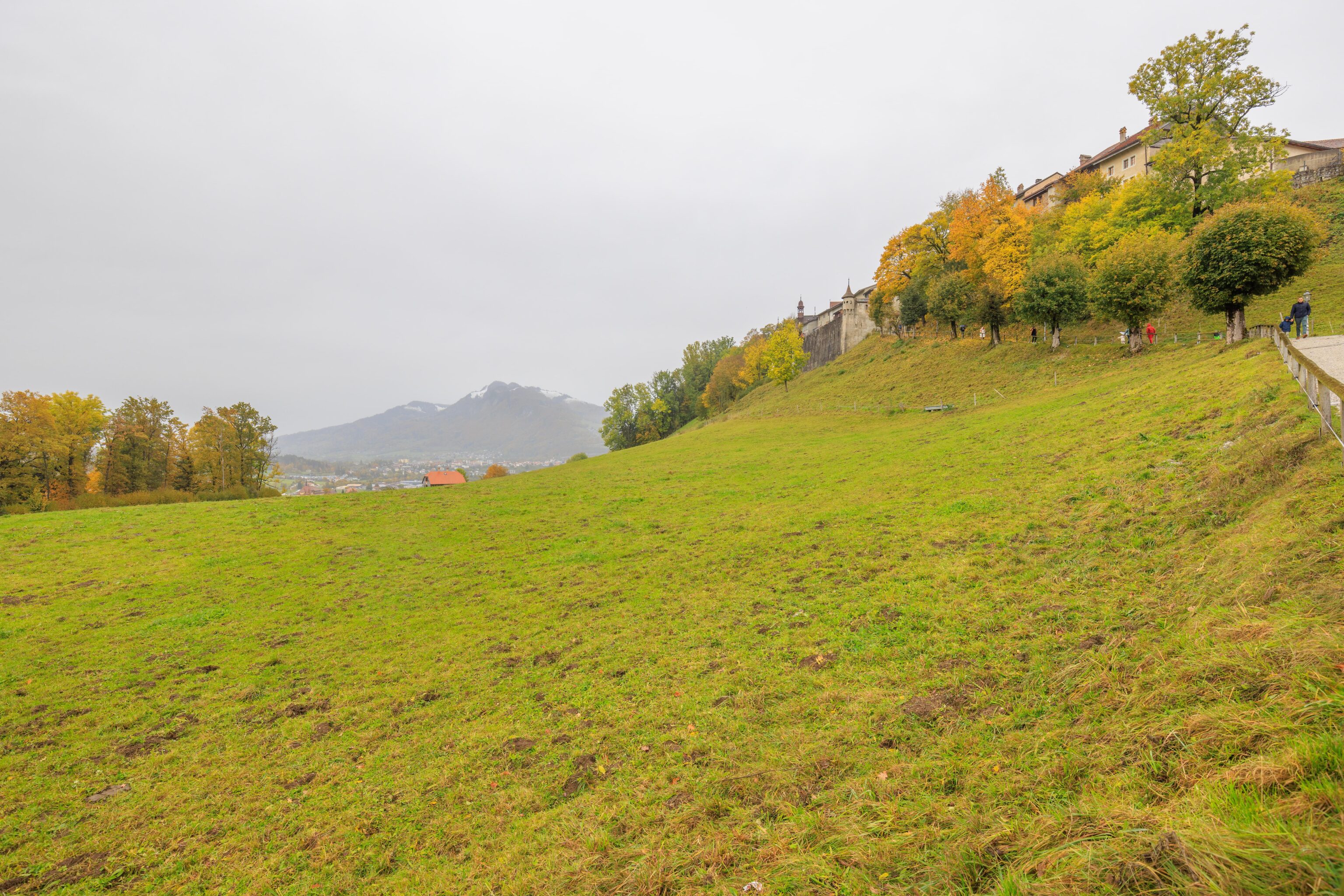
We walked down the steep path that we saw when we first arrived. Luckily, traction was good despite the rain!
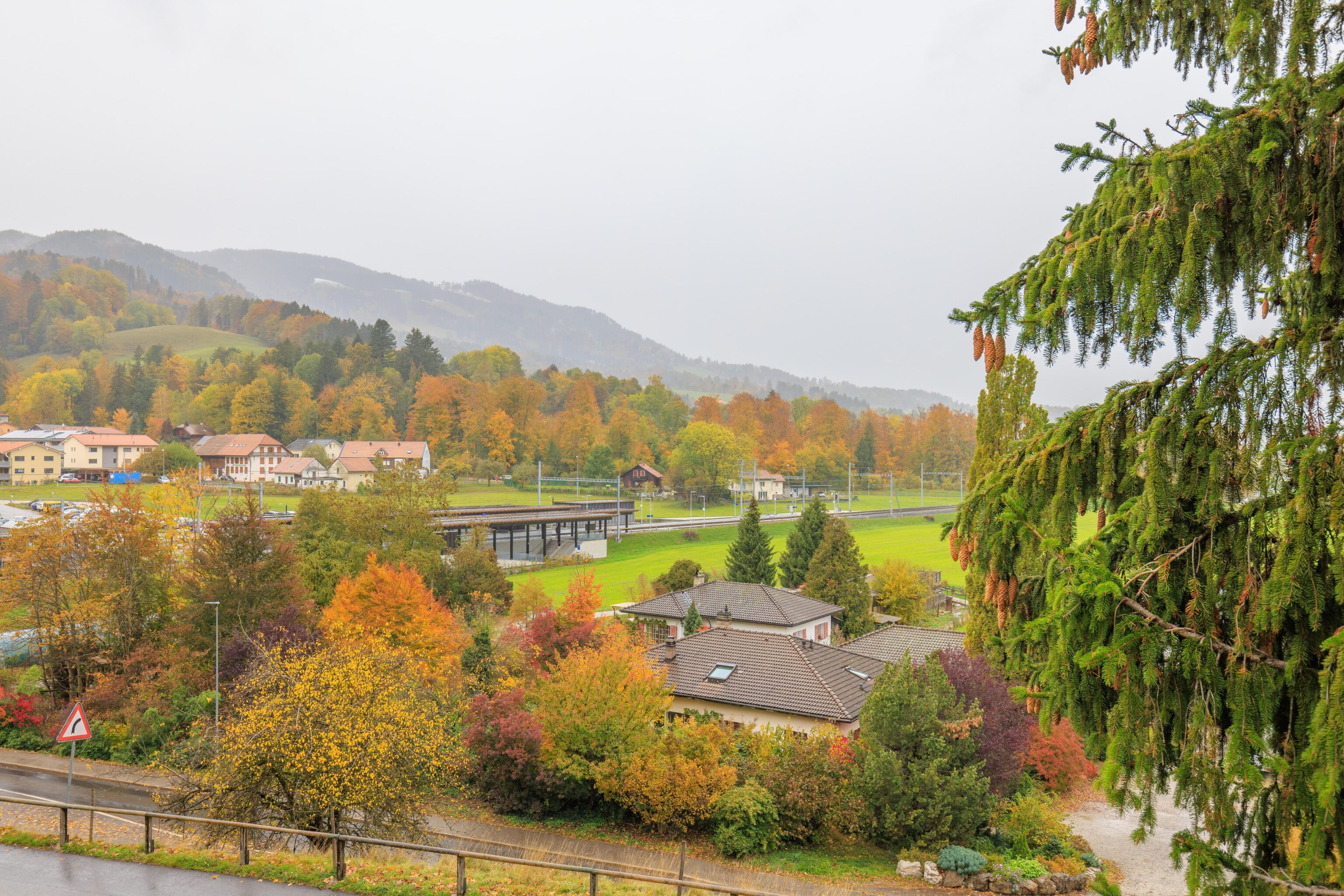
We continued walking until we reached the road. We followed the road via sidewalk until we saw the train station ahead of us.
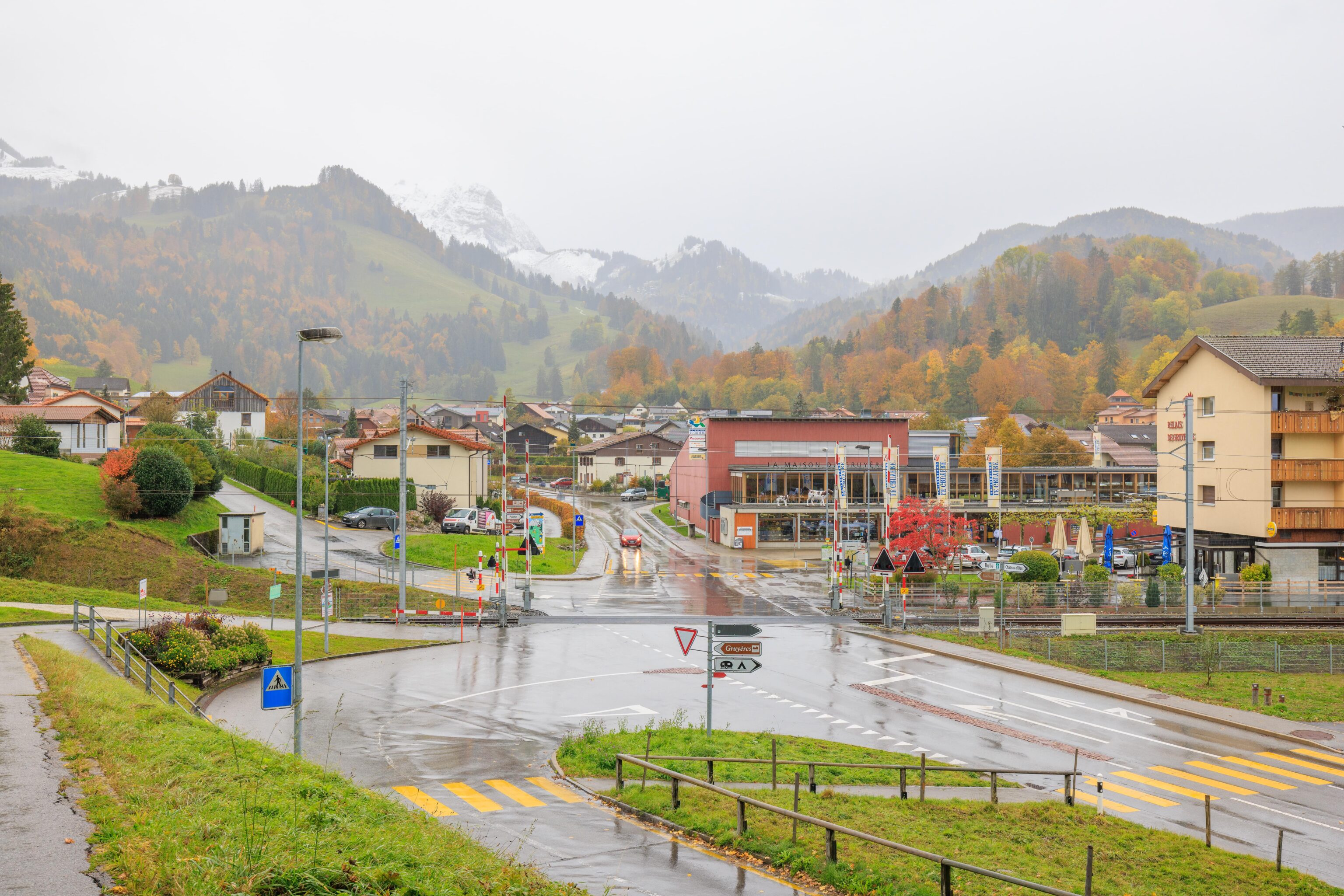
Here we are again, almost back to where we started! We crossed the railroad tracks and entered the La Maison du Gruyère.
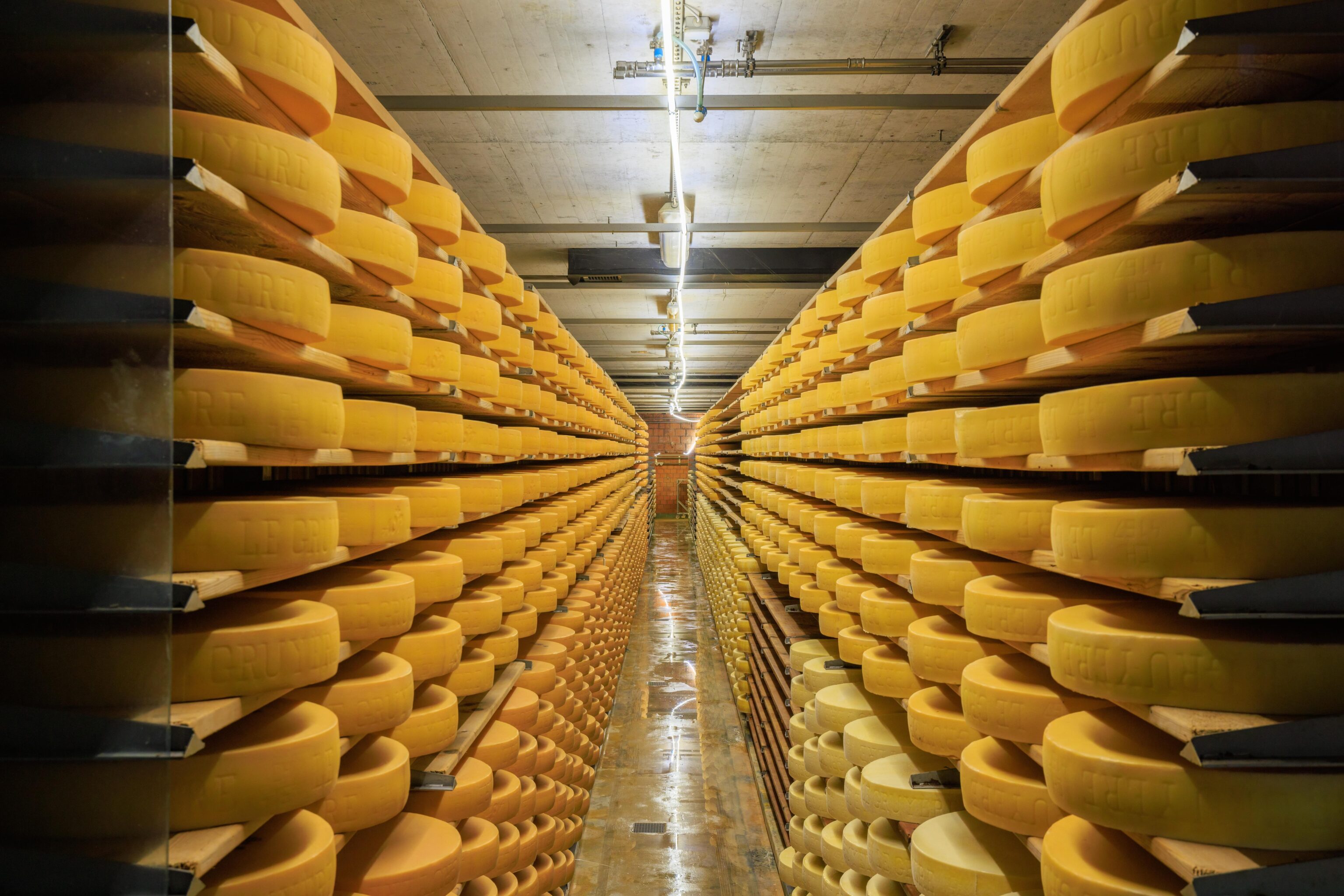
Unfortunately, we found out that although the cheese demonstration room was open, there were no more live demonstrations for the day. Boo! We skipped visiting that area as it required an entrance fee. Luckily, the ticket agent told us that there was nothing to see!
We were able to see the cheese cellar though where the cheese is aged. Maybe some of it will end up at our local Wegmans supermarket?
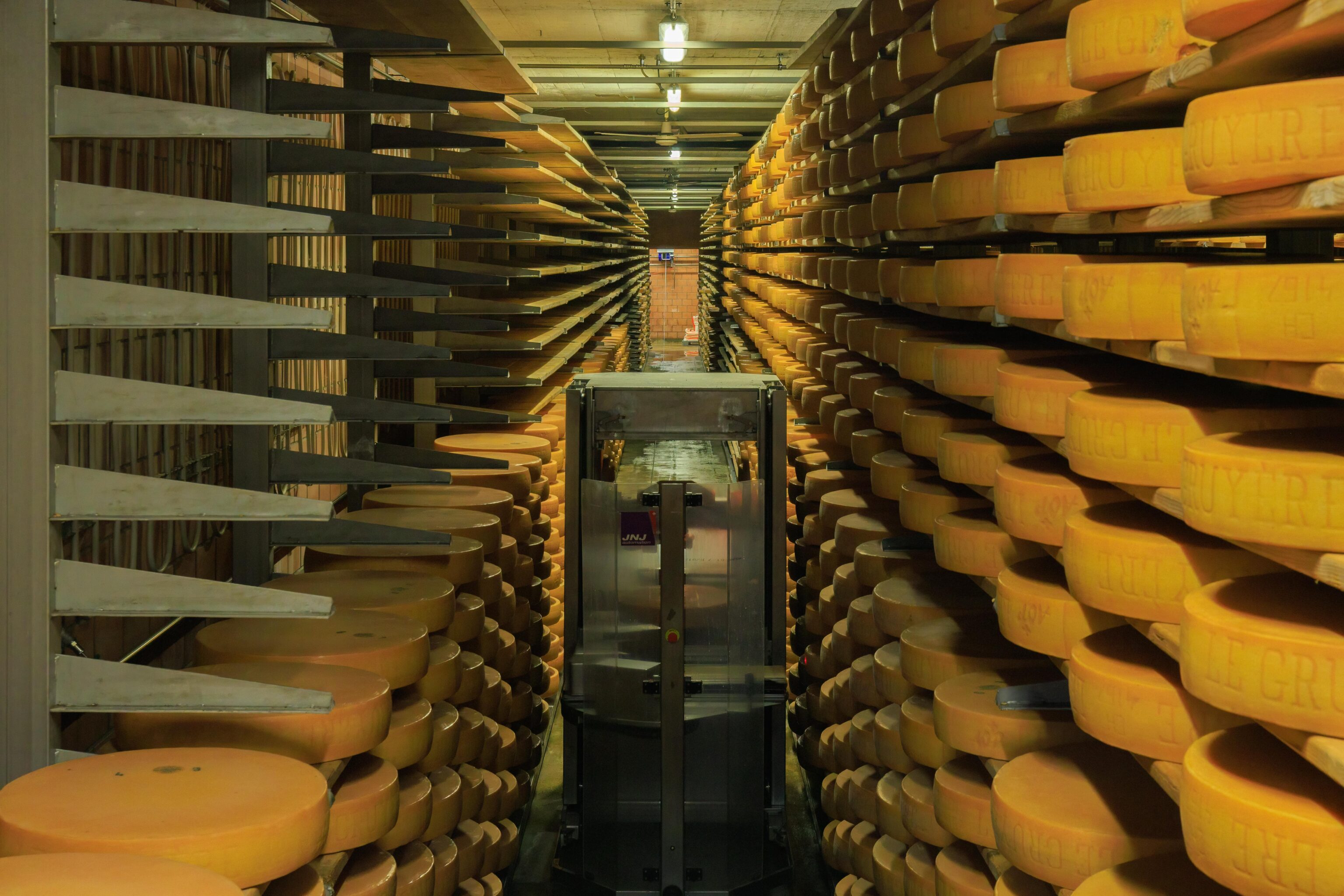
This robot takes a wheel of cheese off of the rack, flips it, and puts it back on. It is a very slow process!
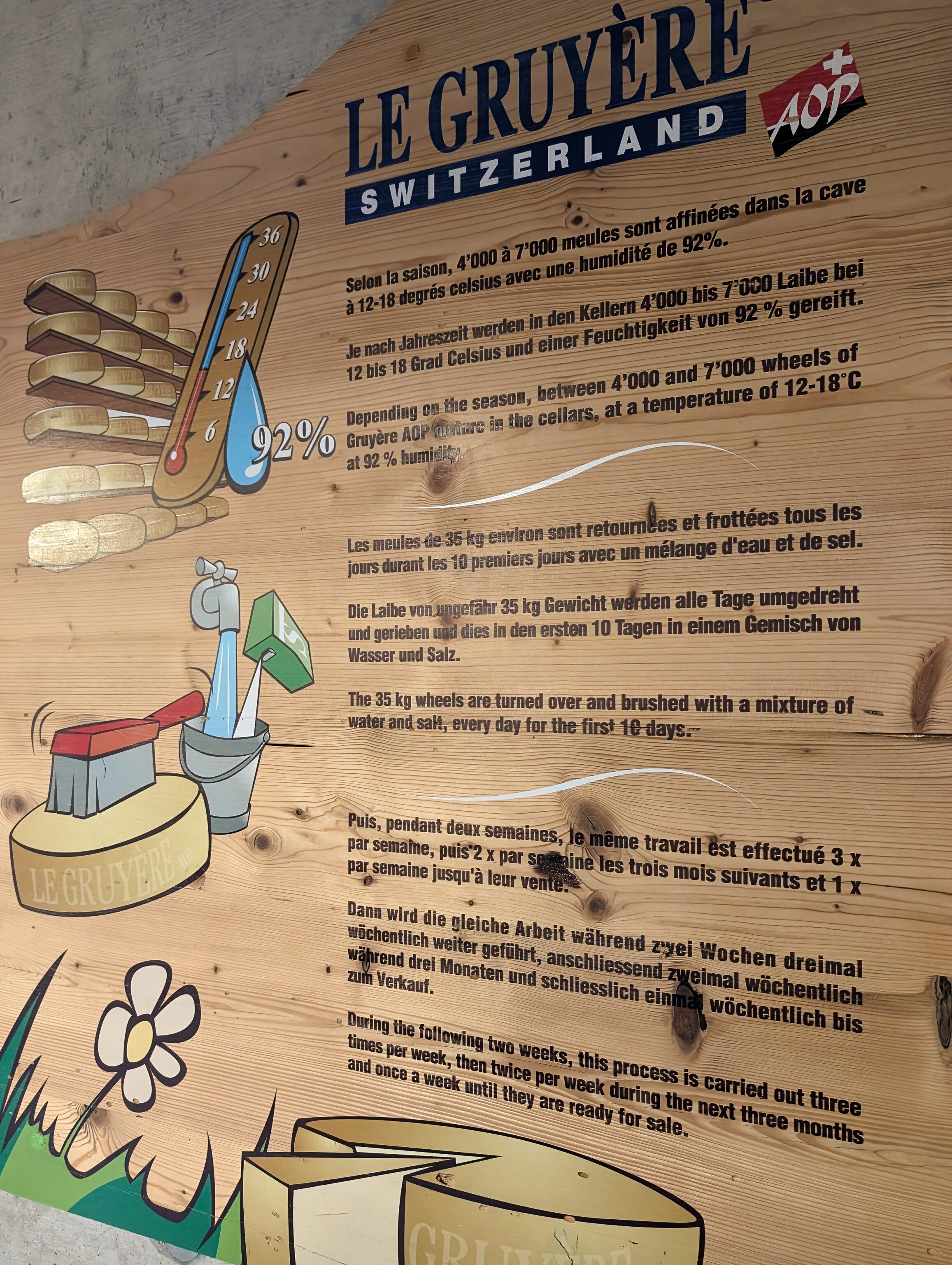
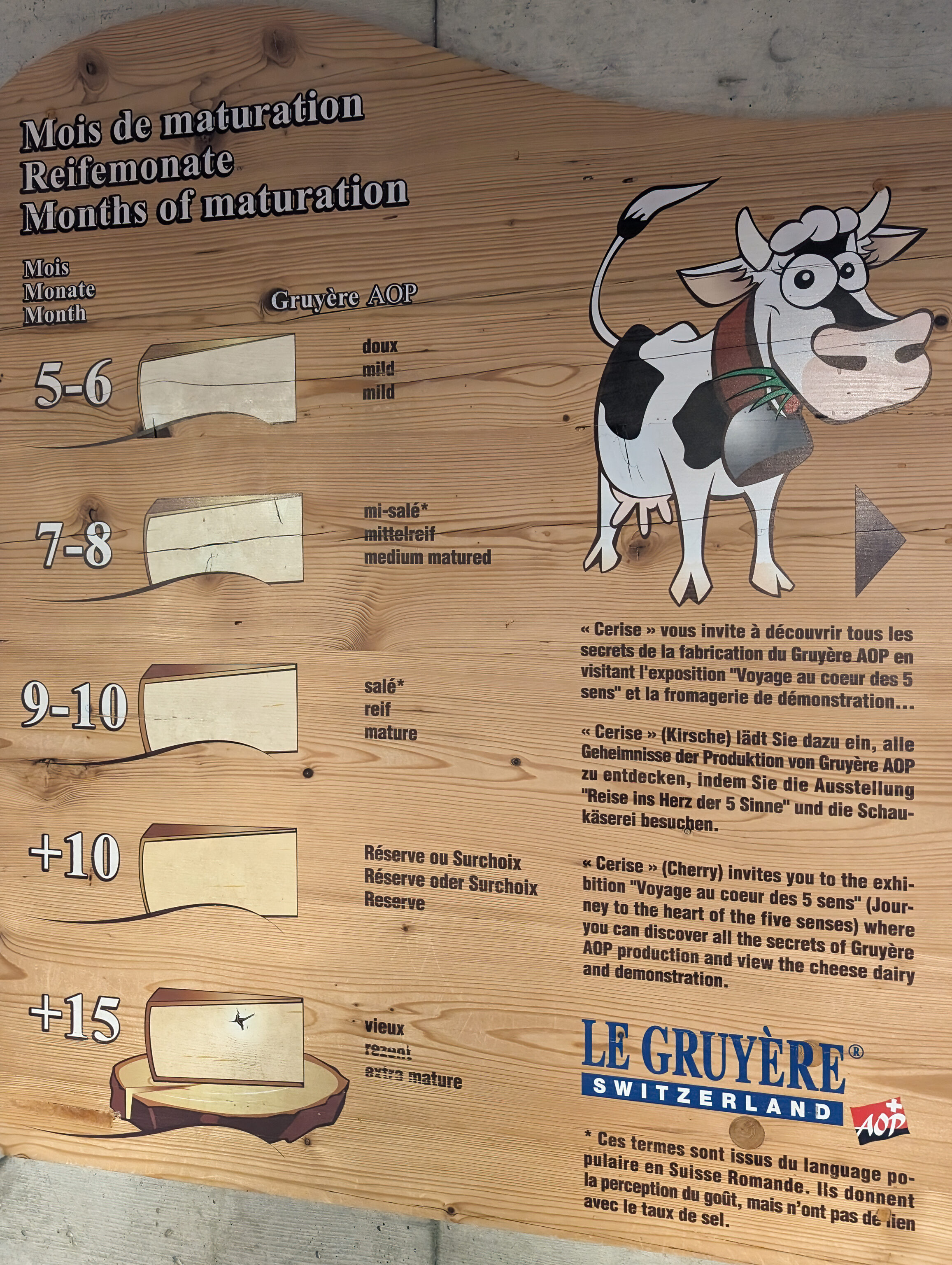
A little bit of information about Gruyère cheese.
We did visit the shop afterwards and bought some local Gruyère cheese along with some Swiss chocolate.
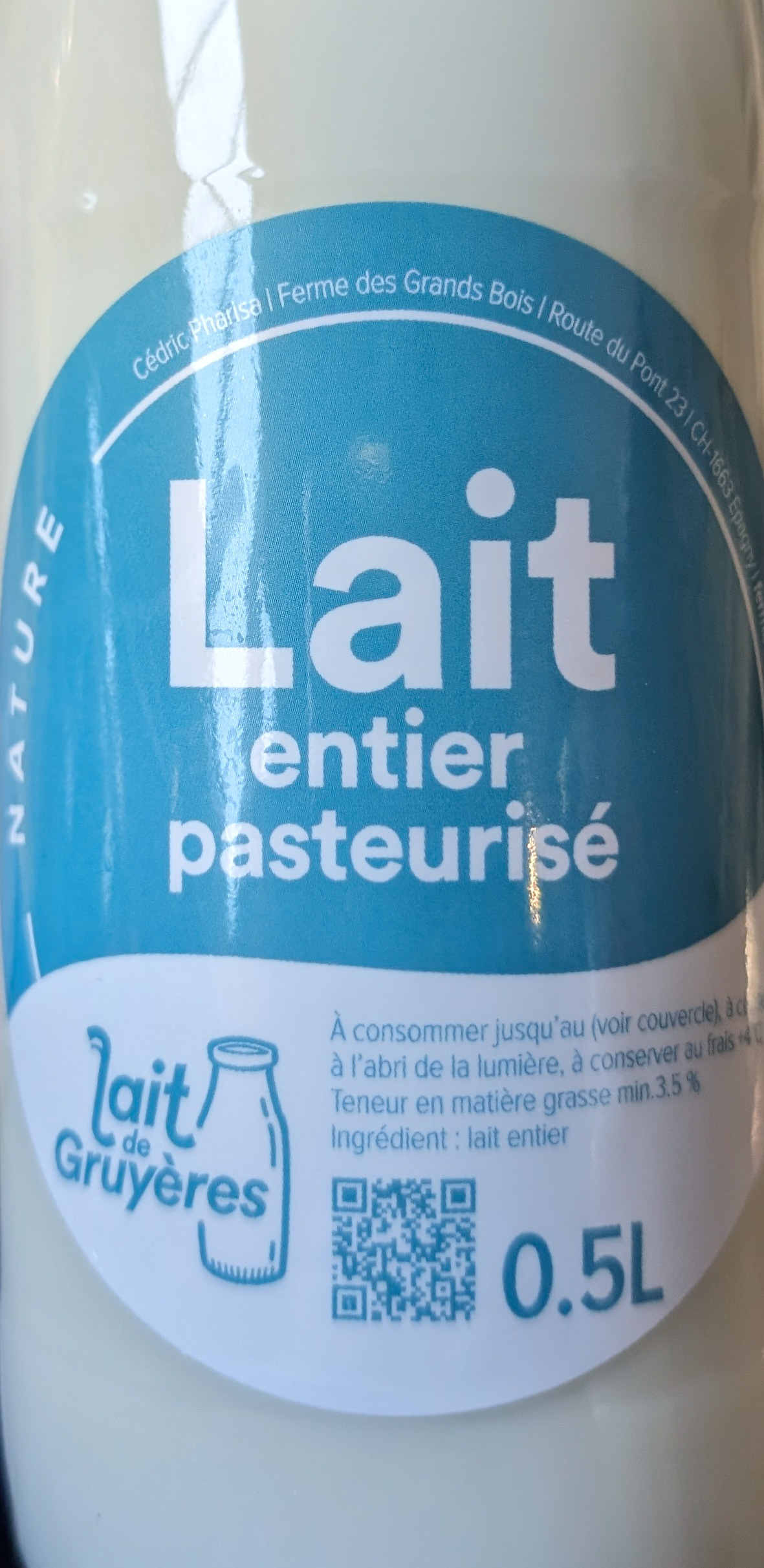
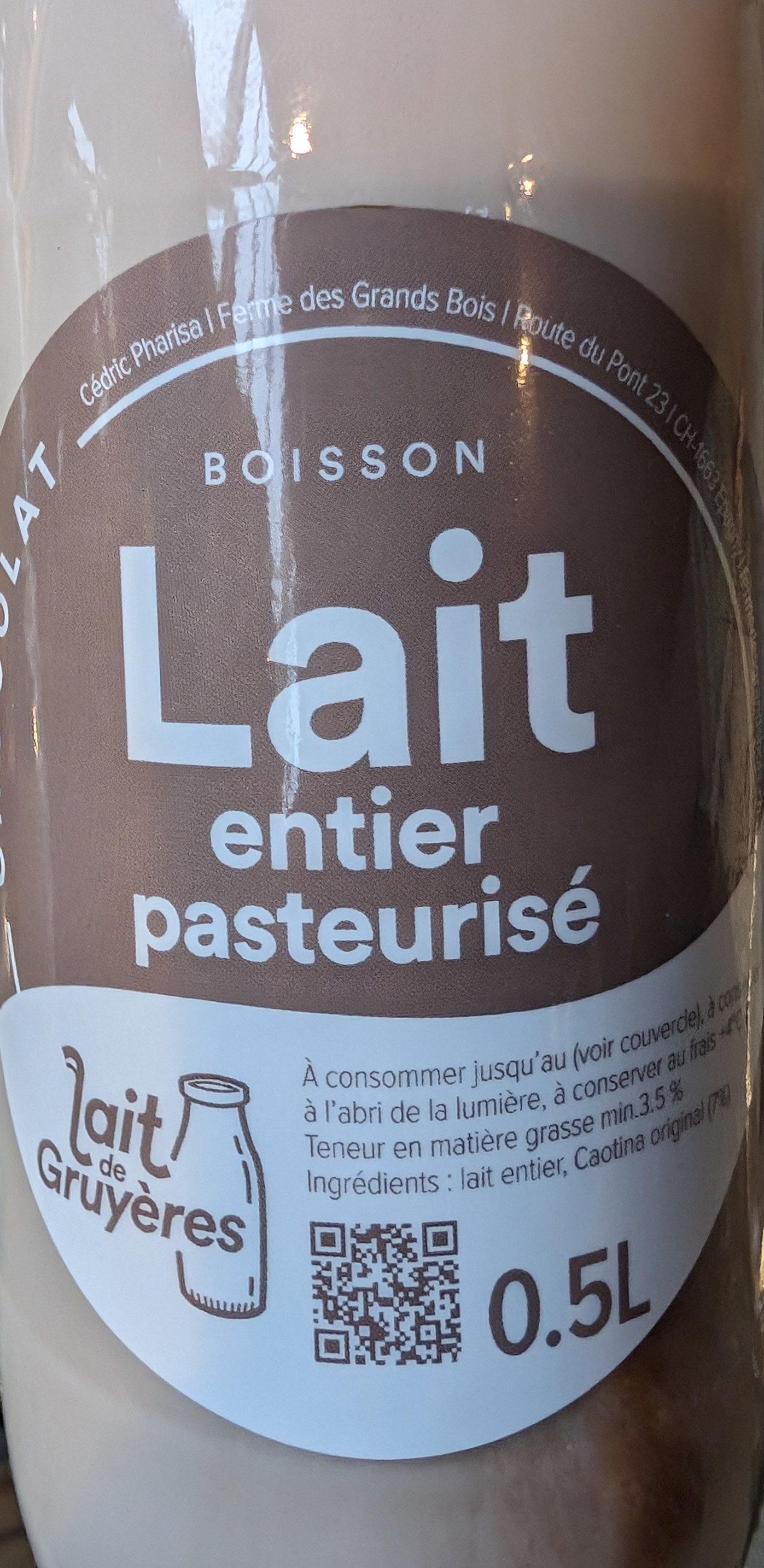
We also bought some local milk! It is from a local farm less than half a mile away from the castle!
The chocolate milk is very different from chocolate milk in the US as the chocolate flavor is very light. Overall they both seemed different from American milk, though it’s hard to describe what that difference actually is. Wikipedia states, “Homogenized milk tastes blander but feels creamier in the mouth than unhomogenized.”3 Maybe it is that, American homogenized milk seems creamier? I don’t know if we’ve ever had non-homogenized American milk.
The milk came in glass bottles so we drank it all there so we could return the bottles for a refund of the bottle deposit!
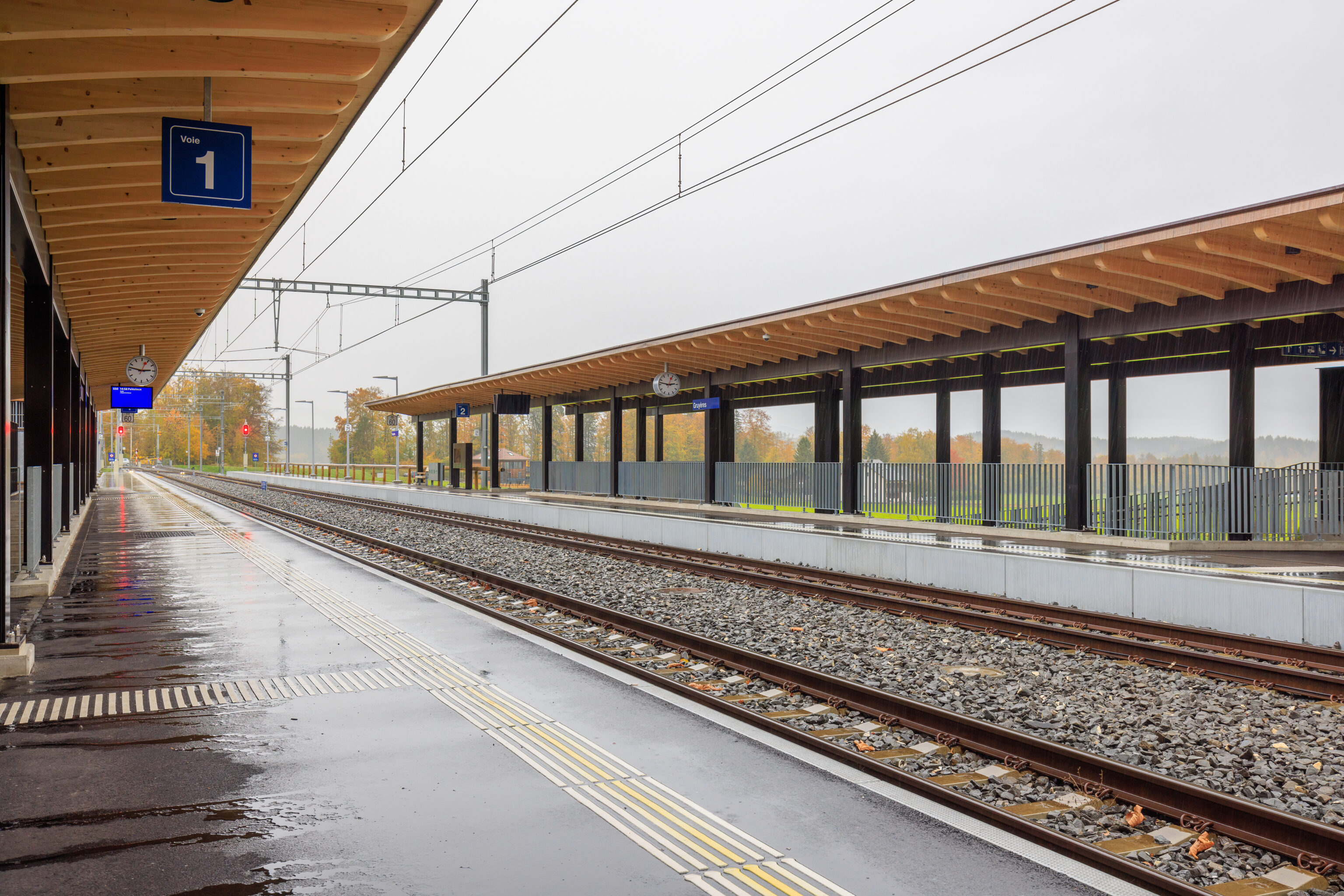
We returned to the train station to head back to Montreux. We considered going to Gstaad, somewhat nearby, as some weather apps were reporting snow. But we didn’t think it was likely at the train station’s elevation, particularly as it was similar to the elevation here.
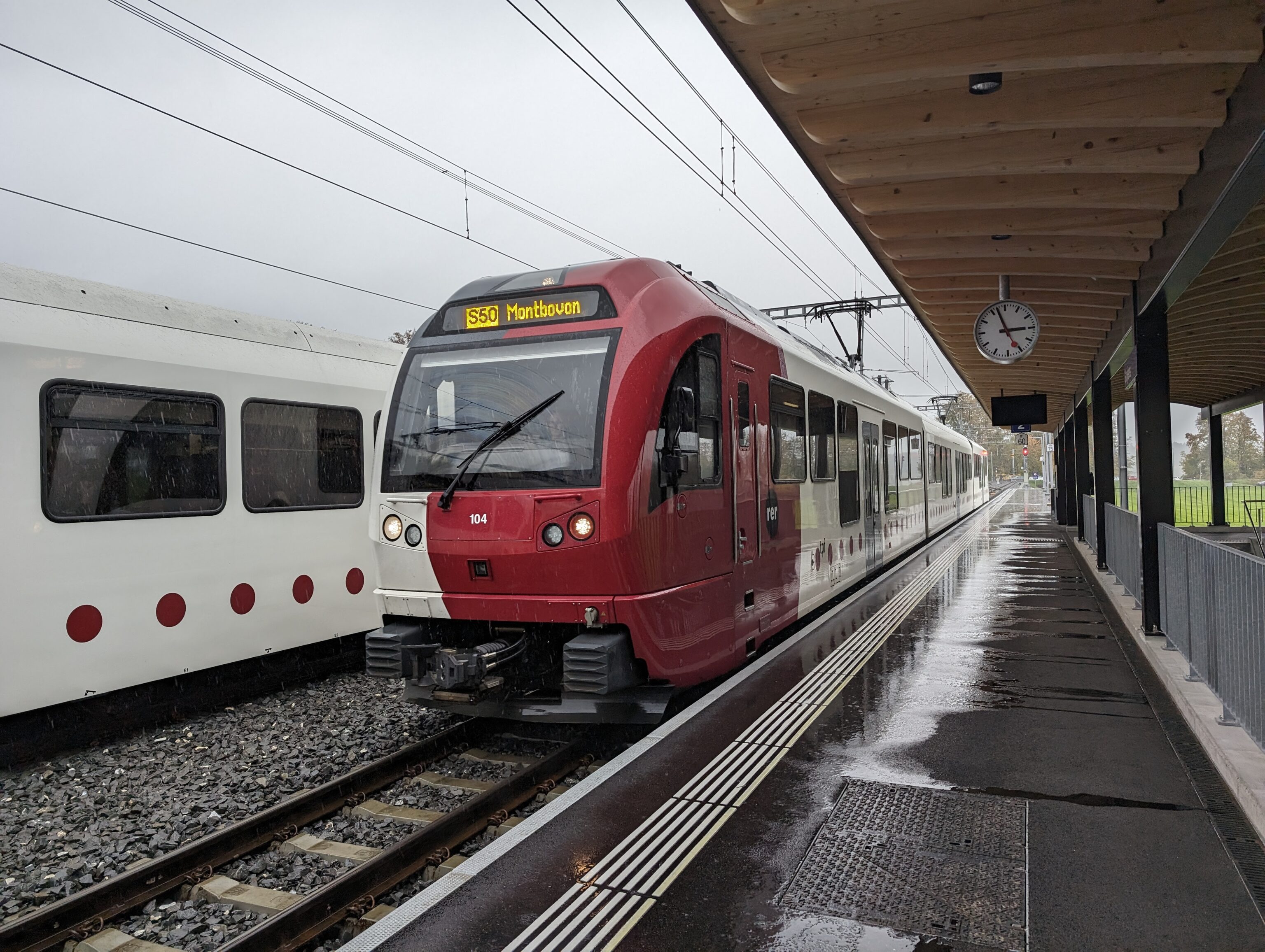
Trains for both directions arrived at more or less the same time. Much of these less populated regions are mostly single track other than at some double tracked stations like this one and other points on the way.
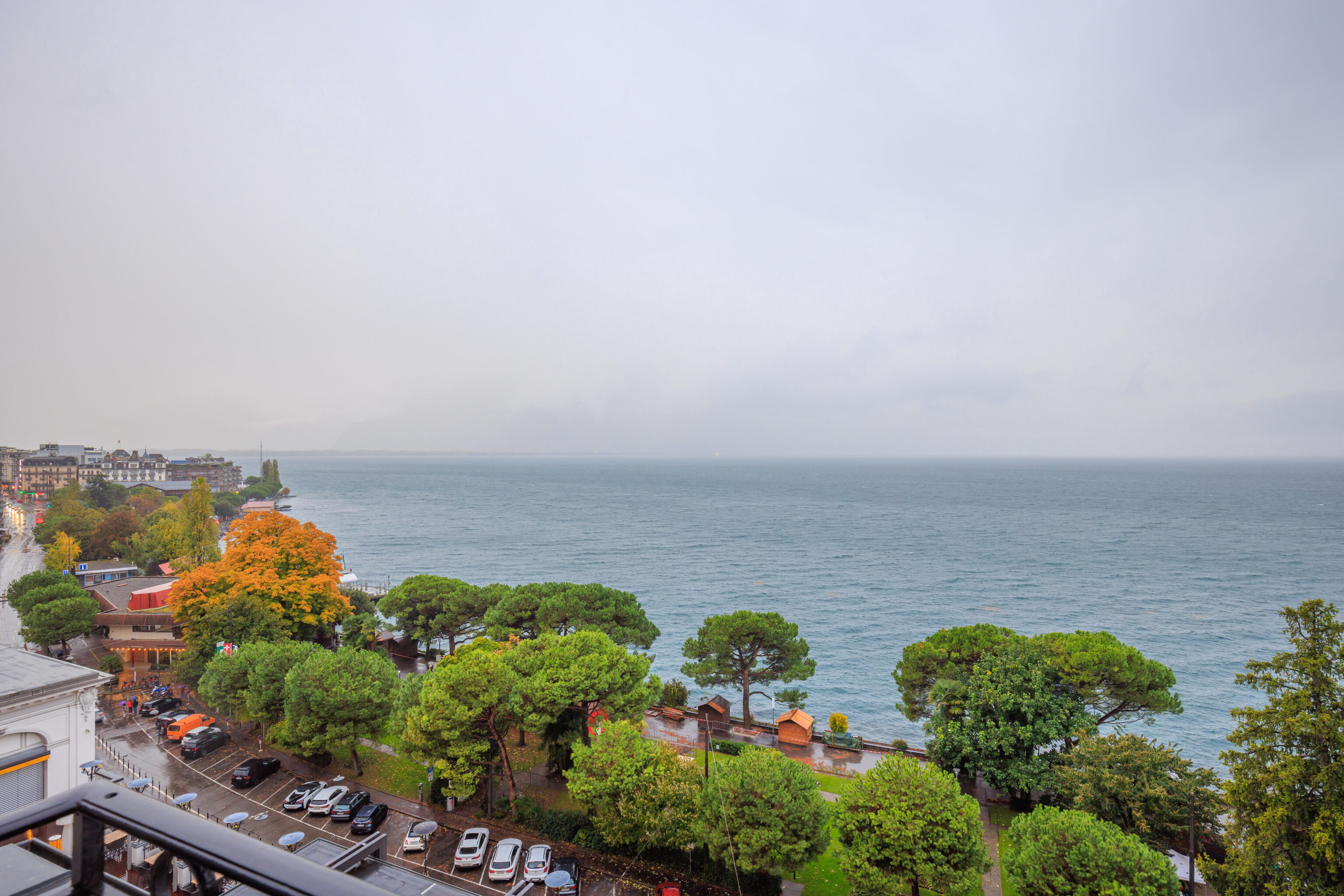
It was cold and wet when we returned to Montreux. We could just see a faint outline of the mountains on the other side of the lake. We decided to end our evening here and skip dinner as we weren’t very hungry and the weather outside wasn’t so great.


